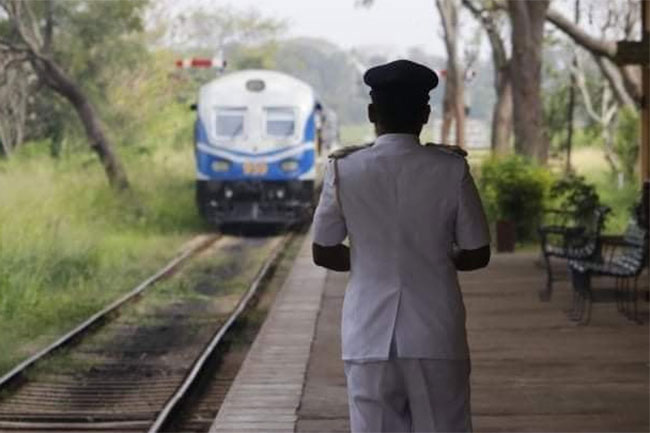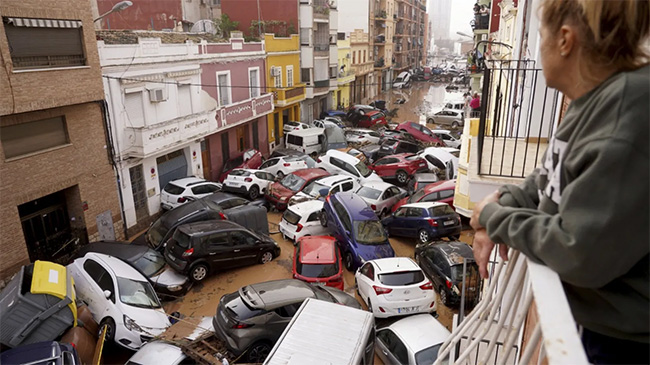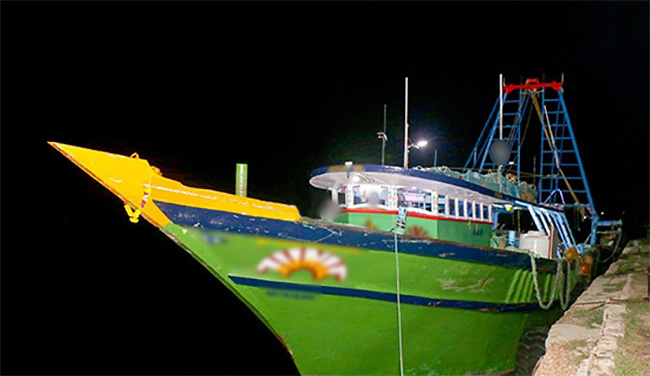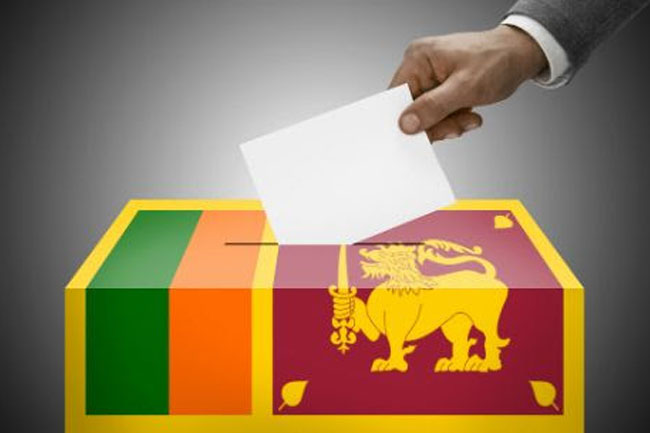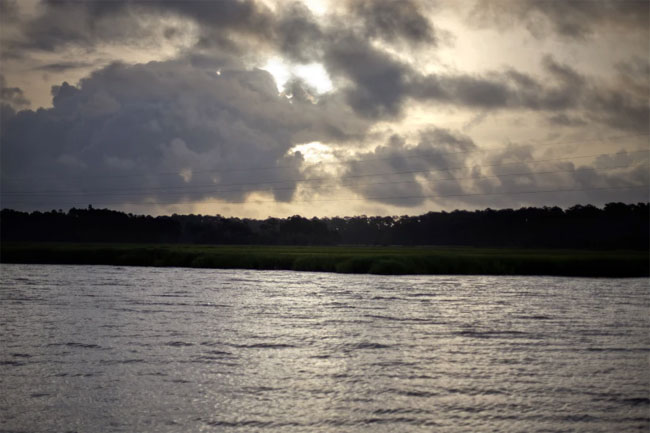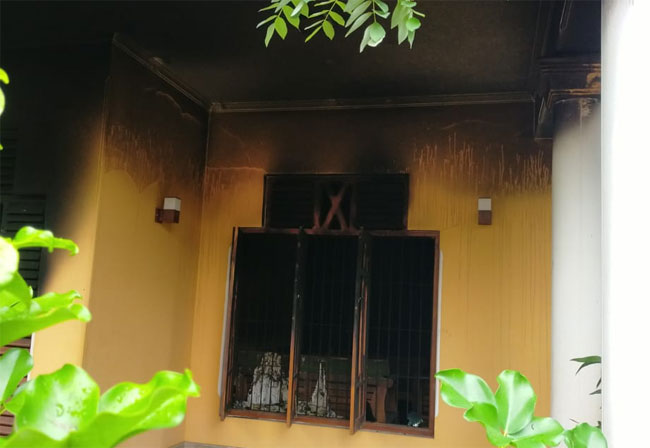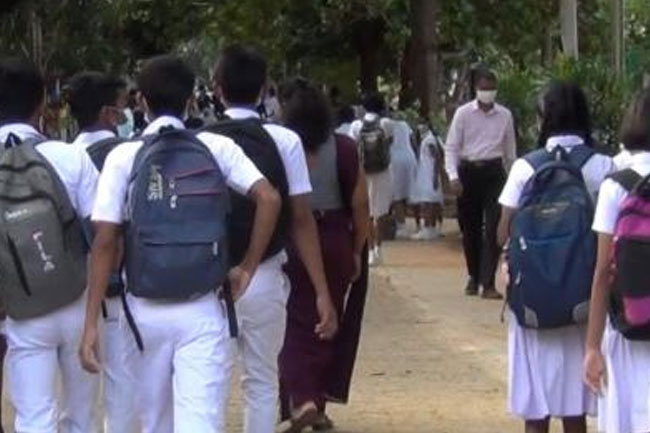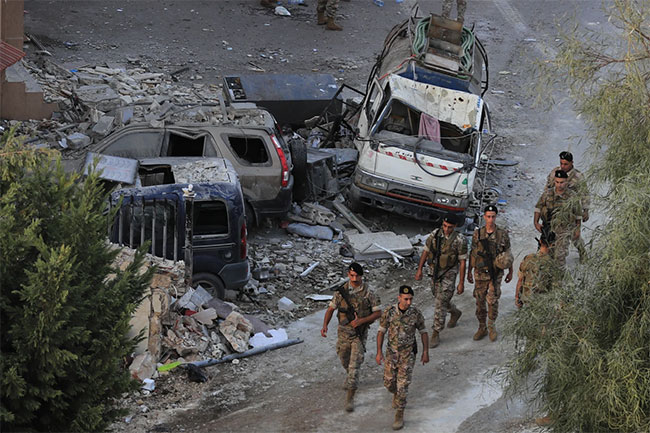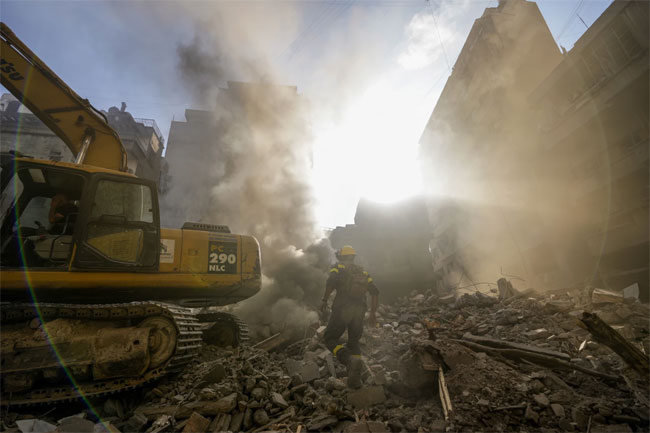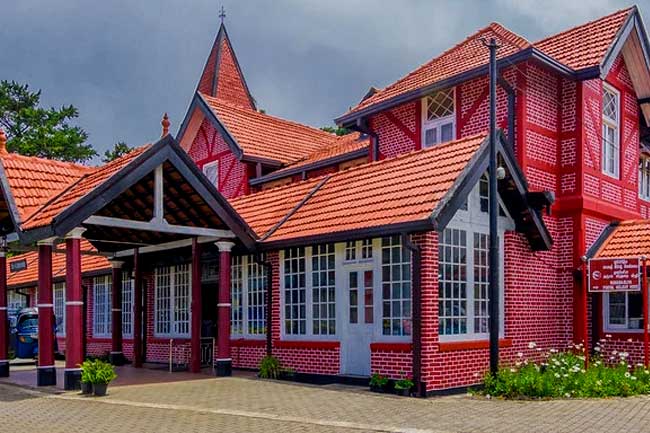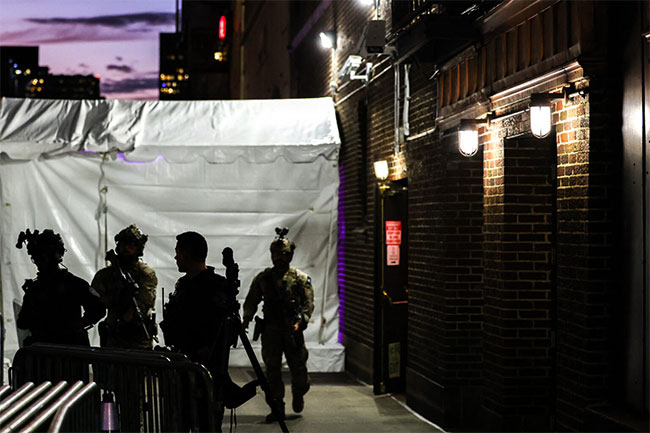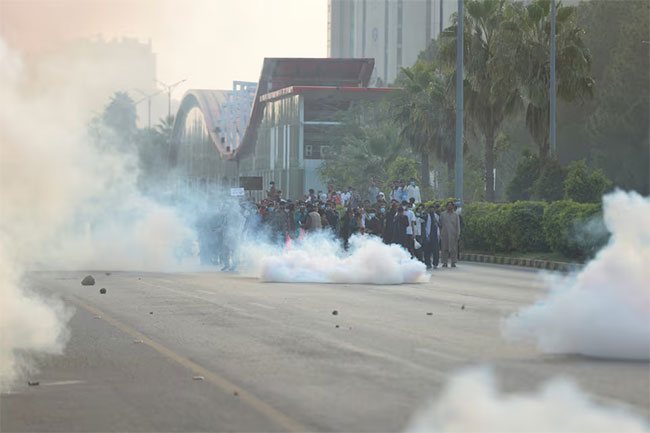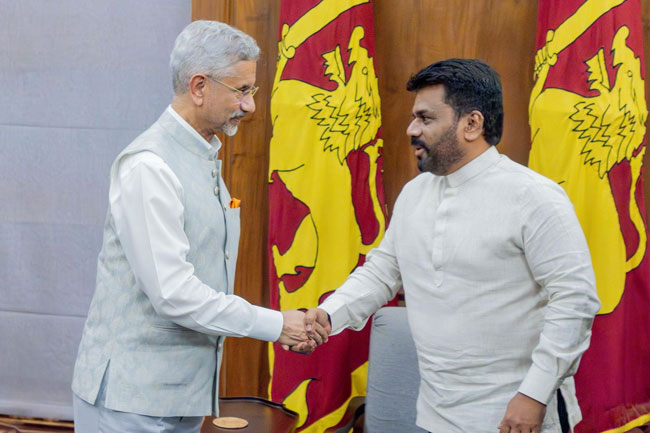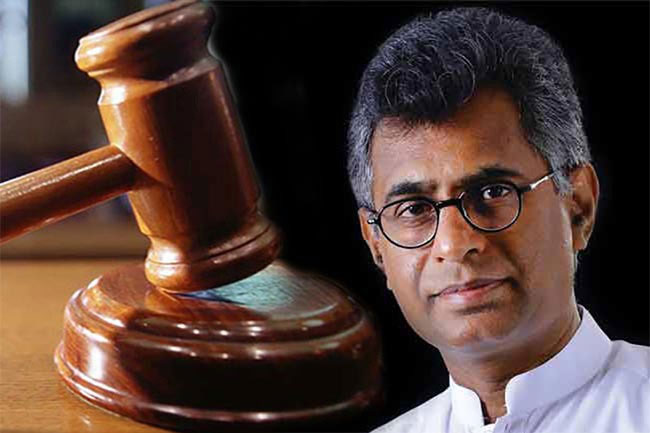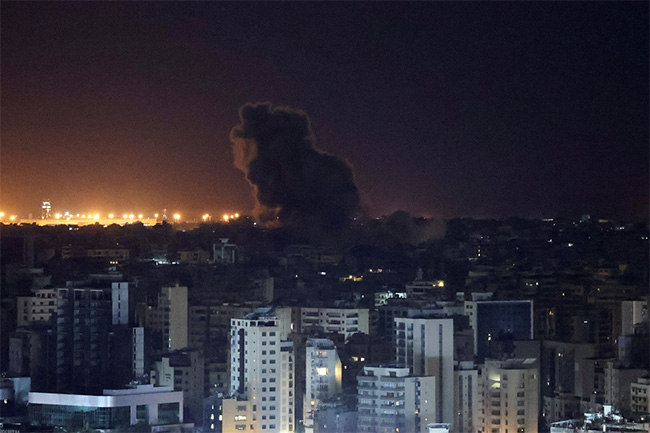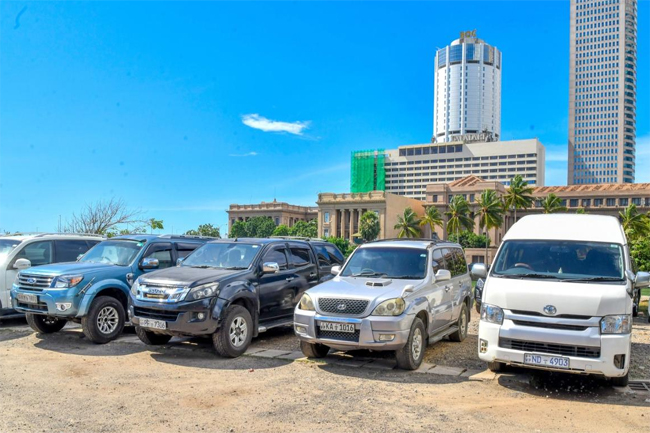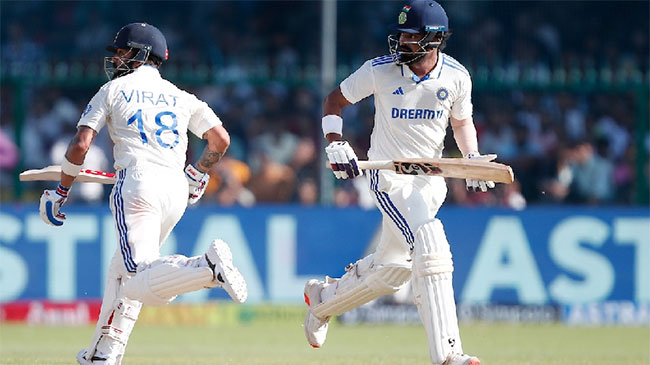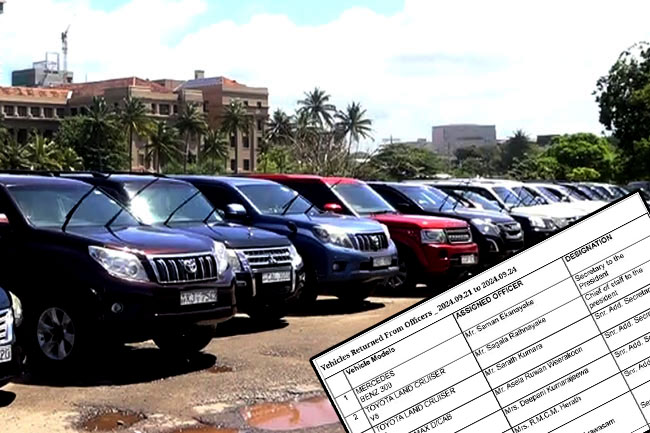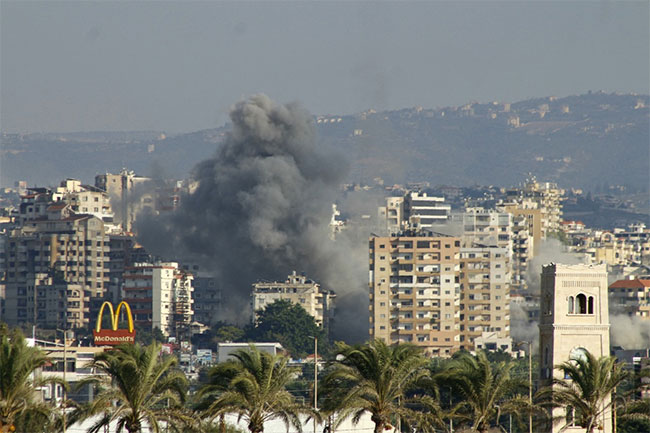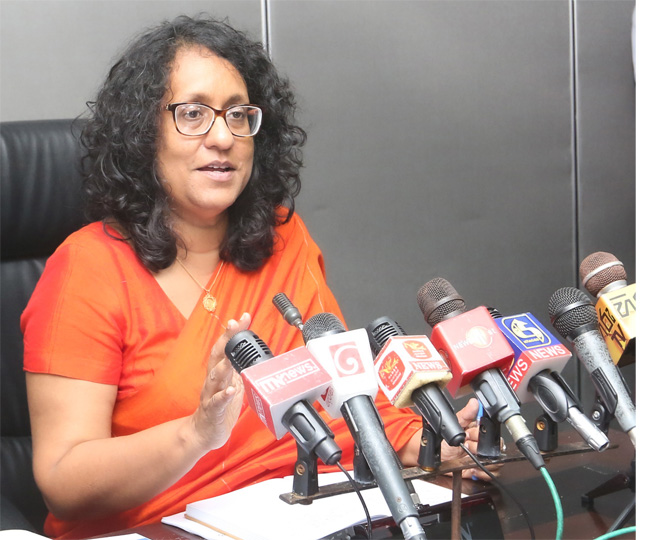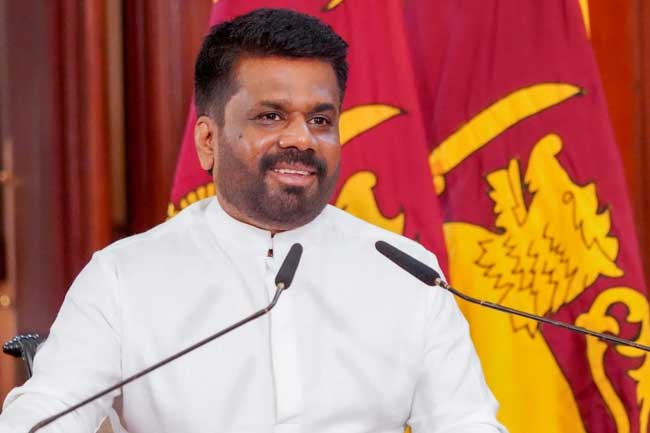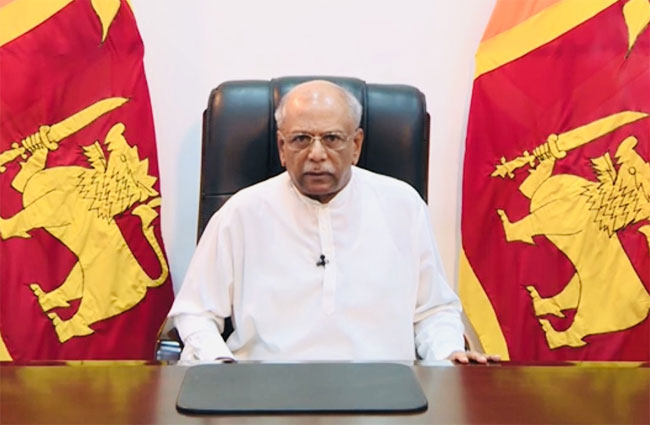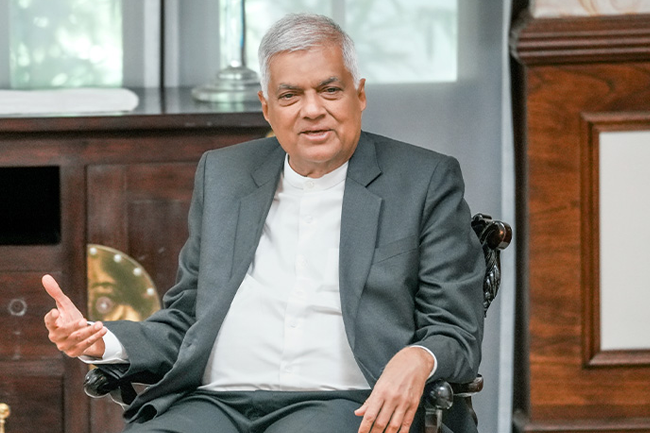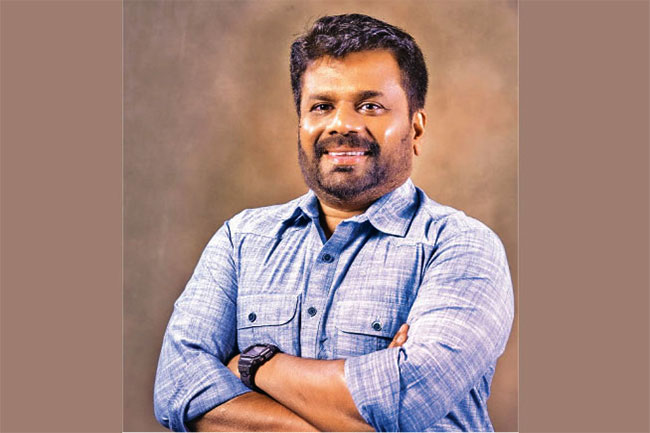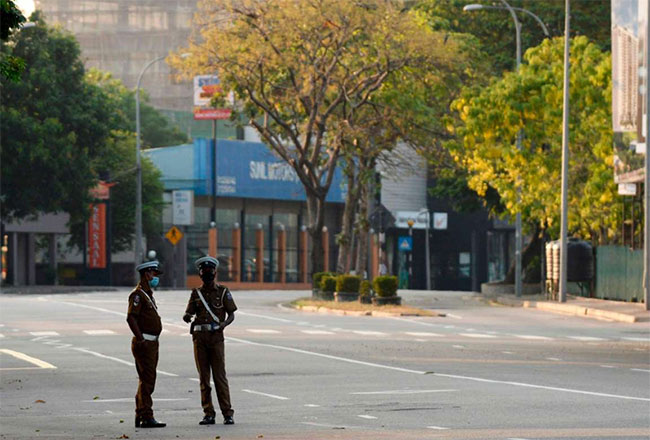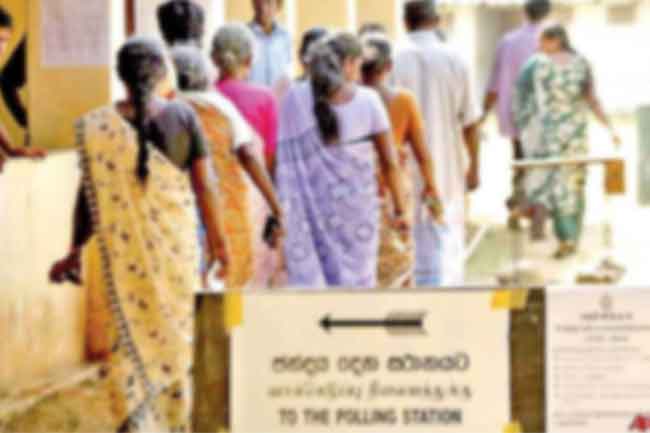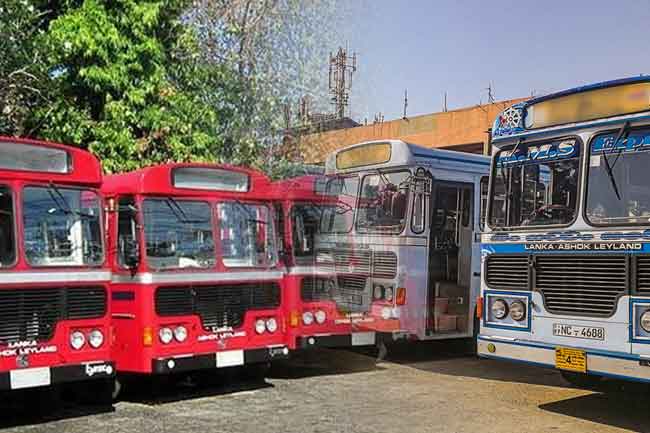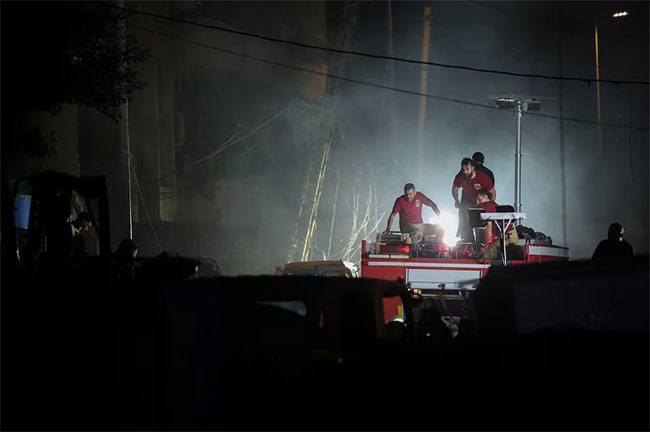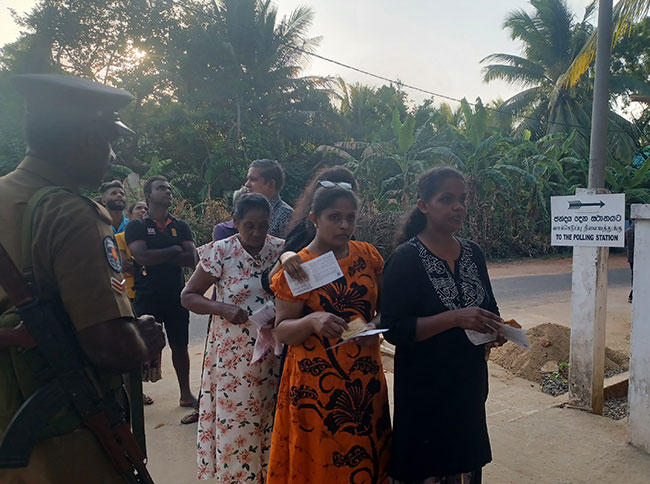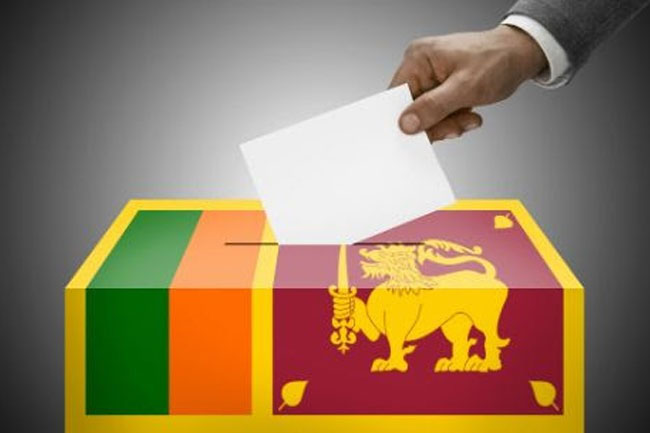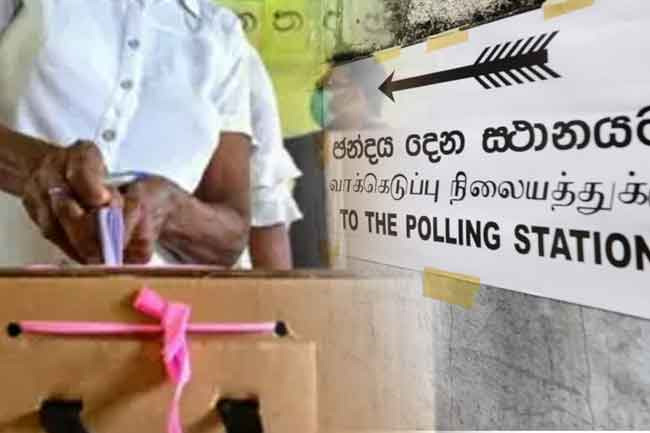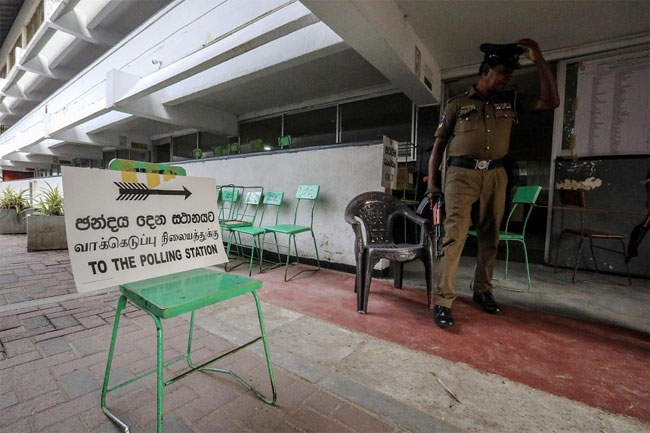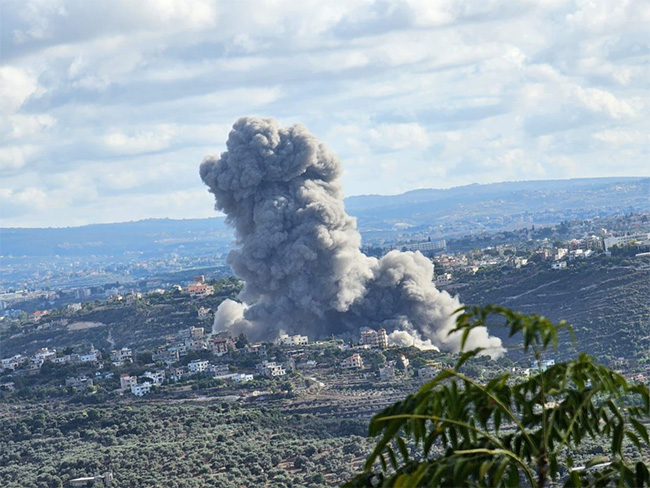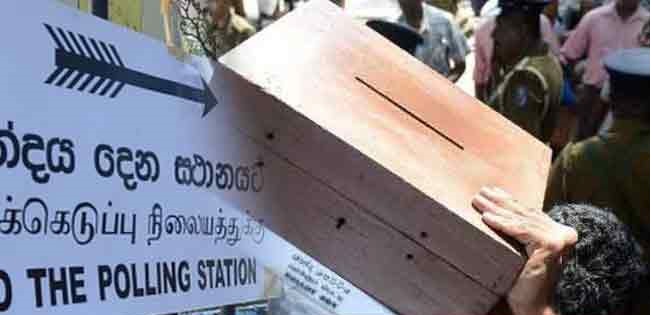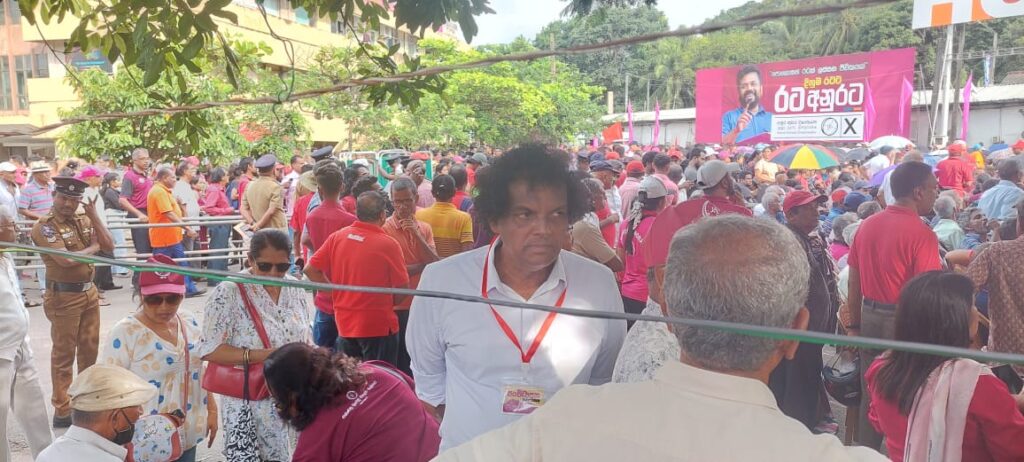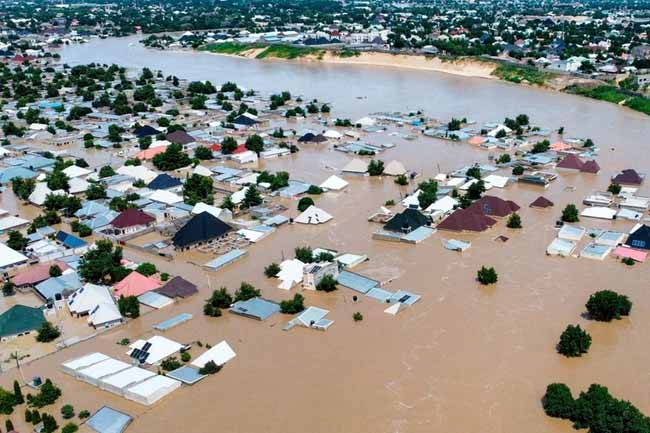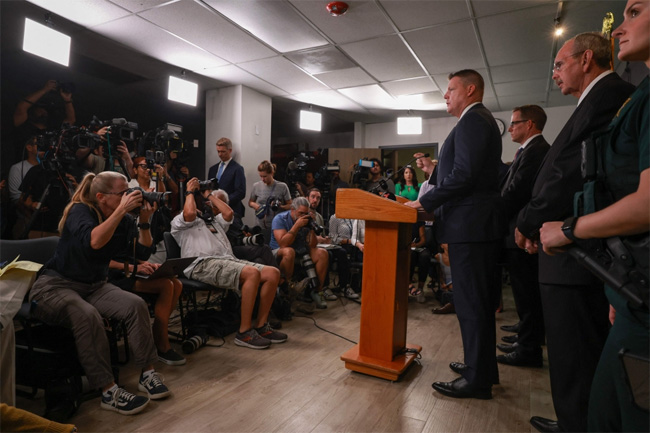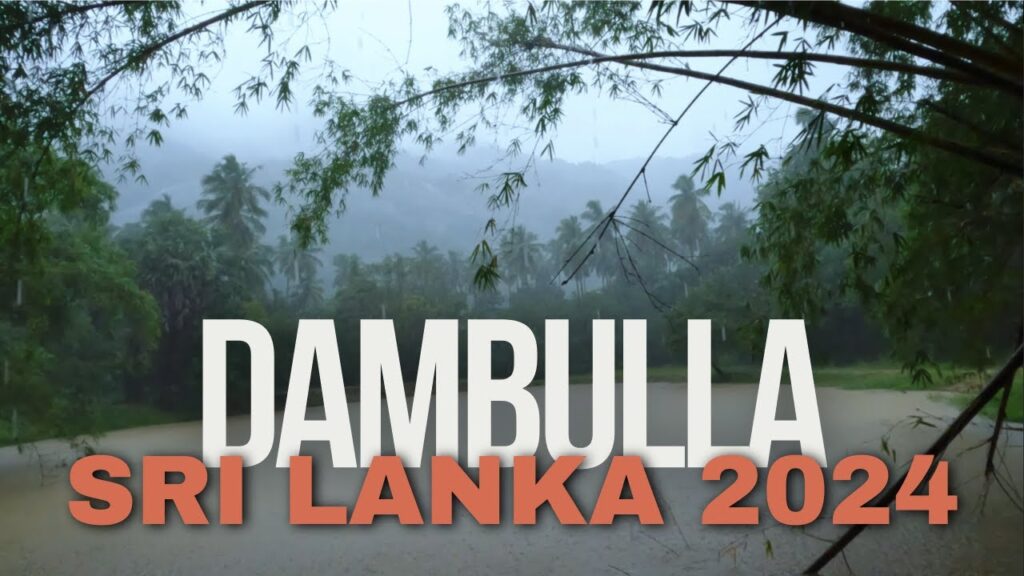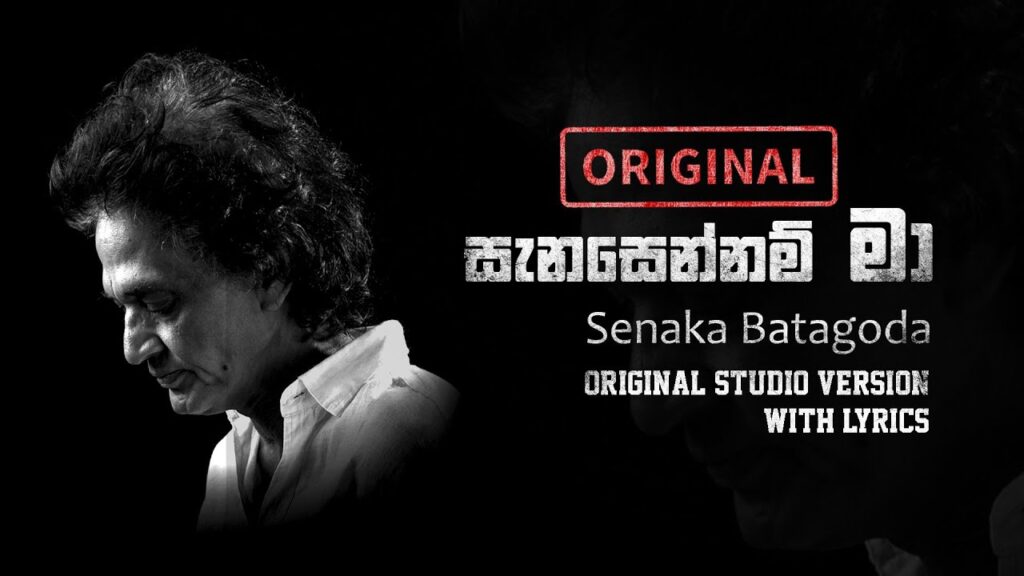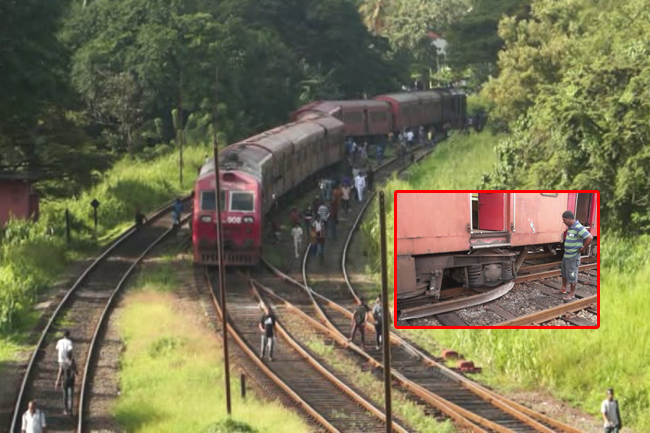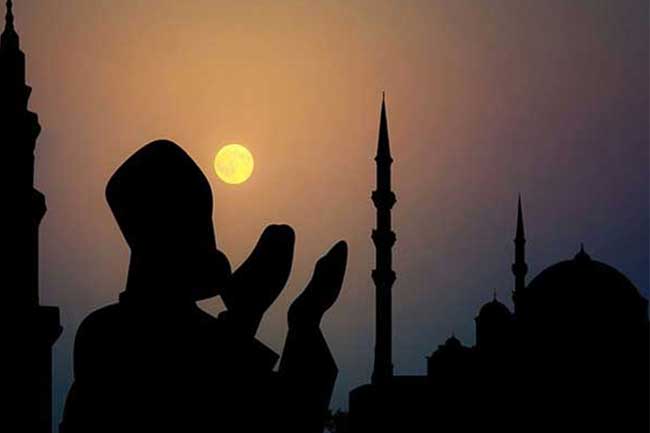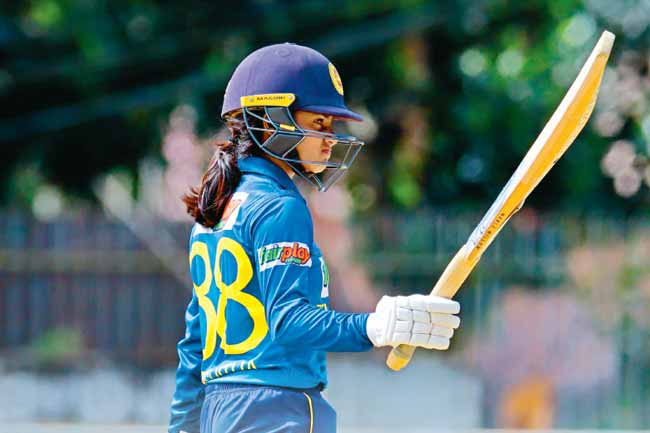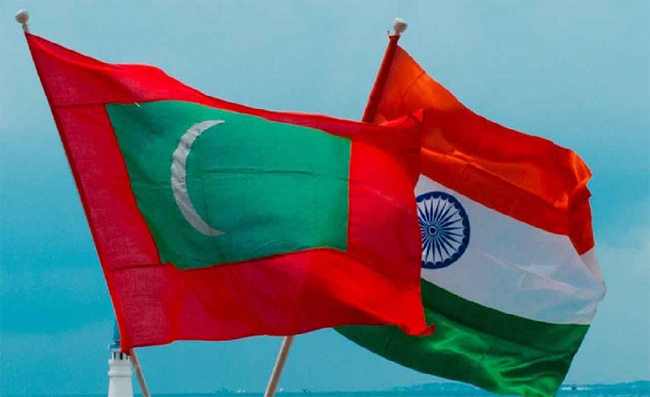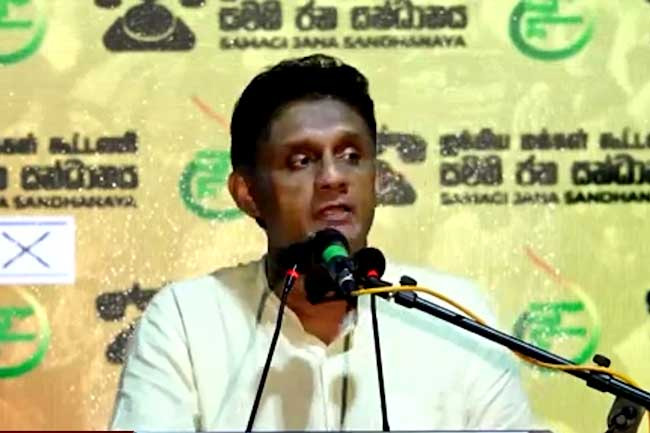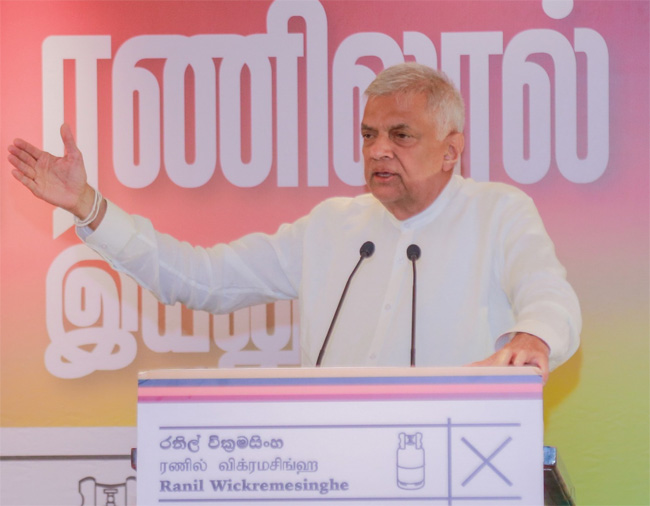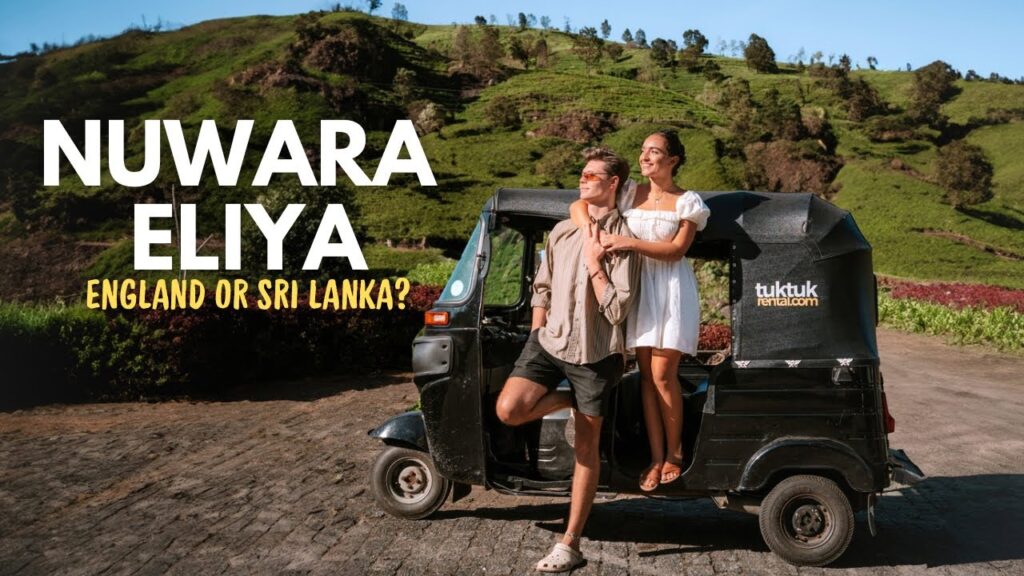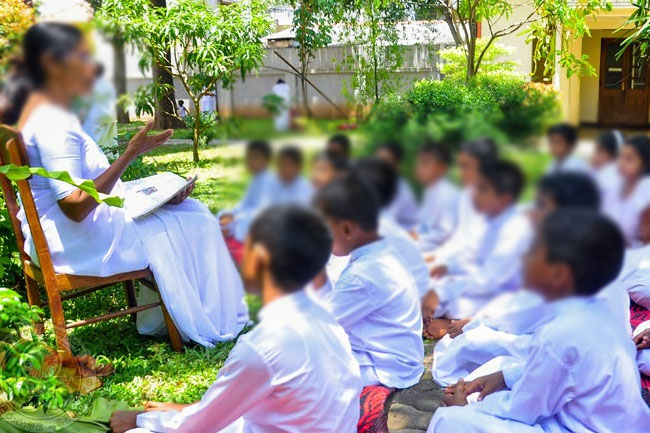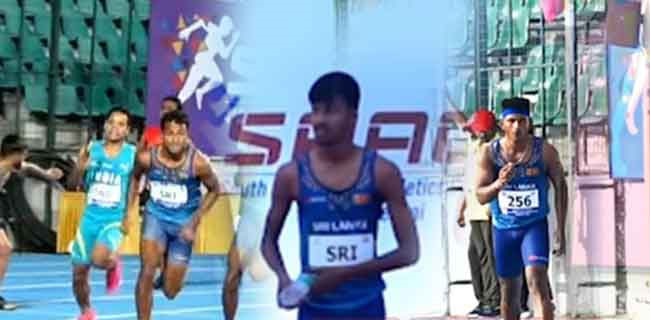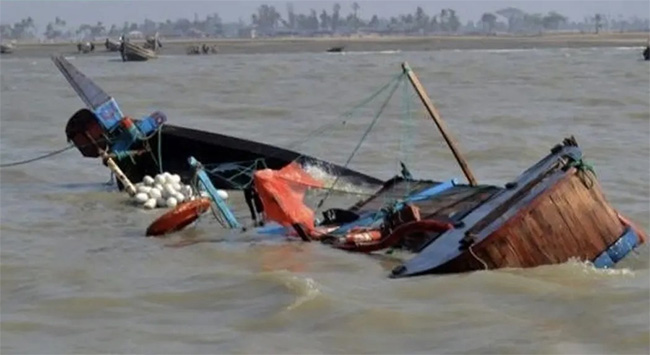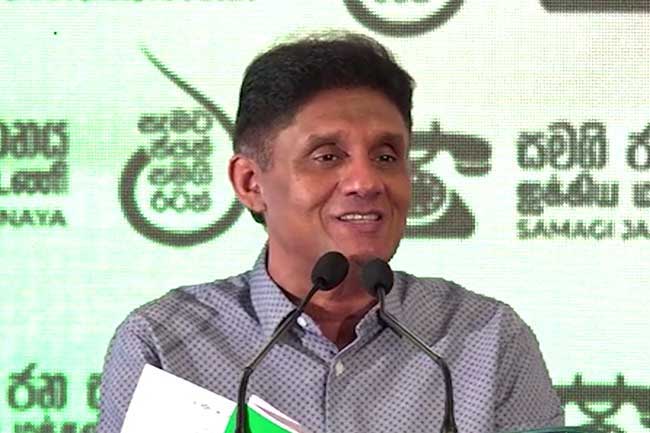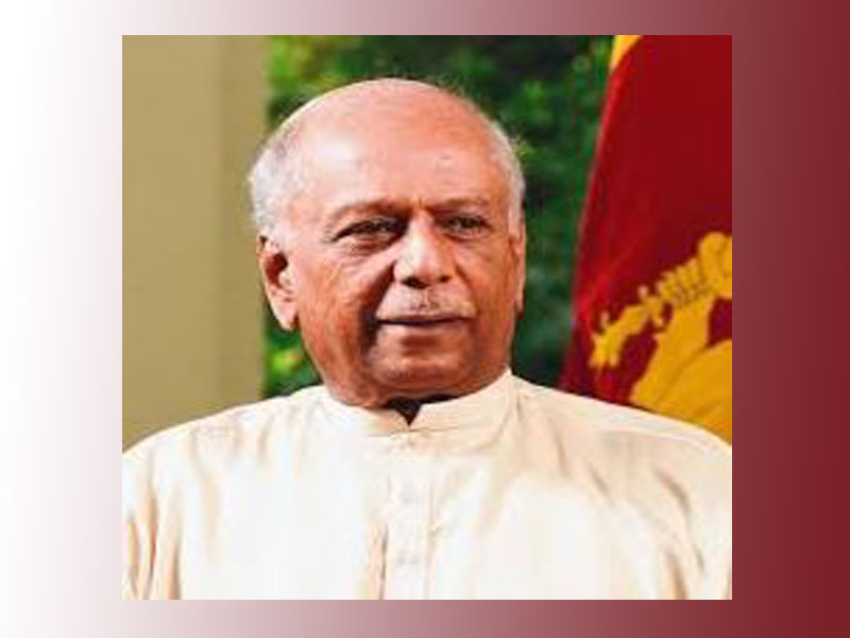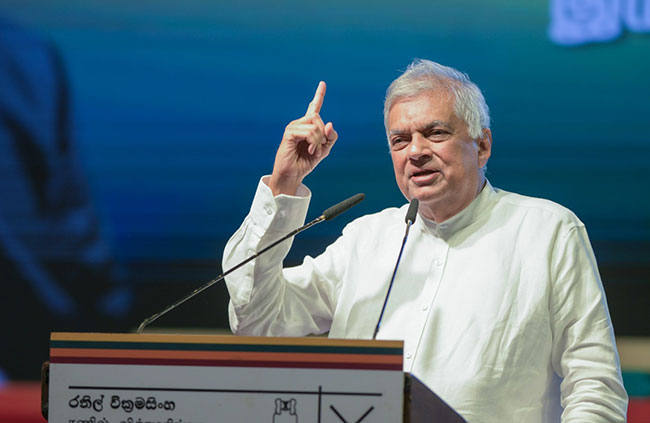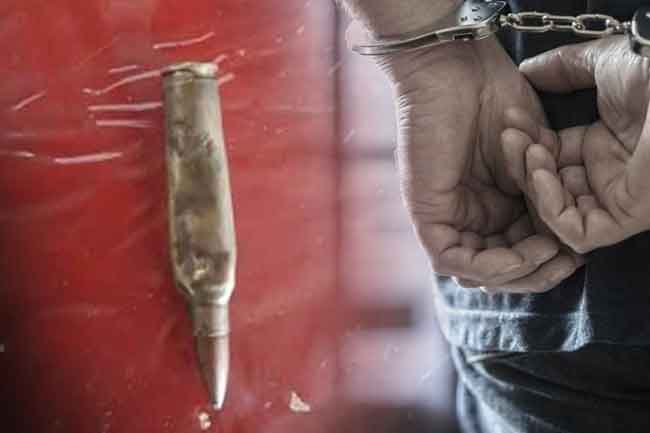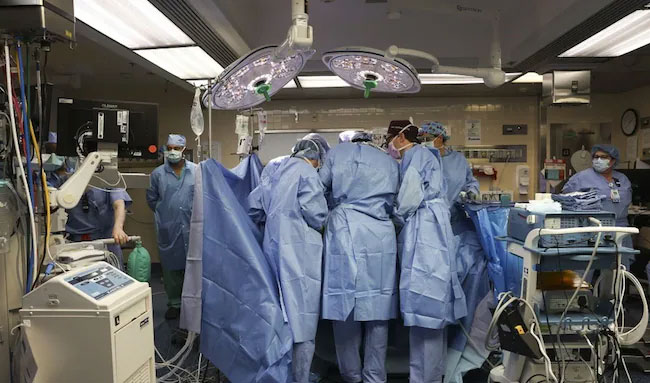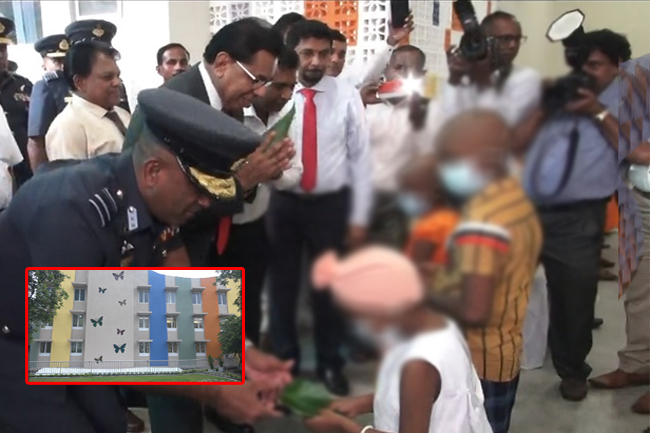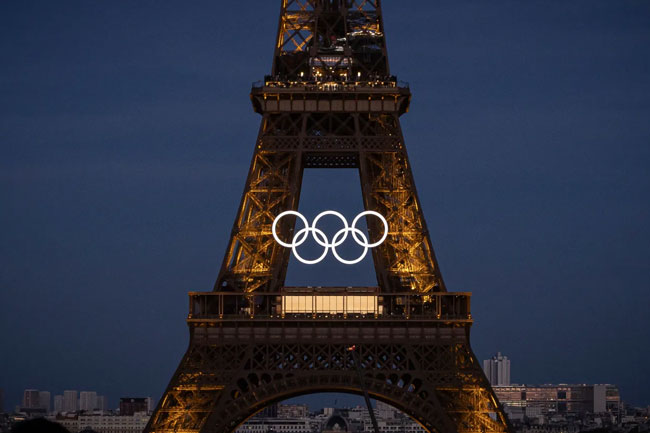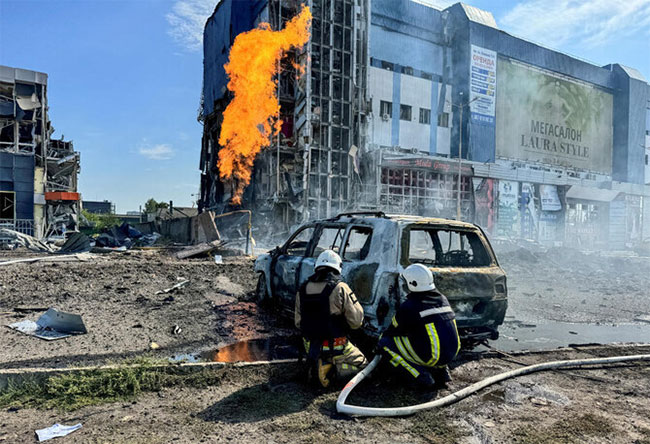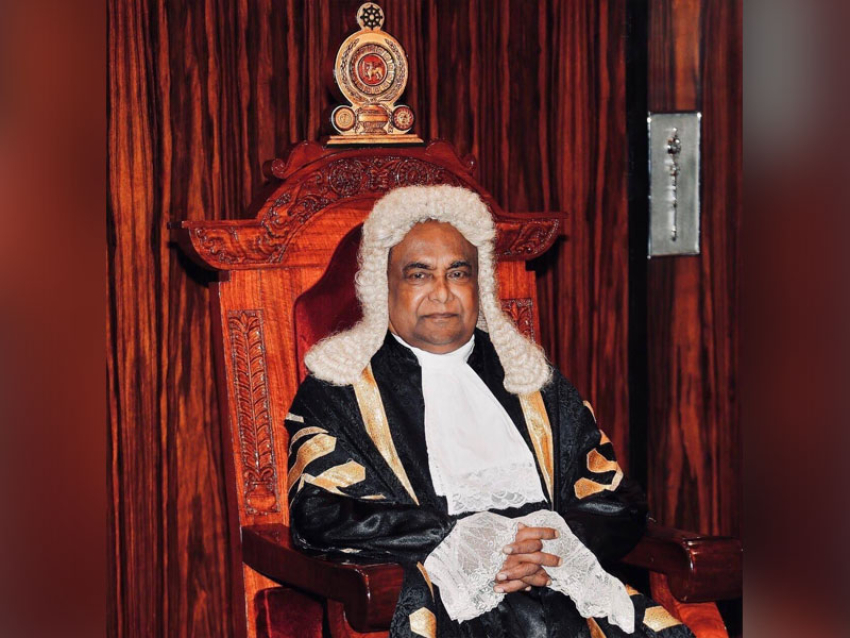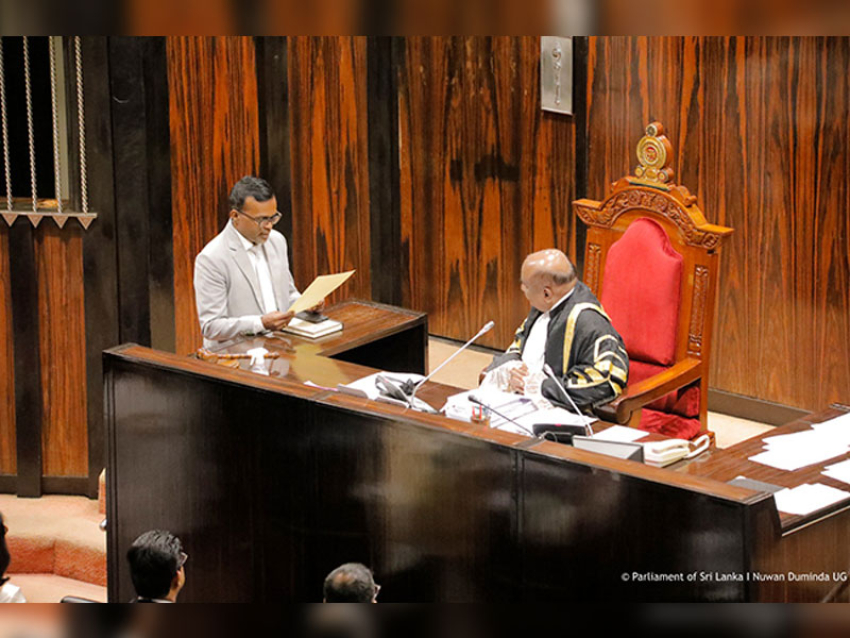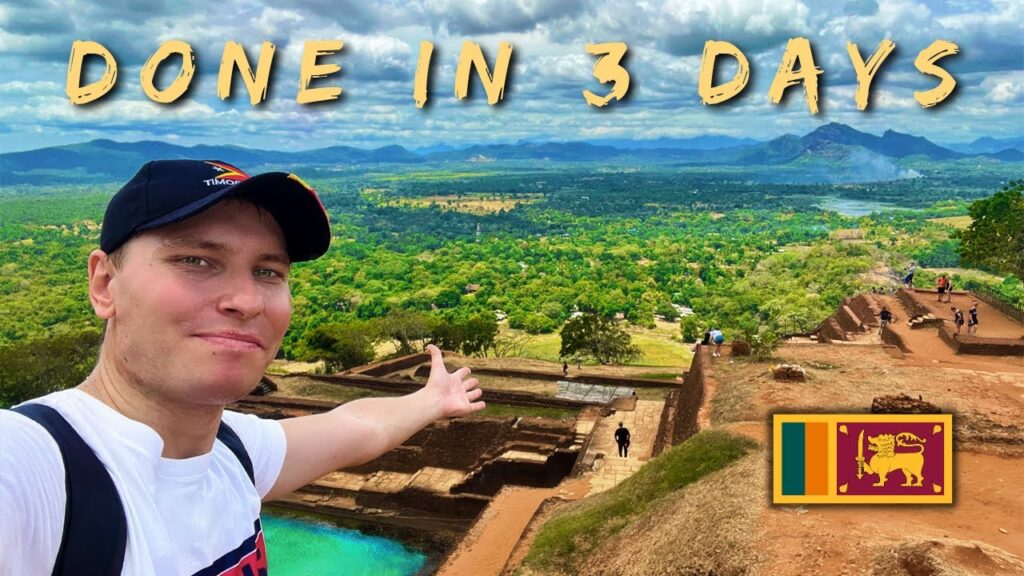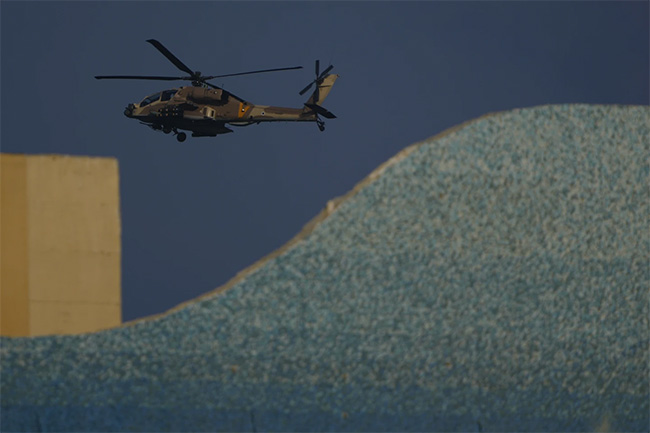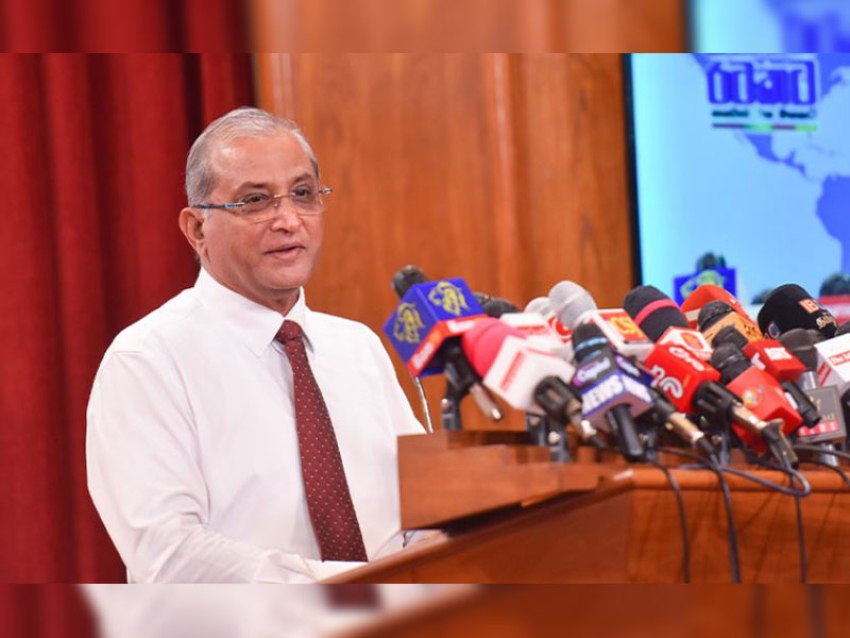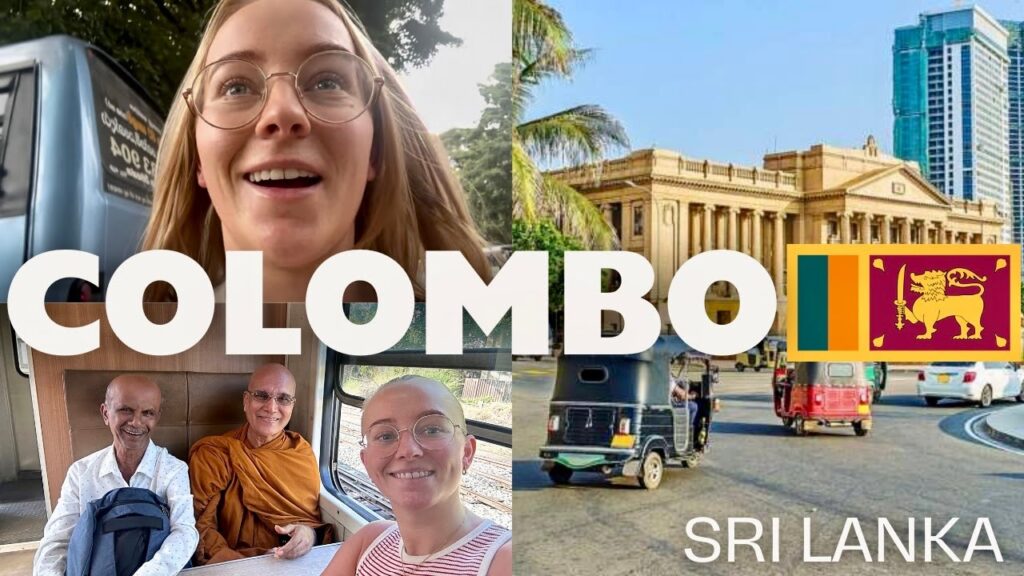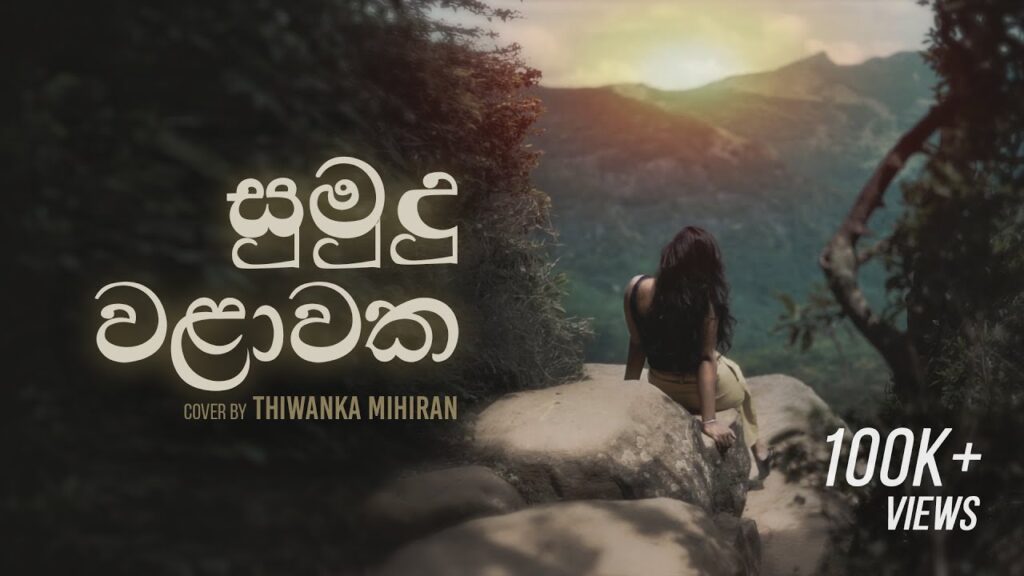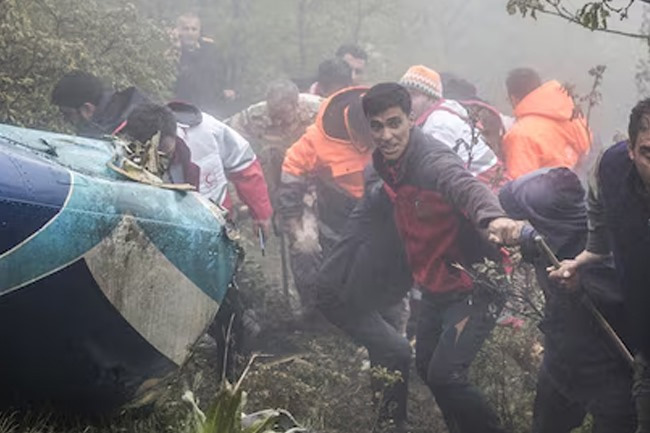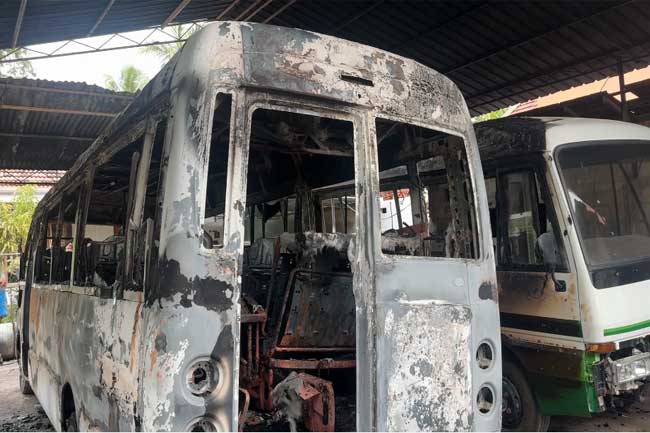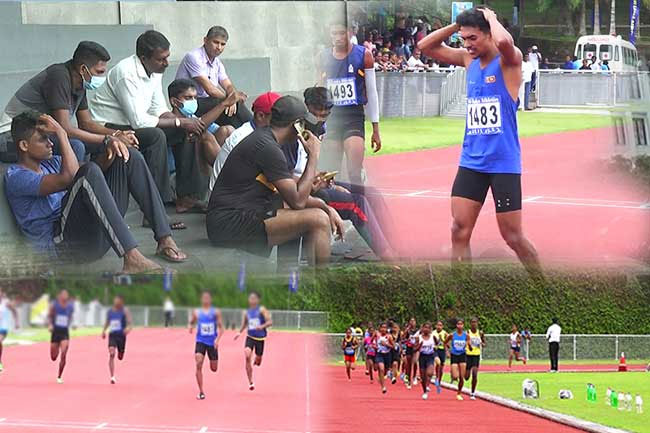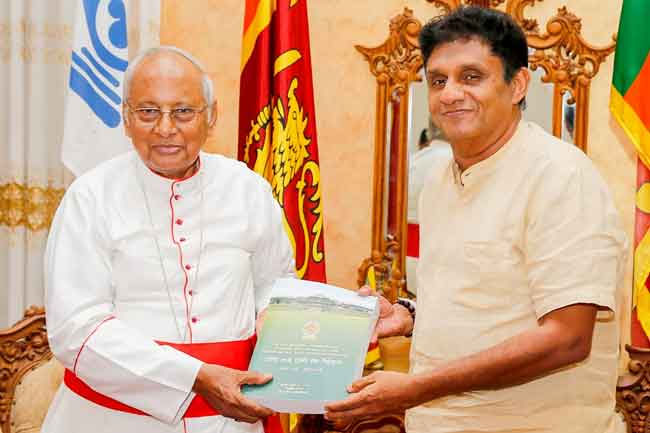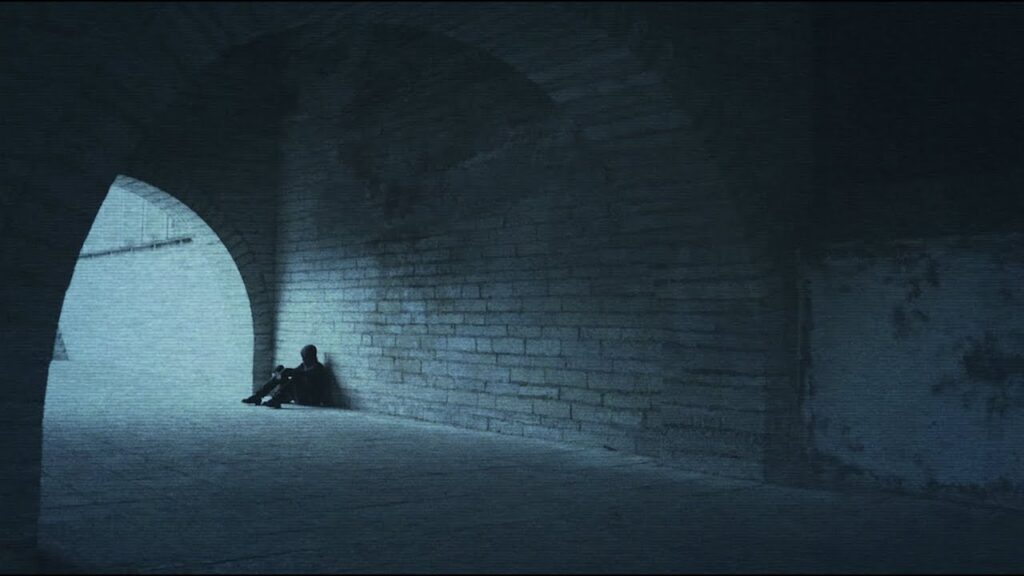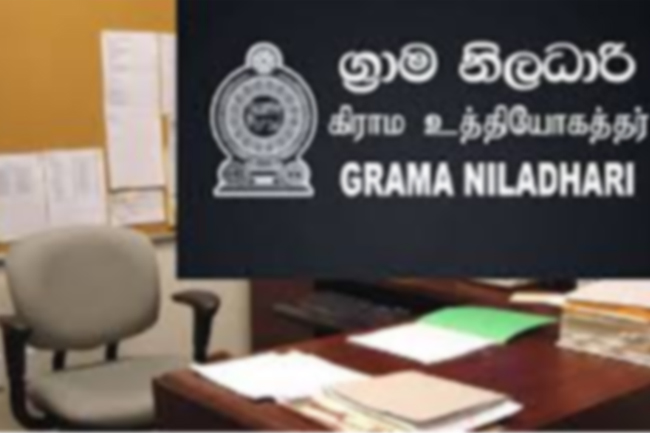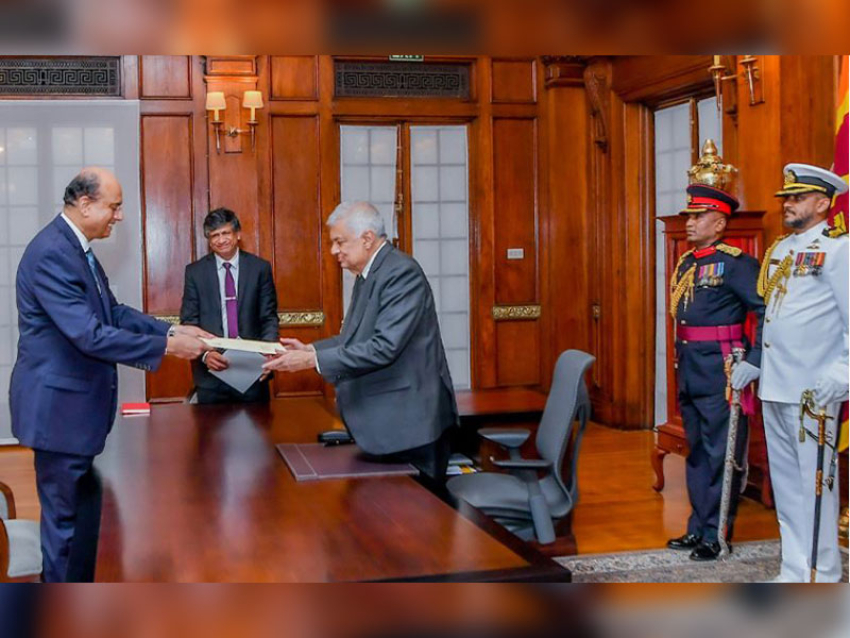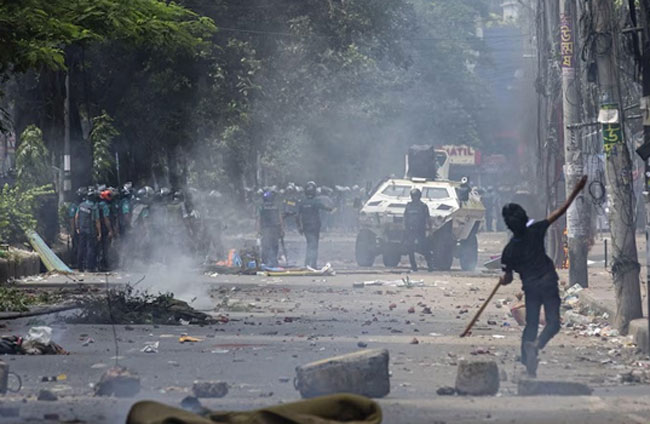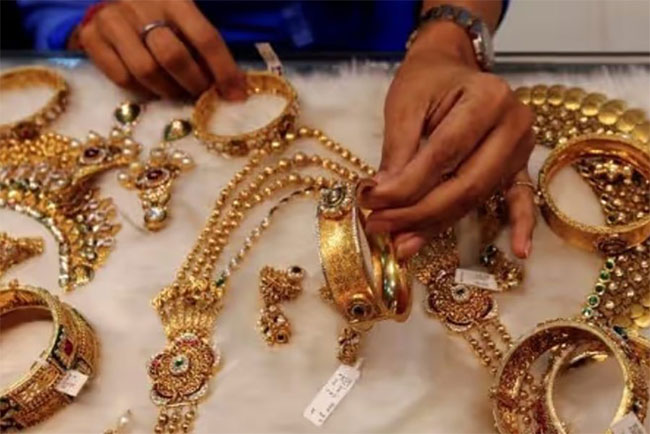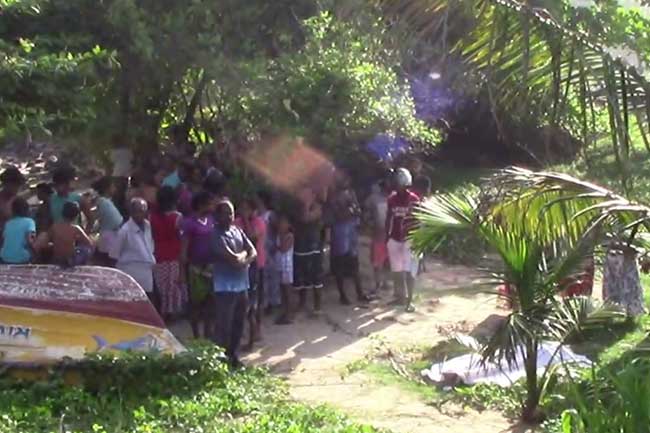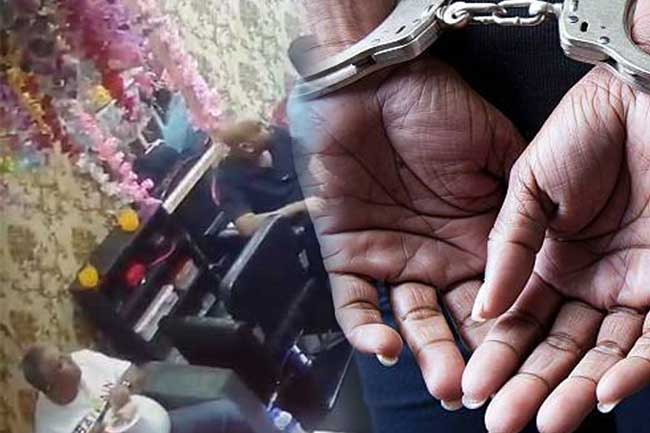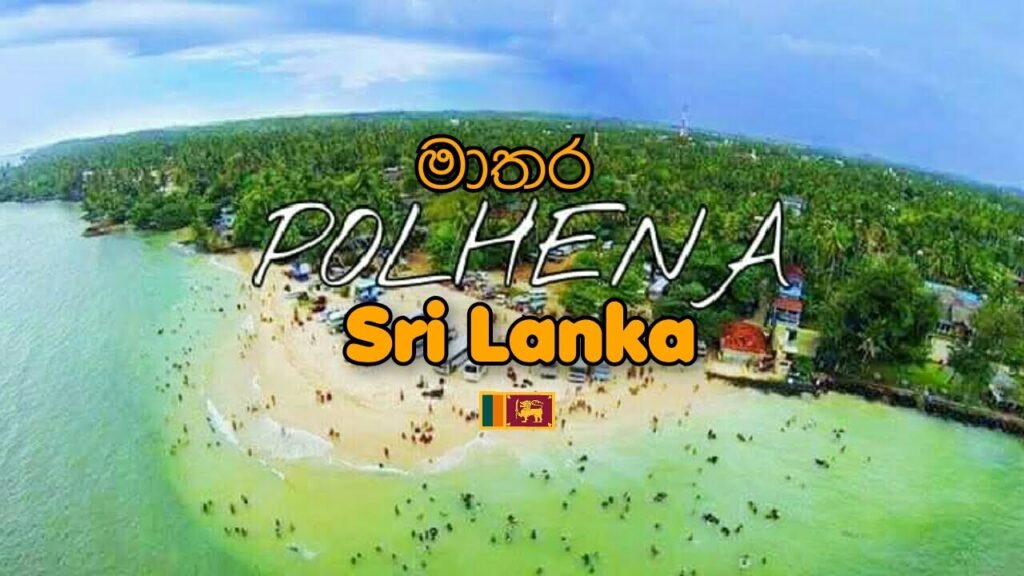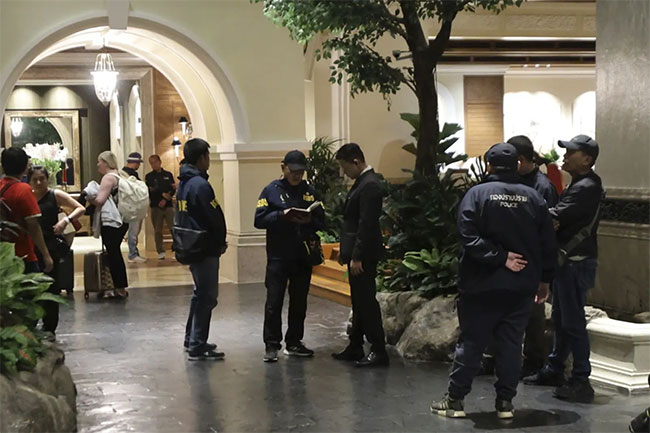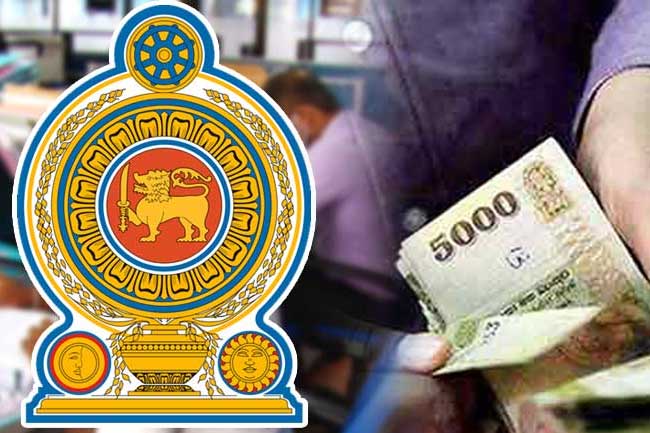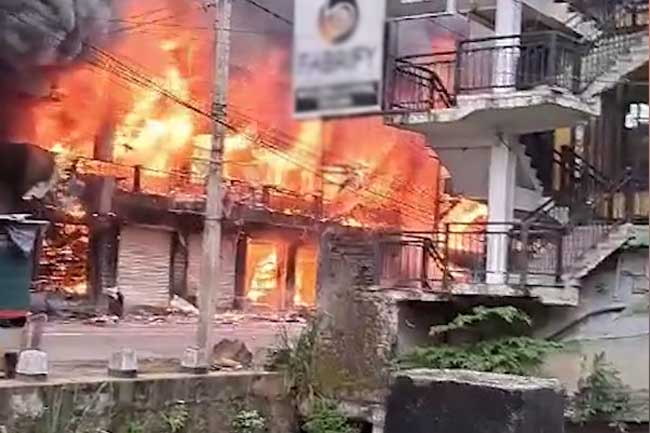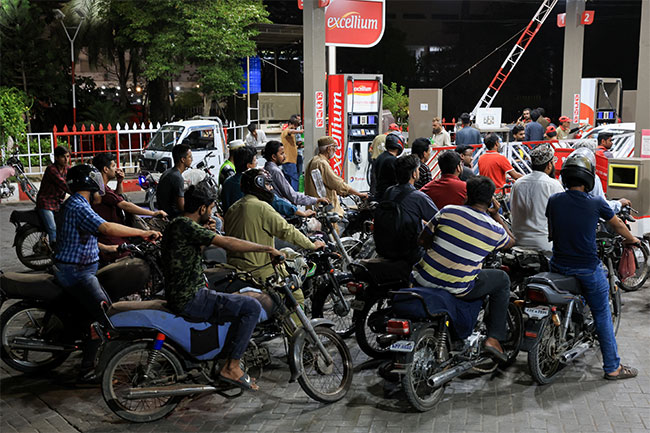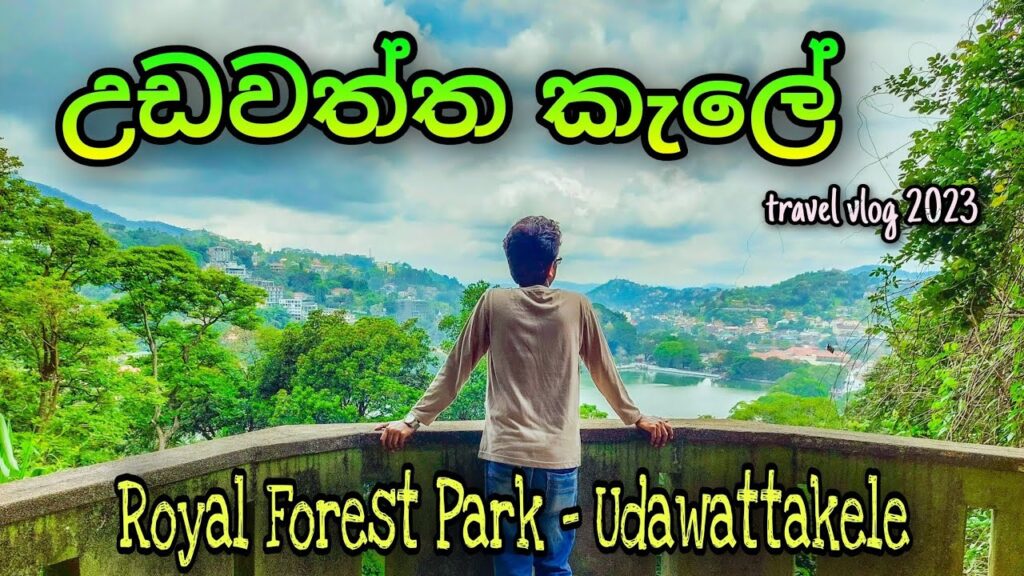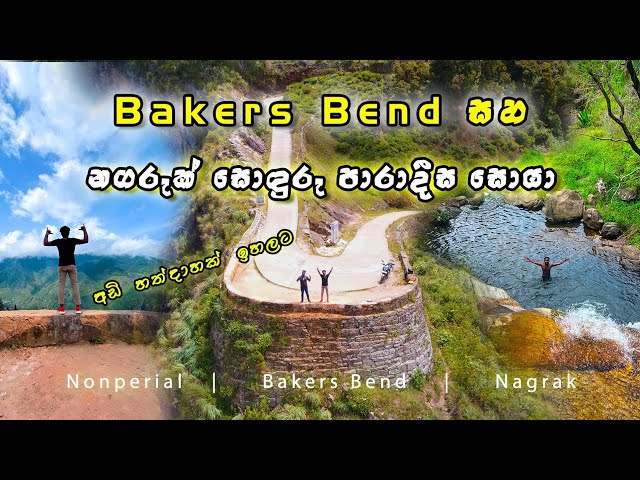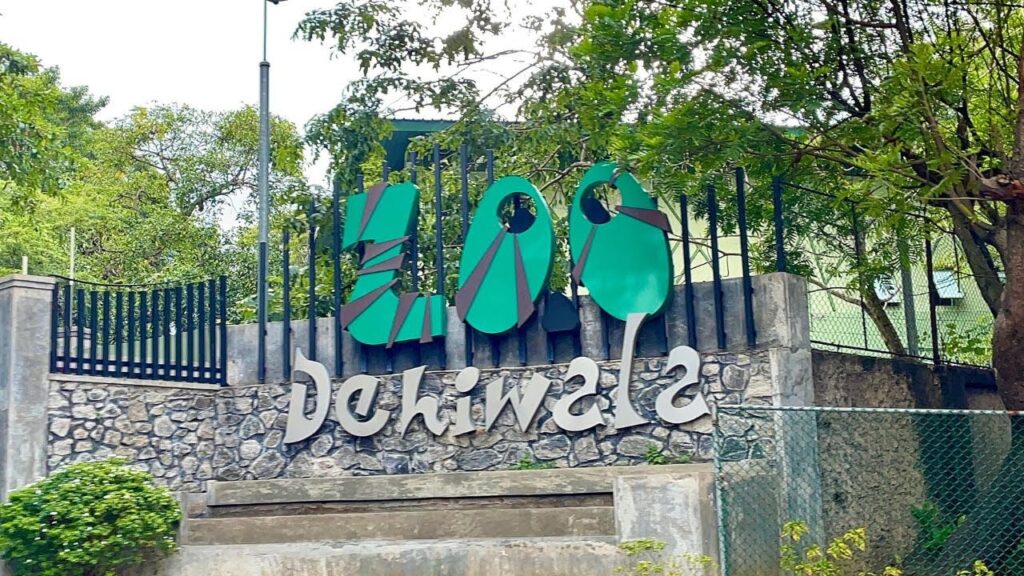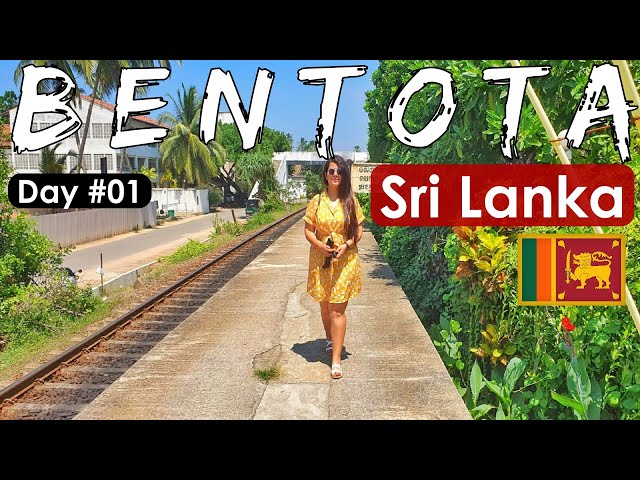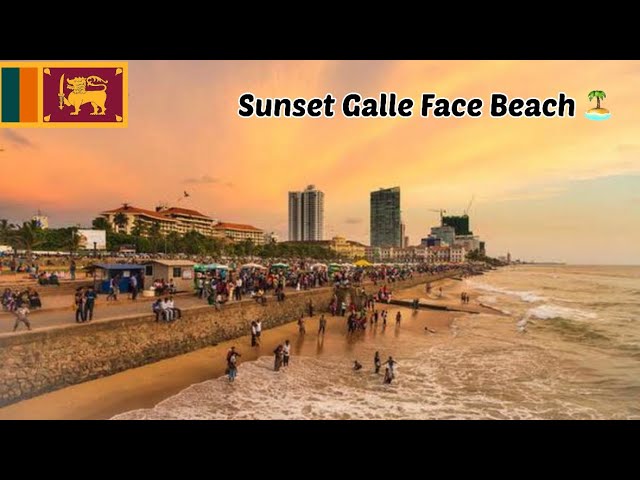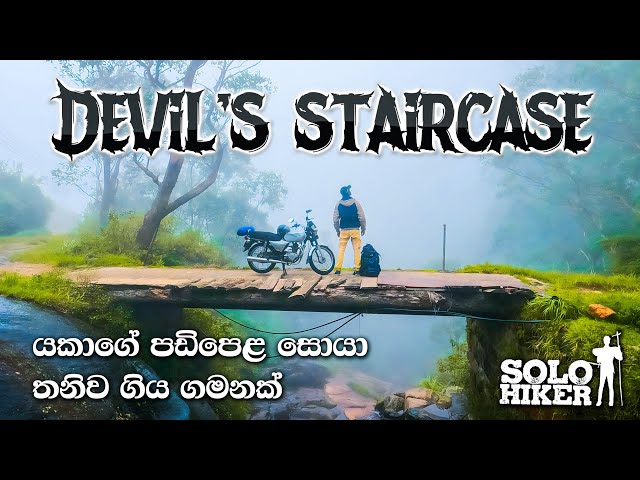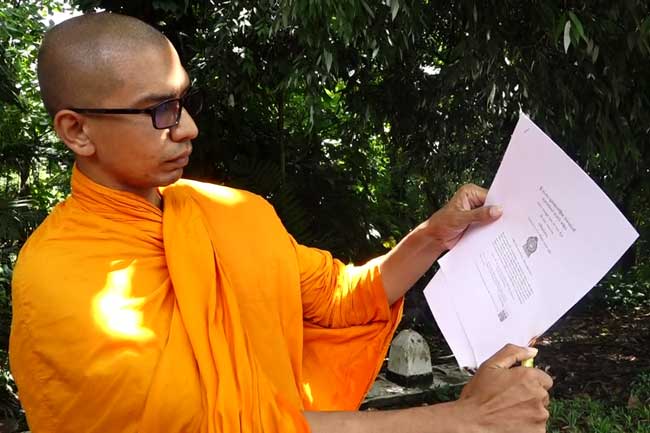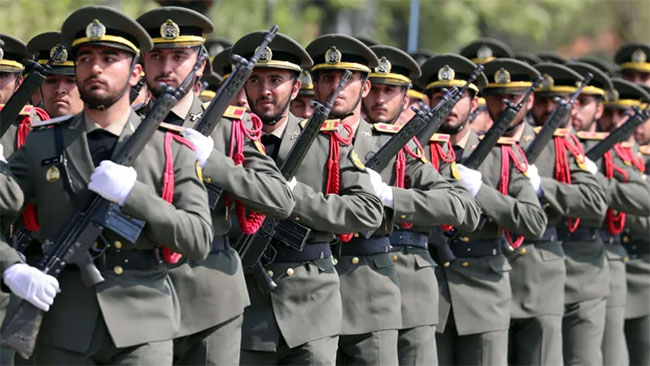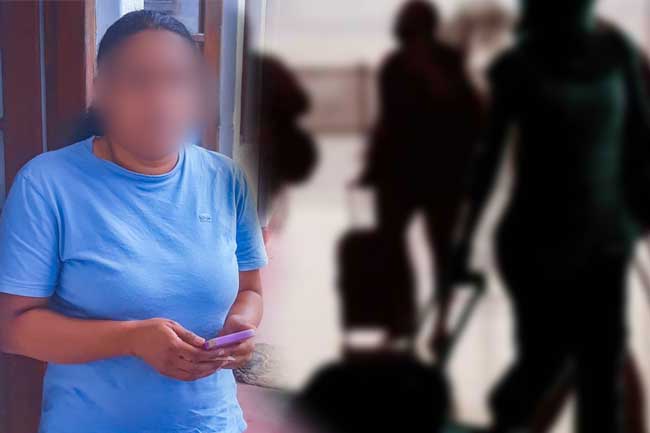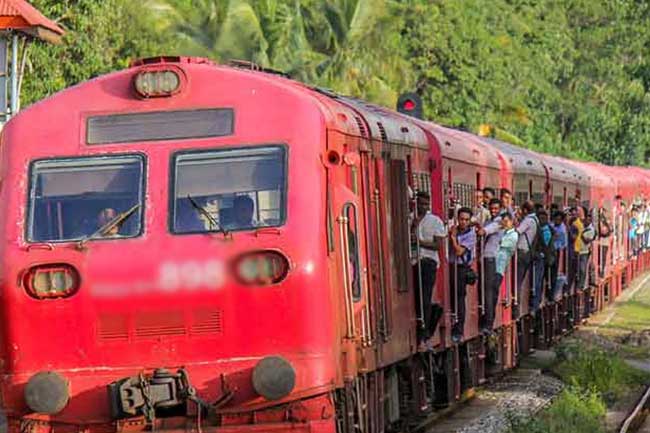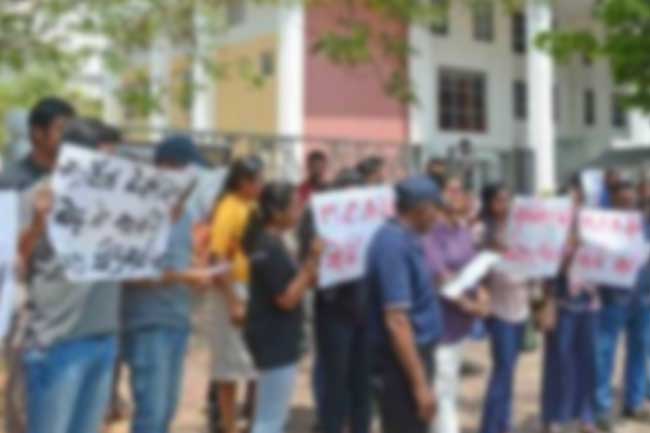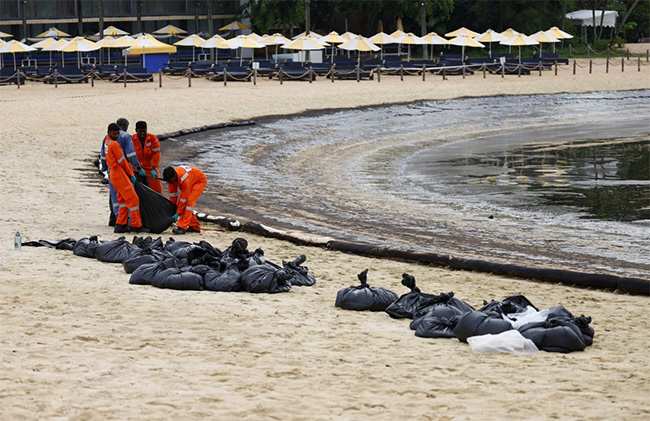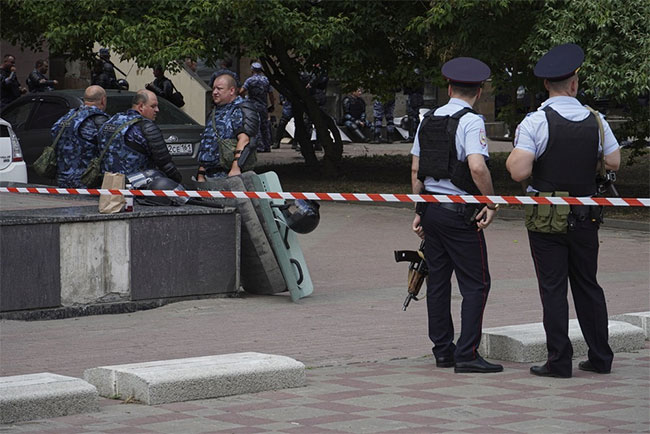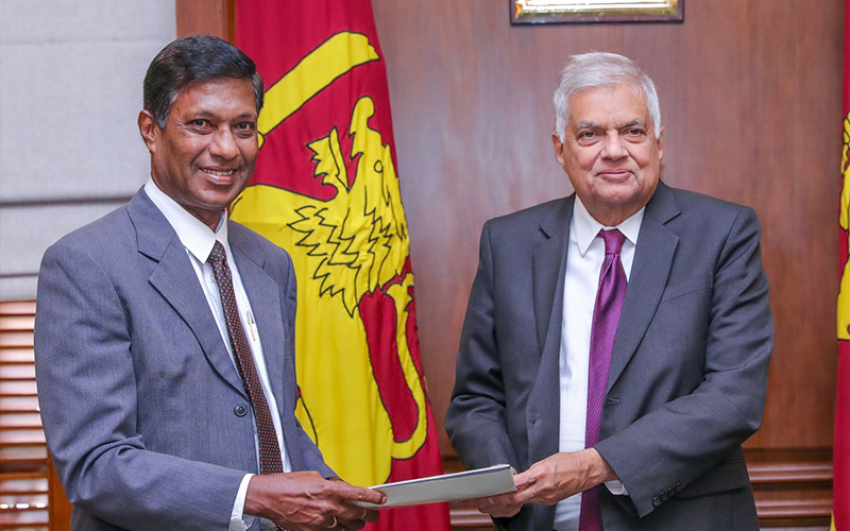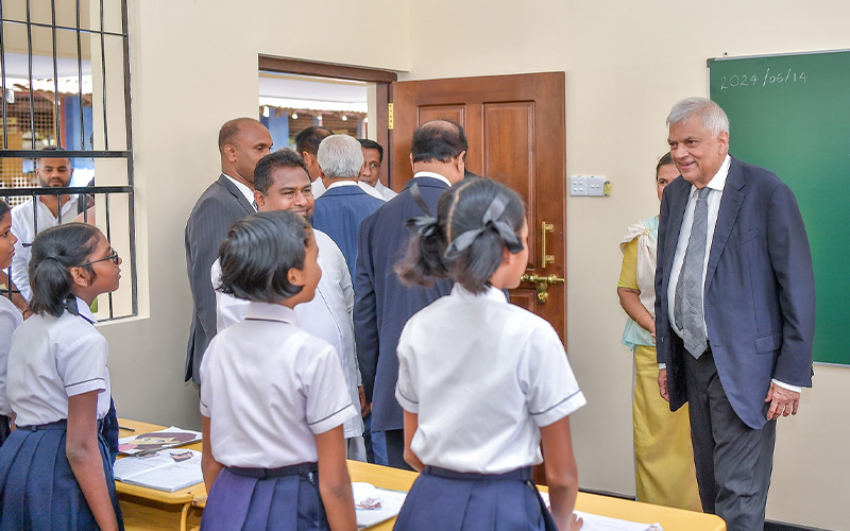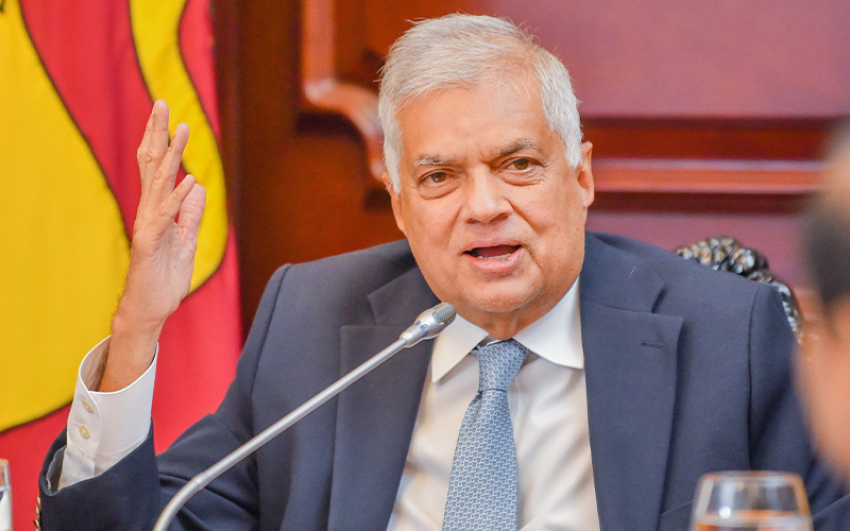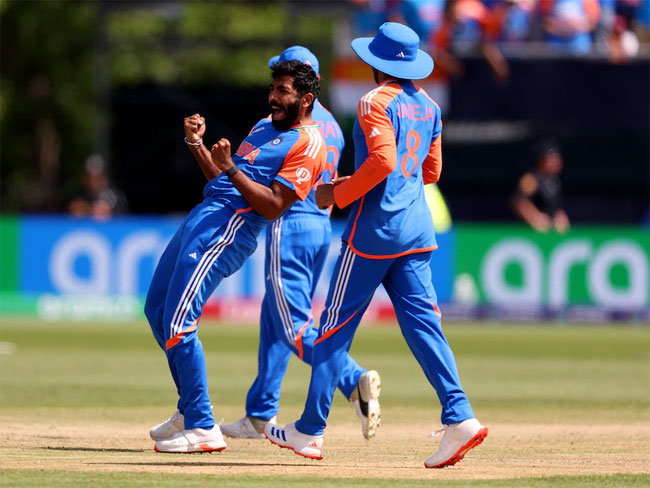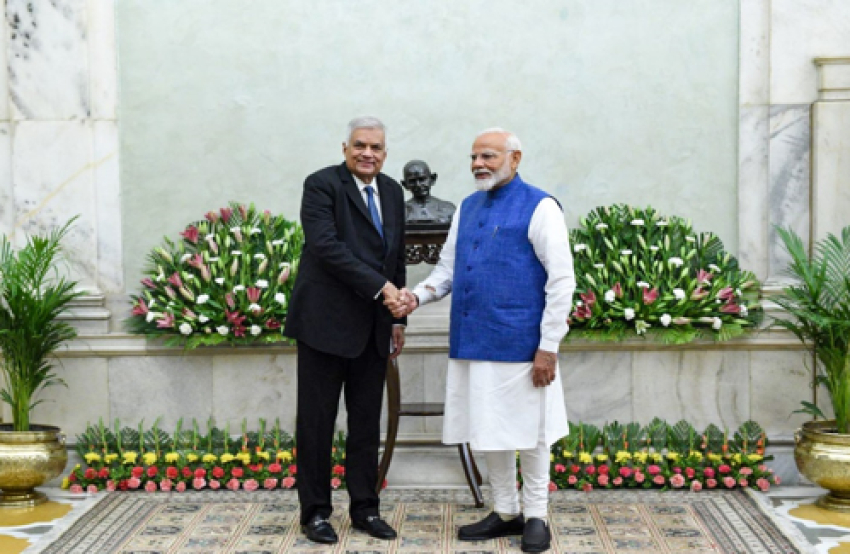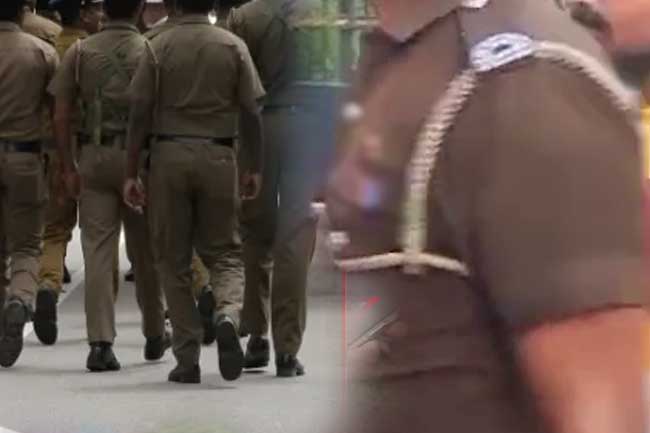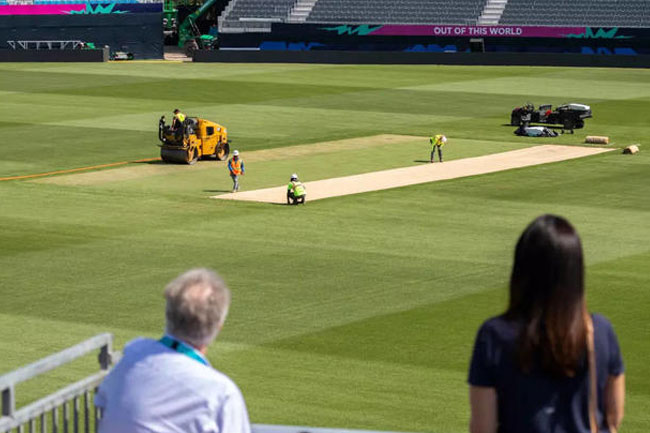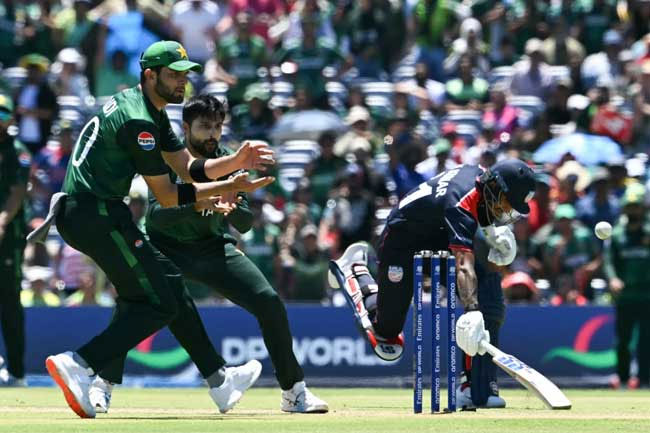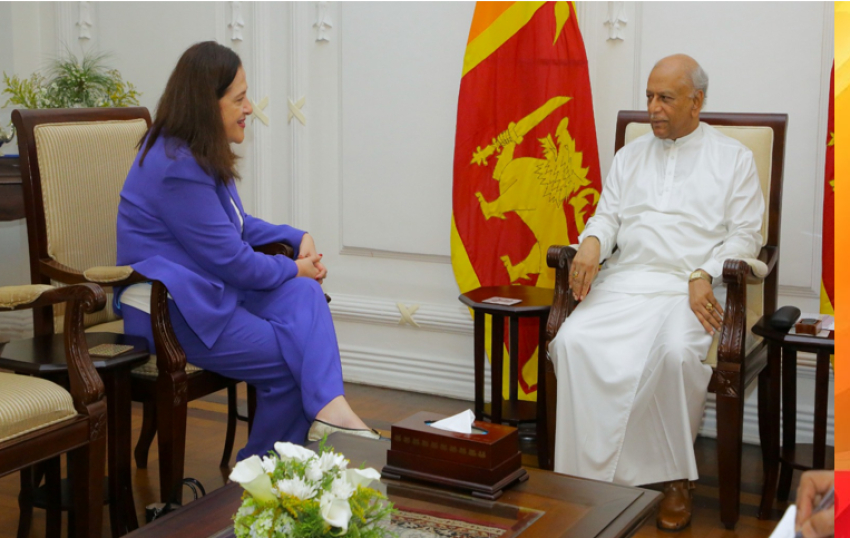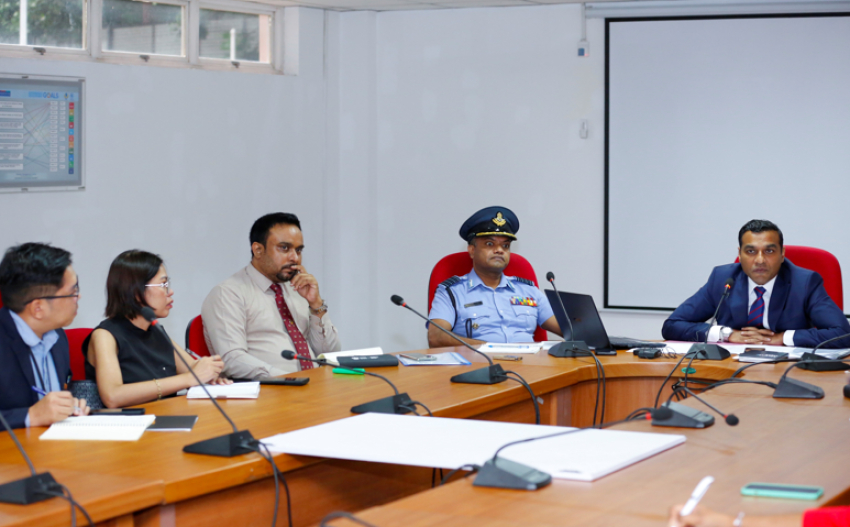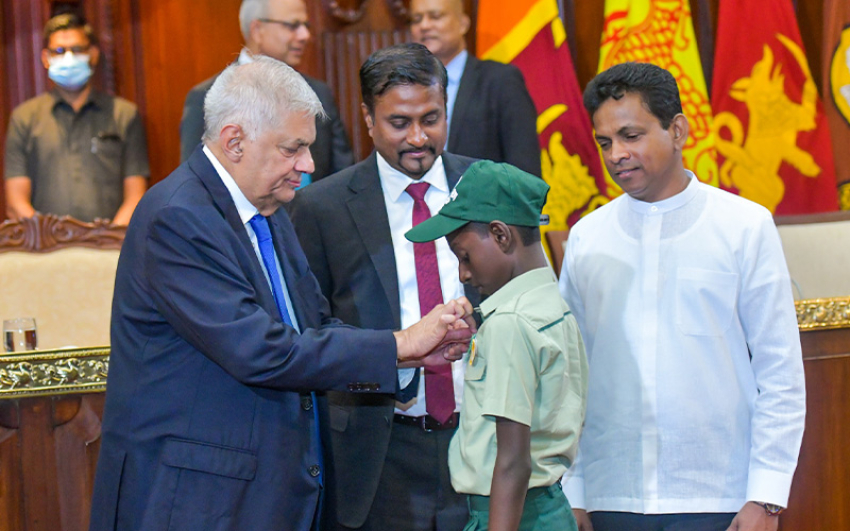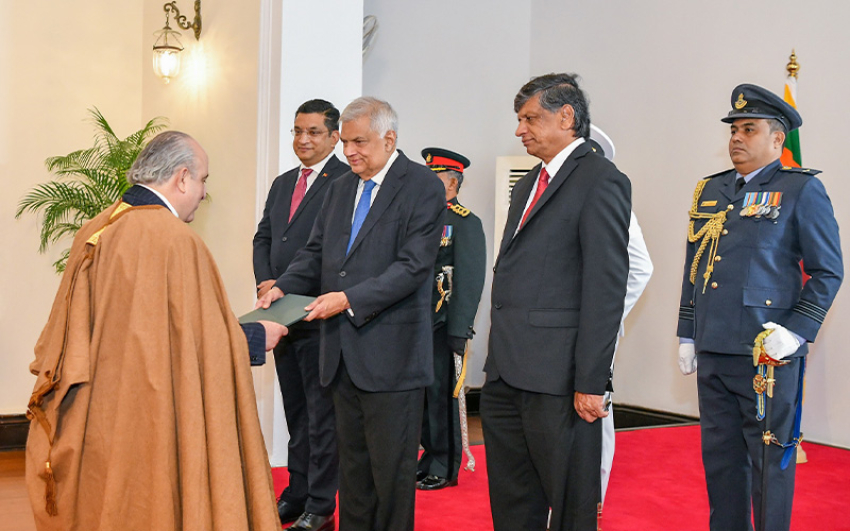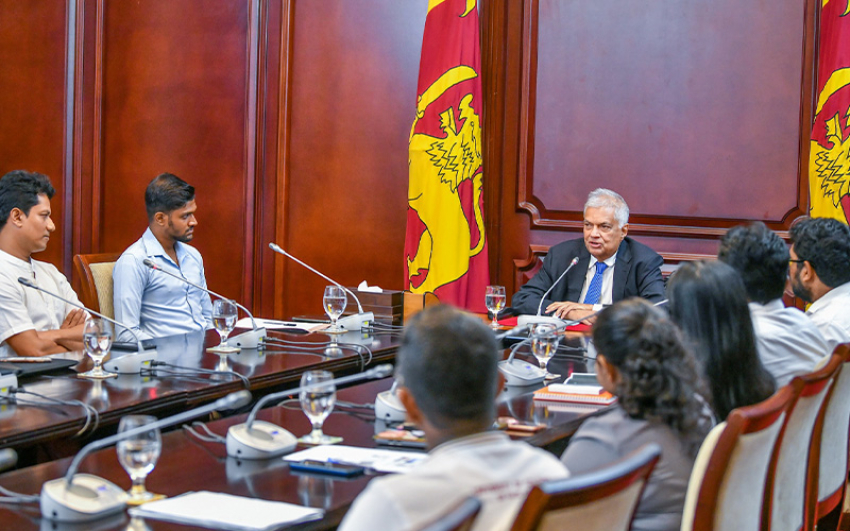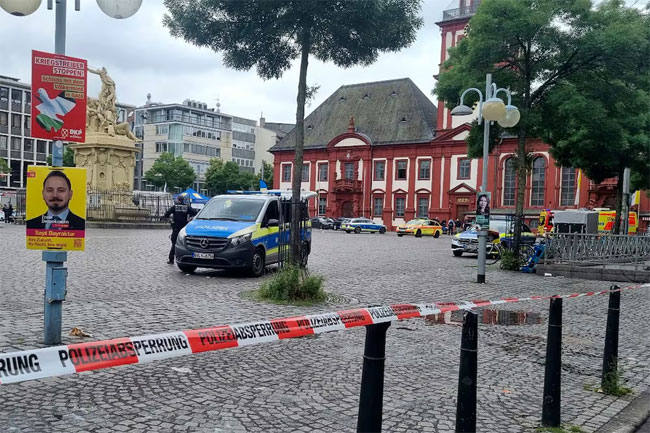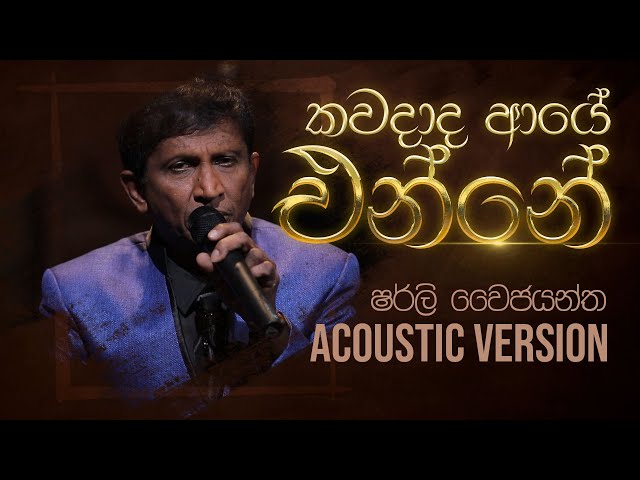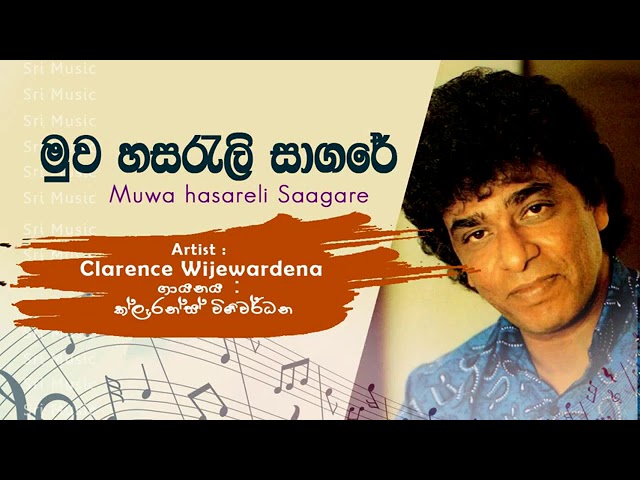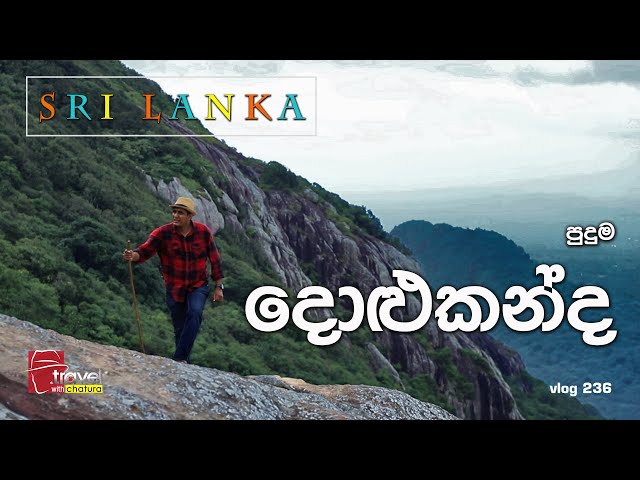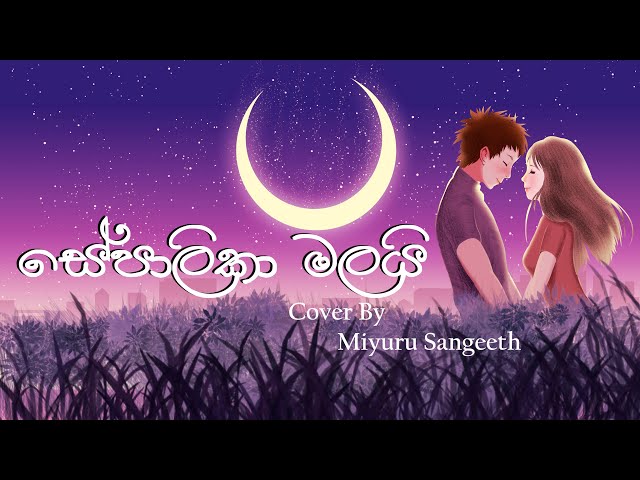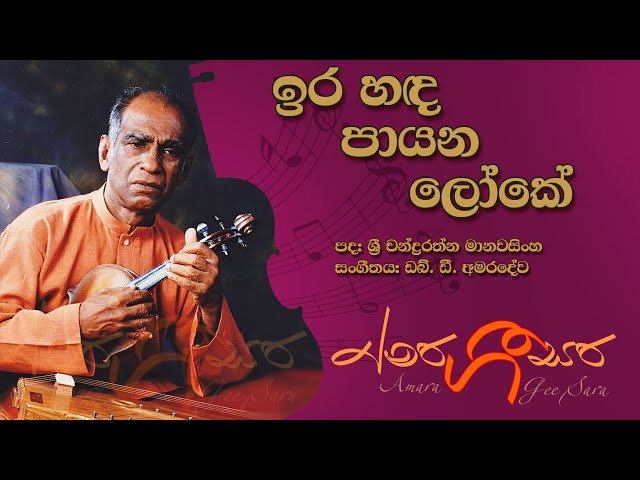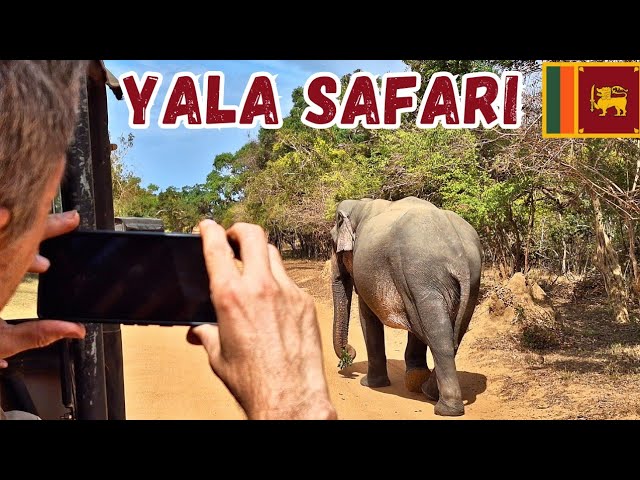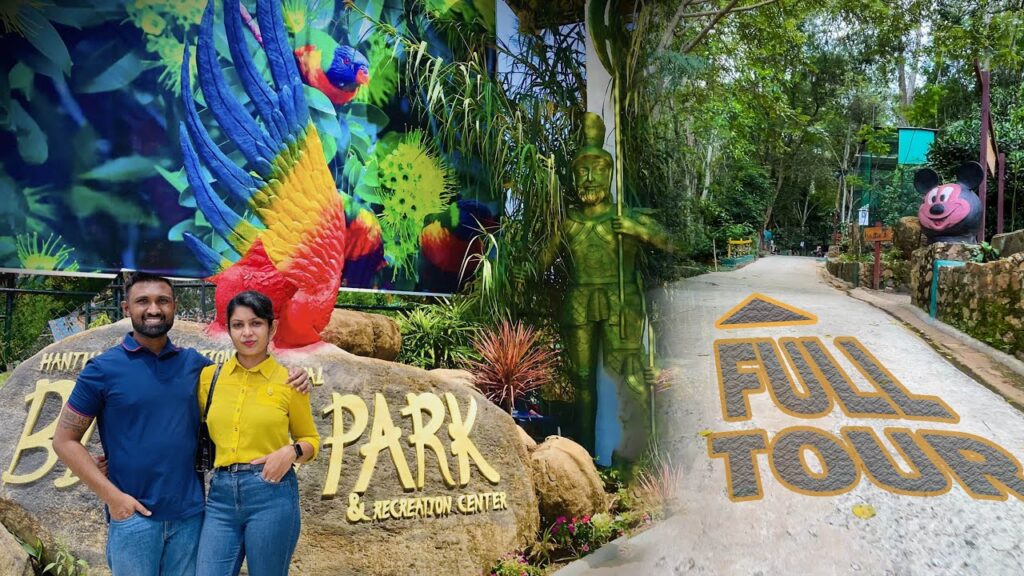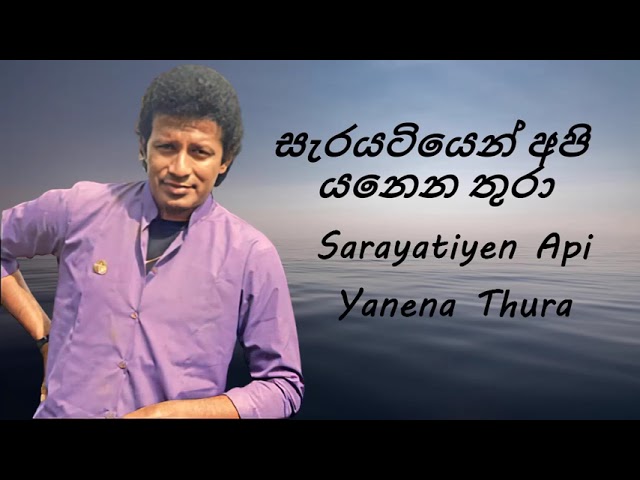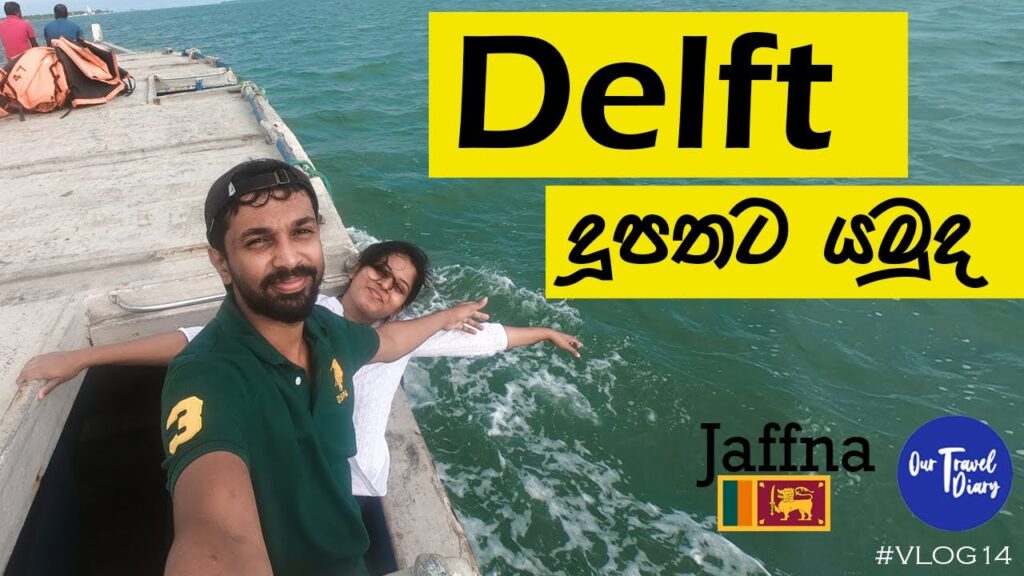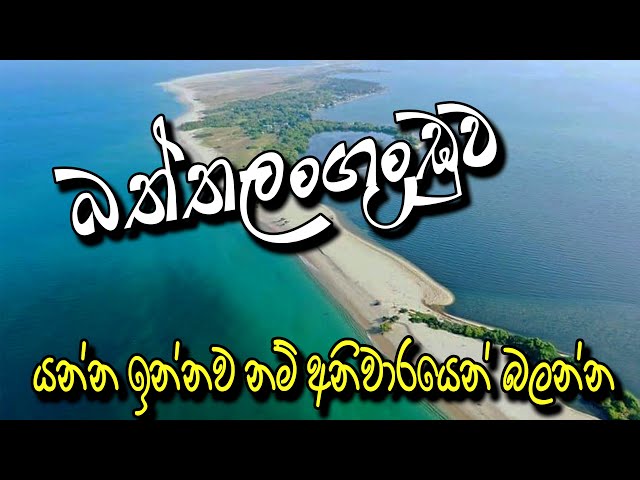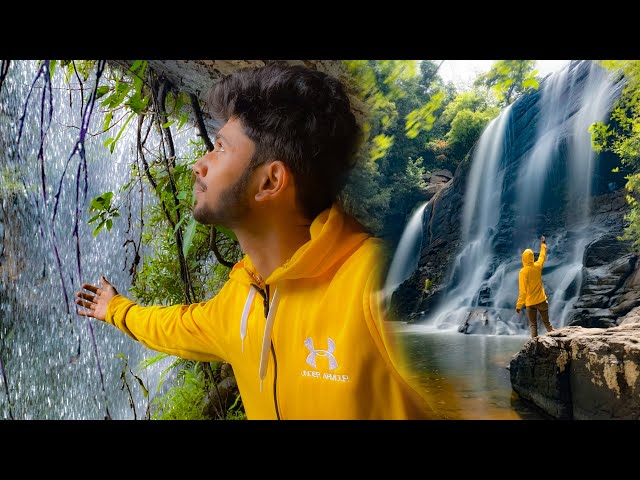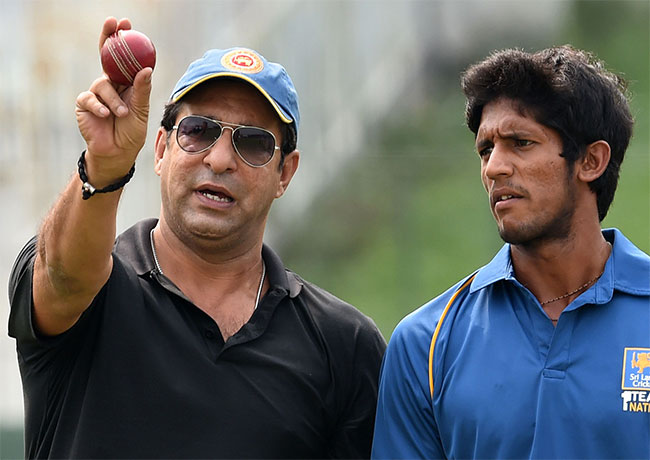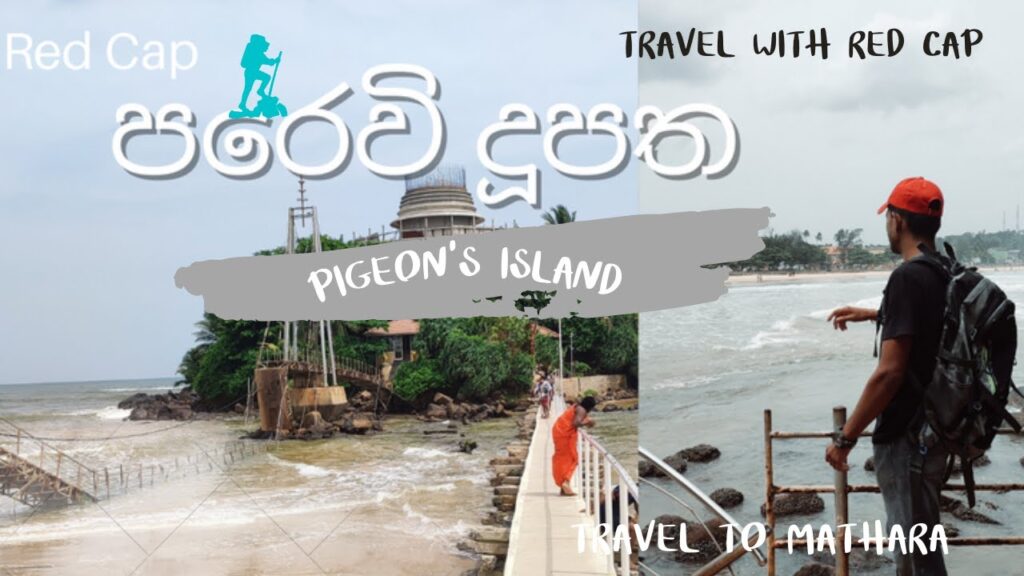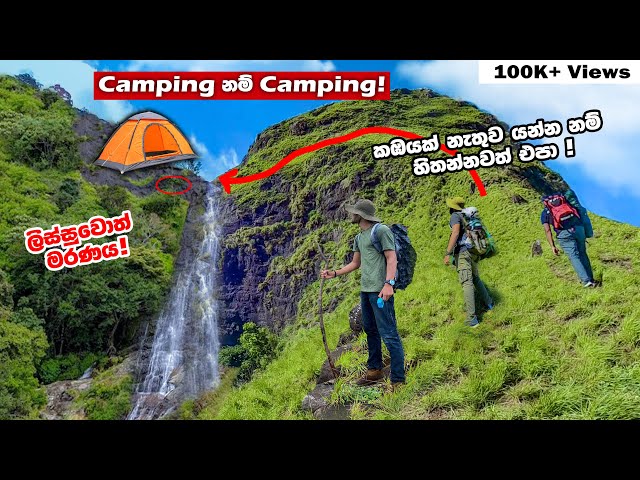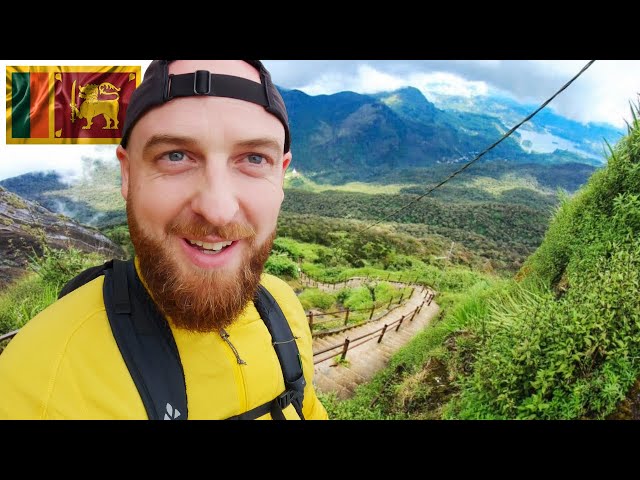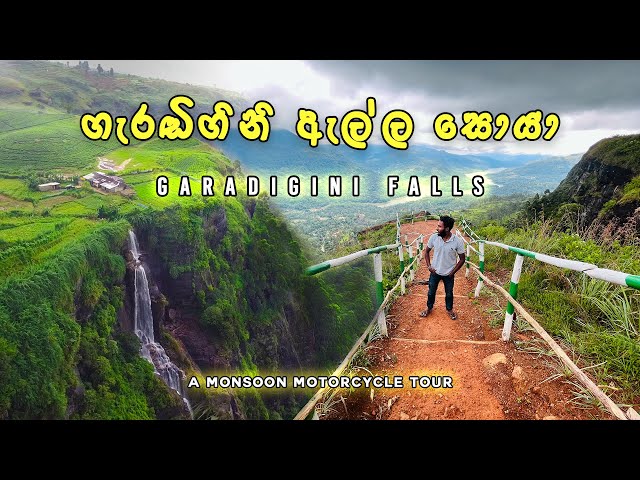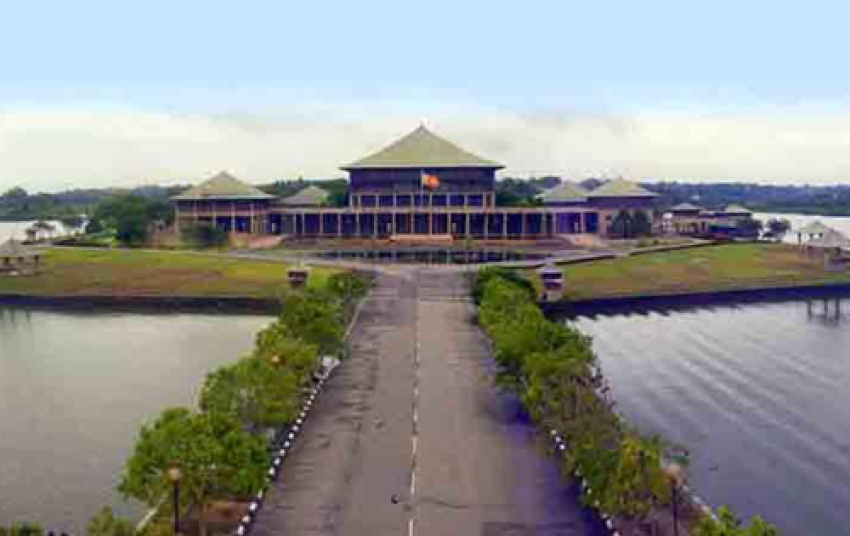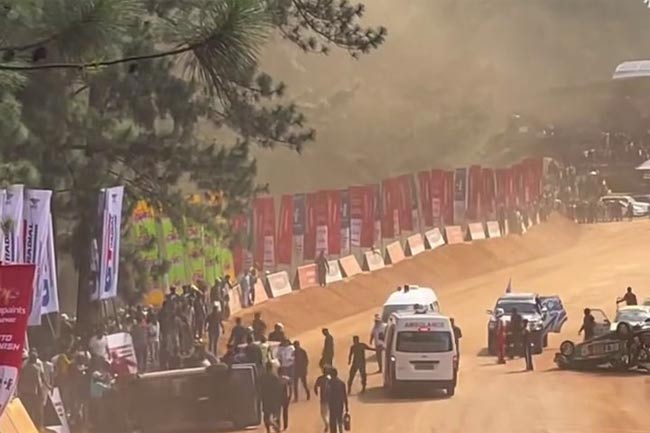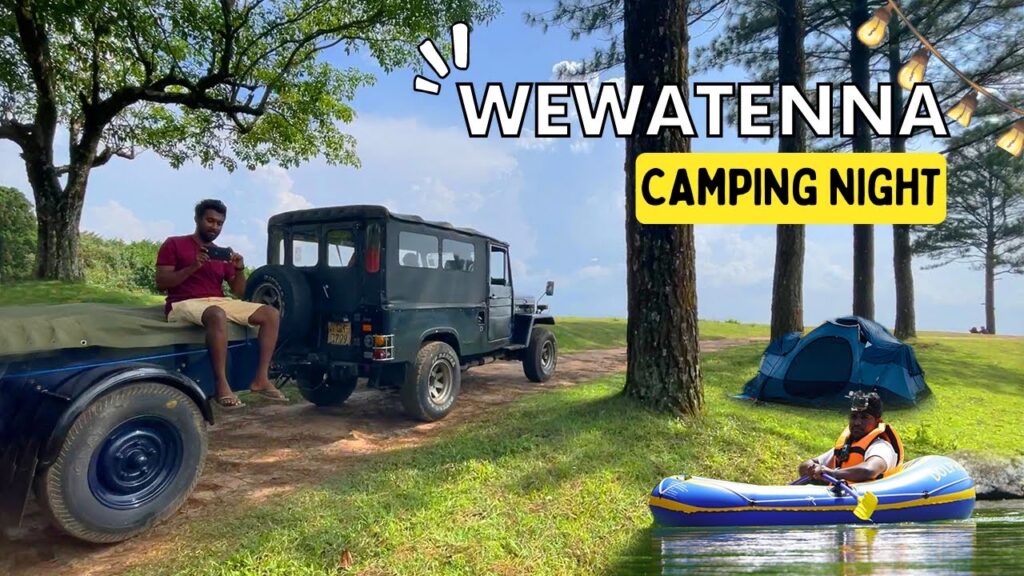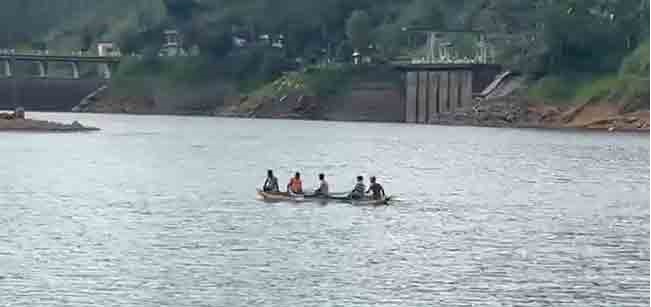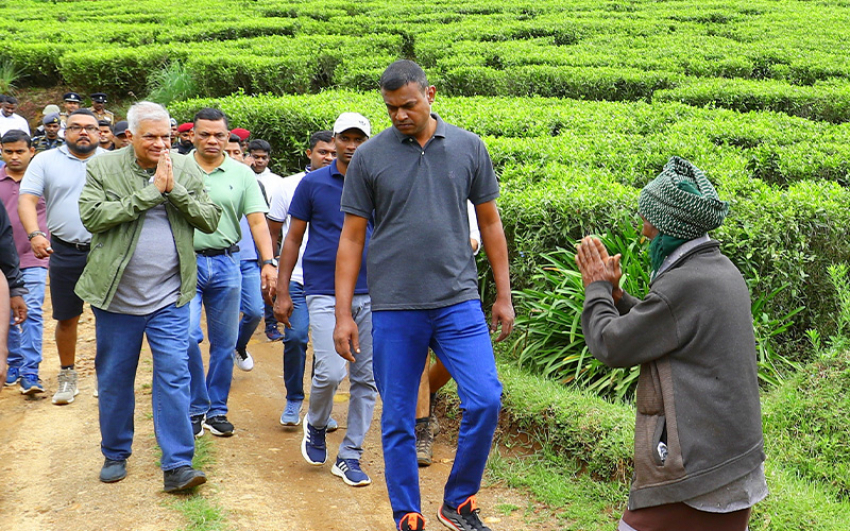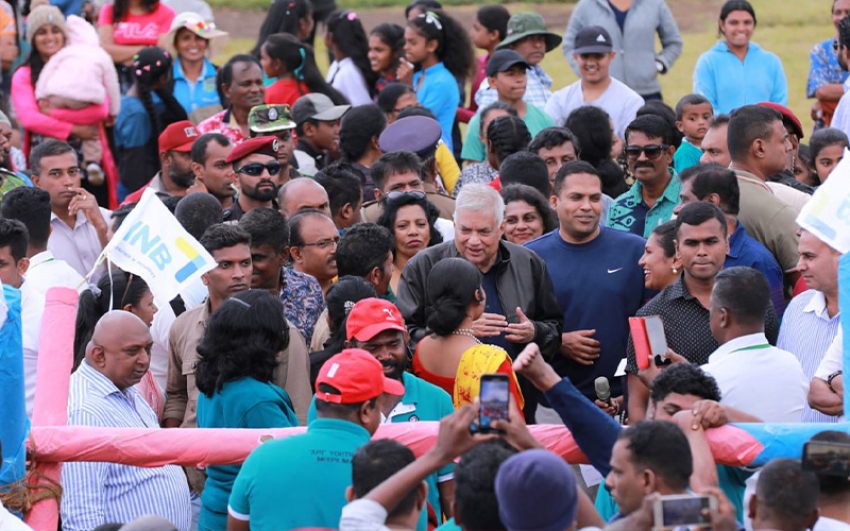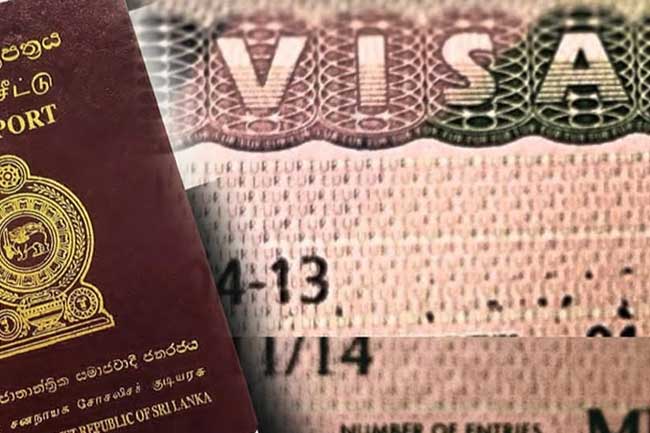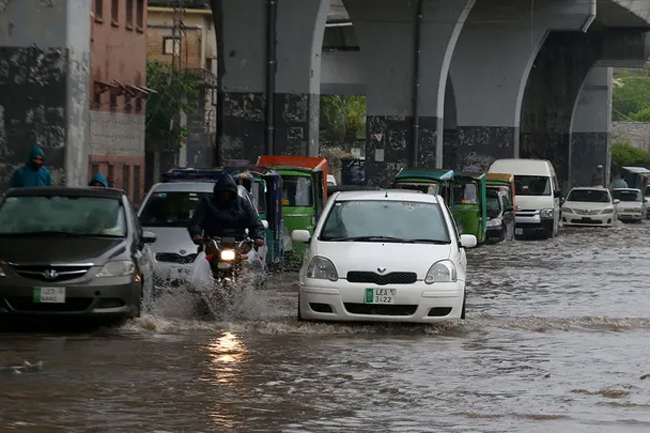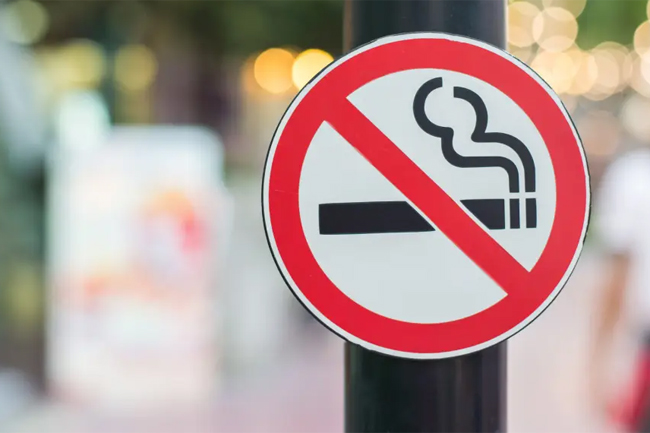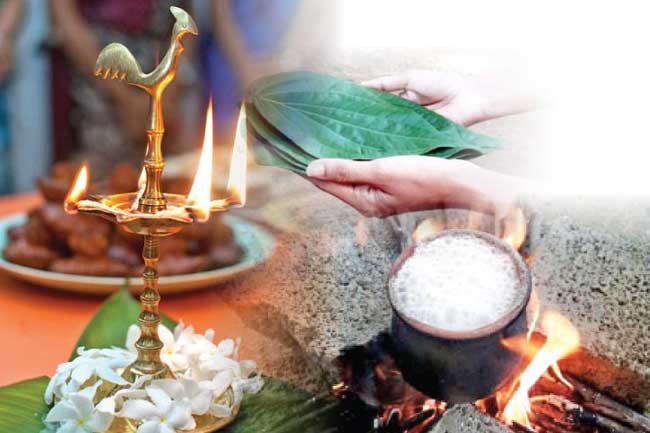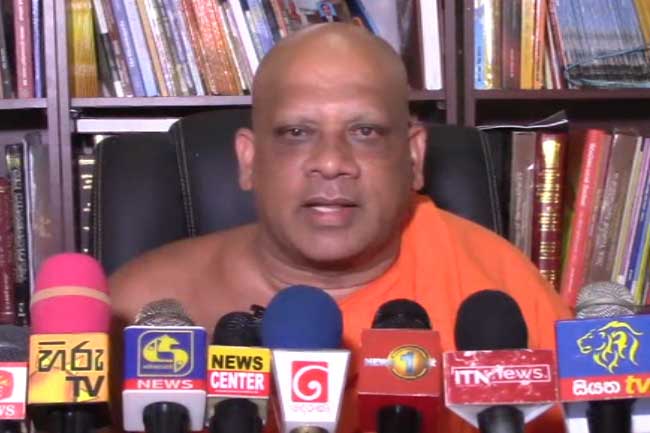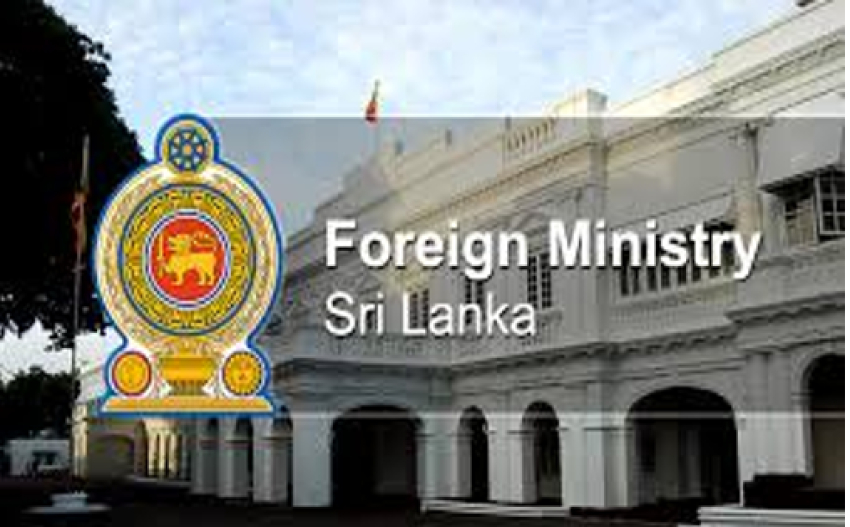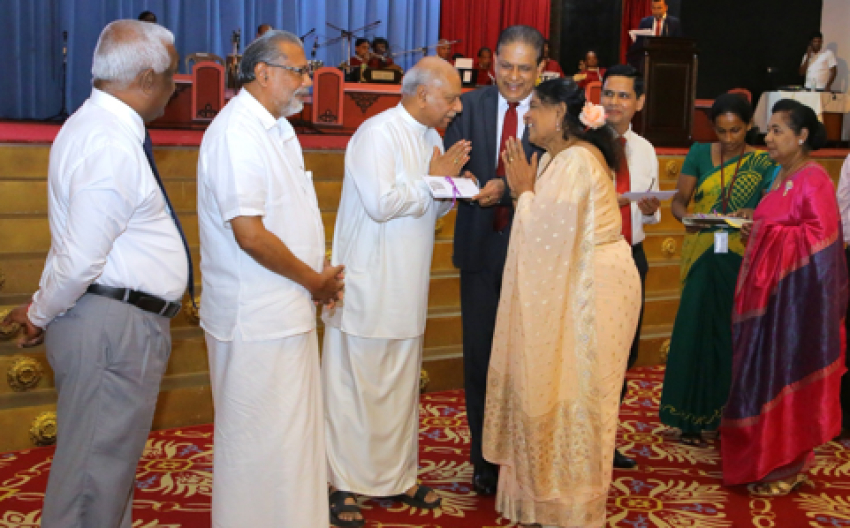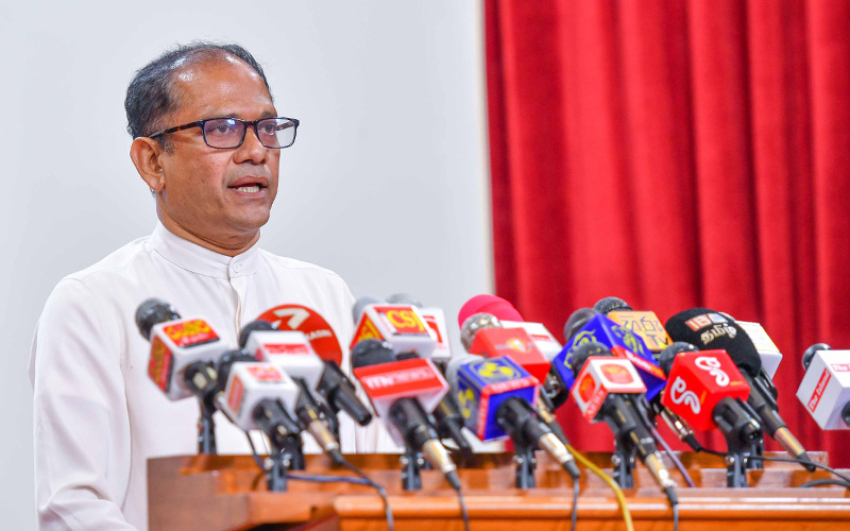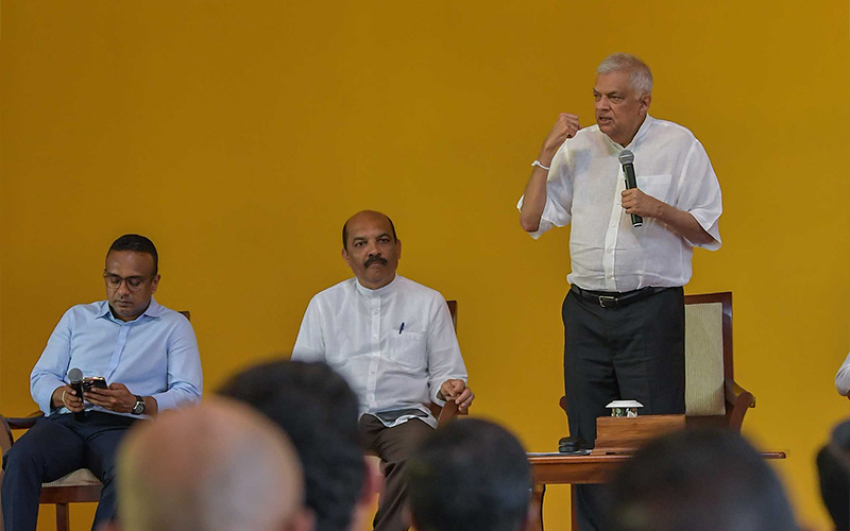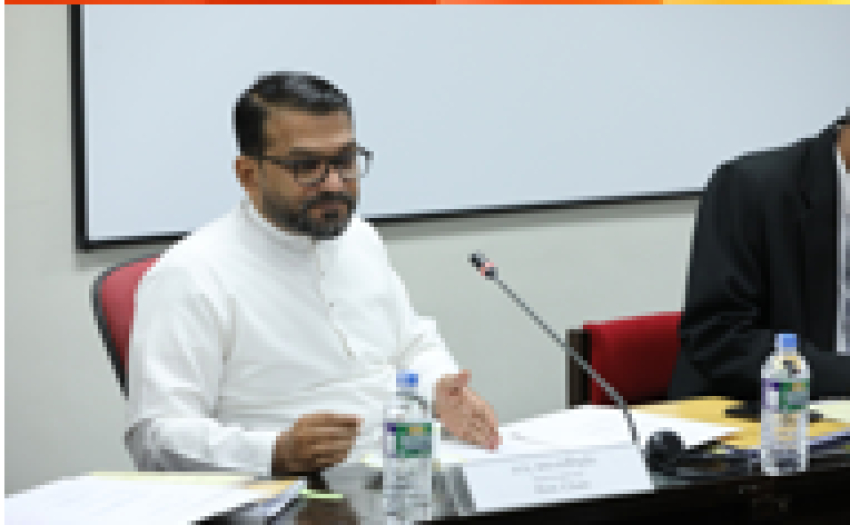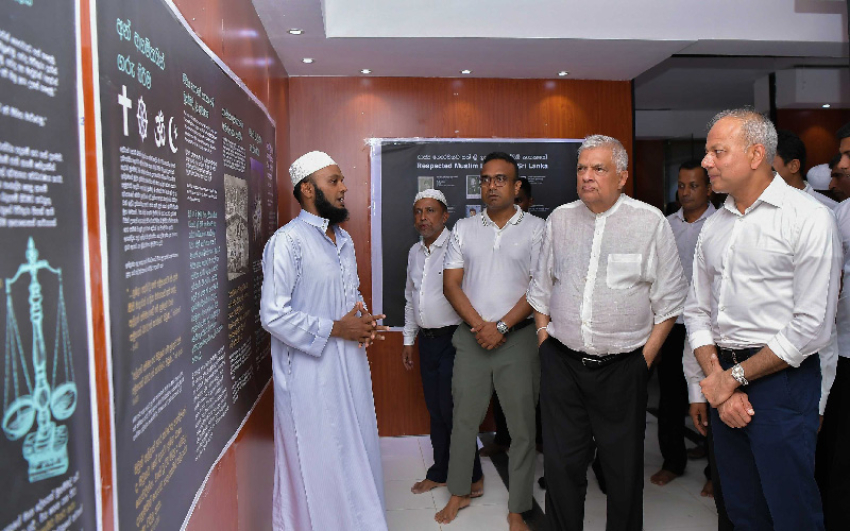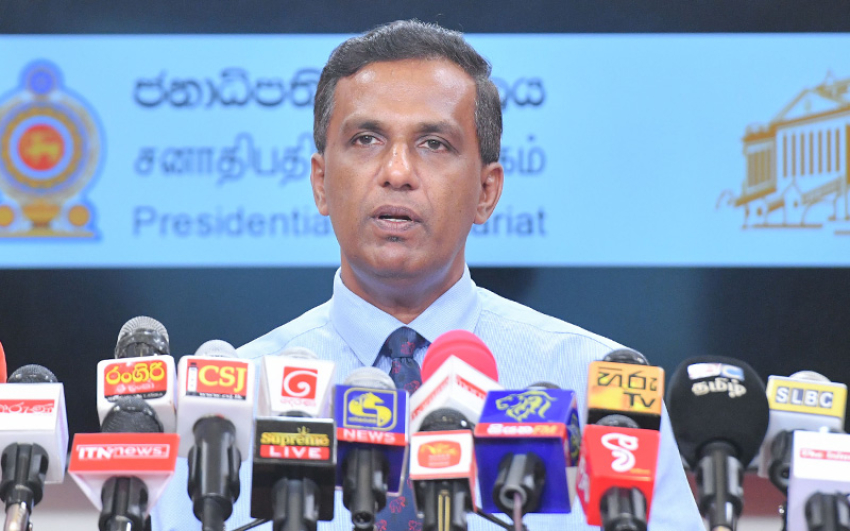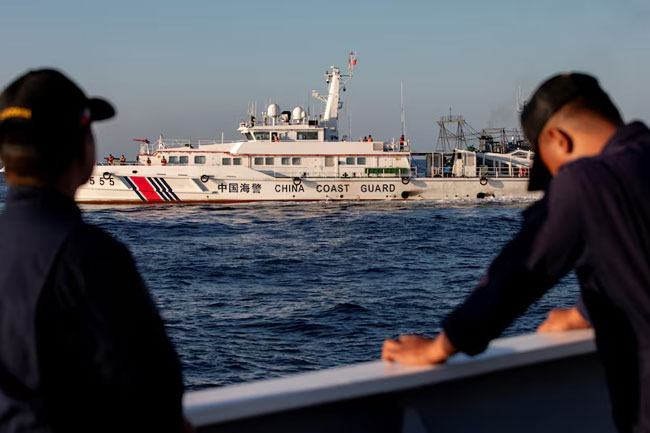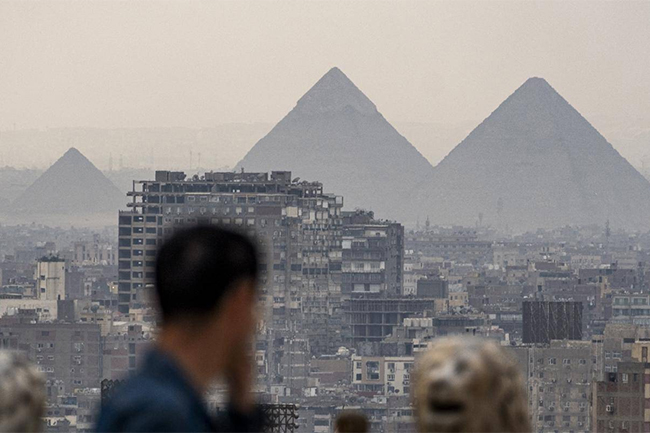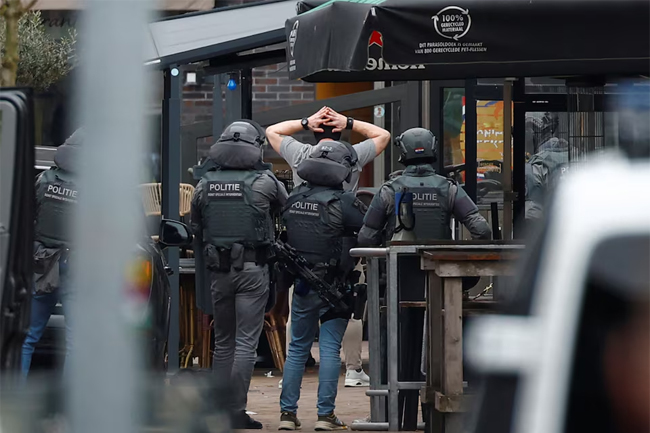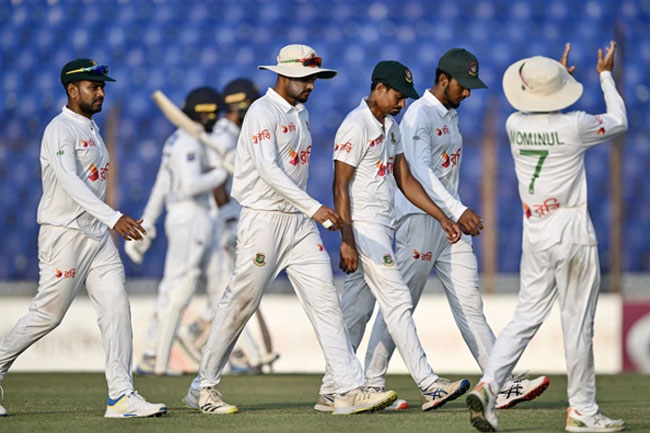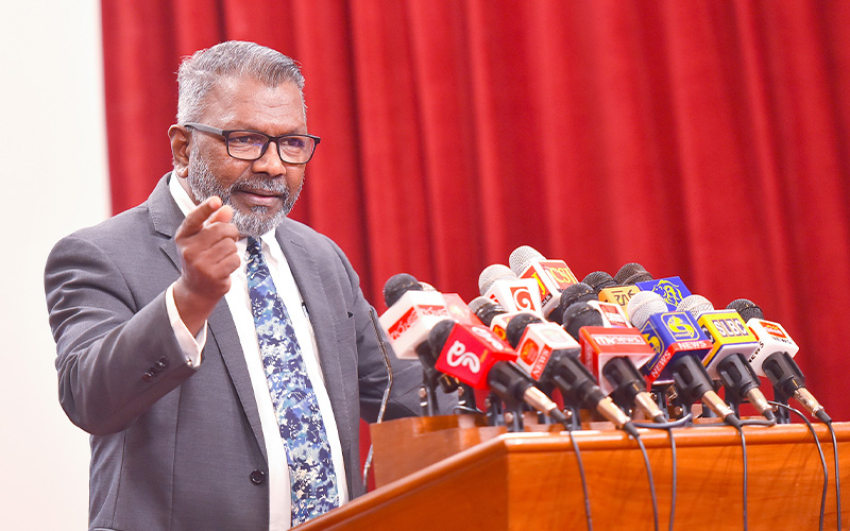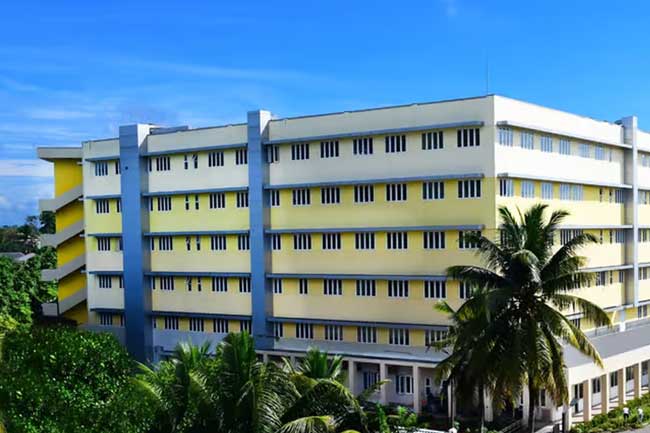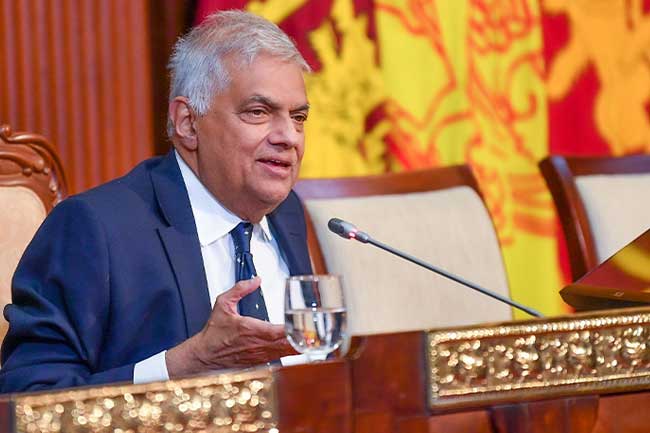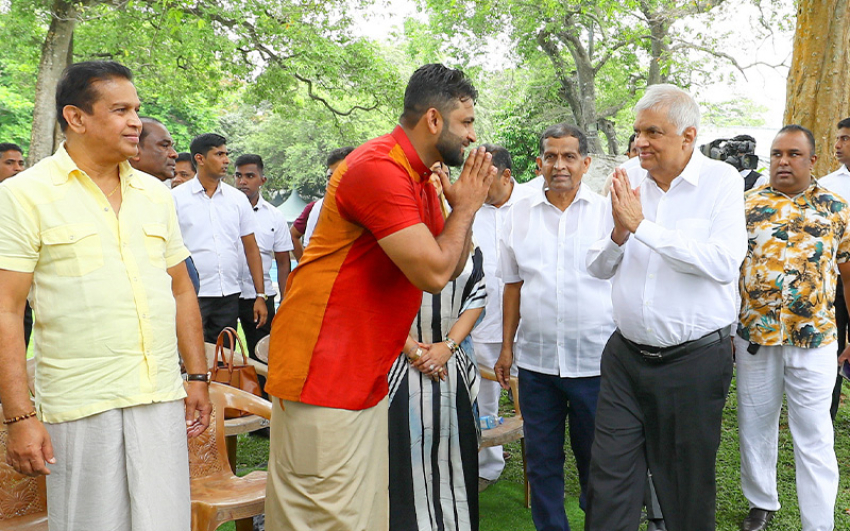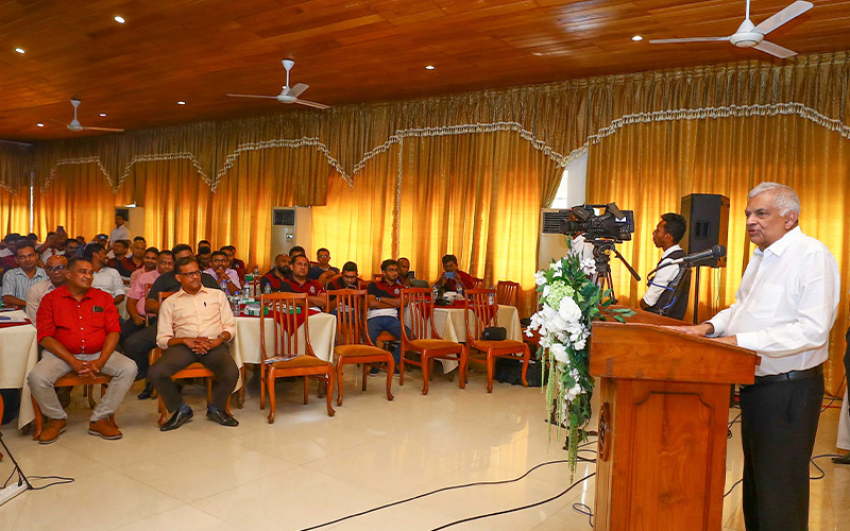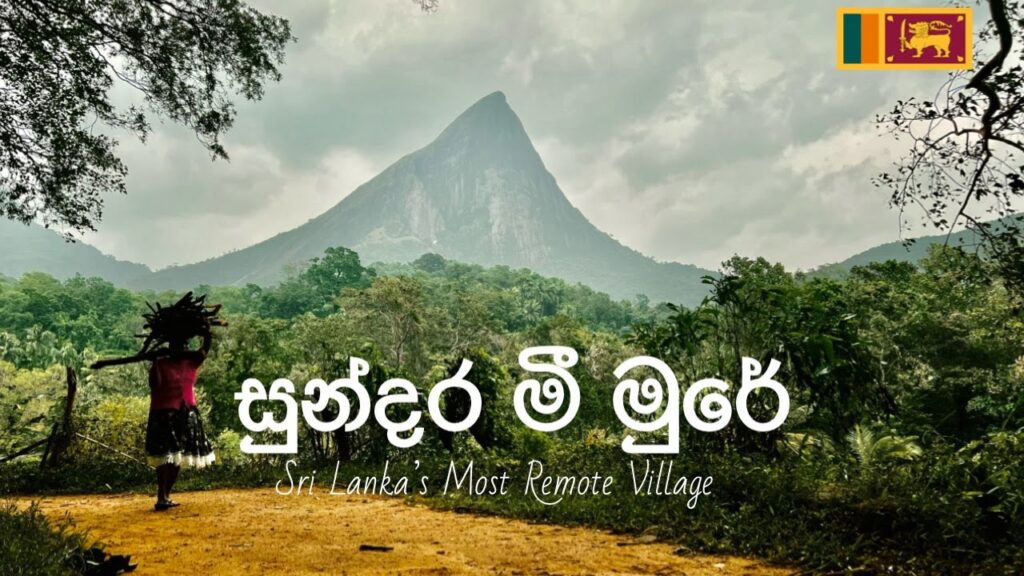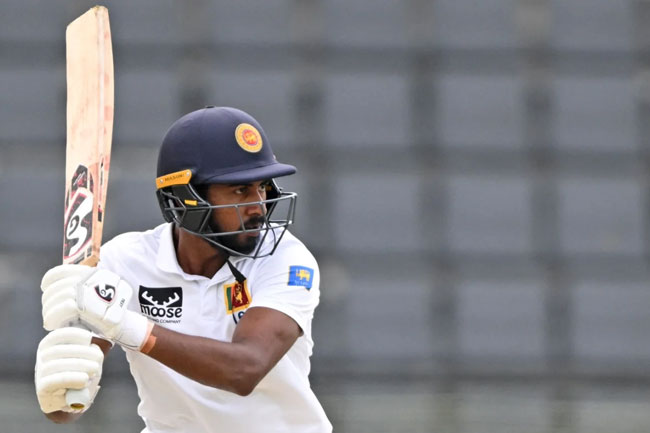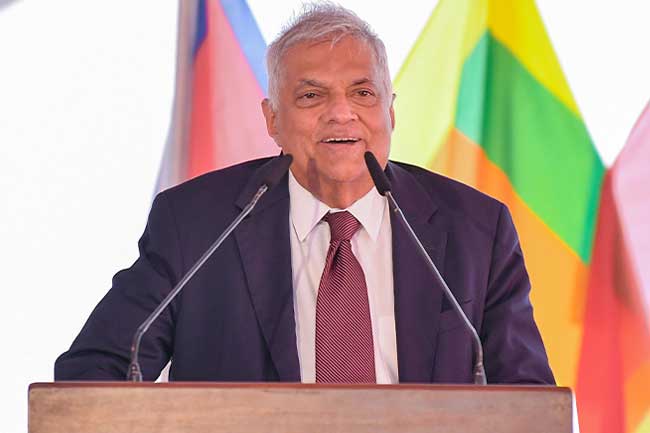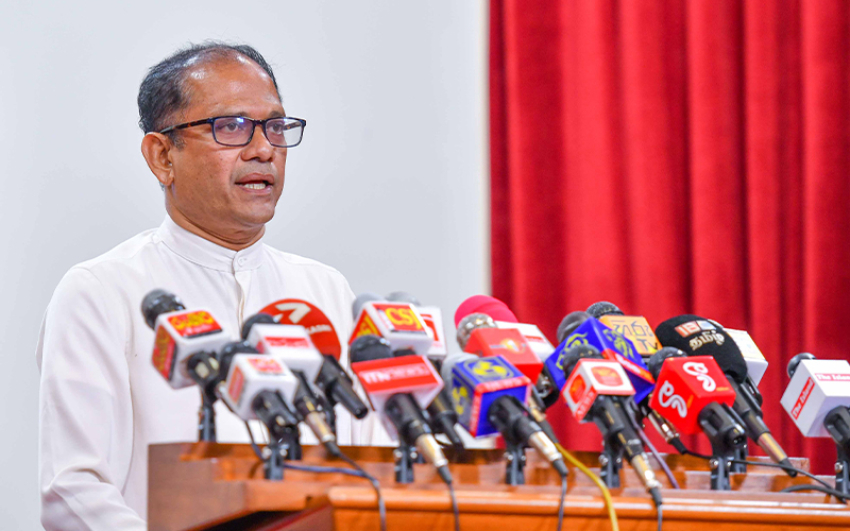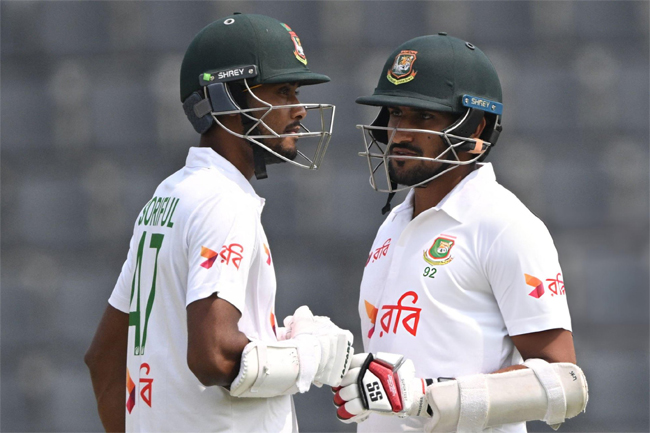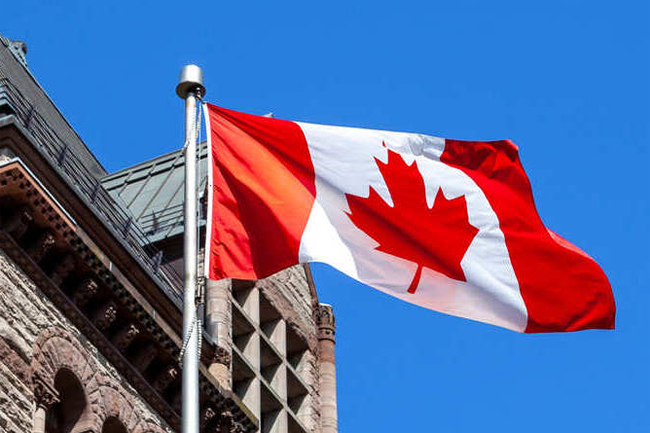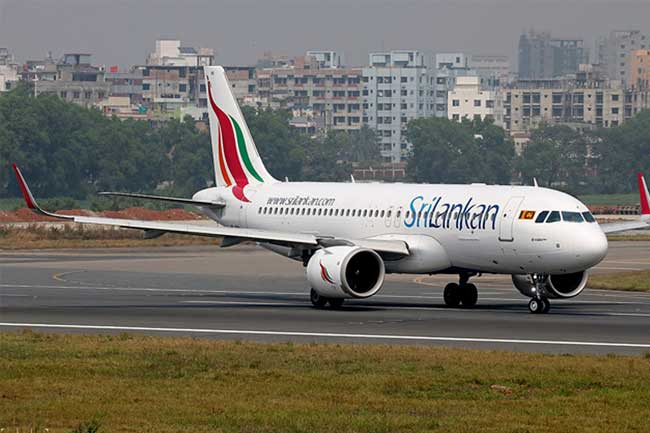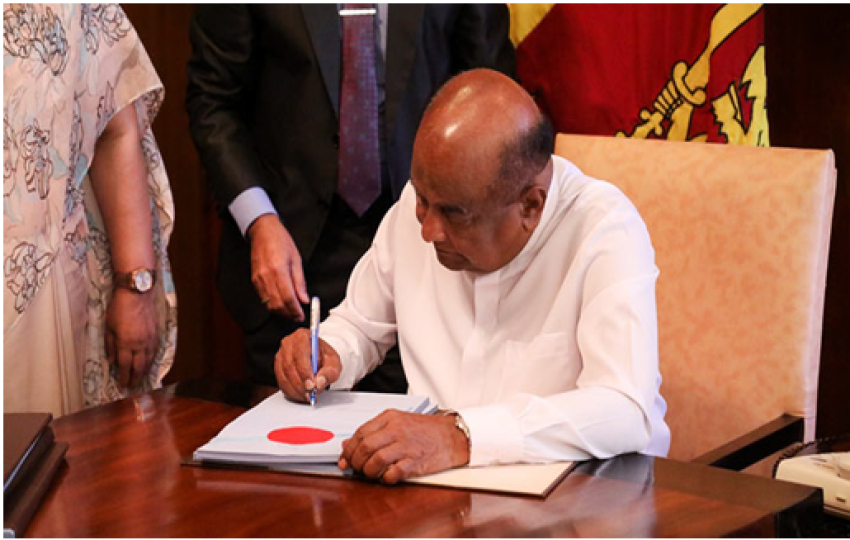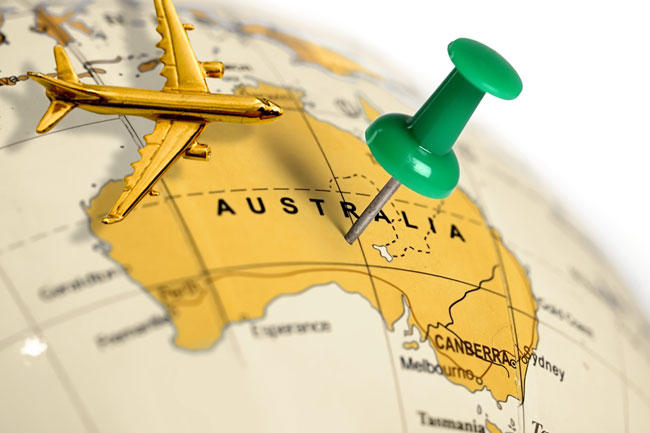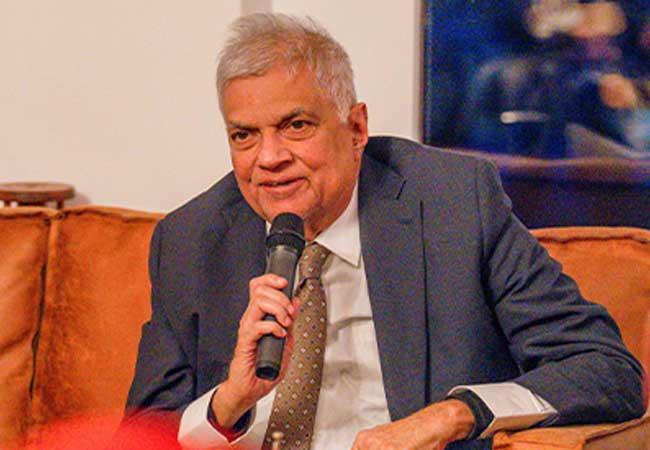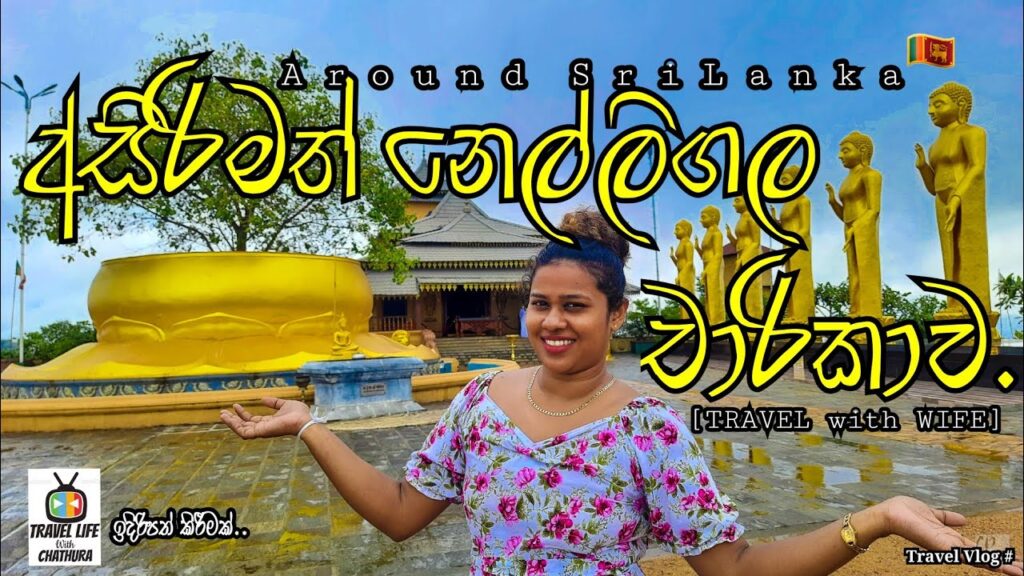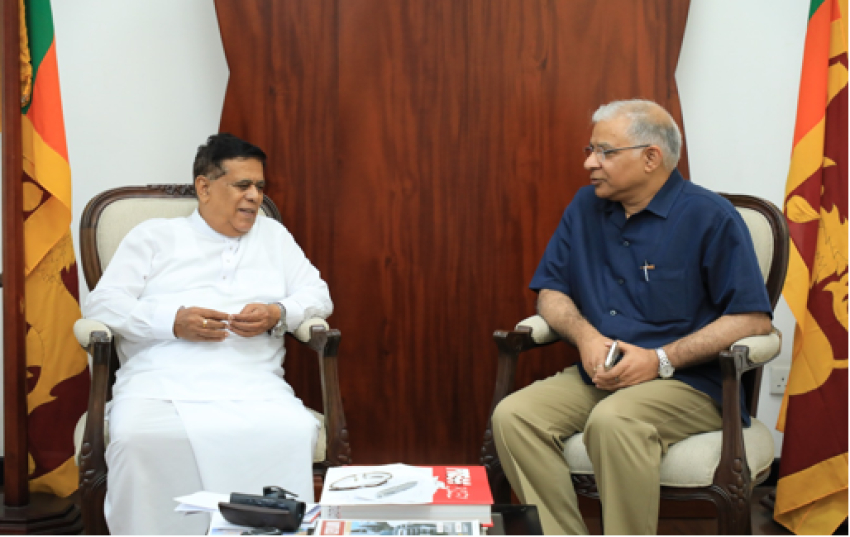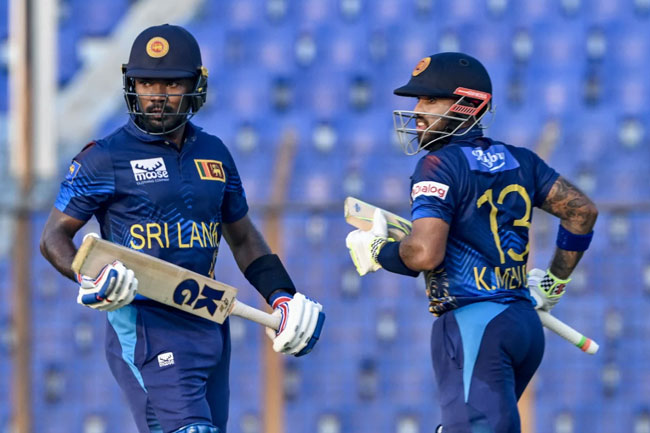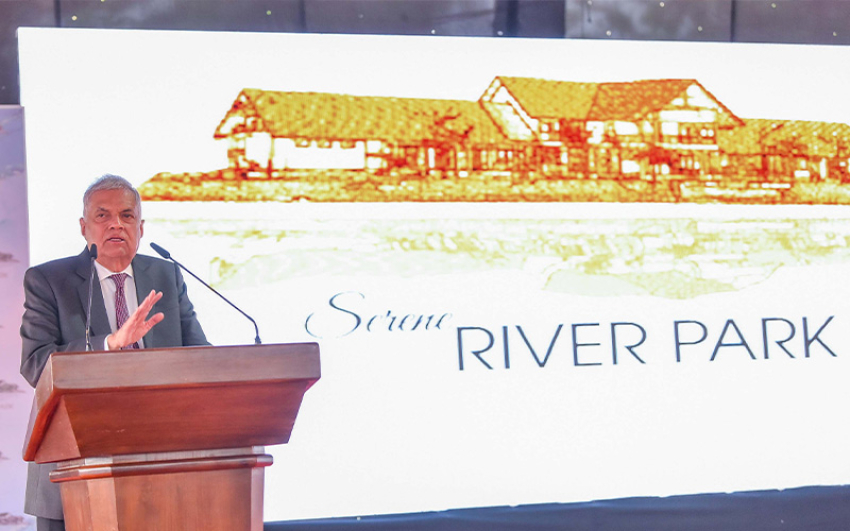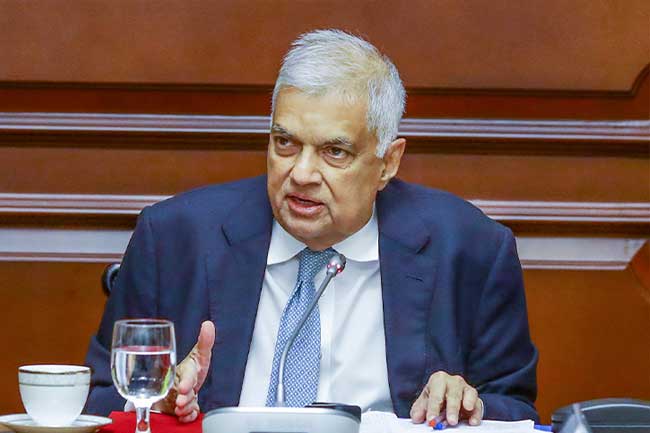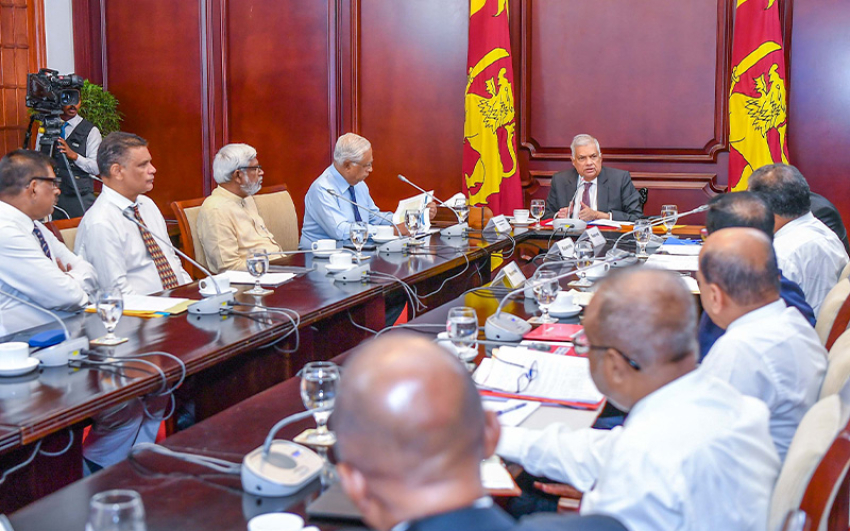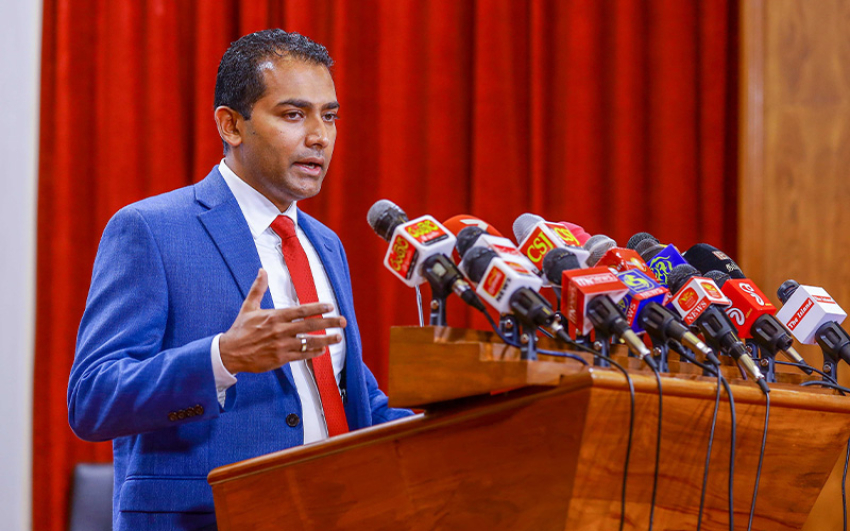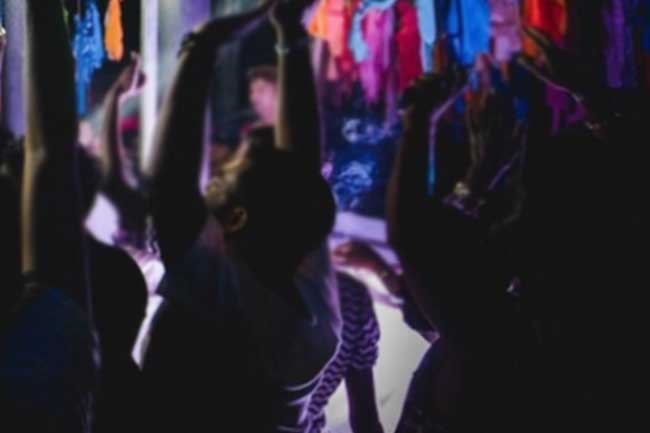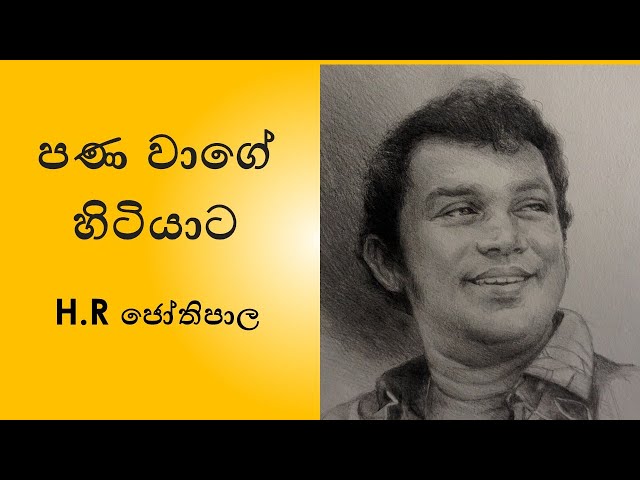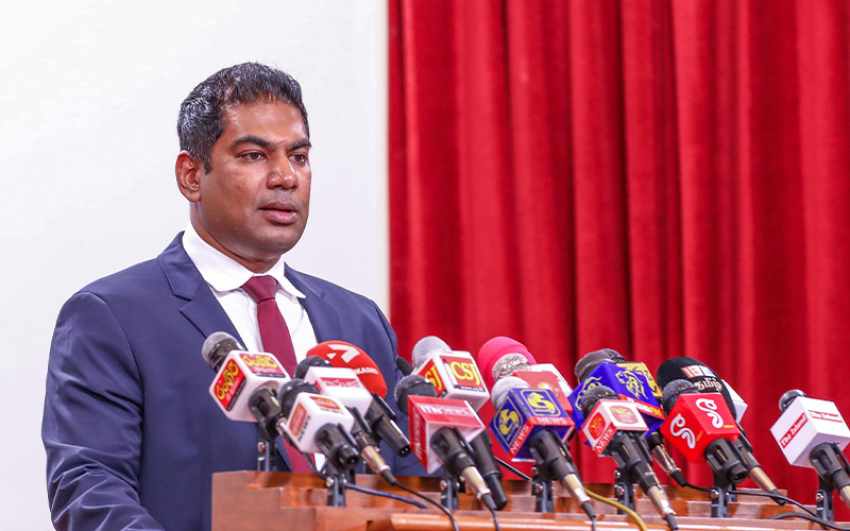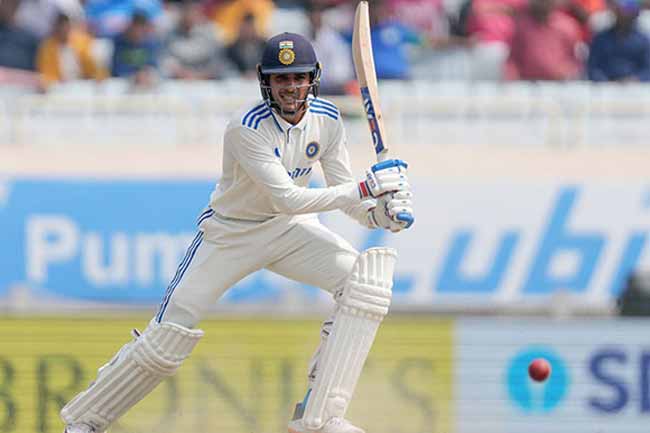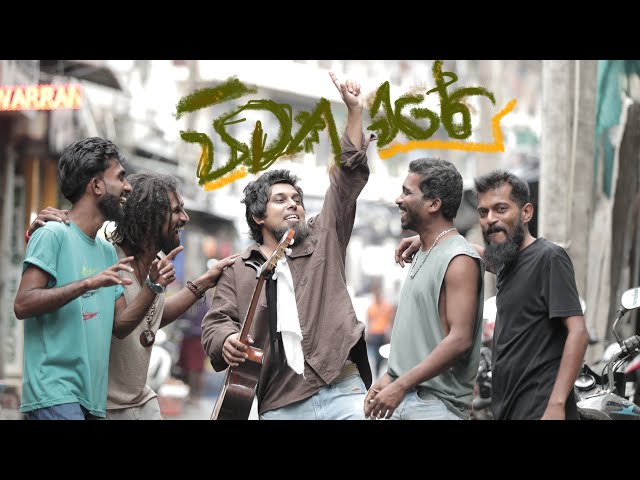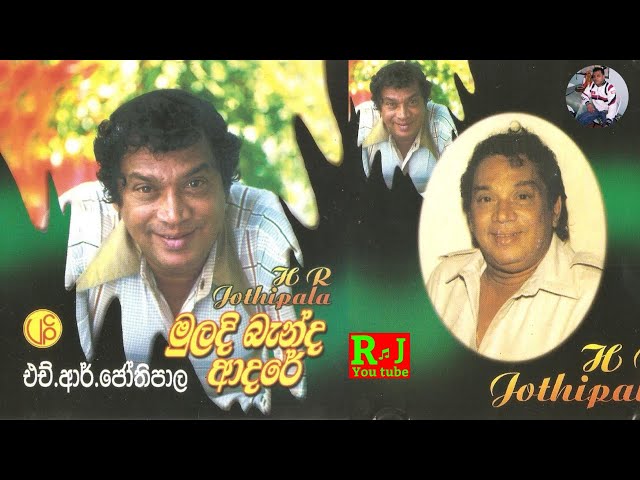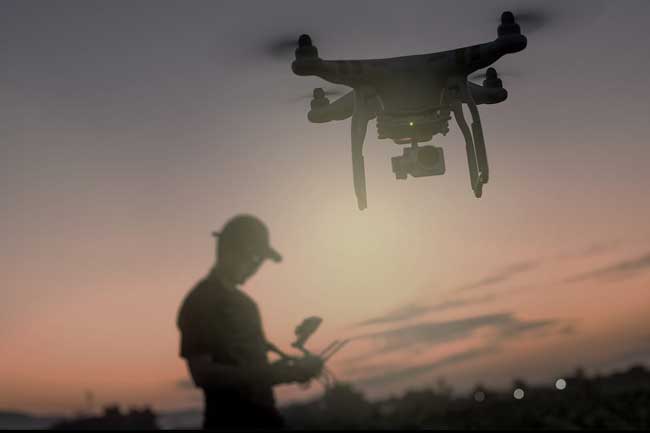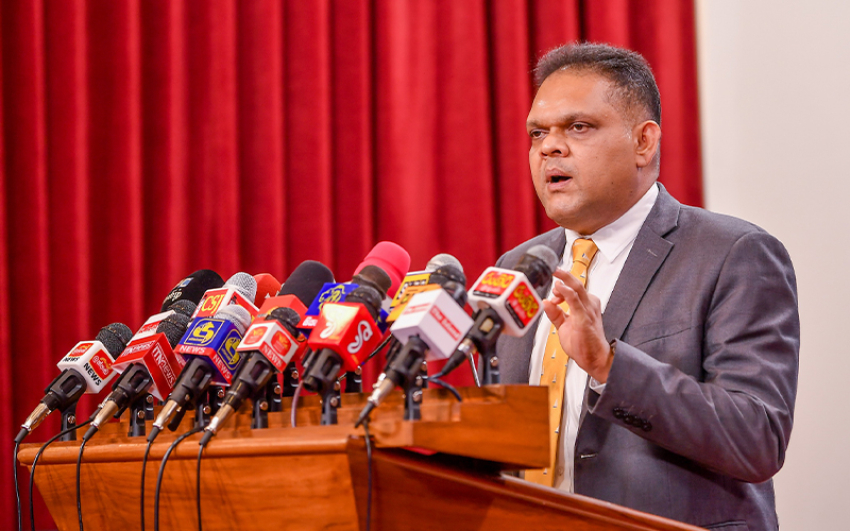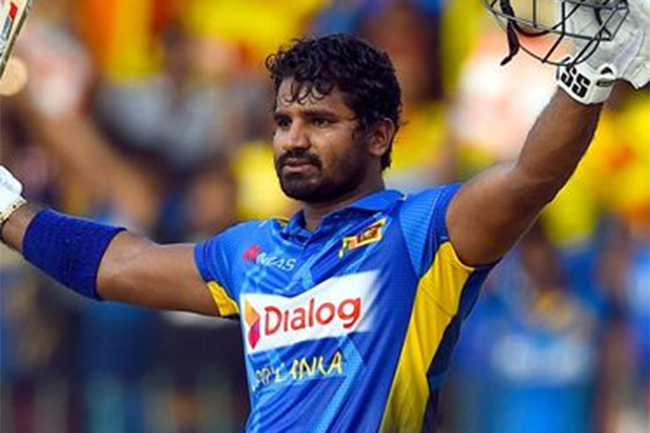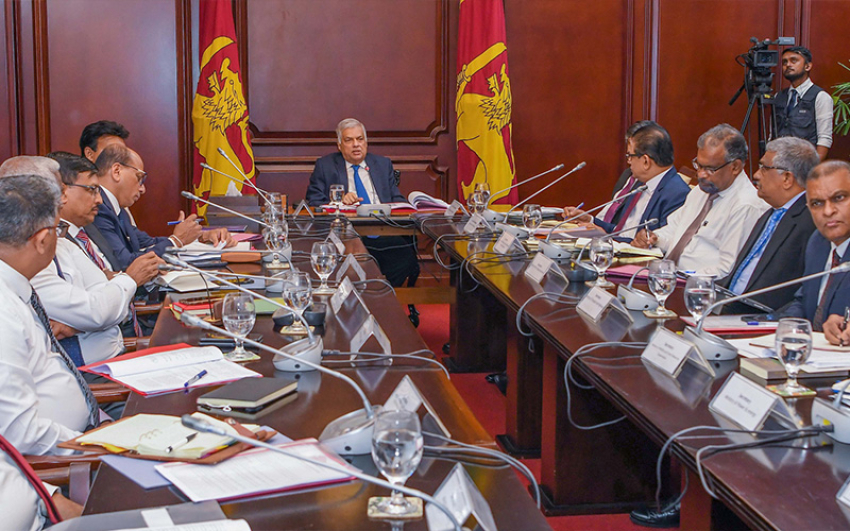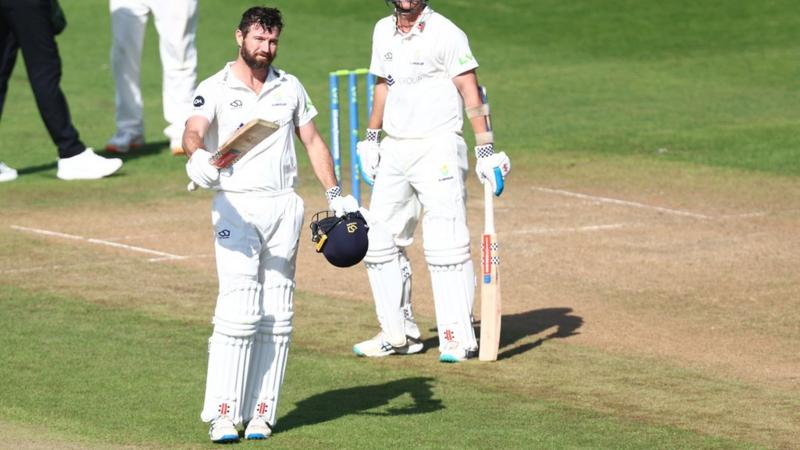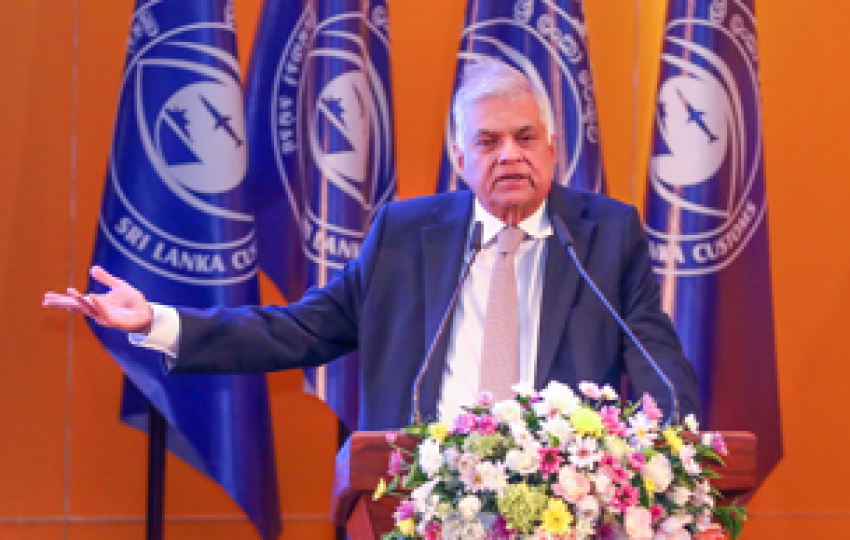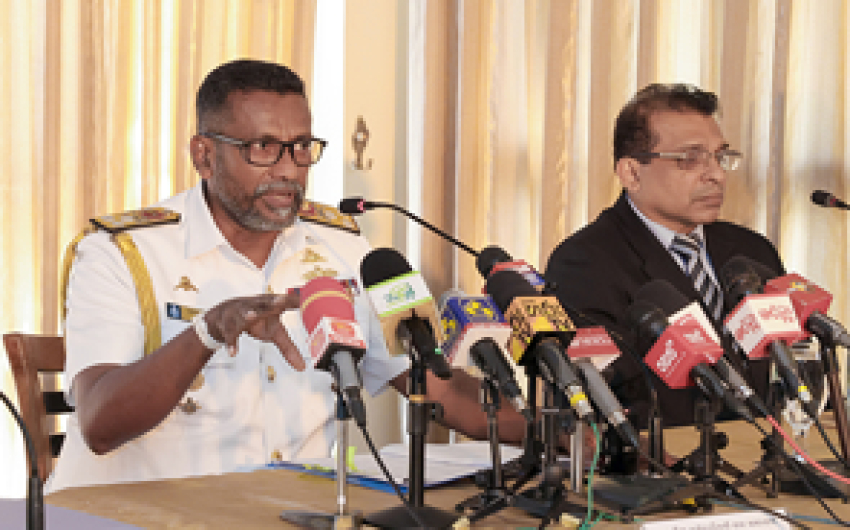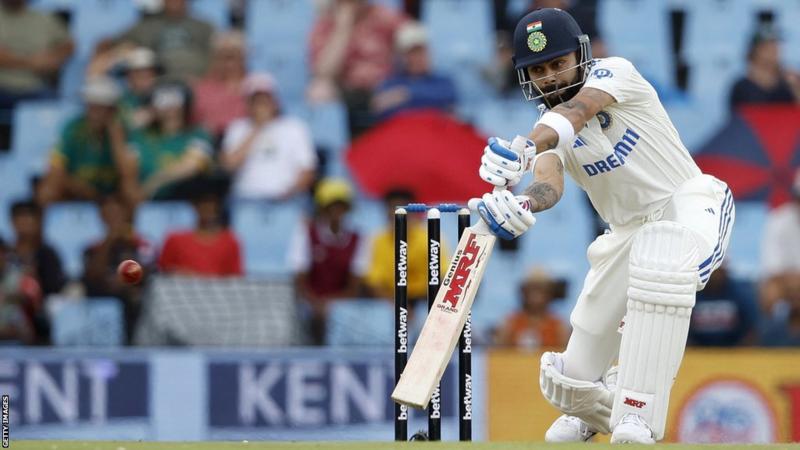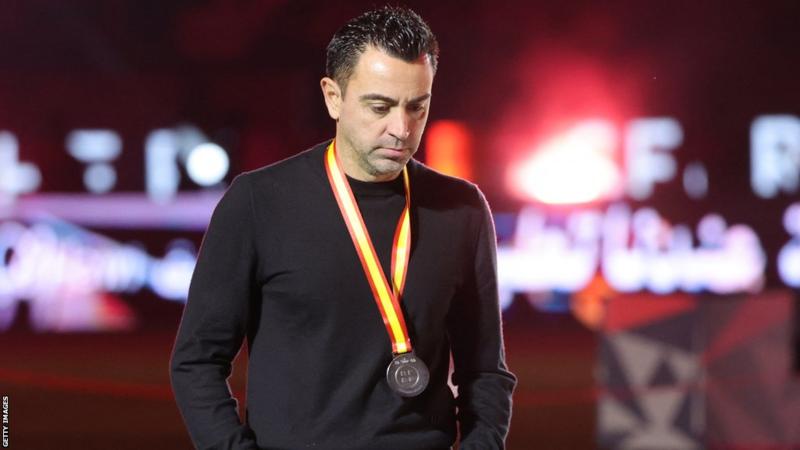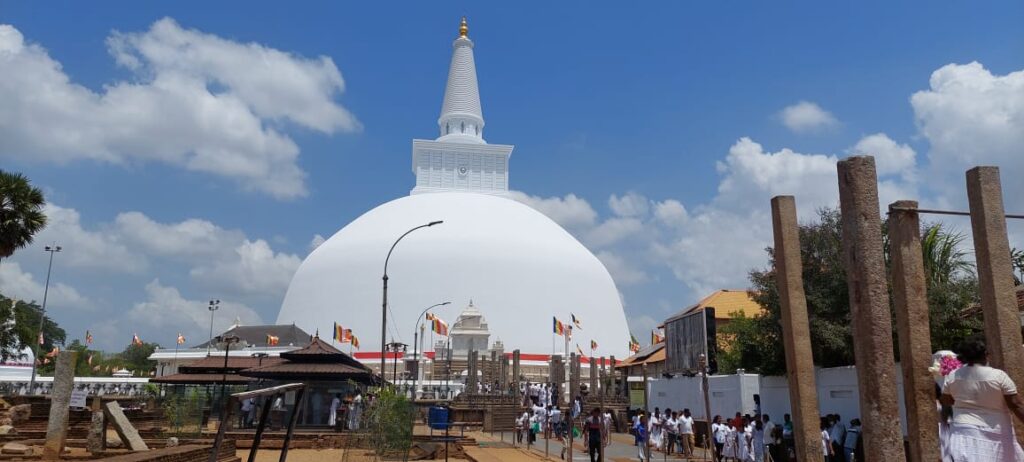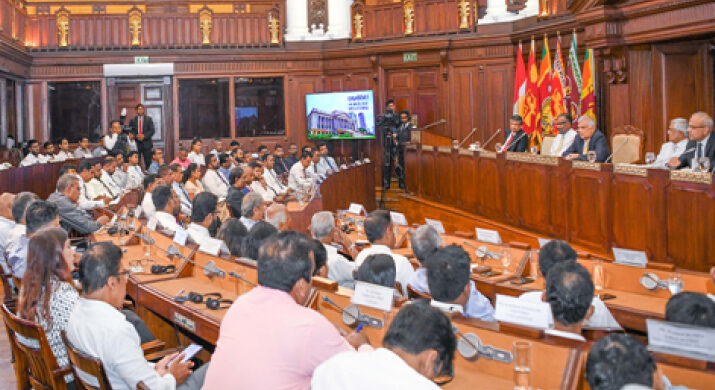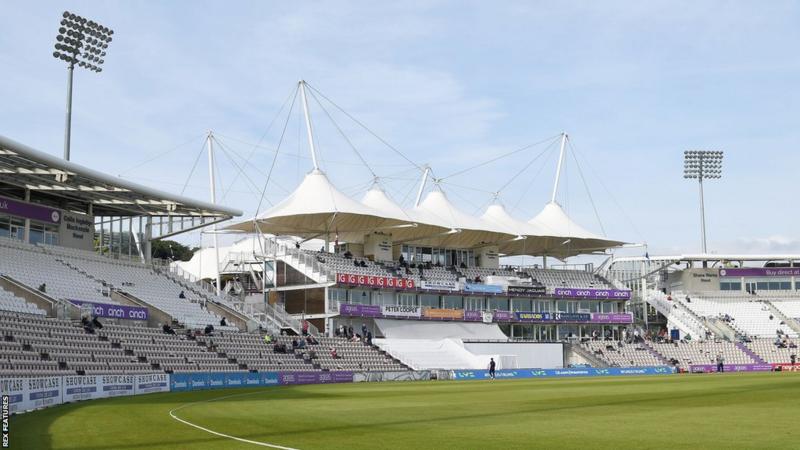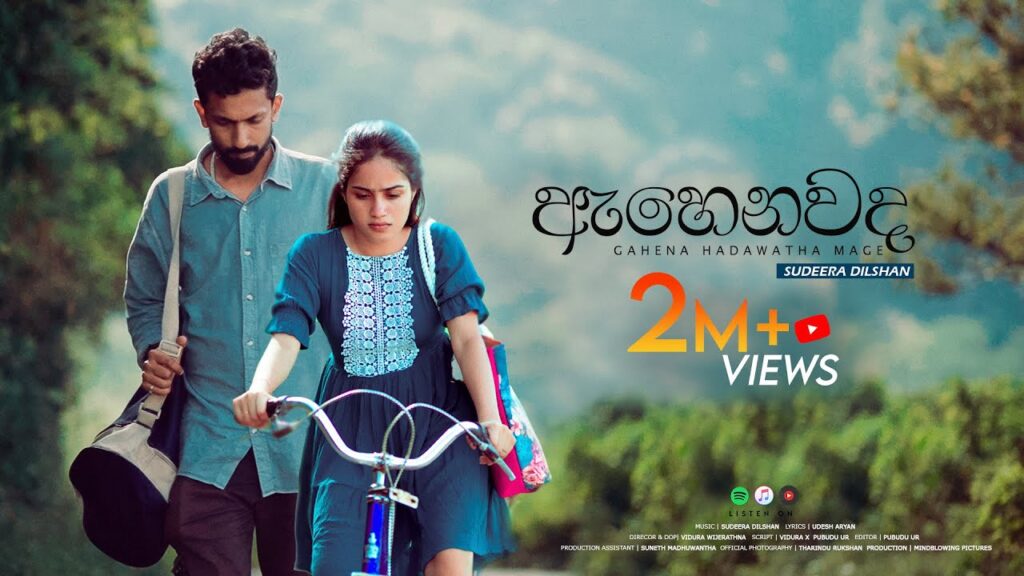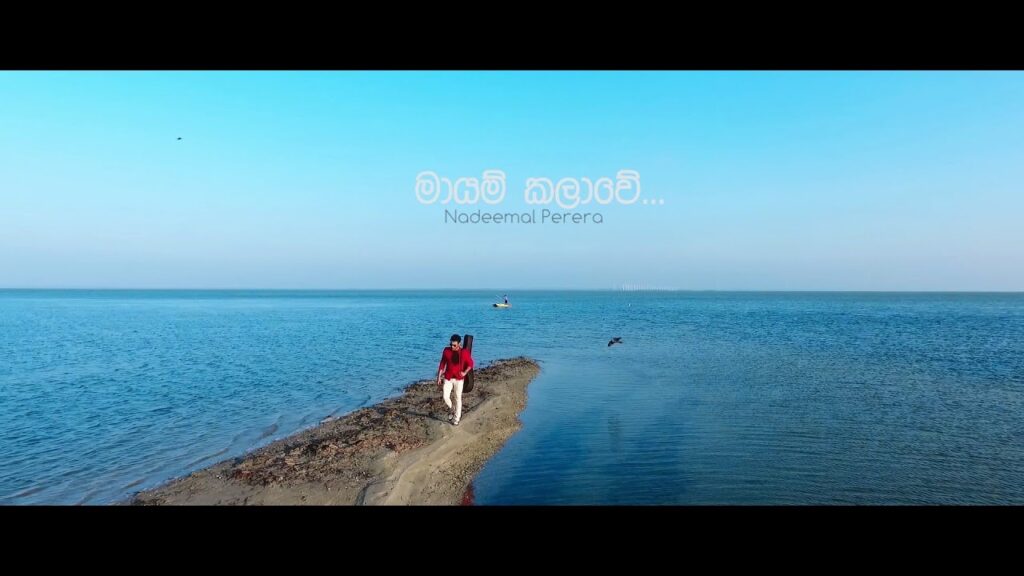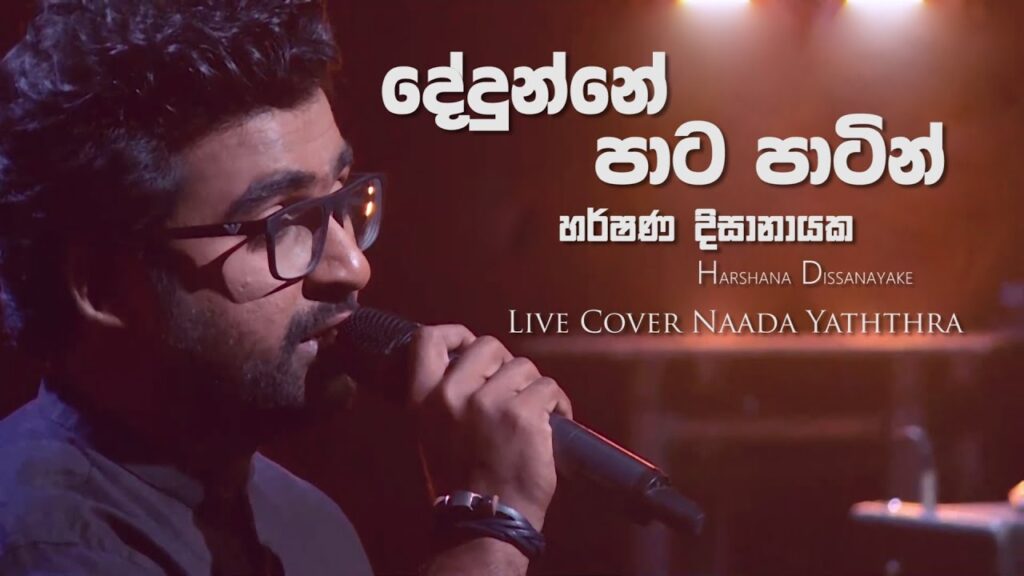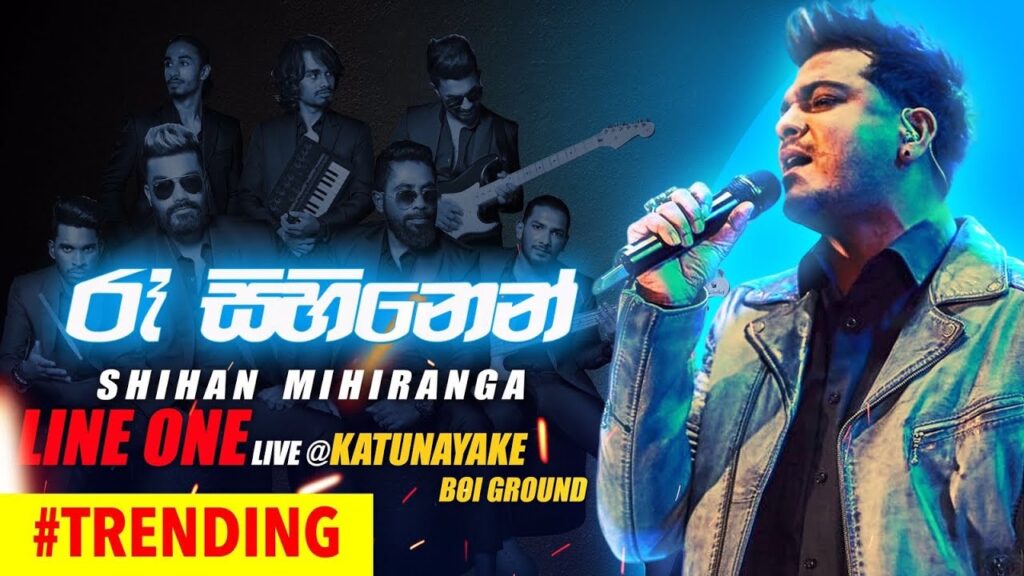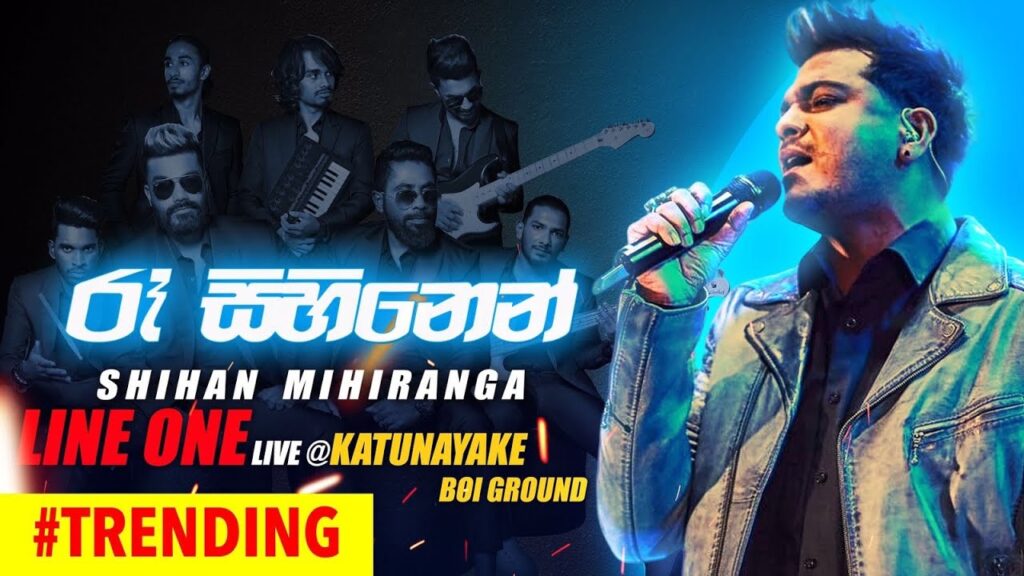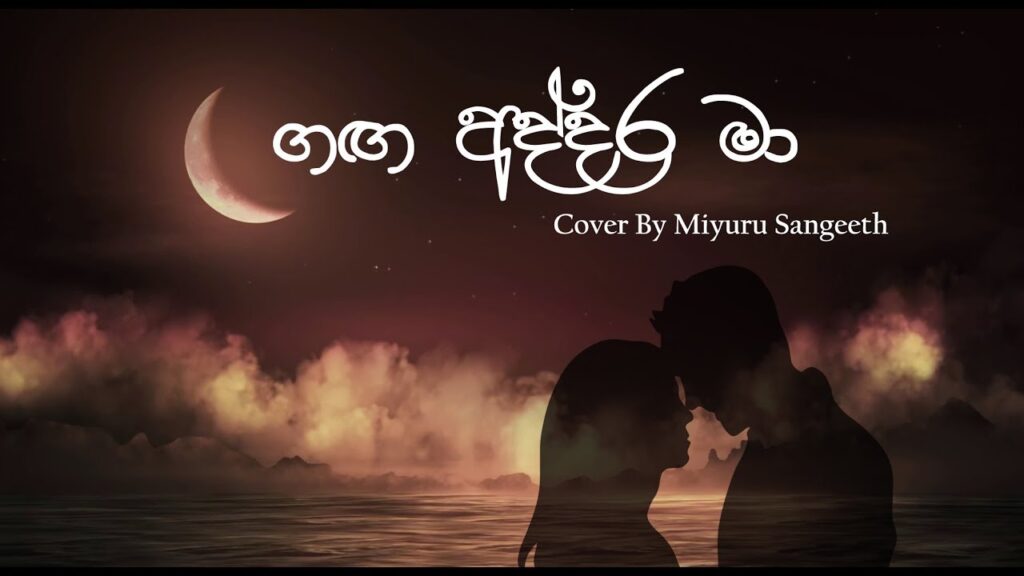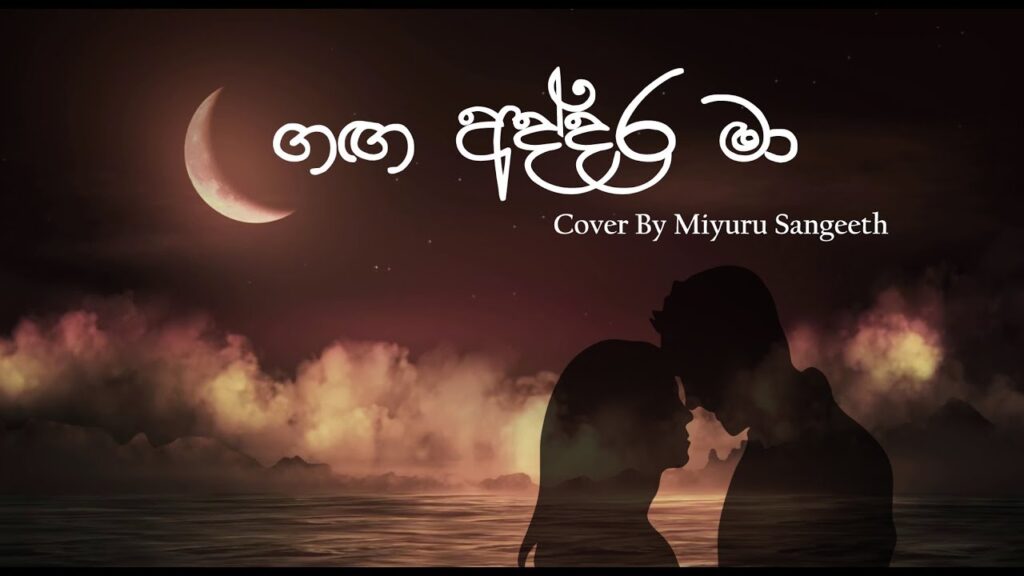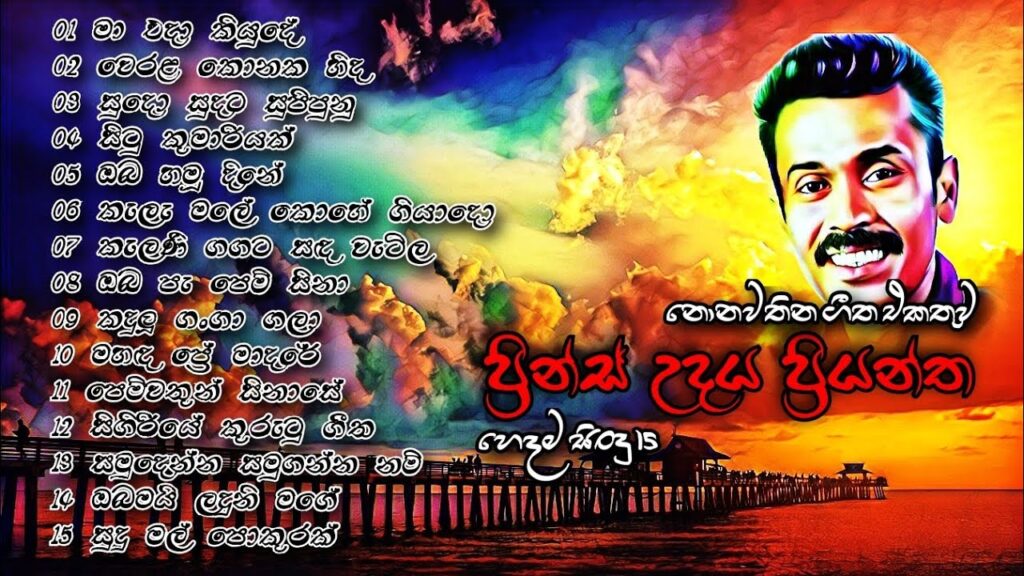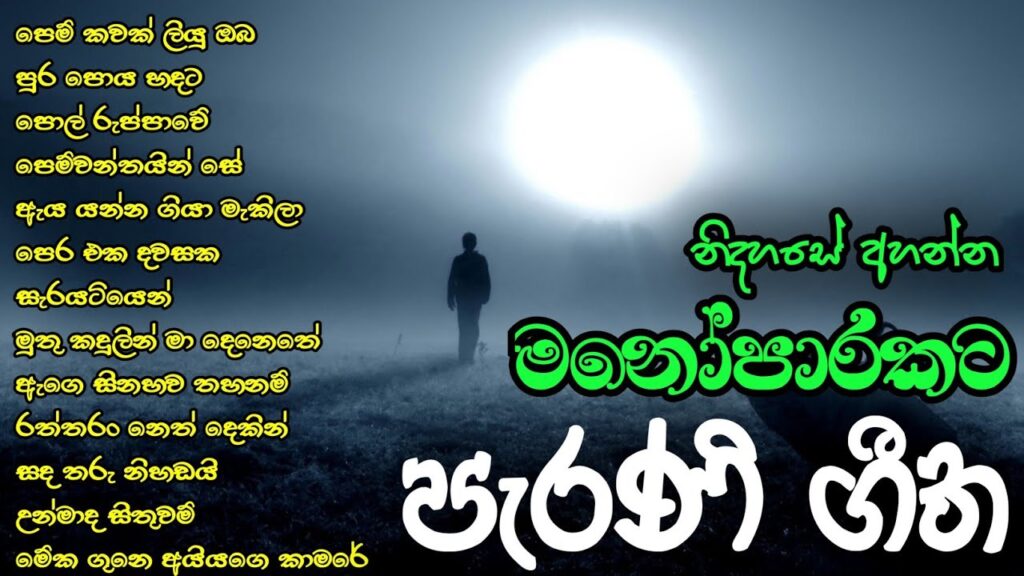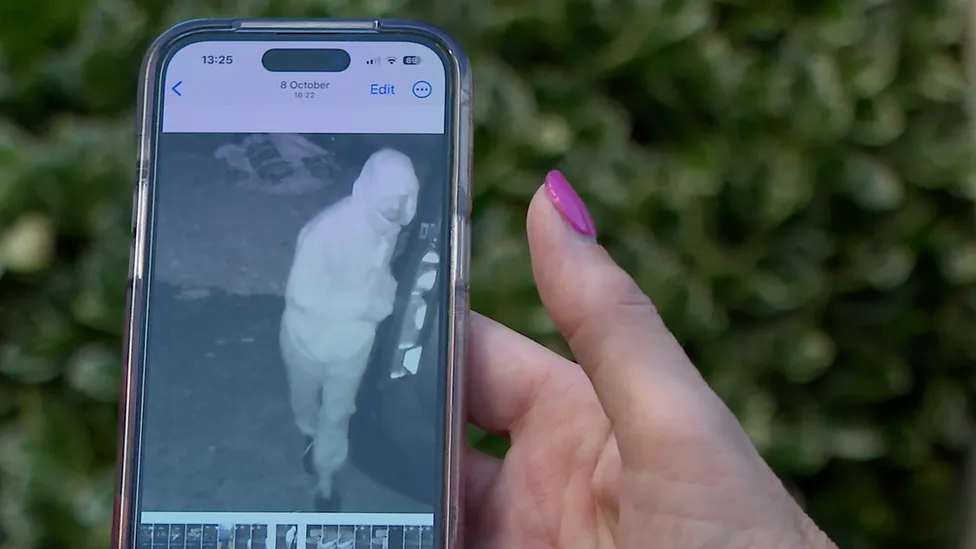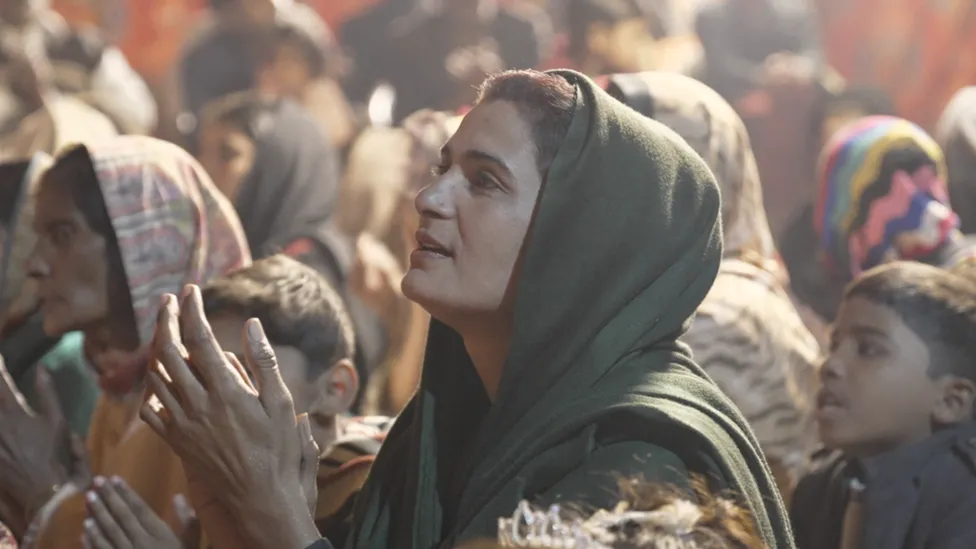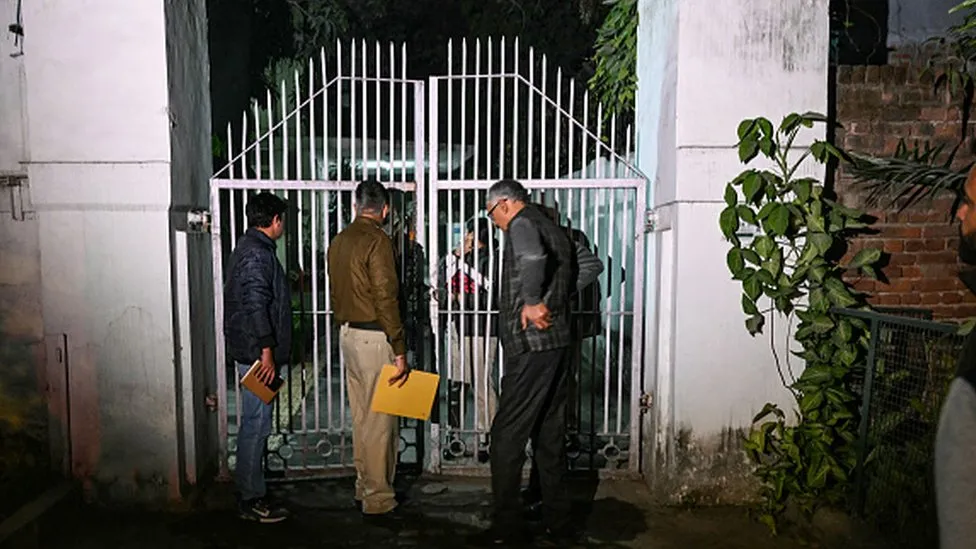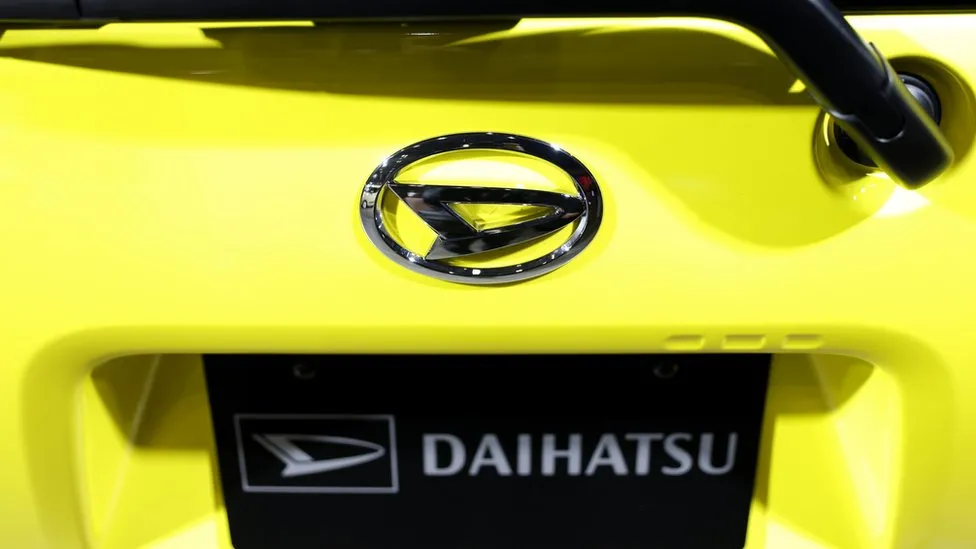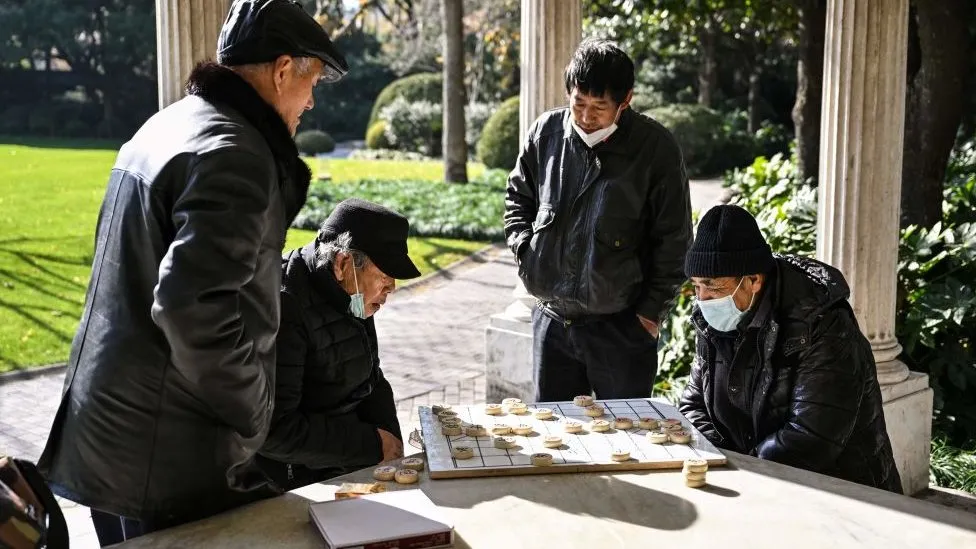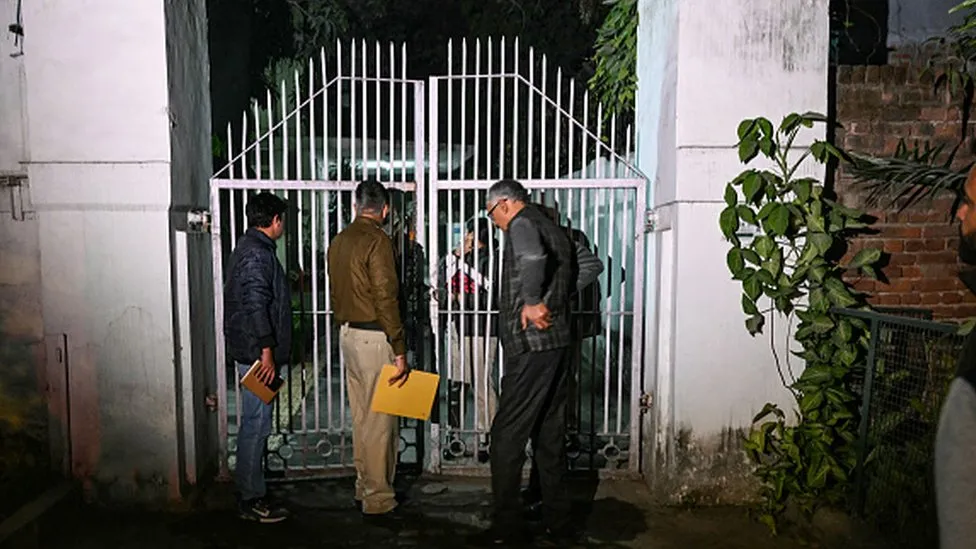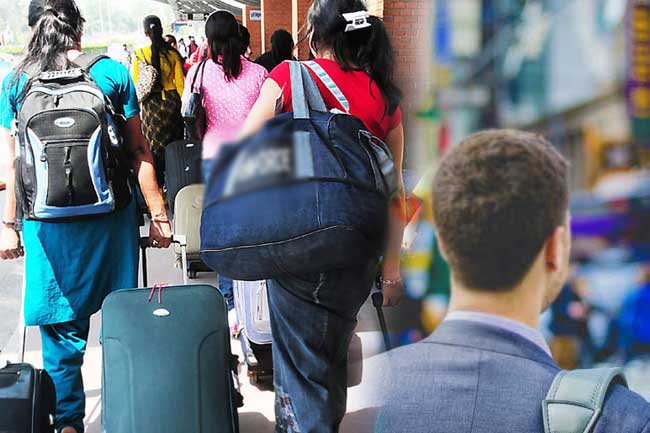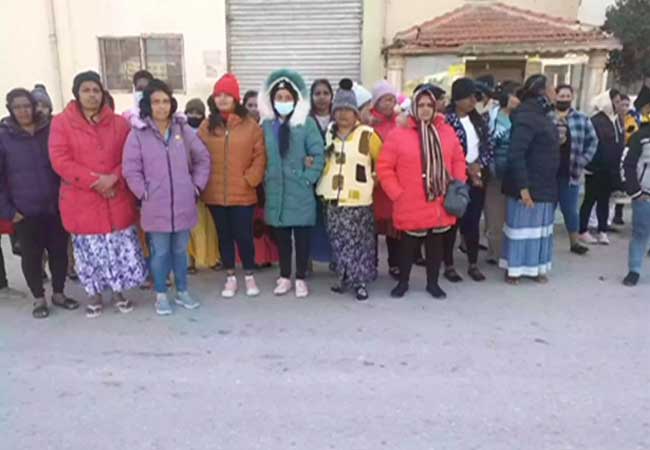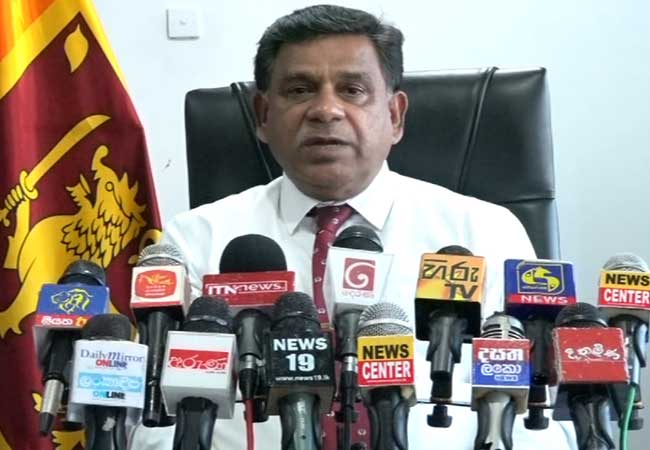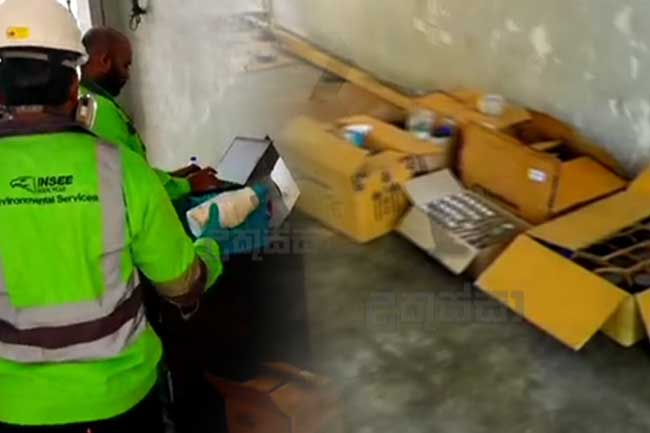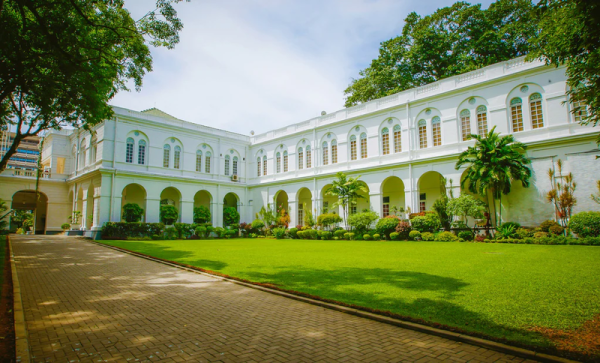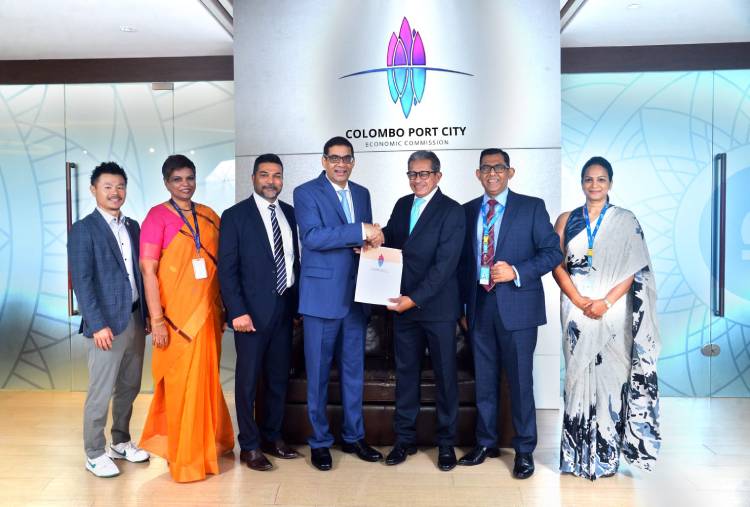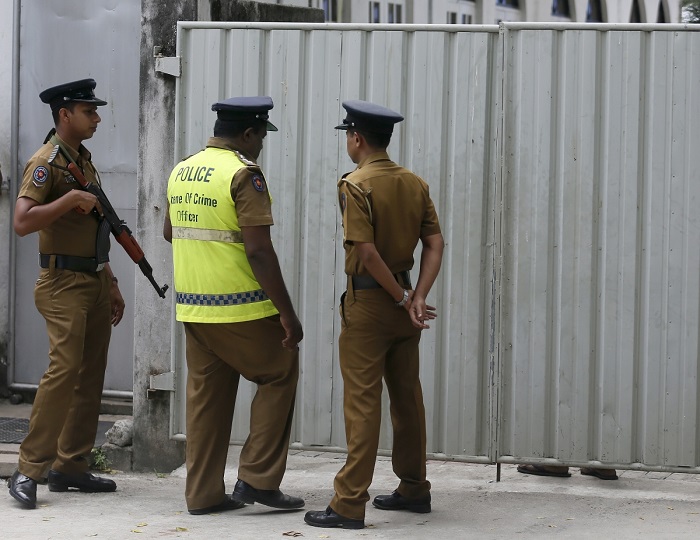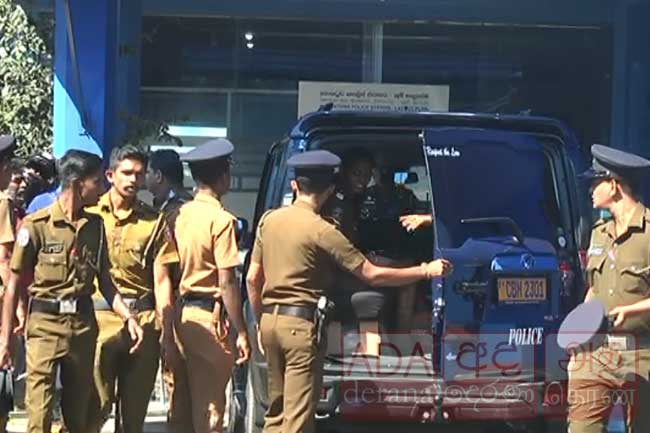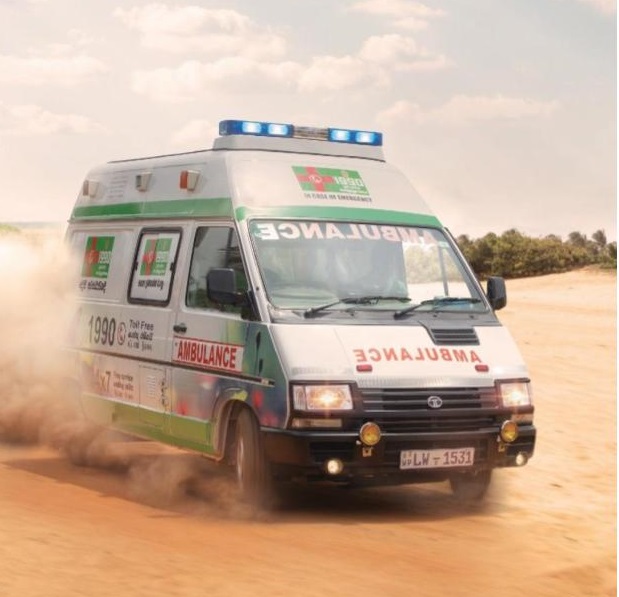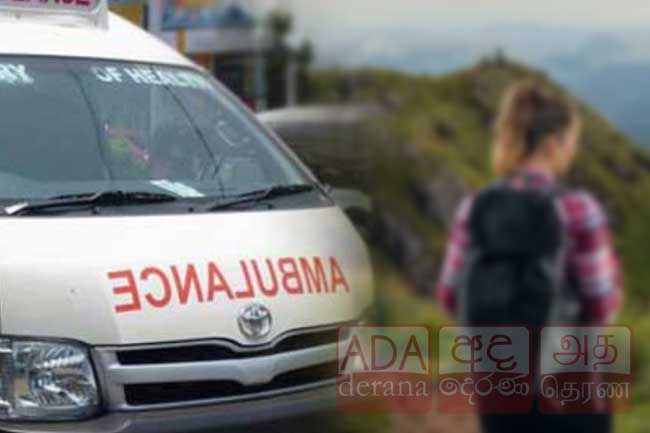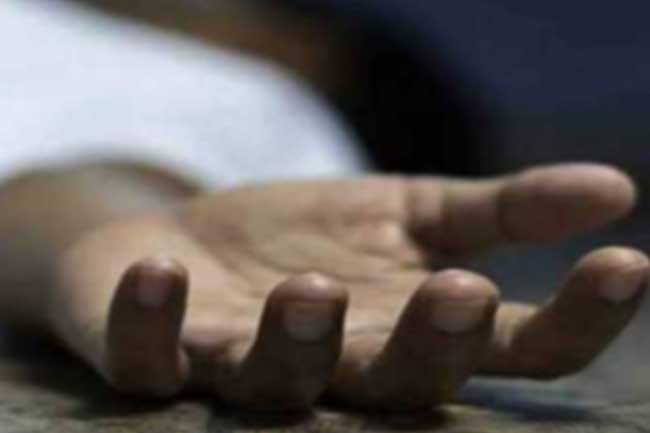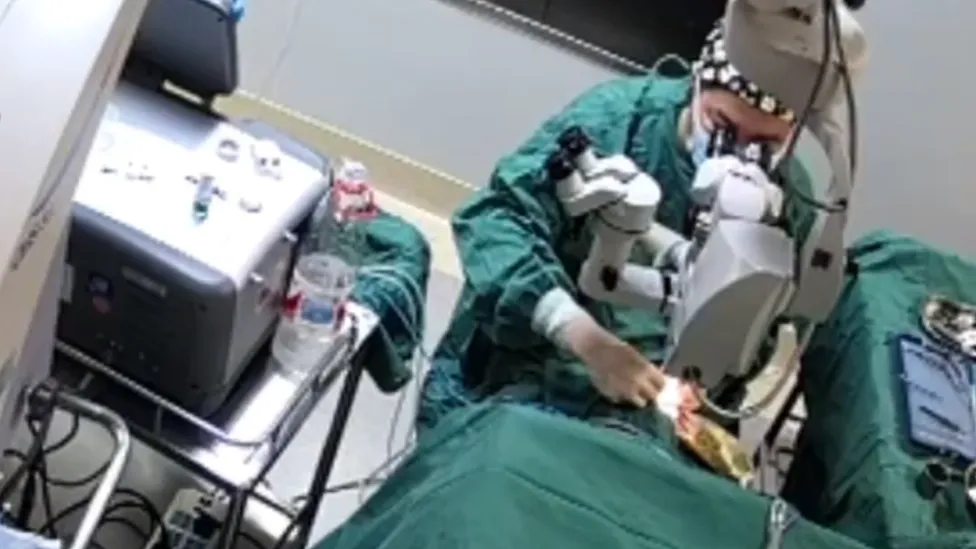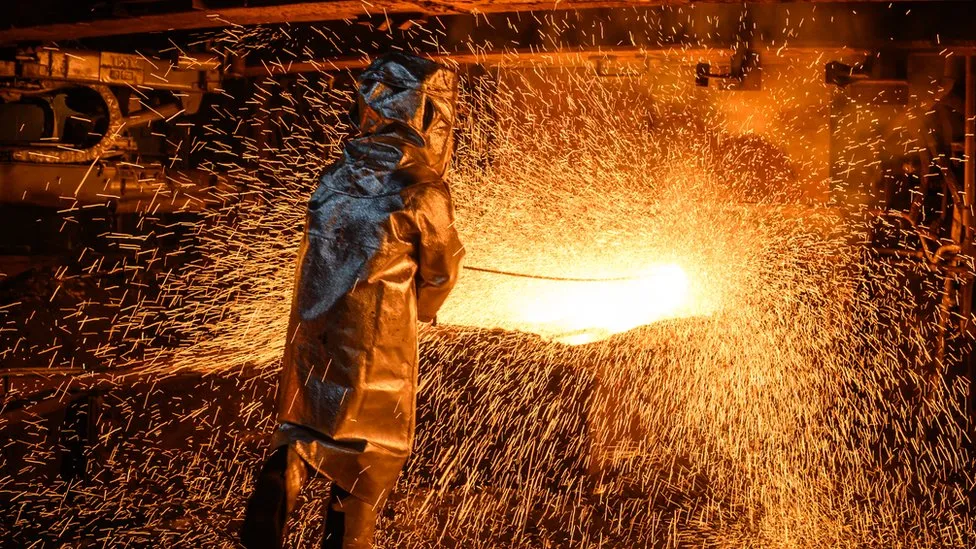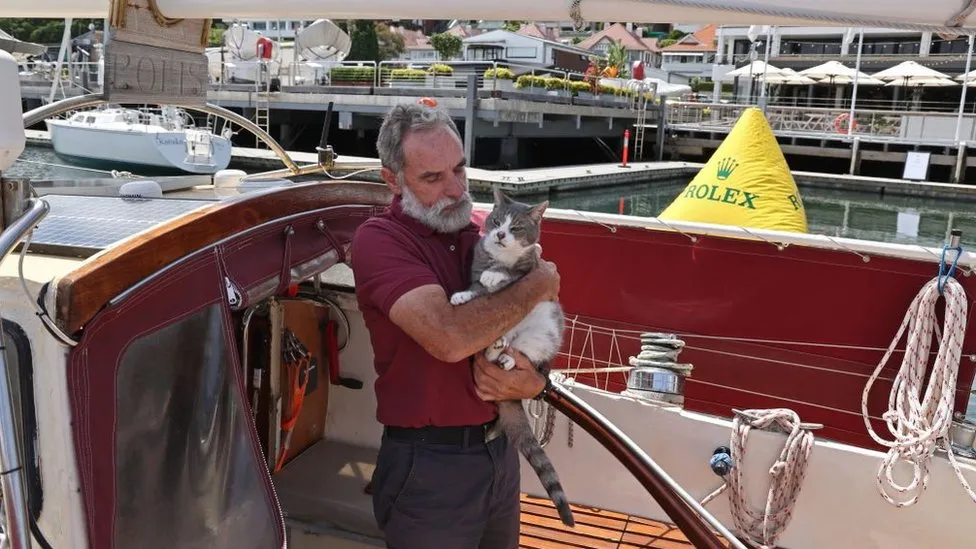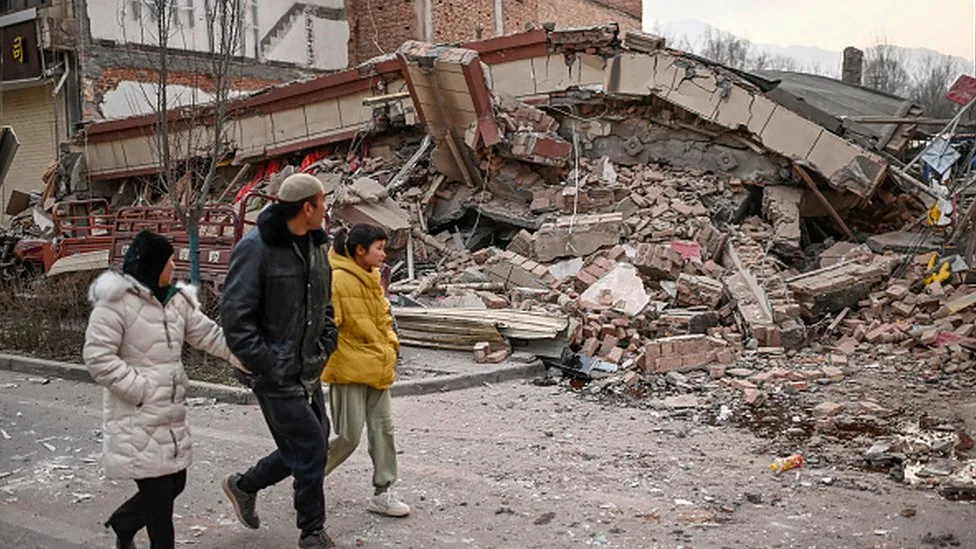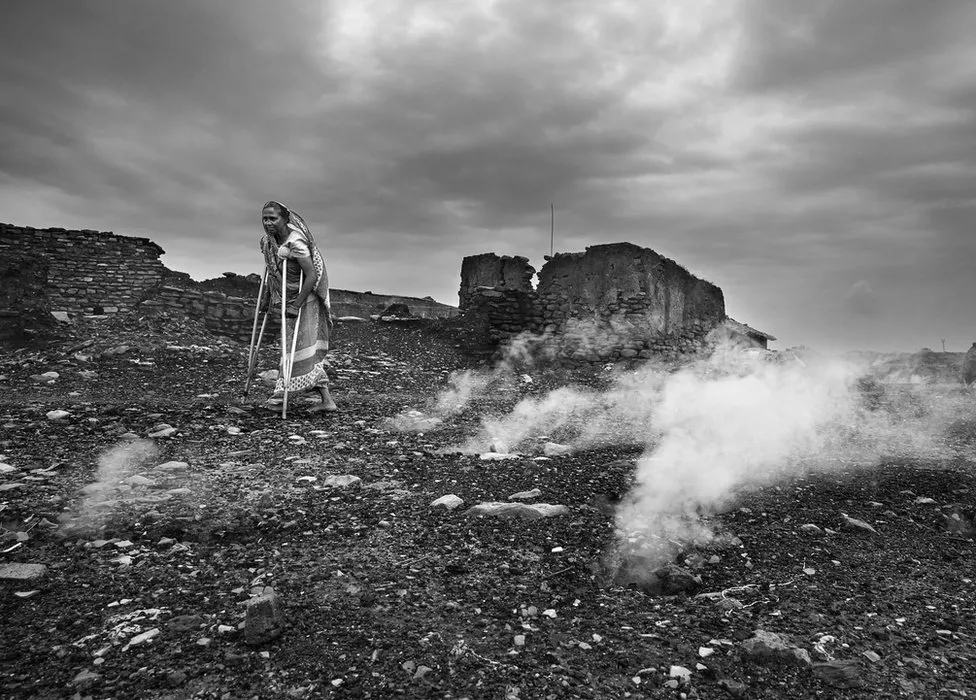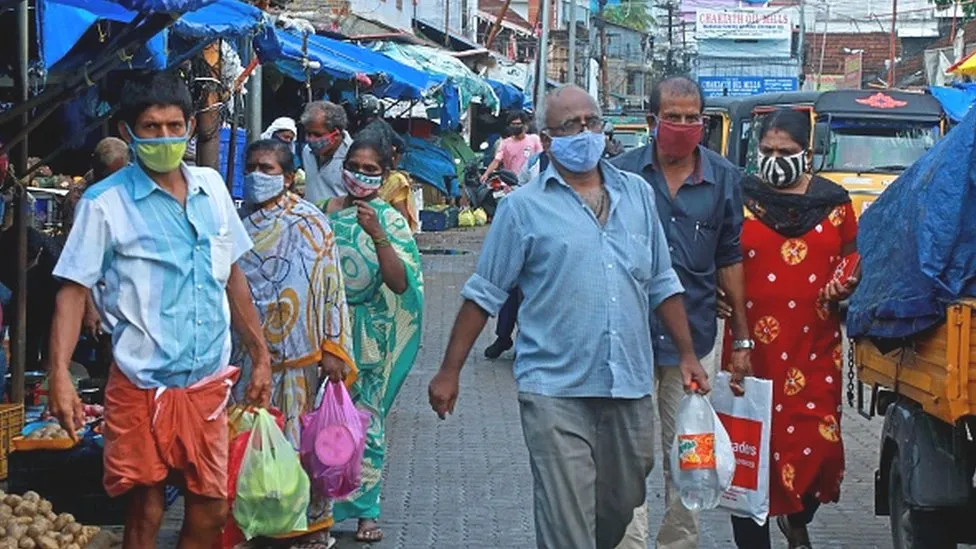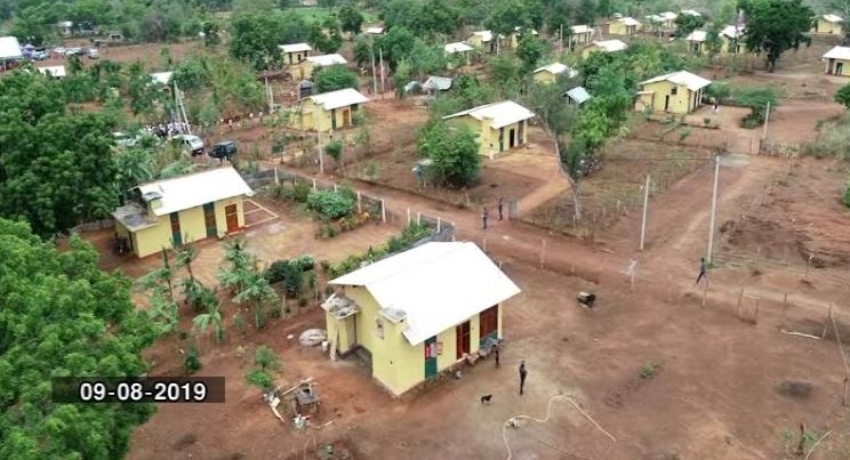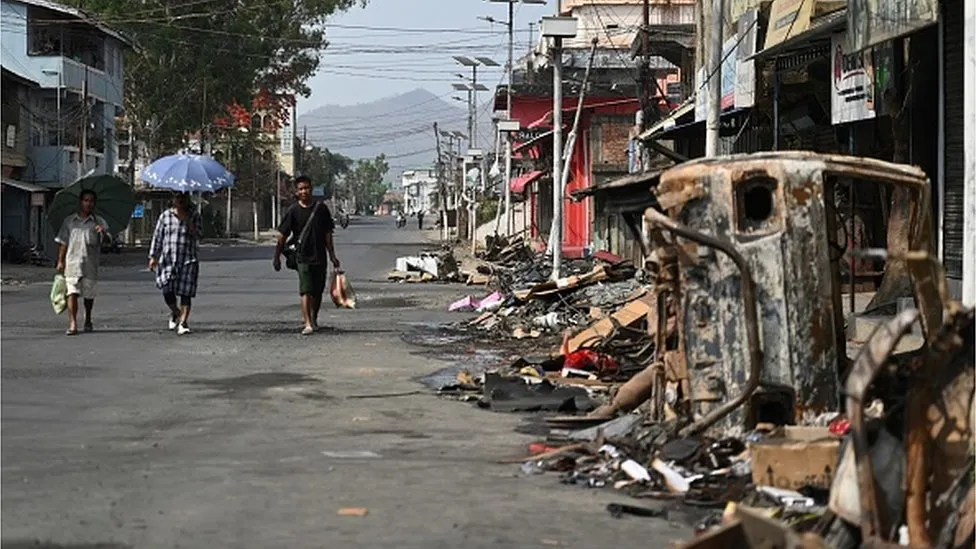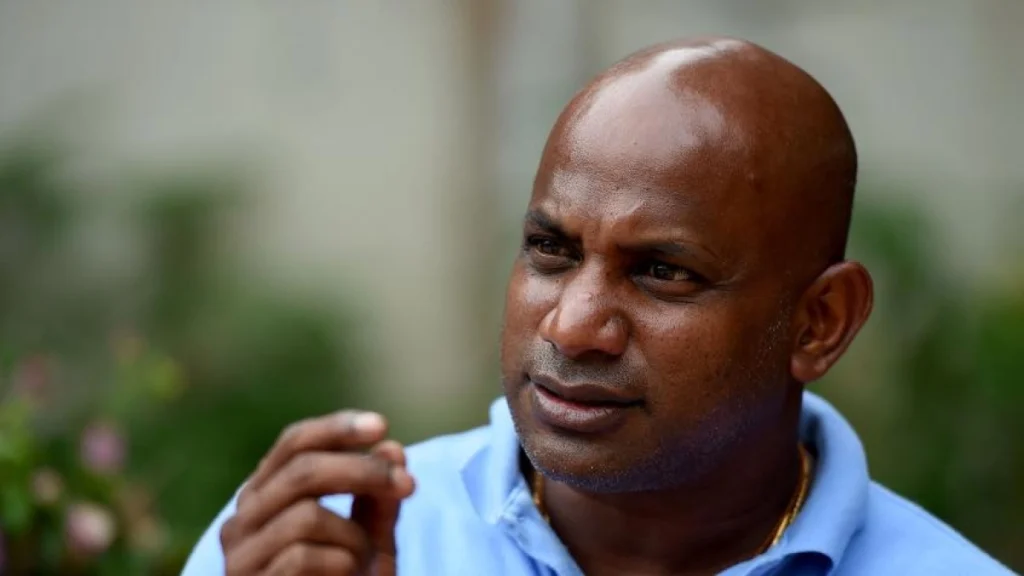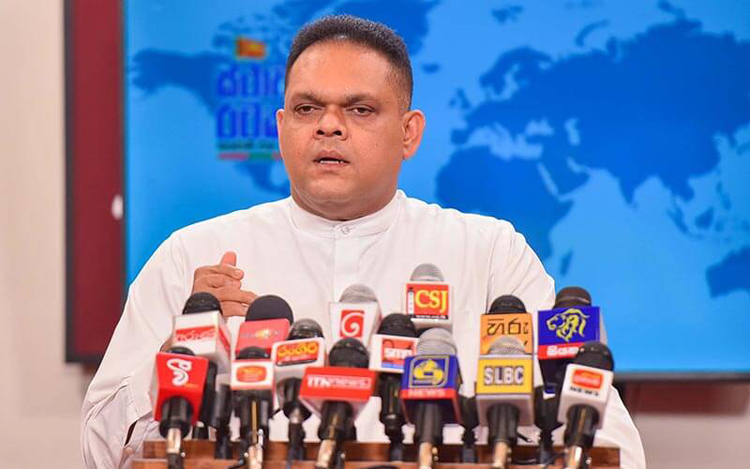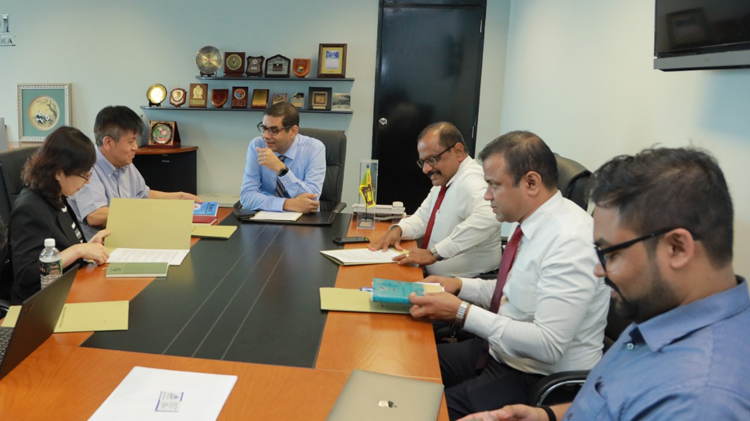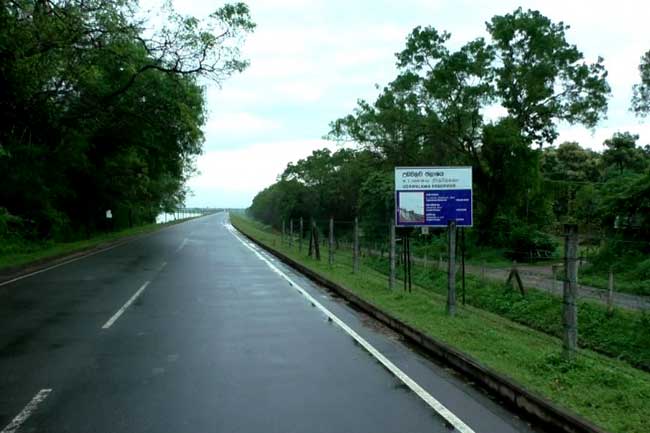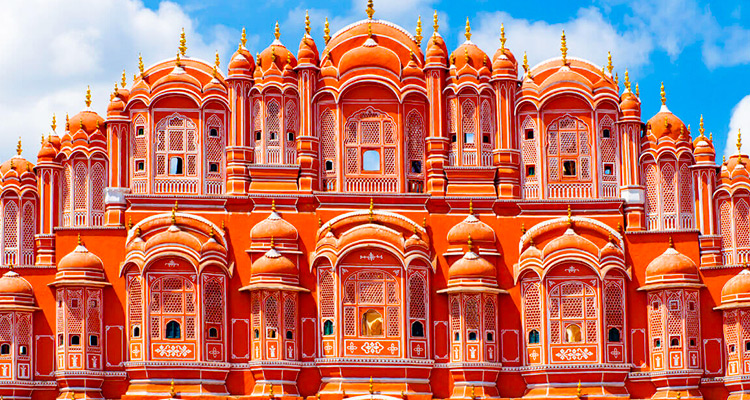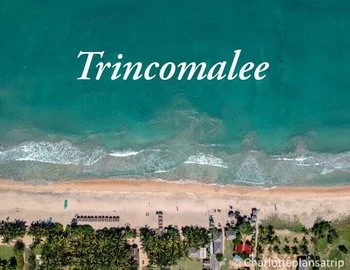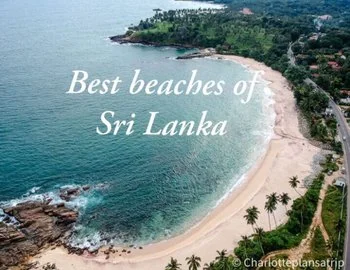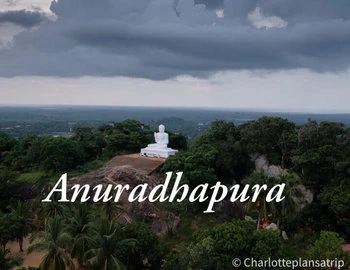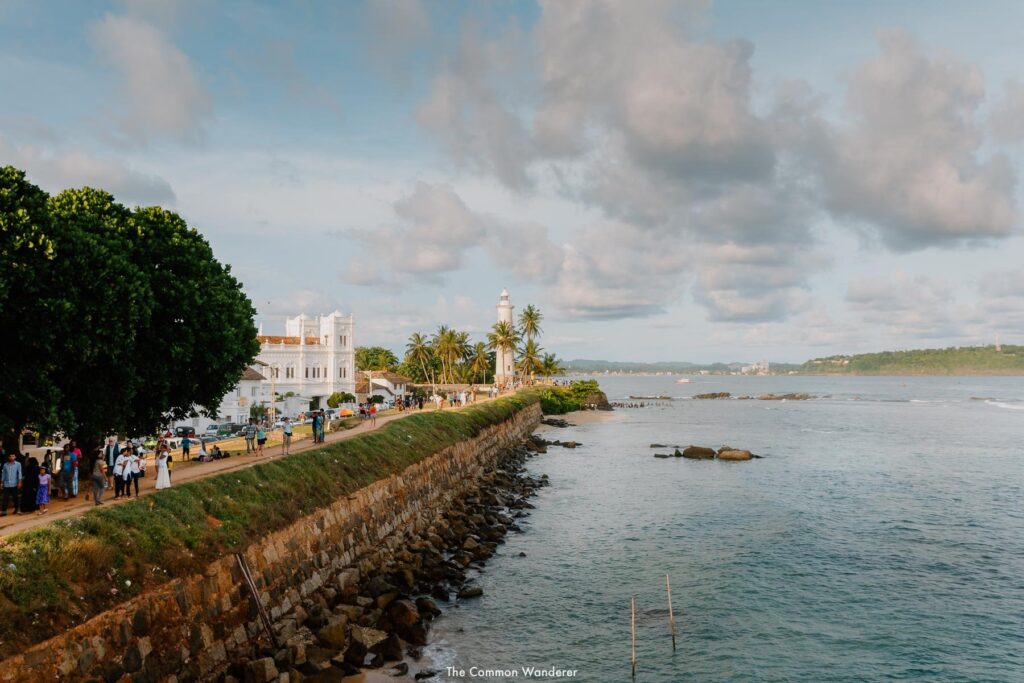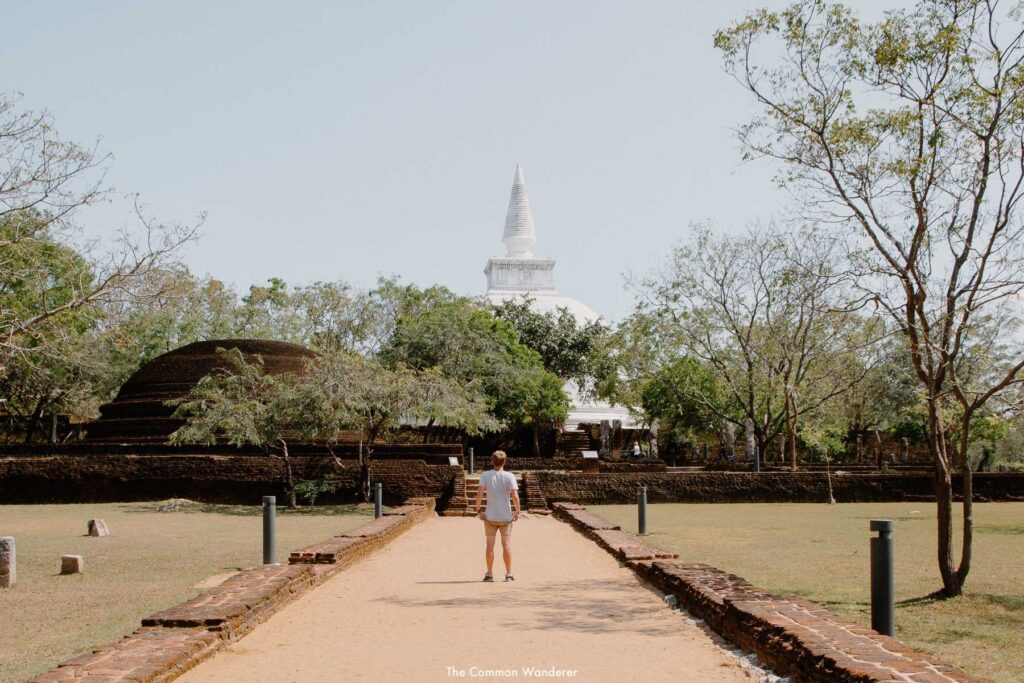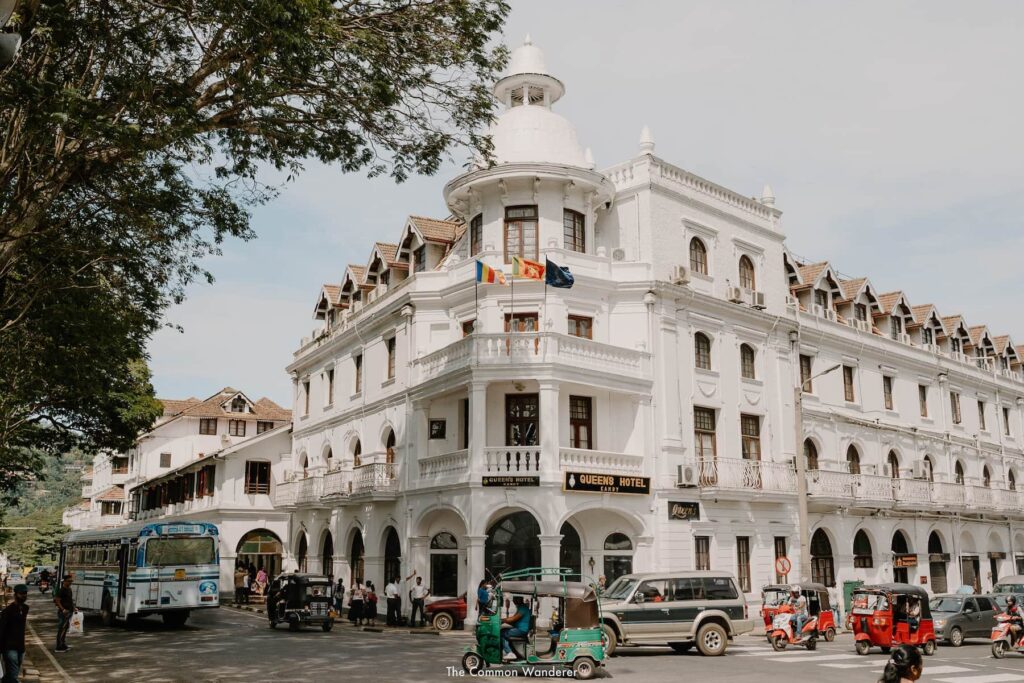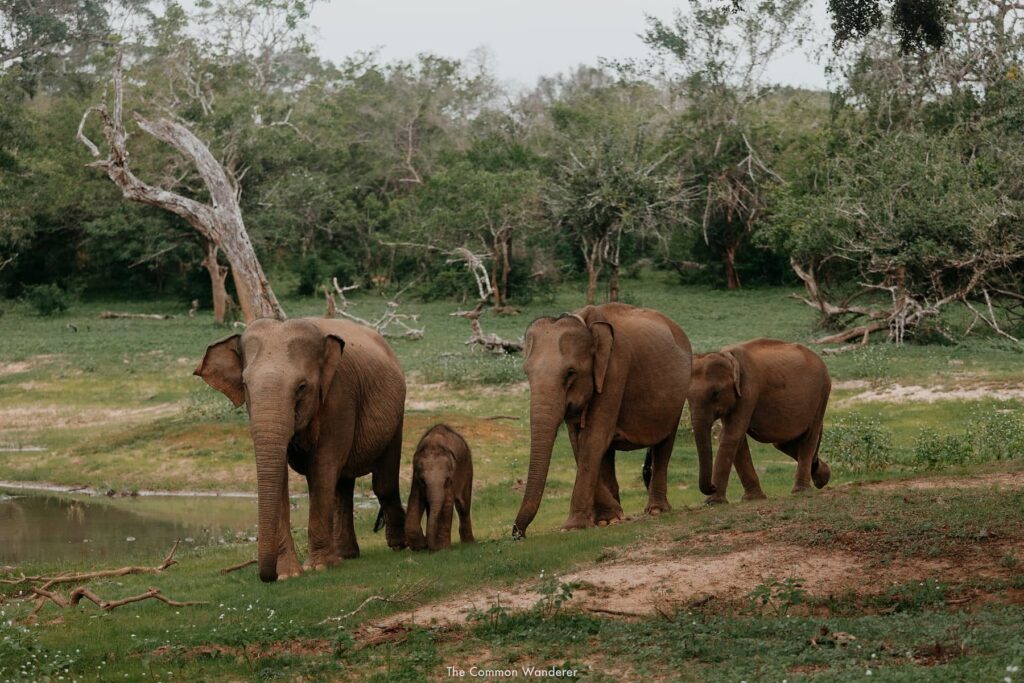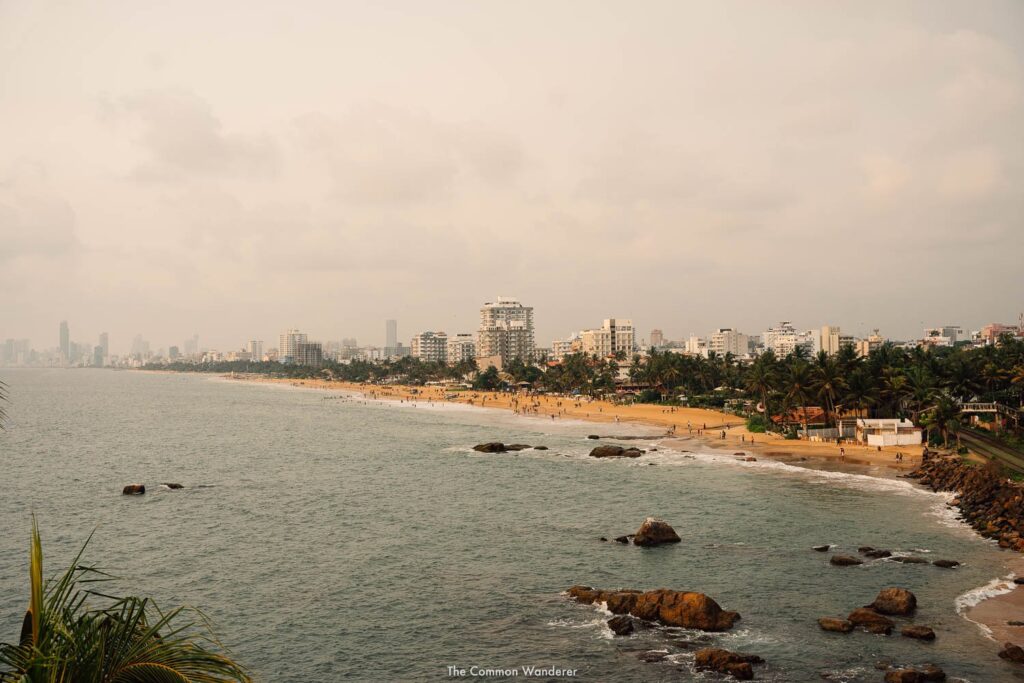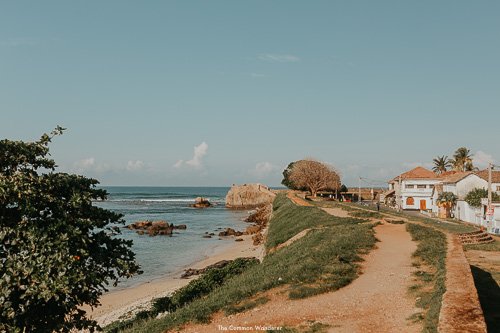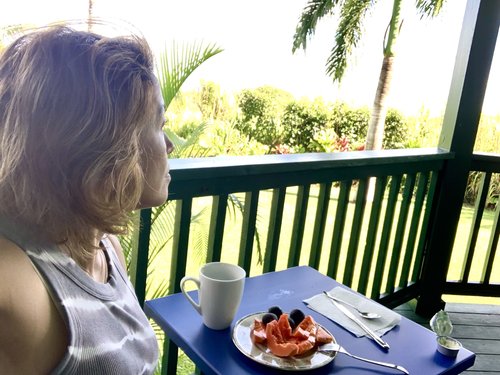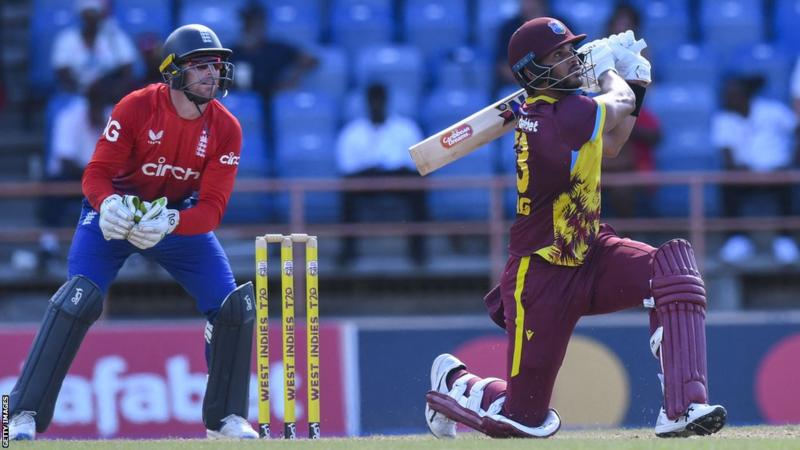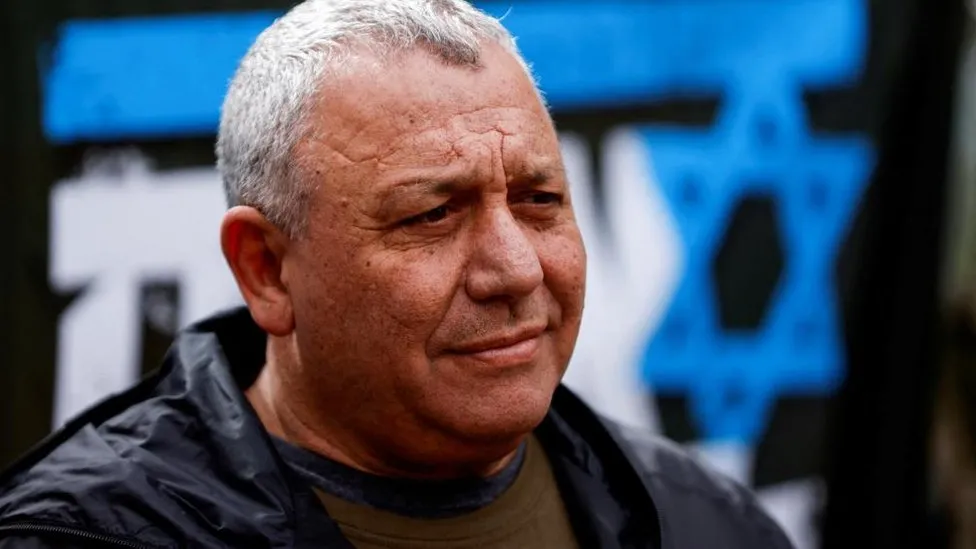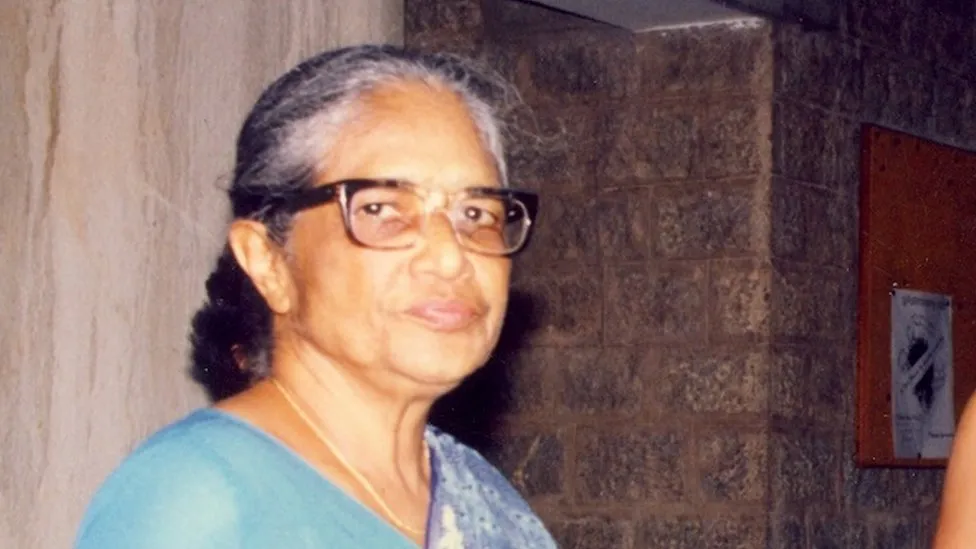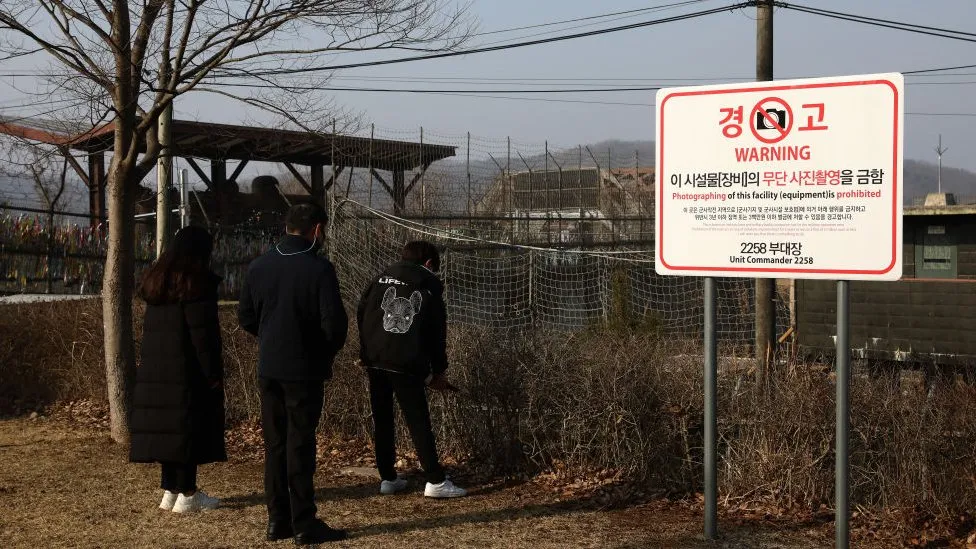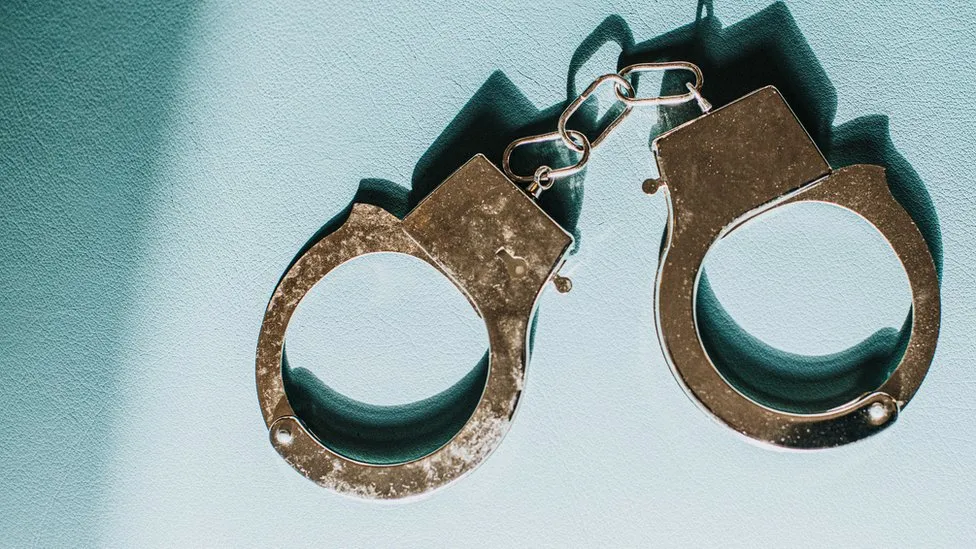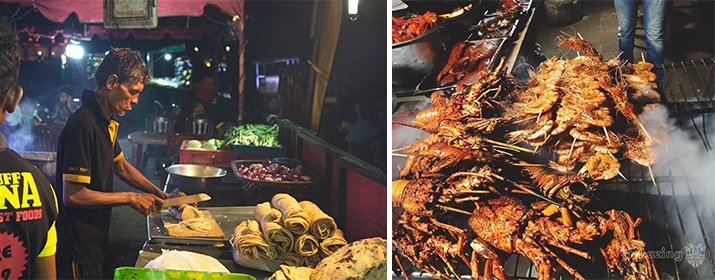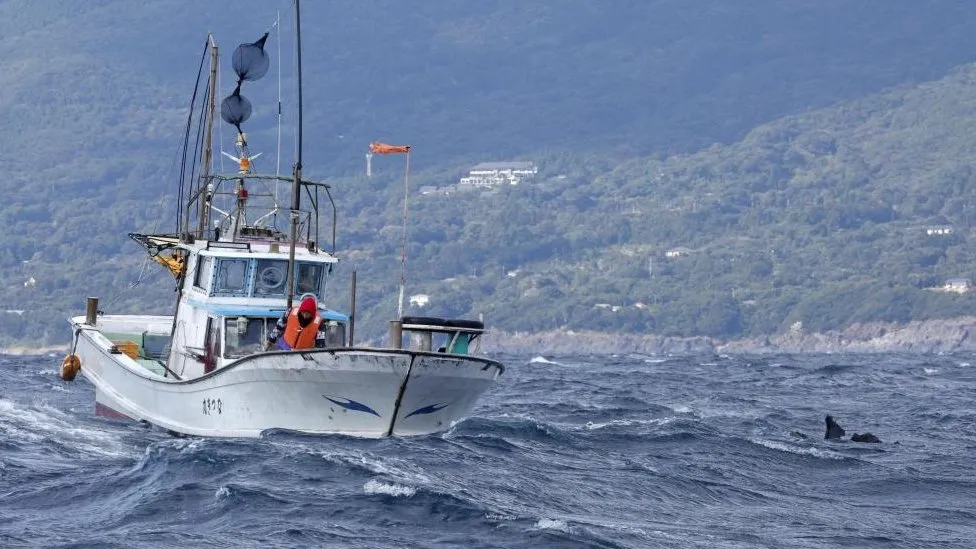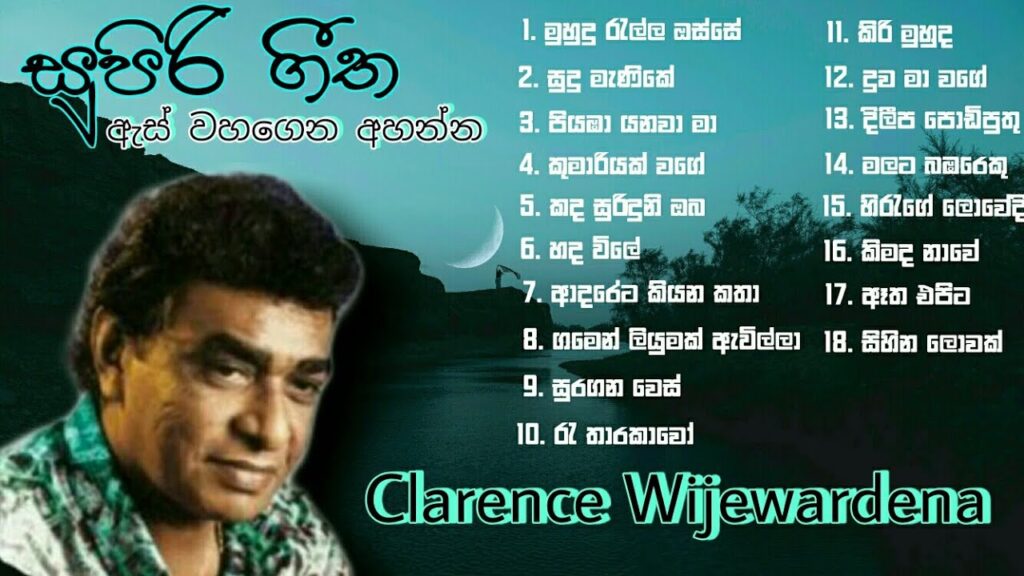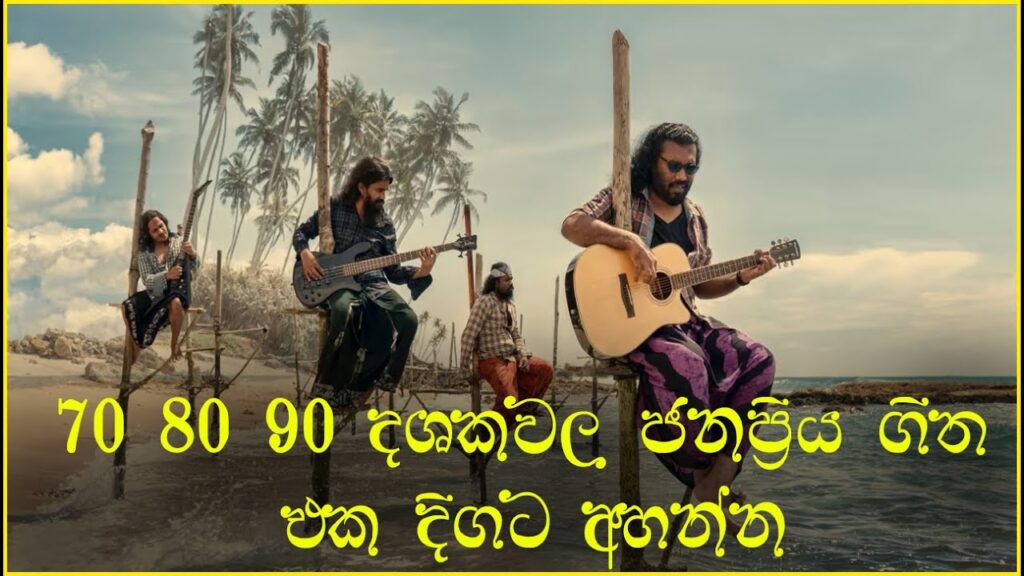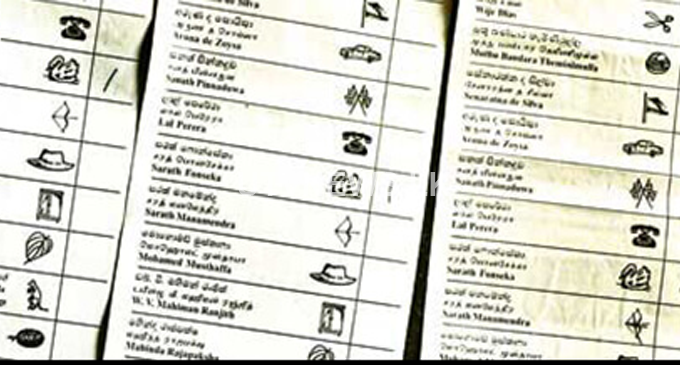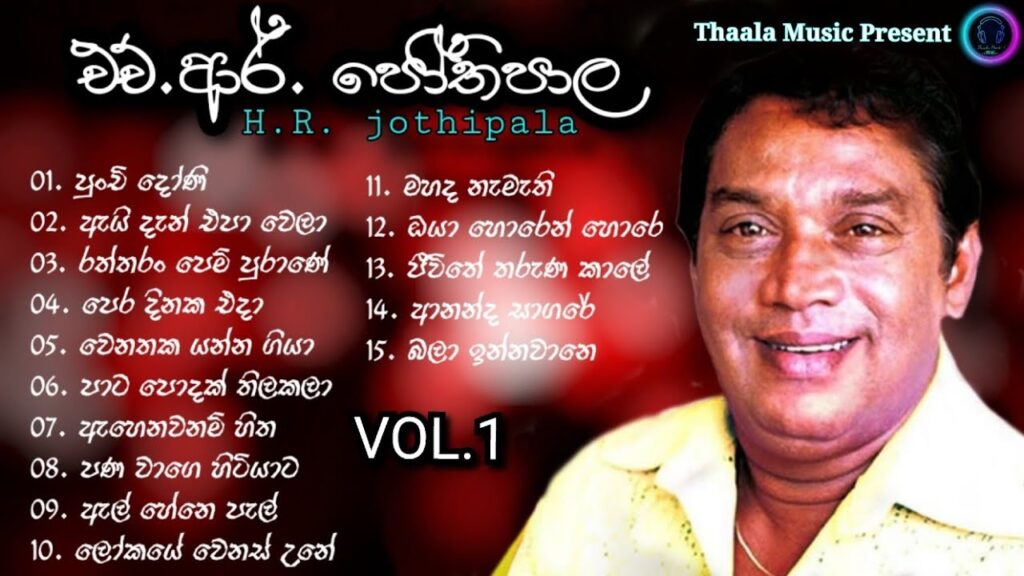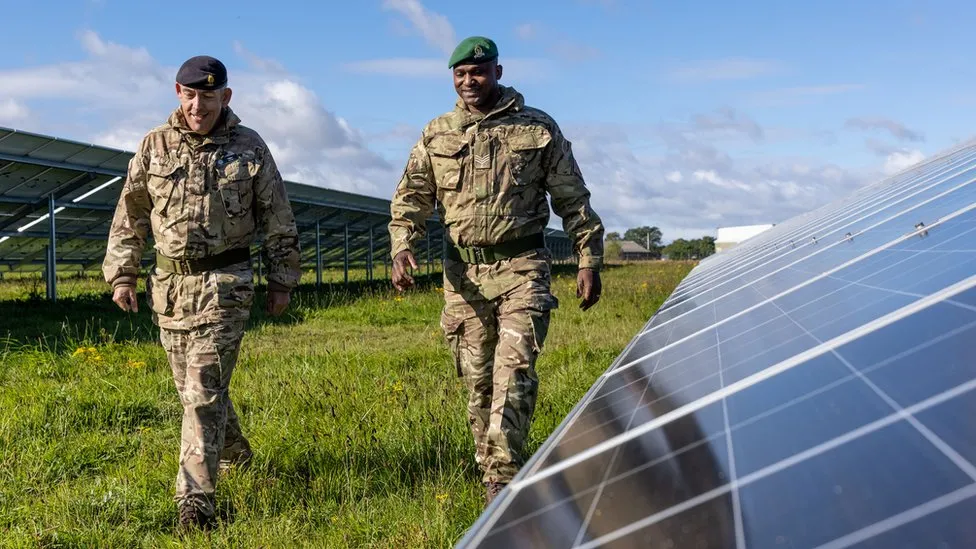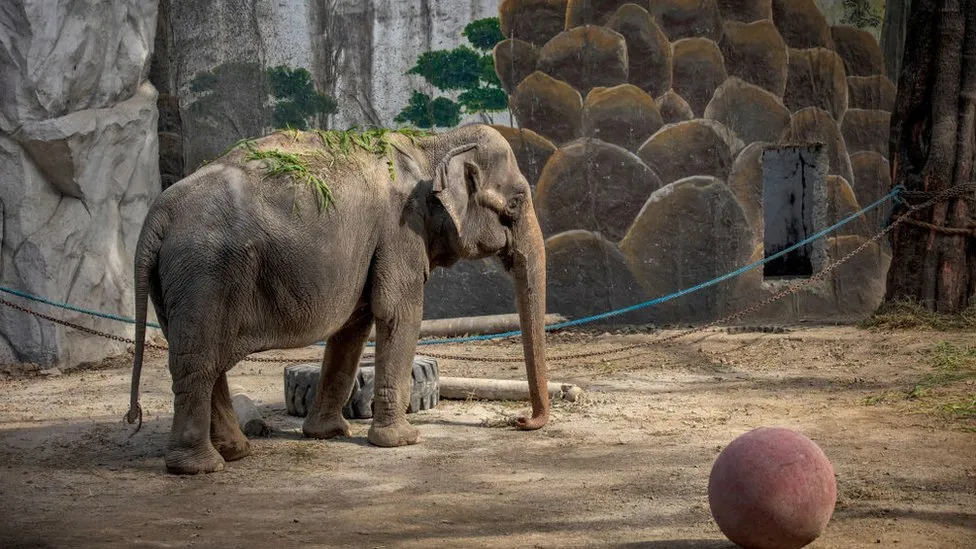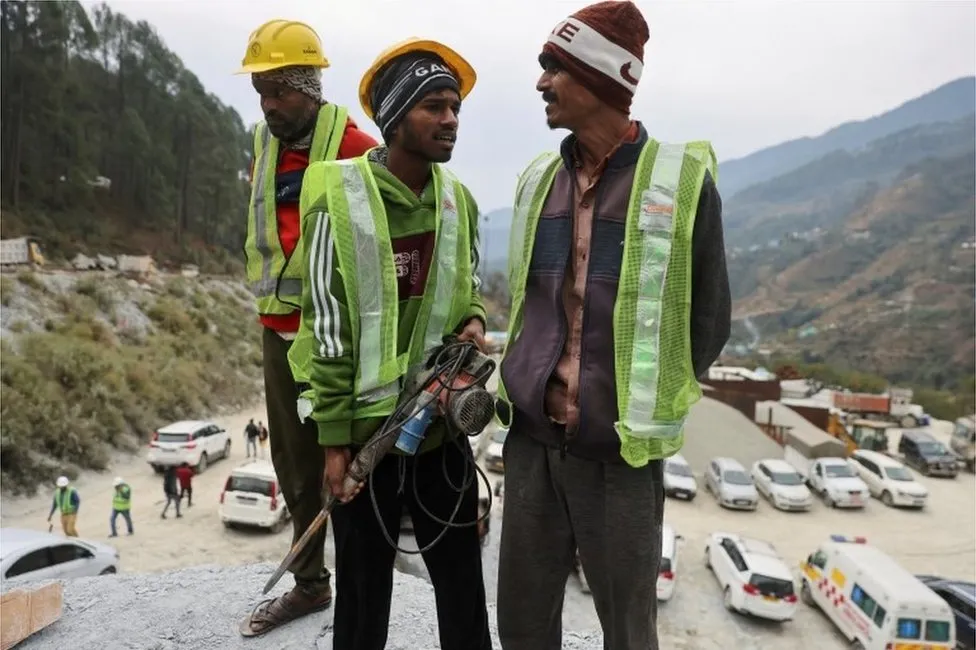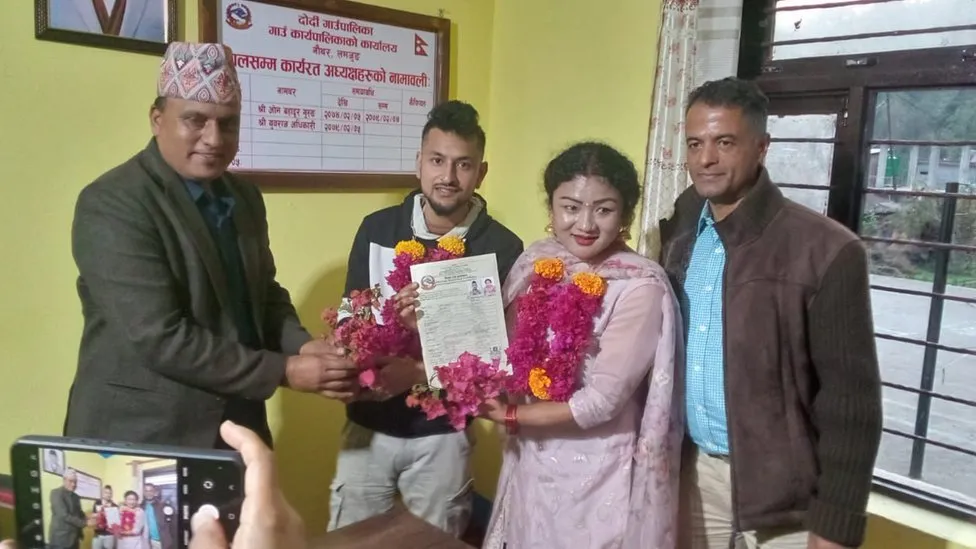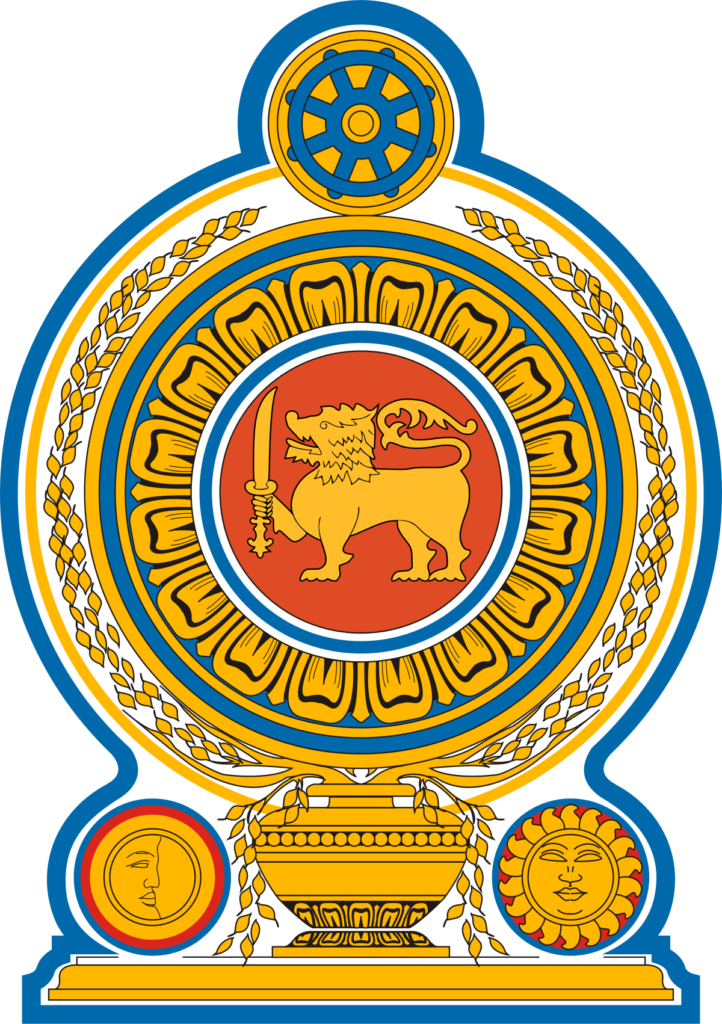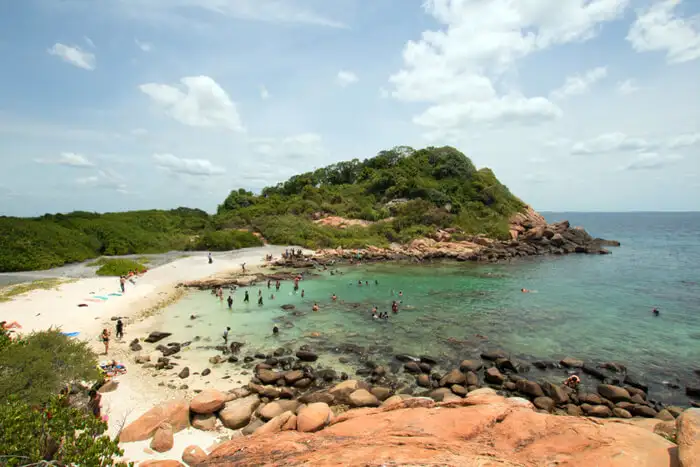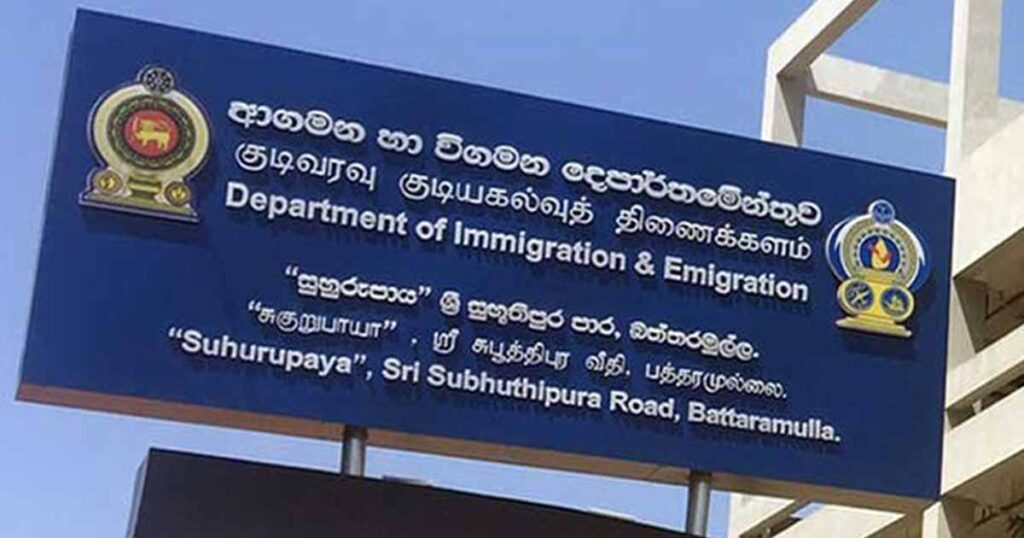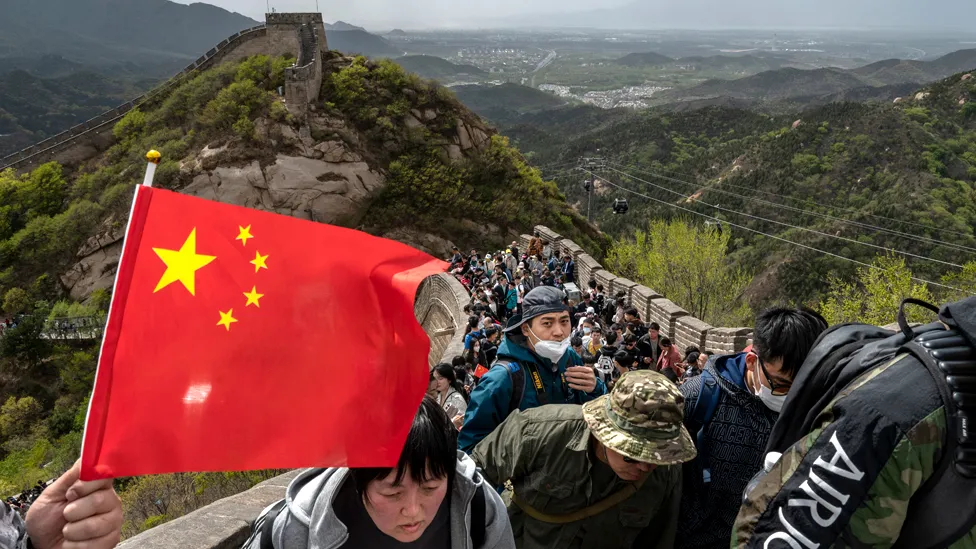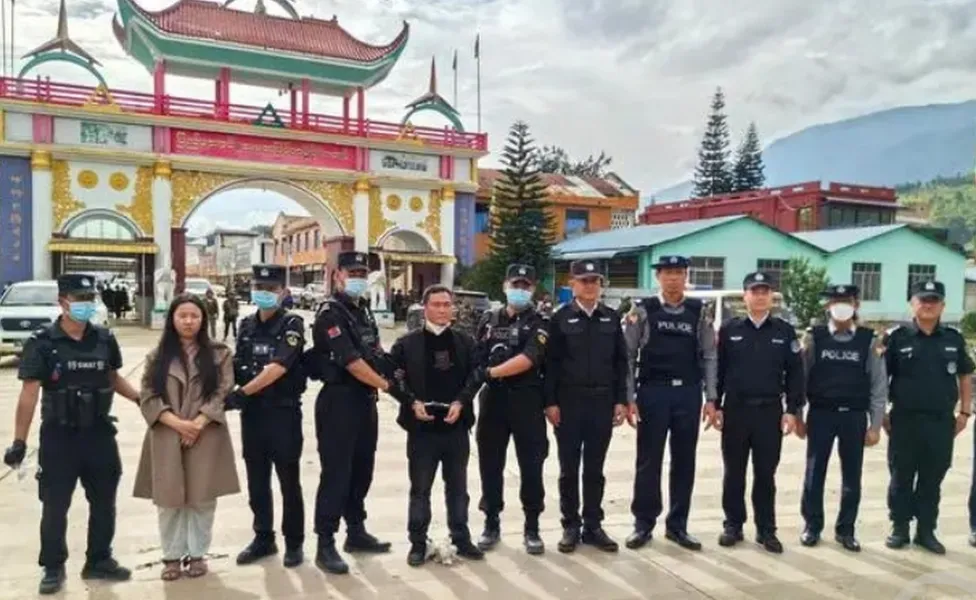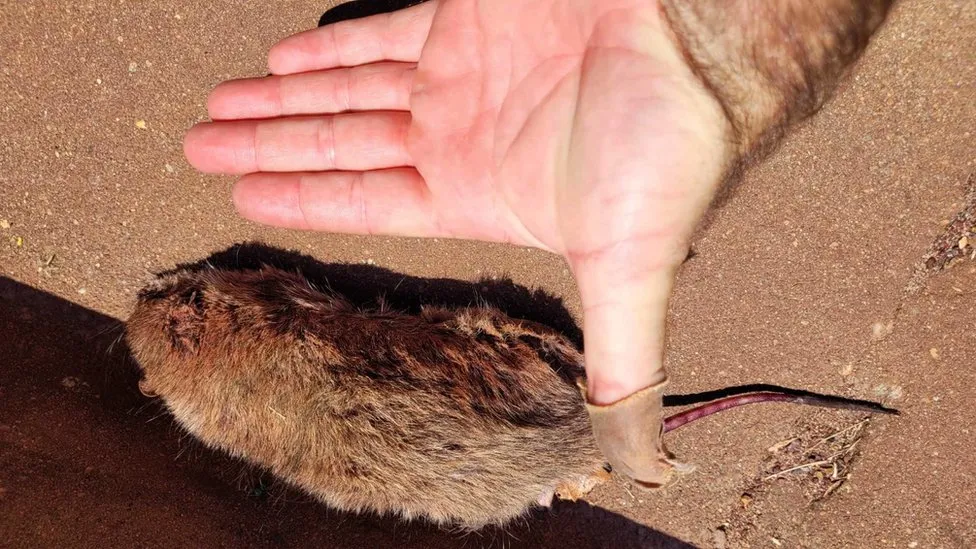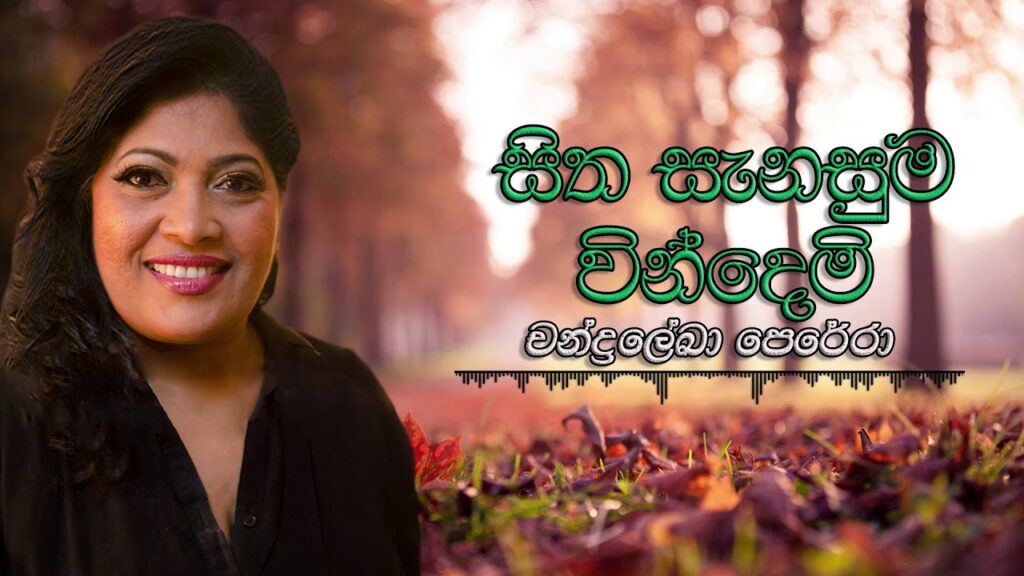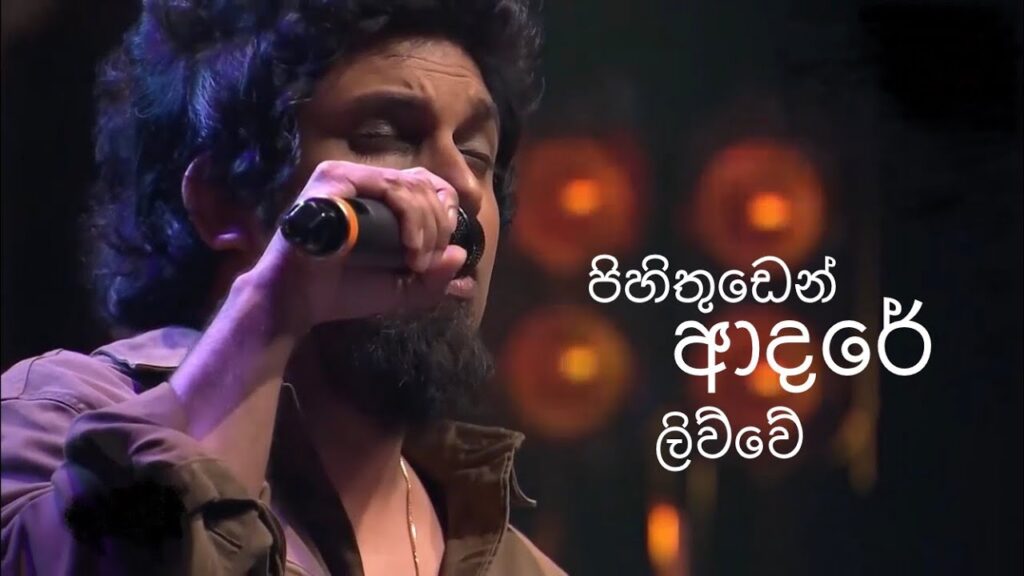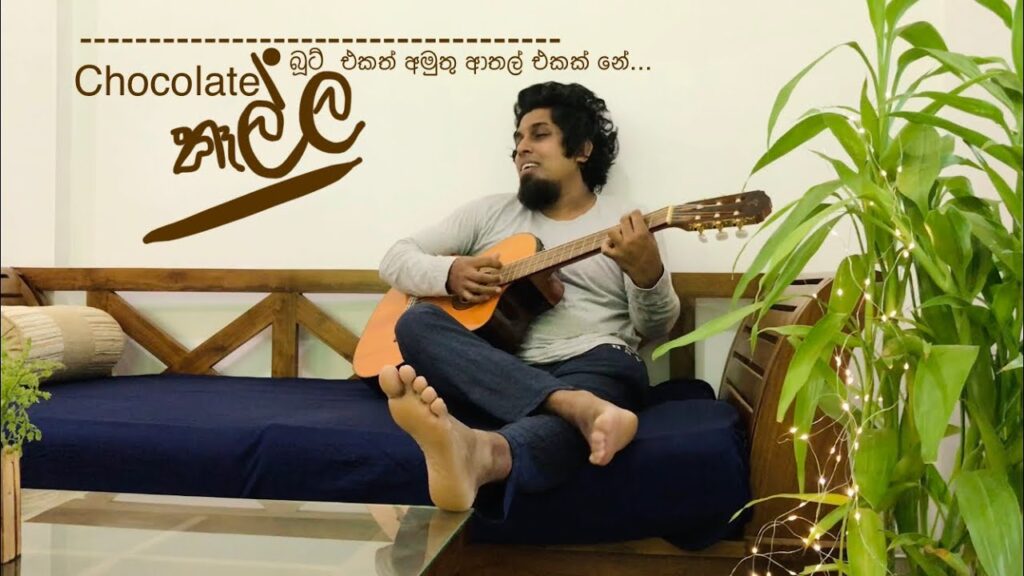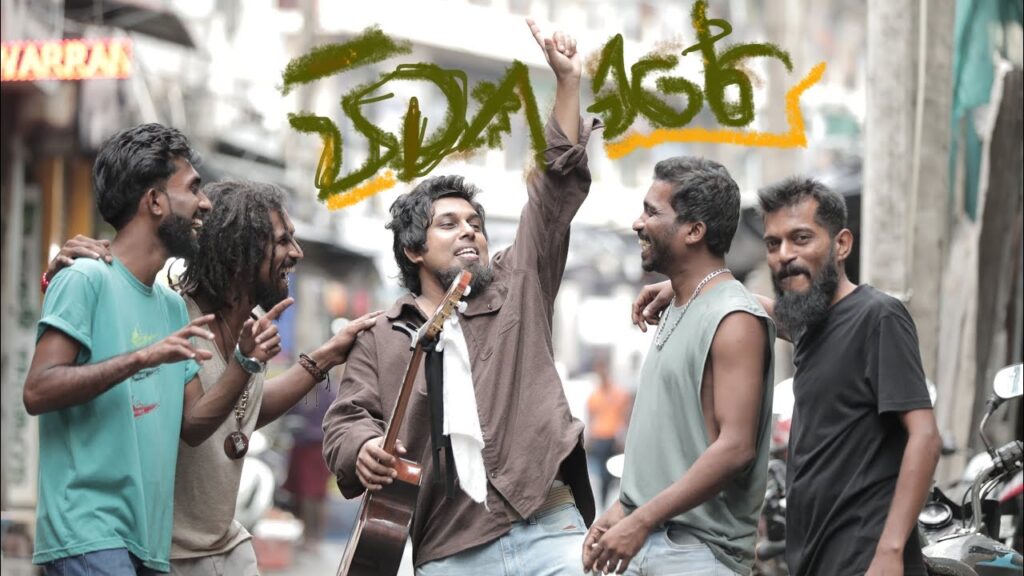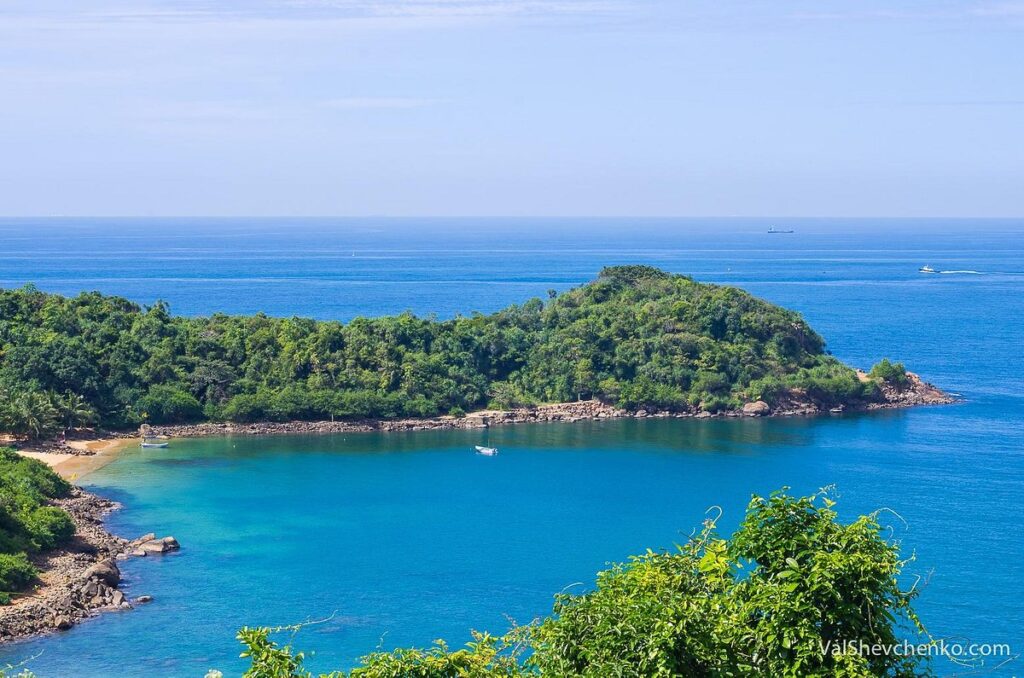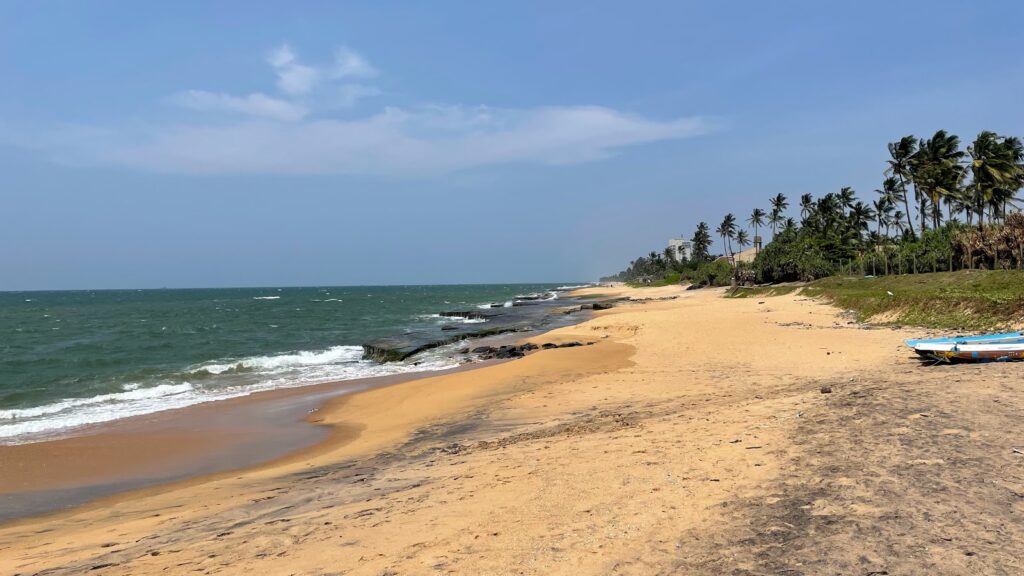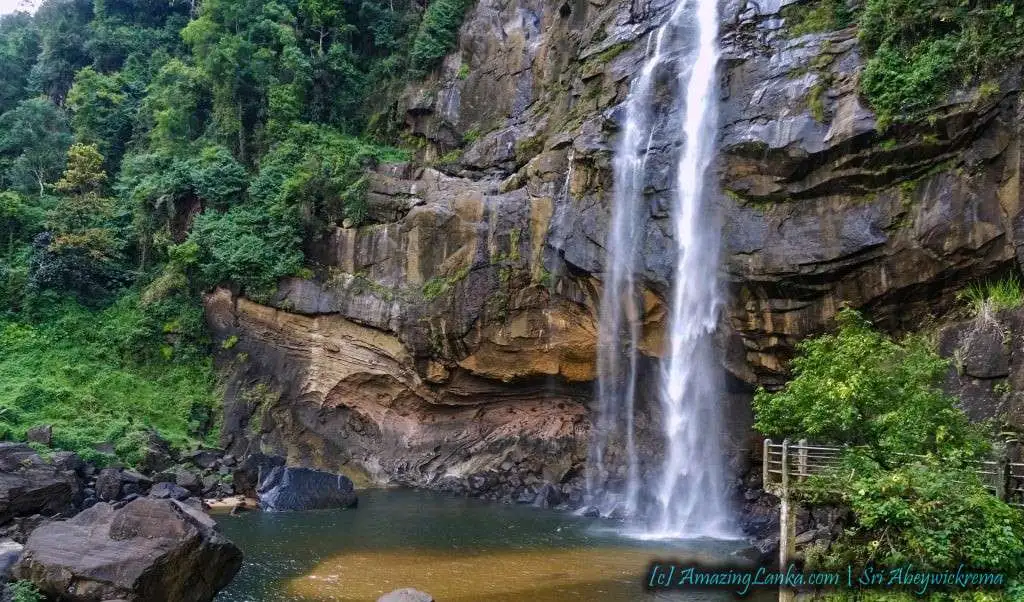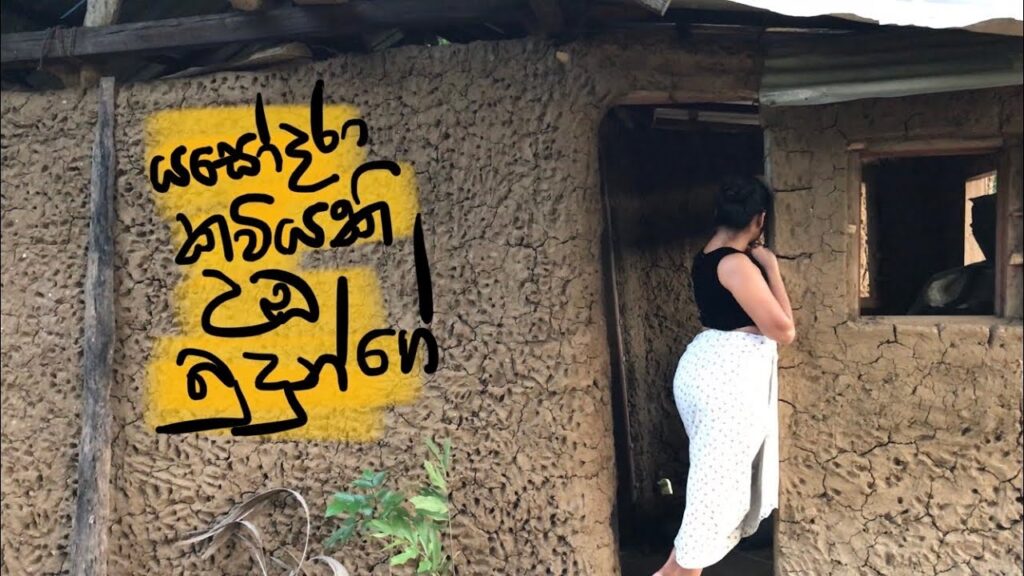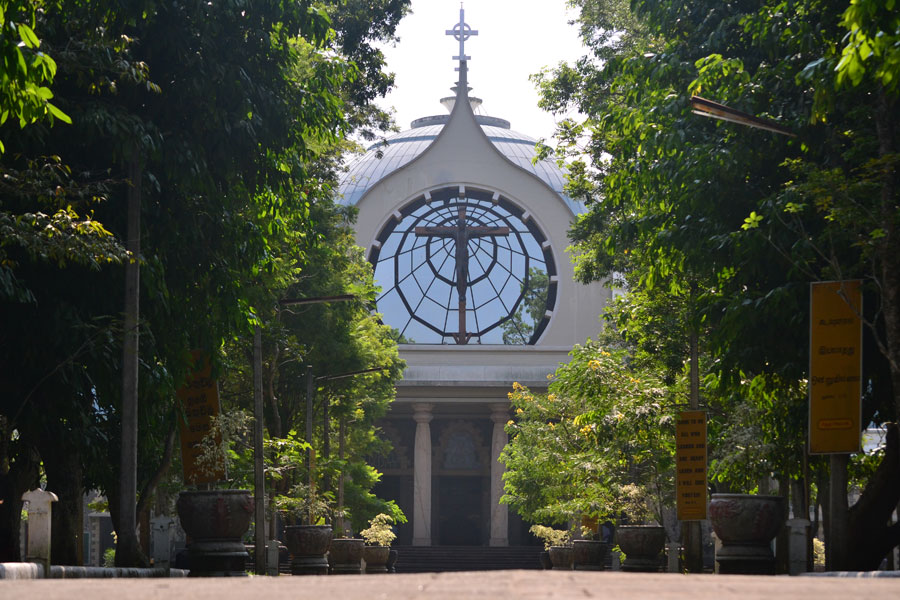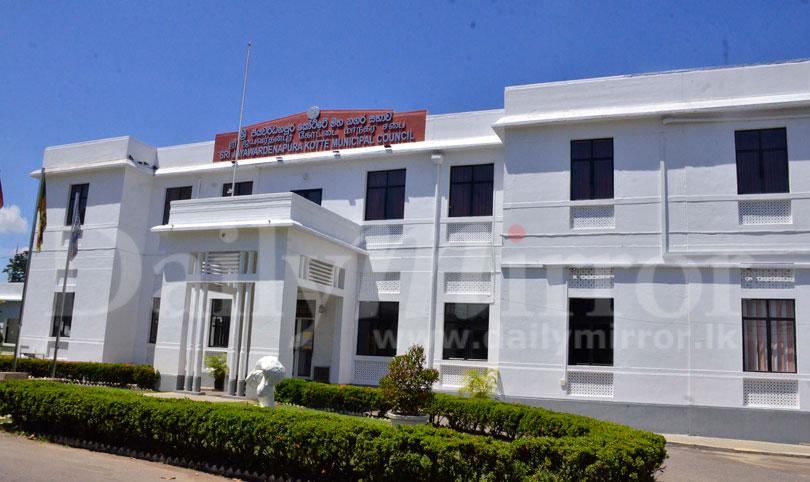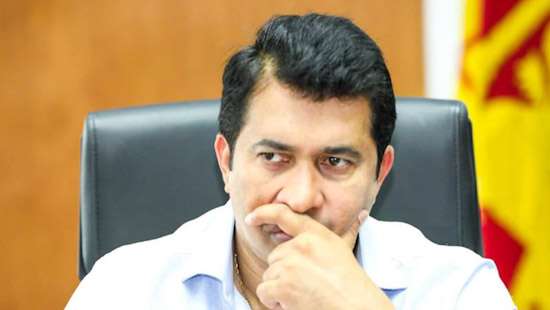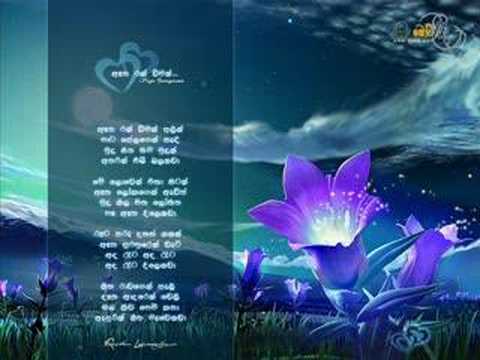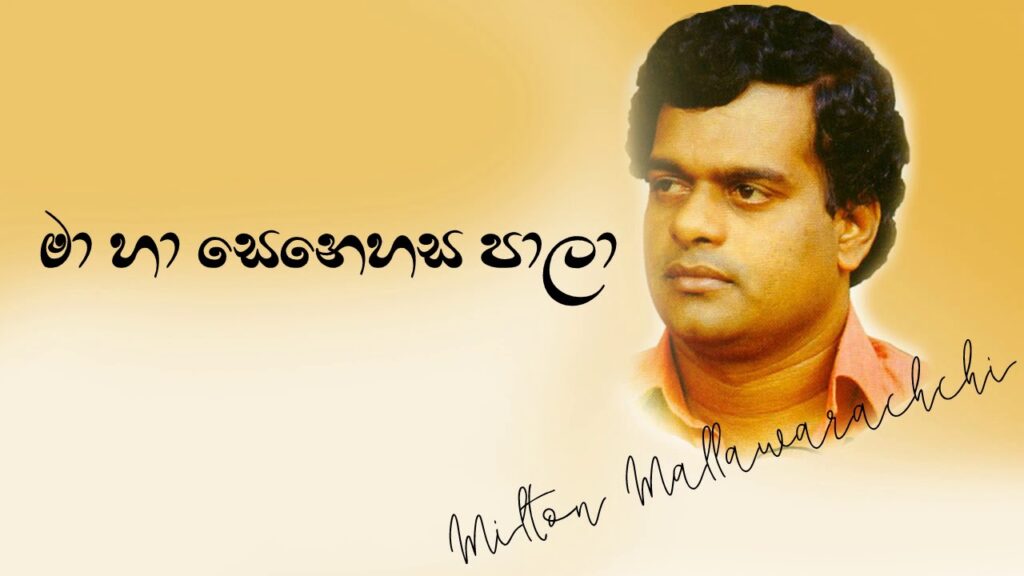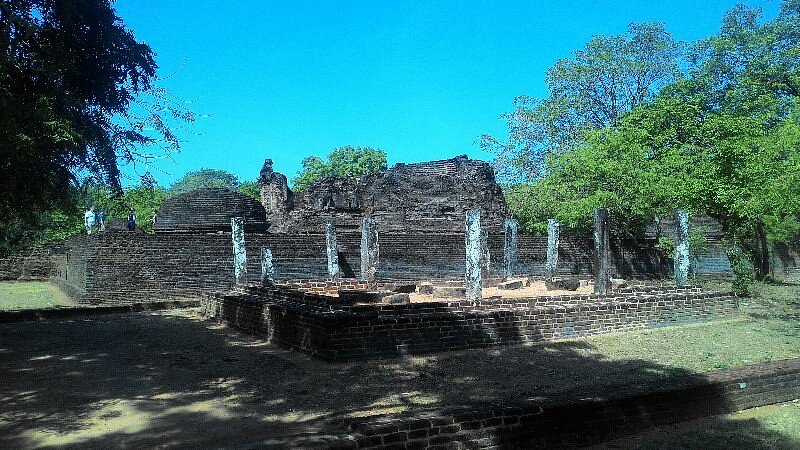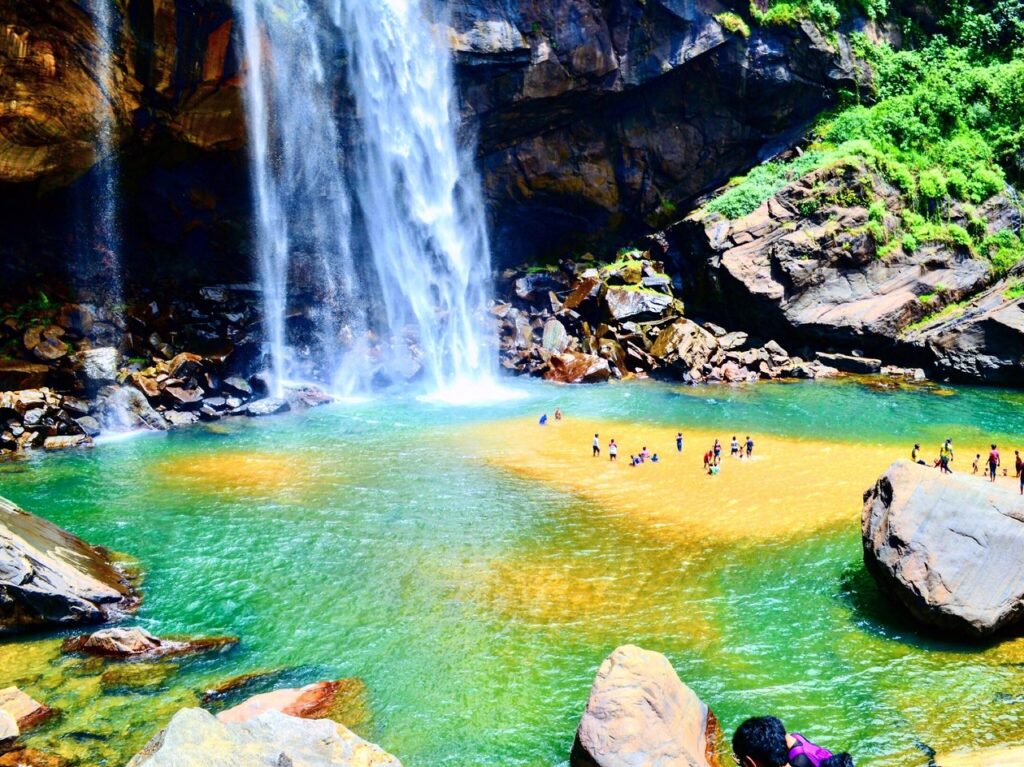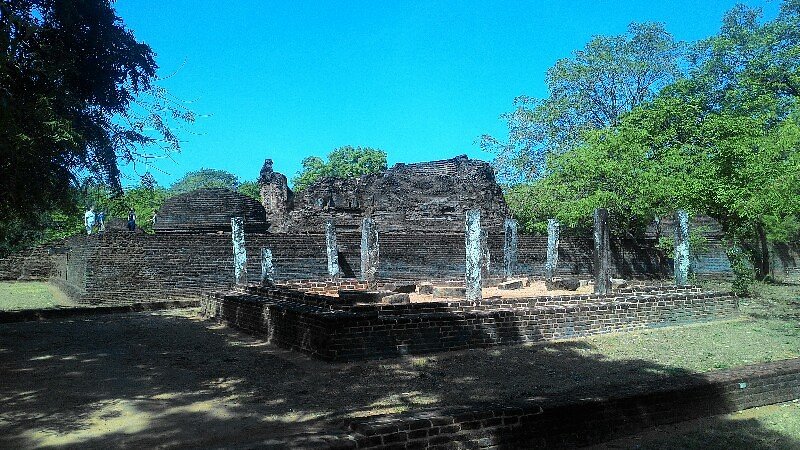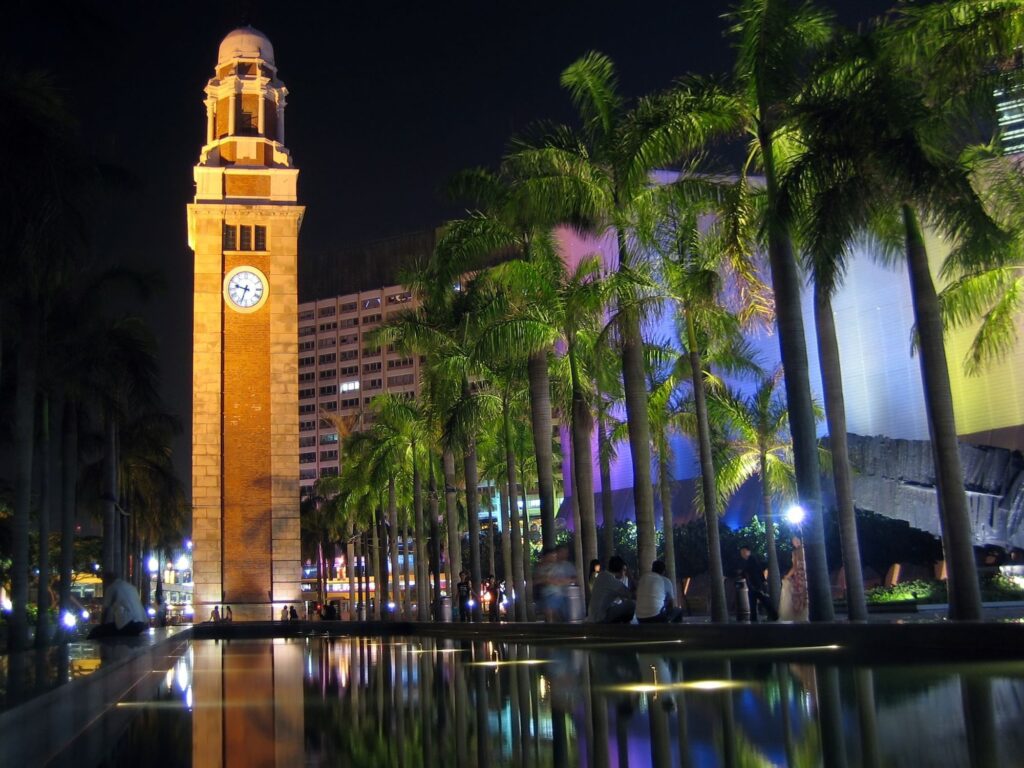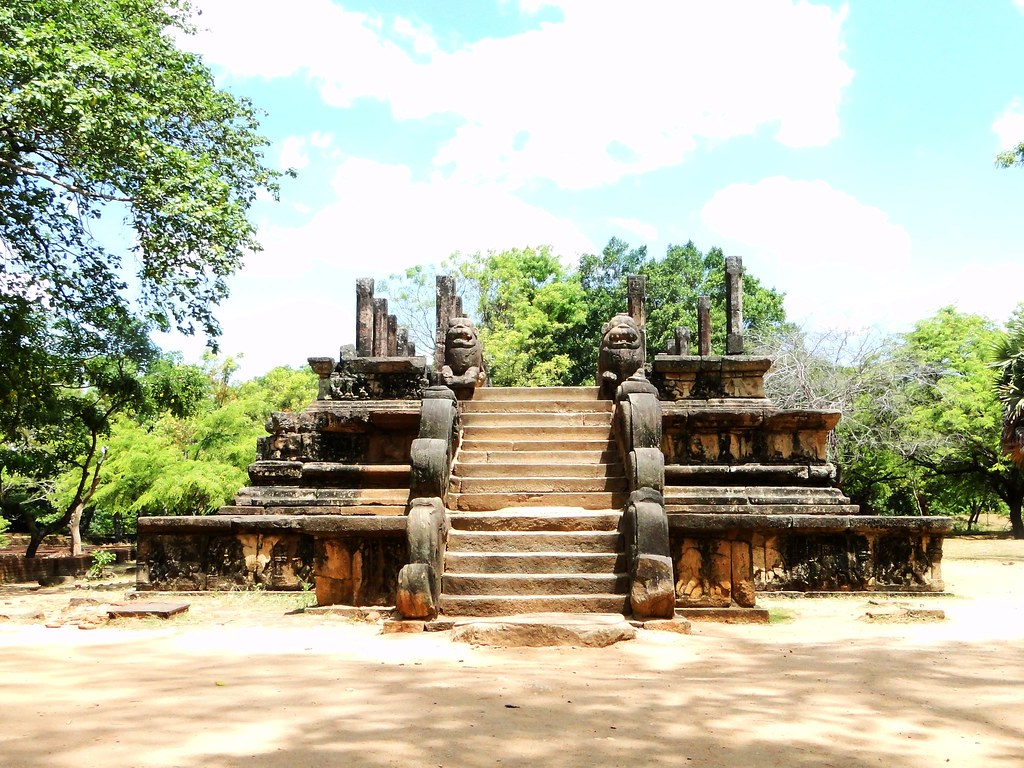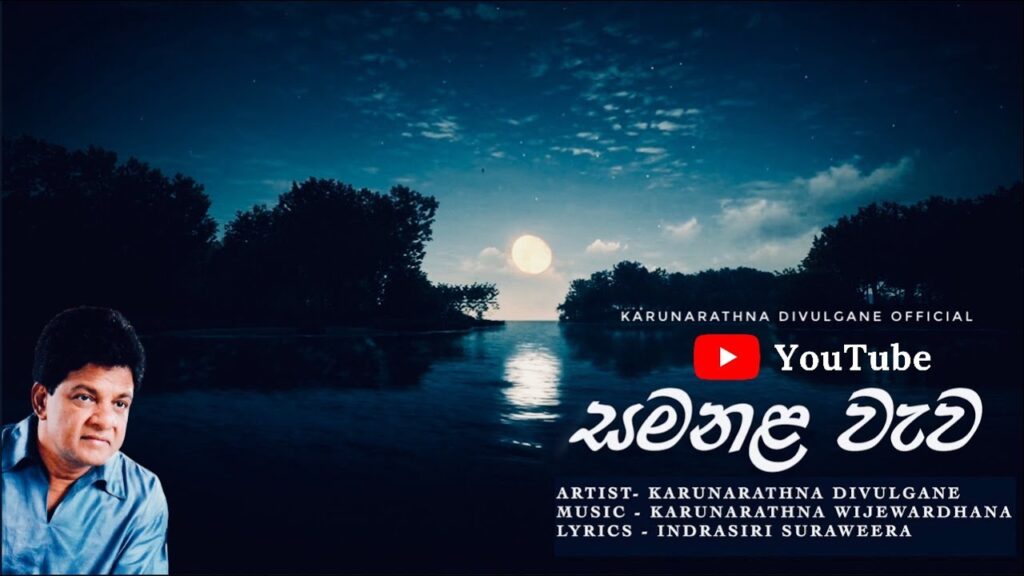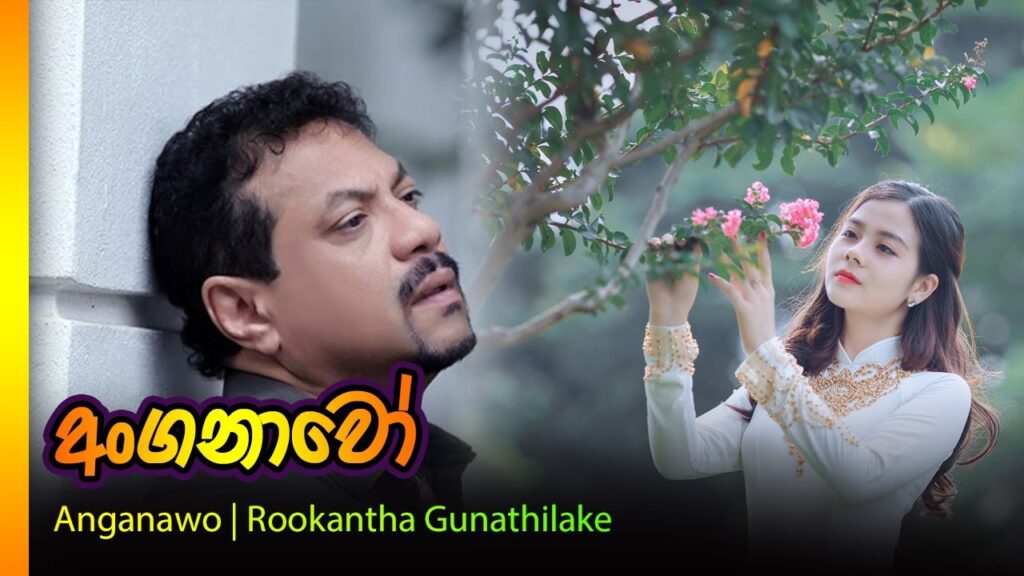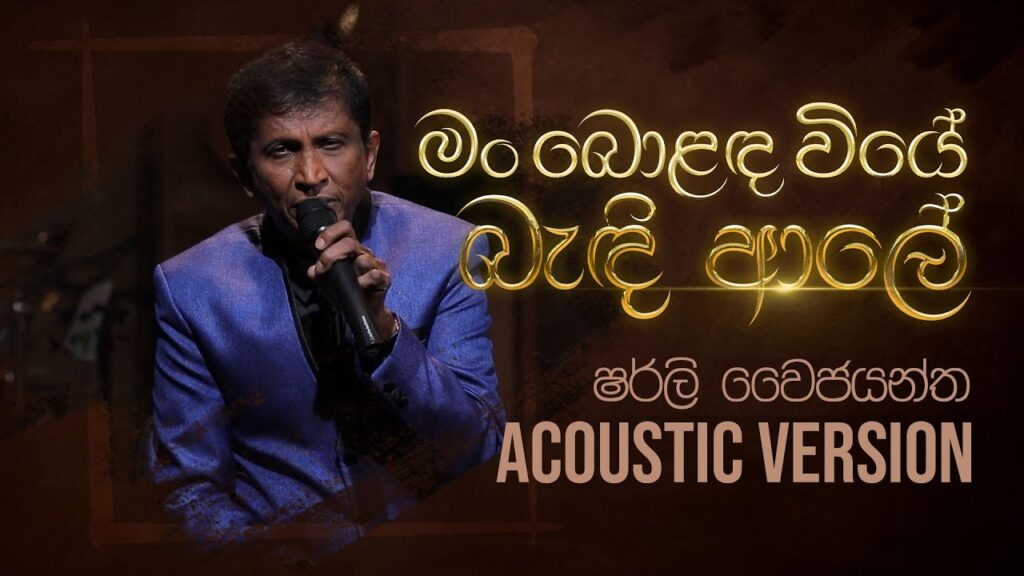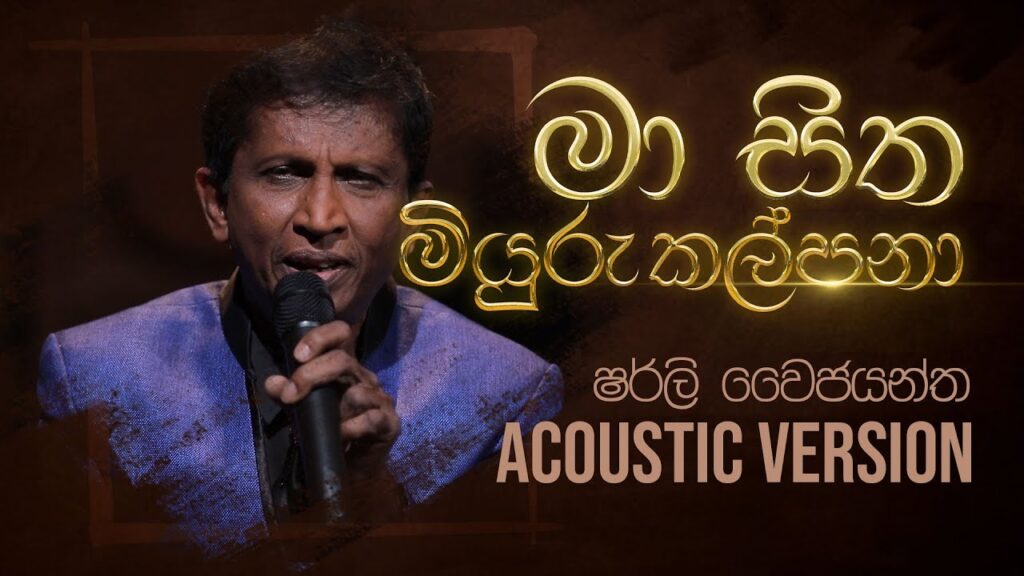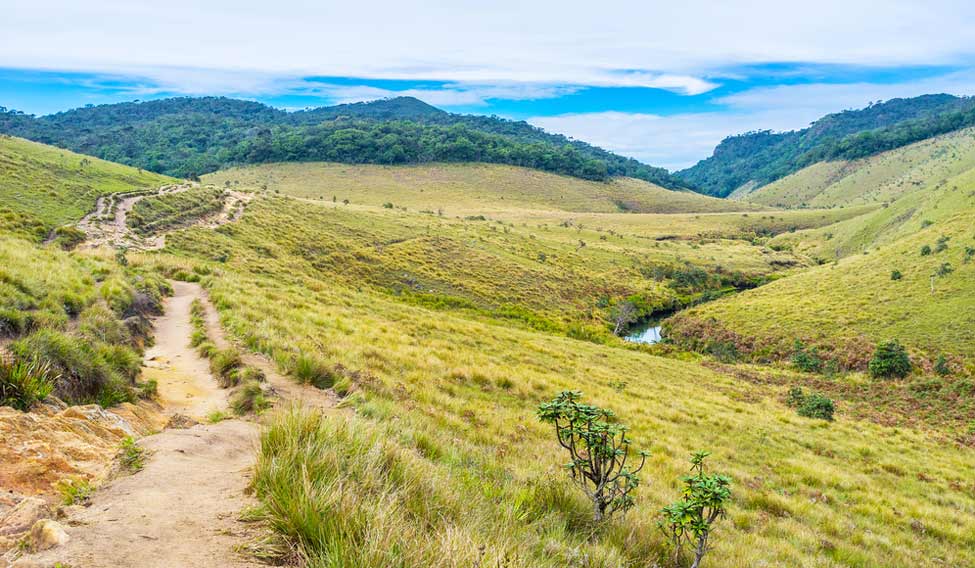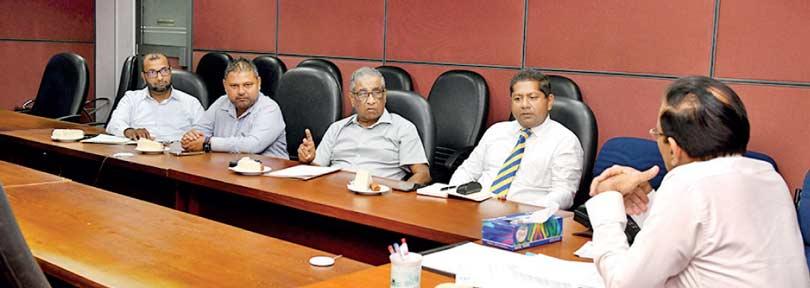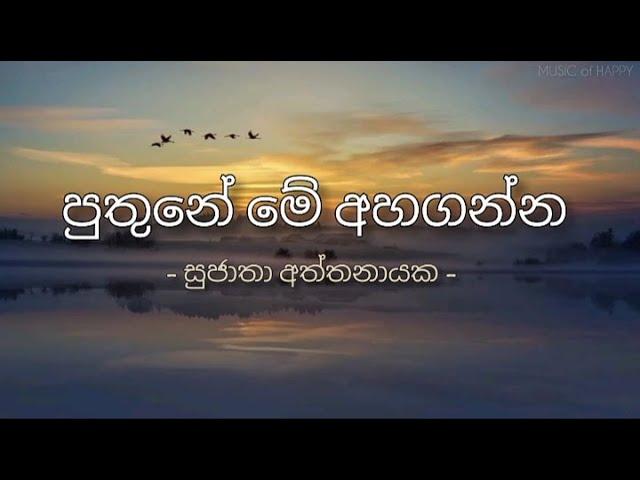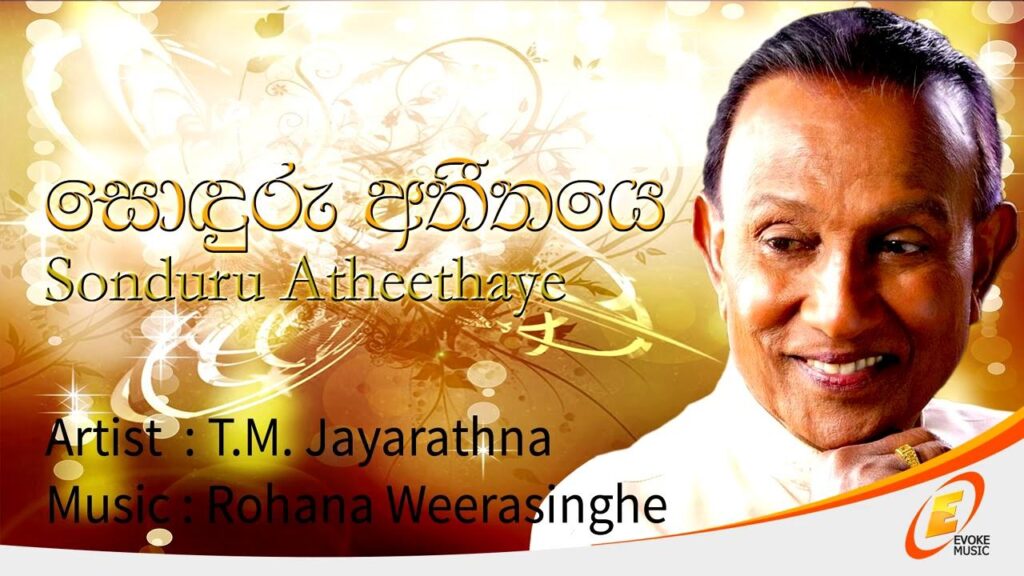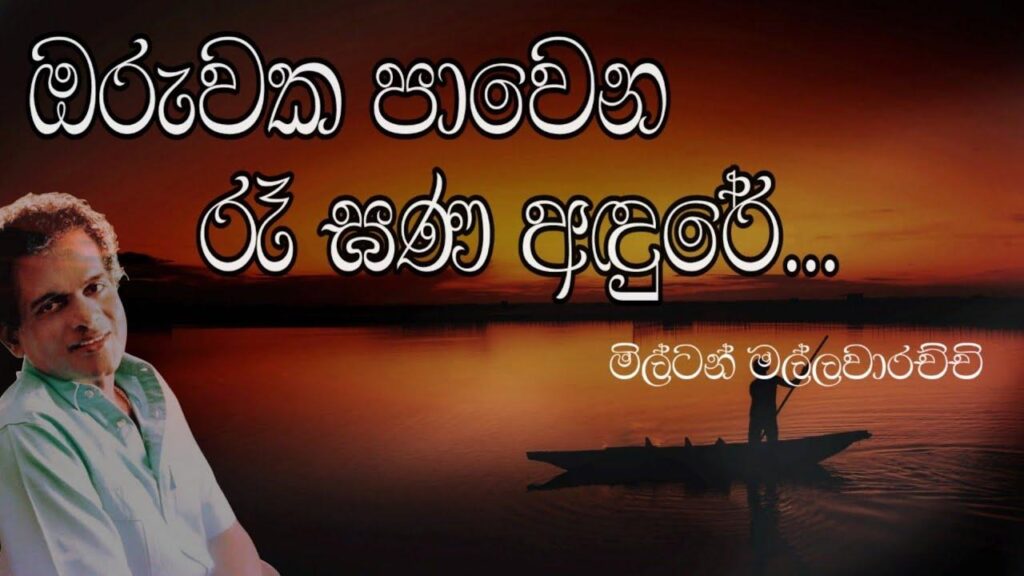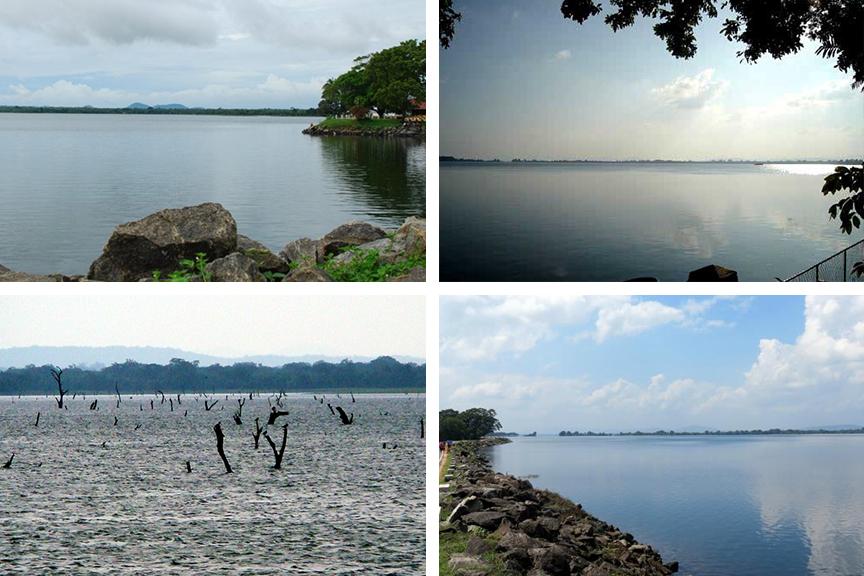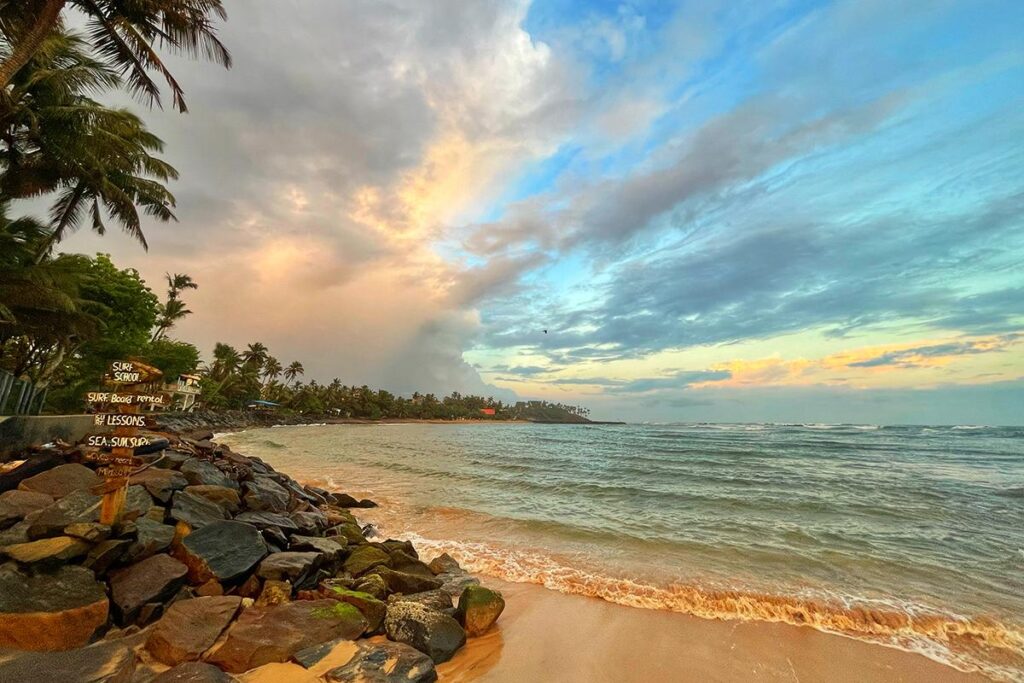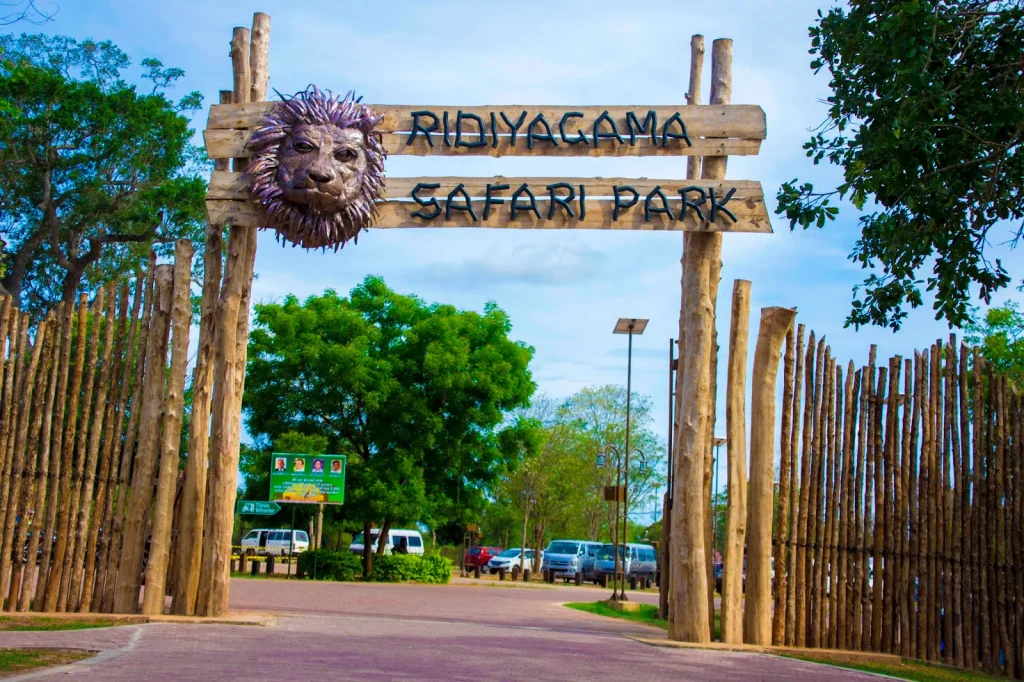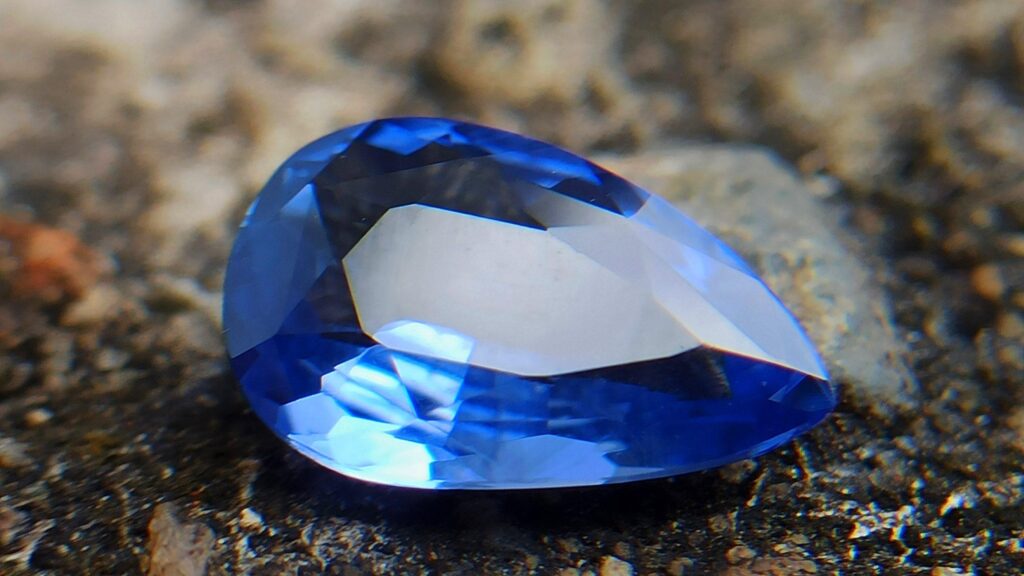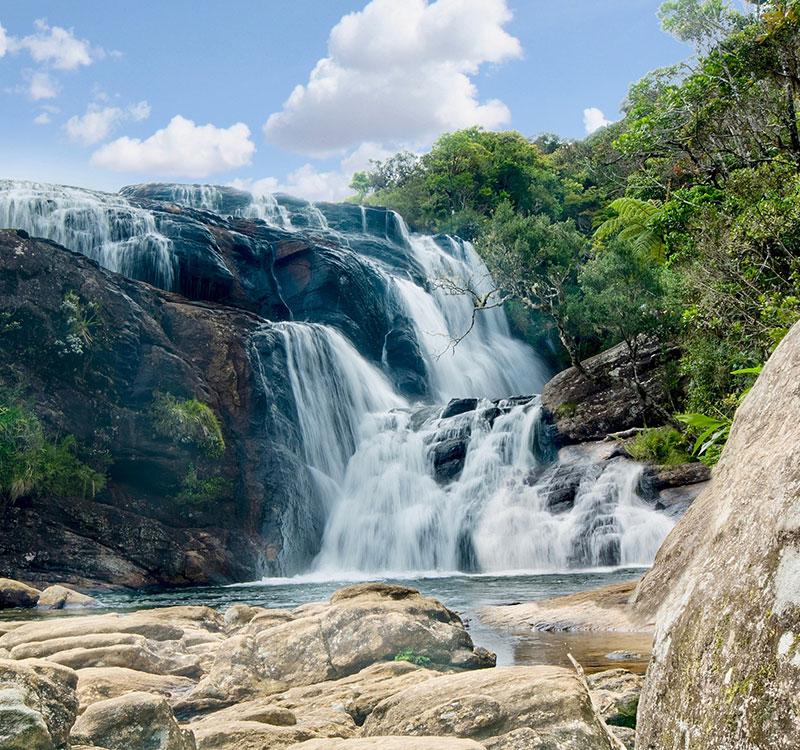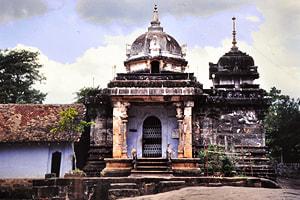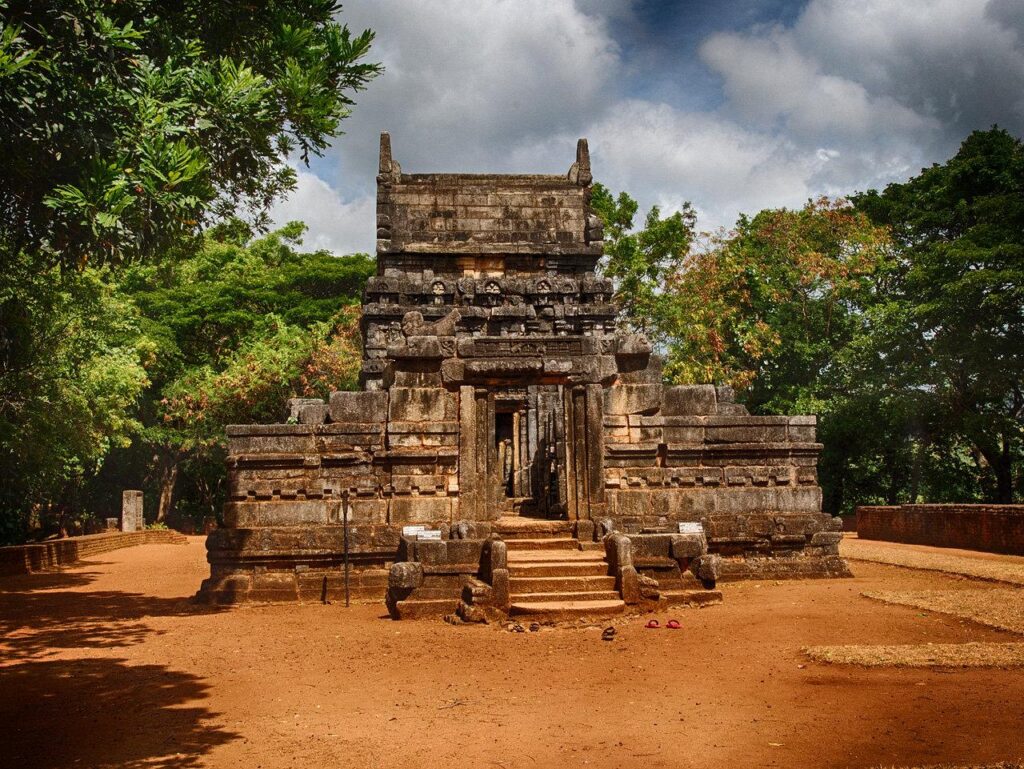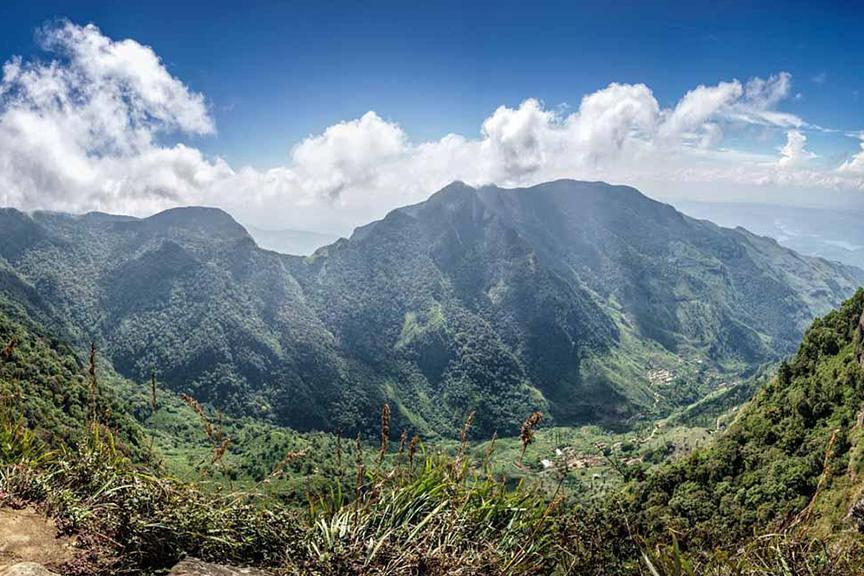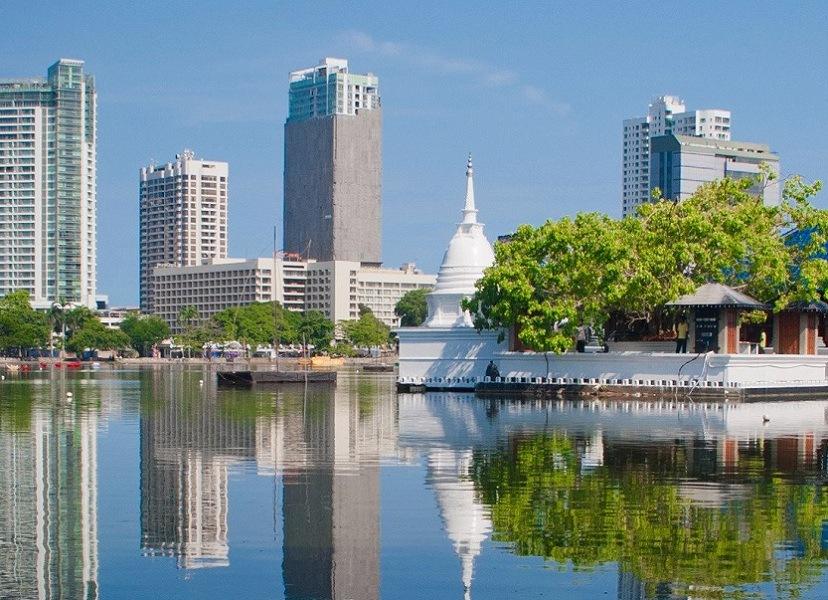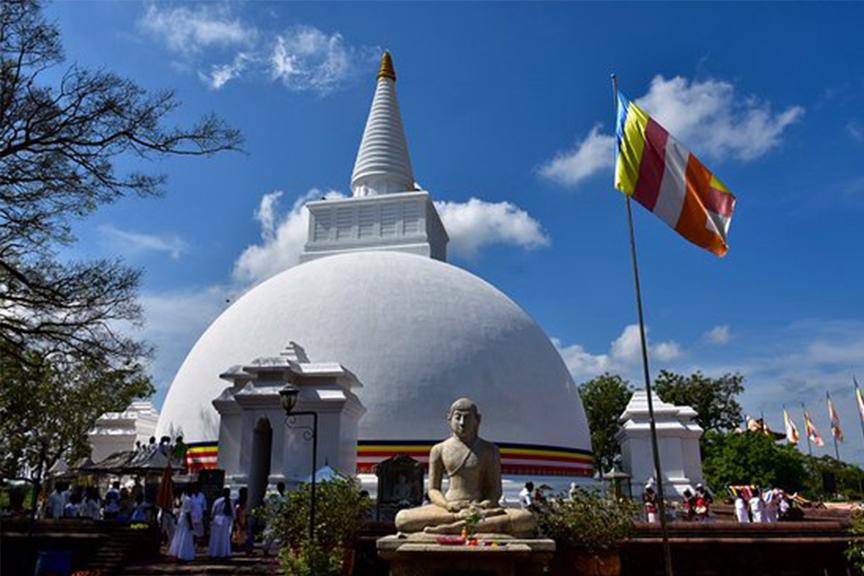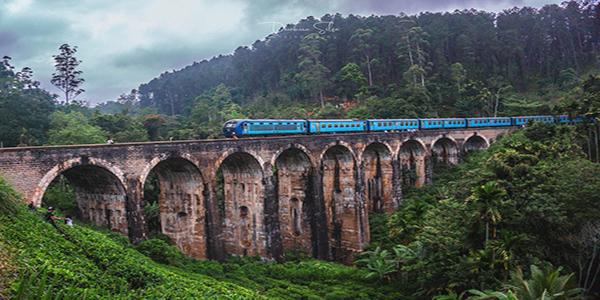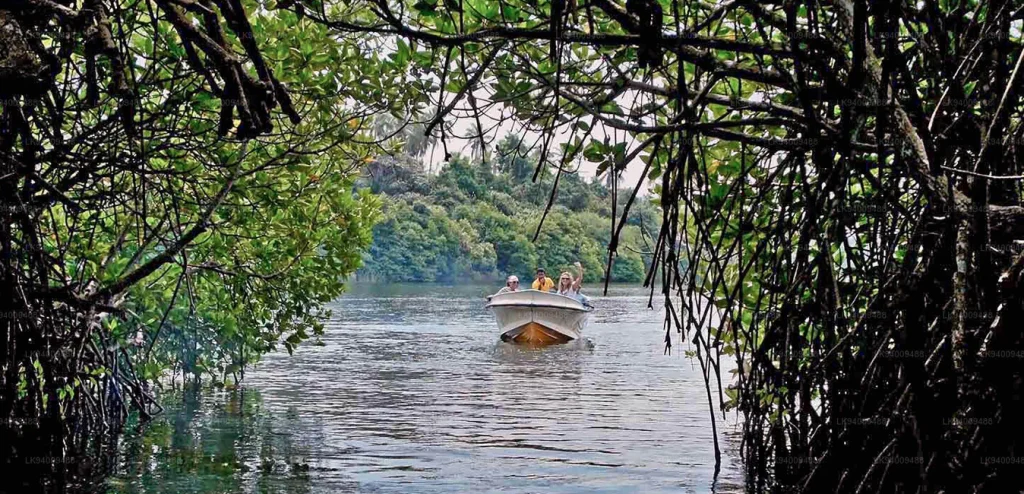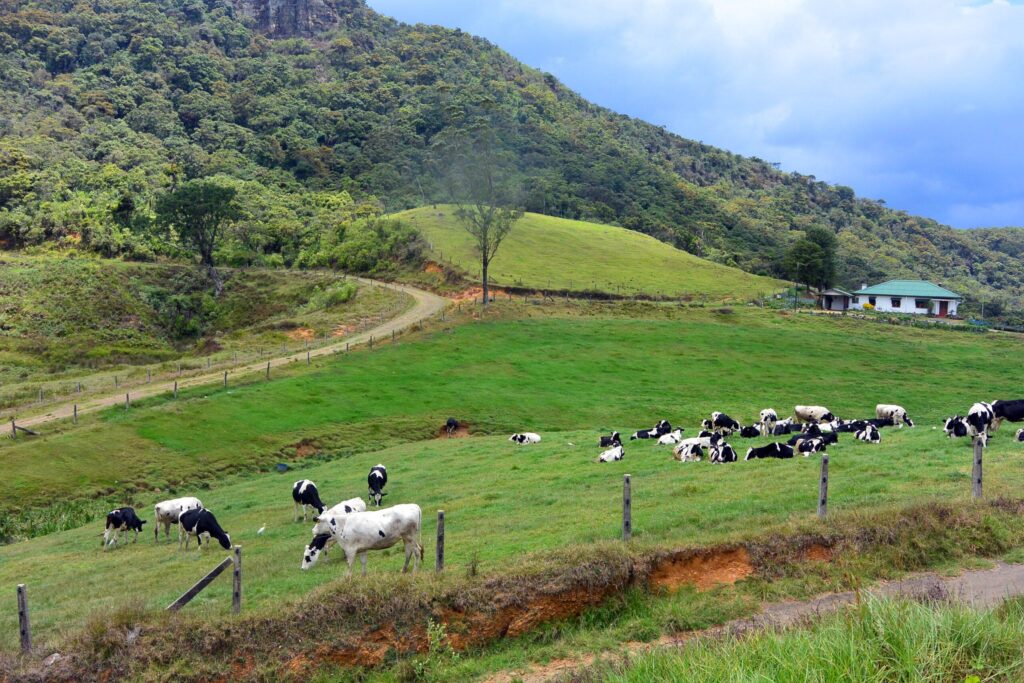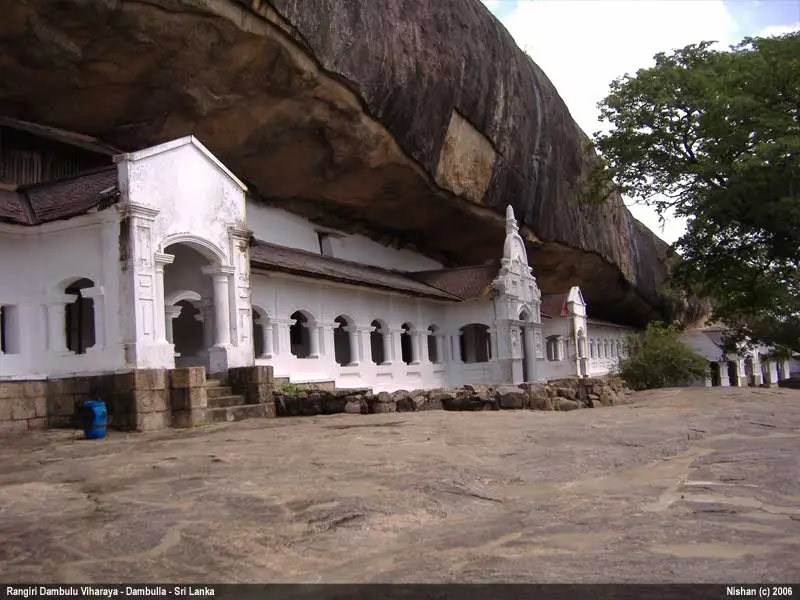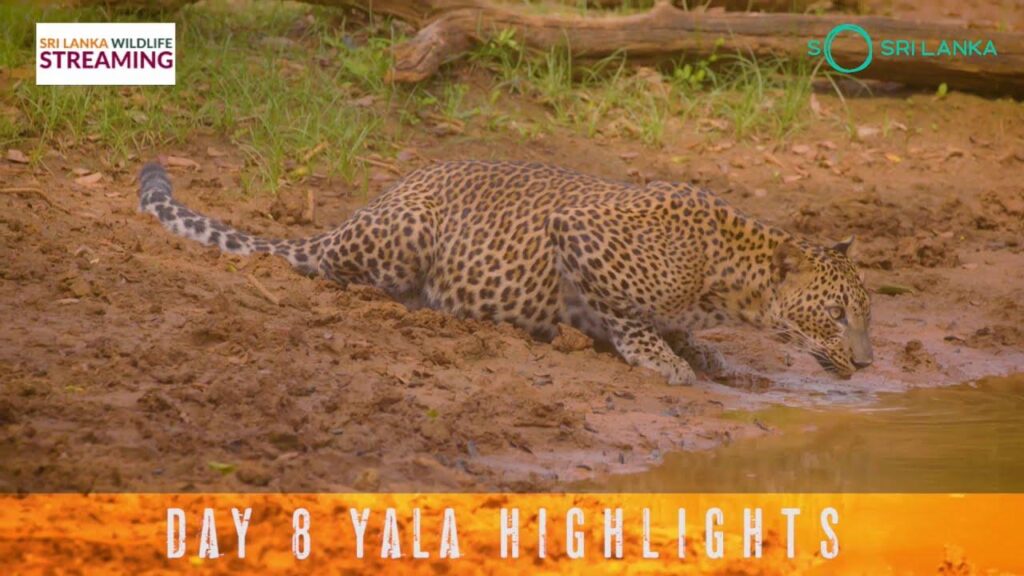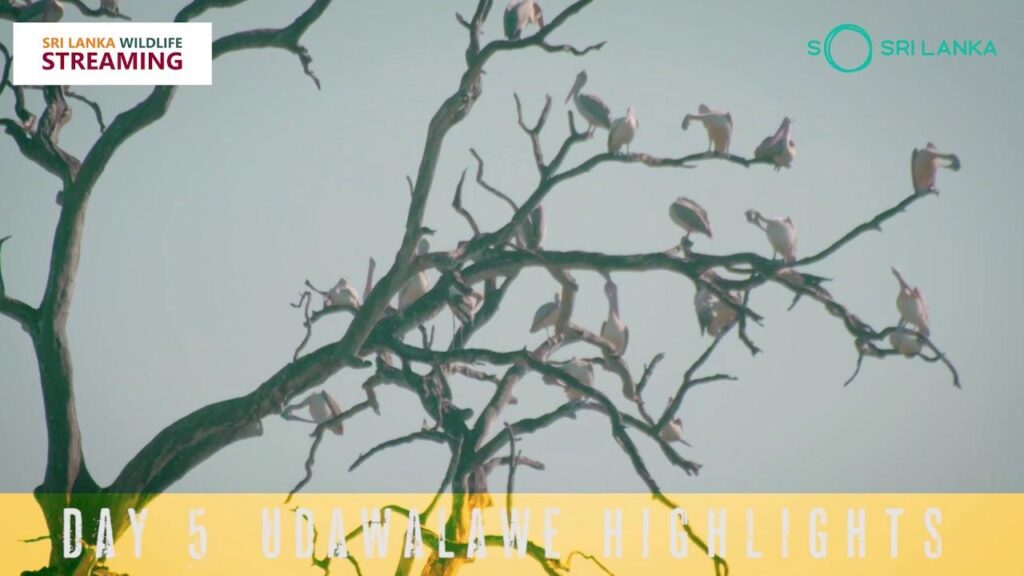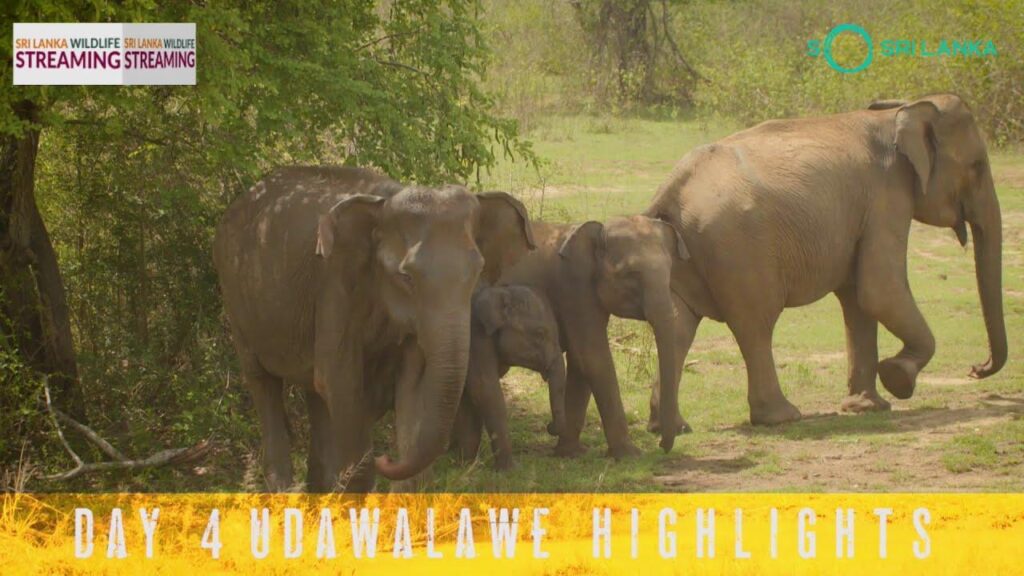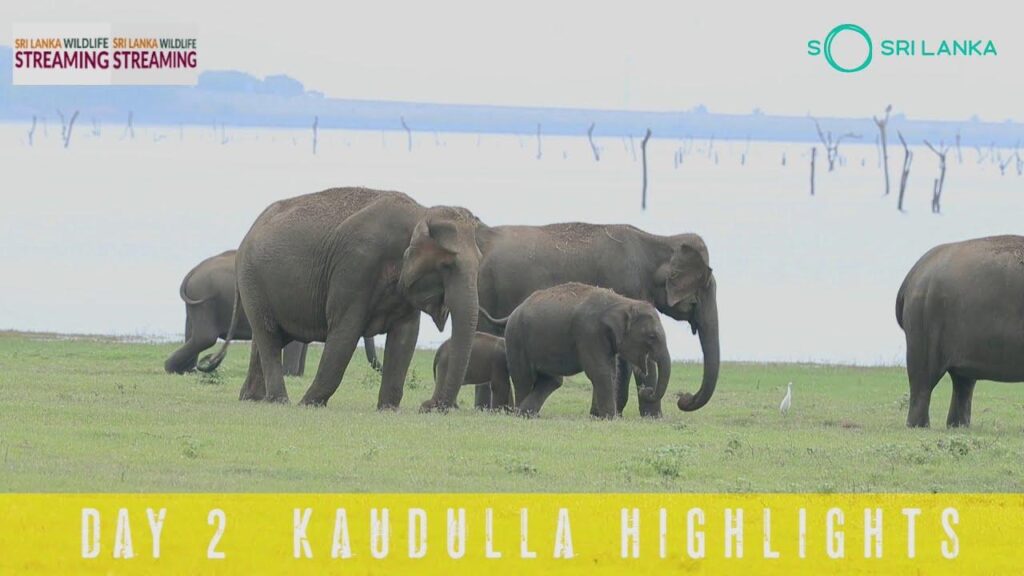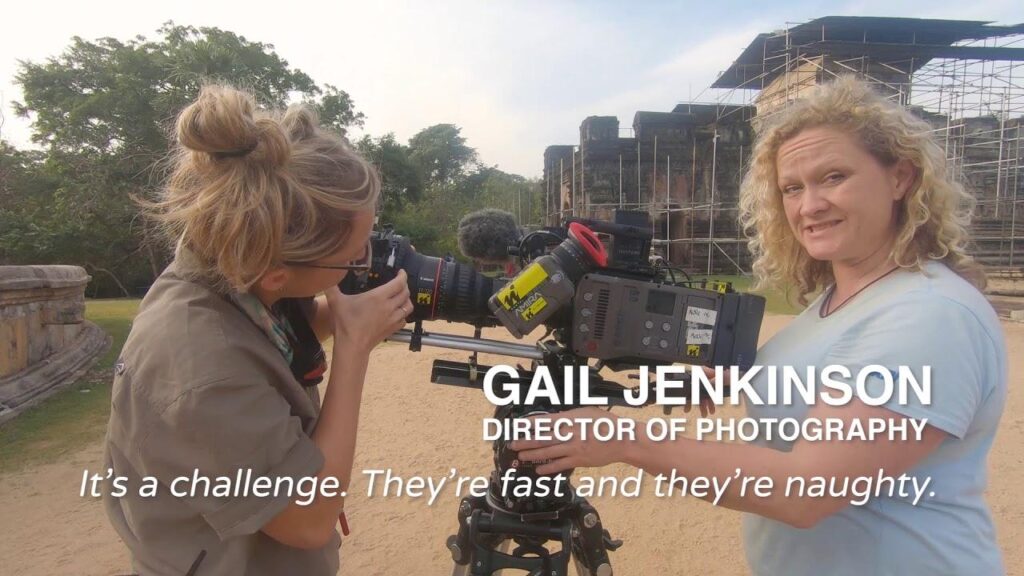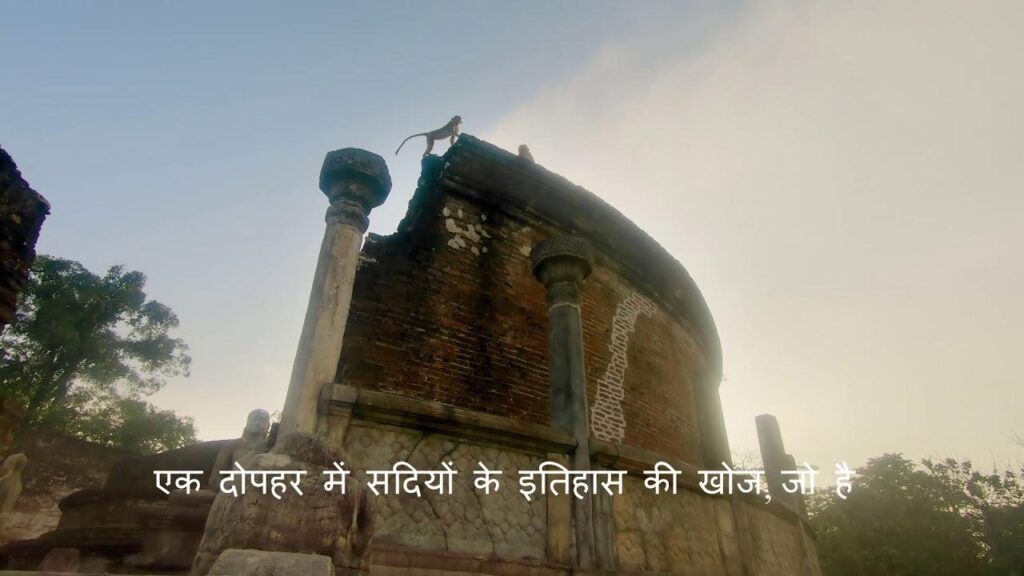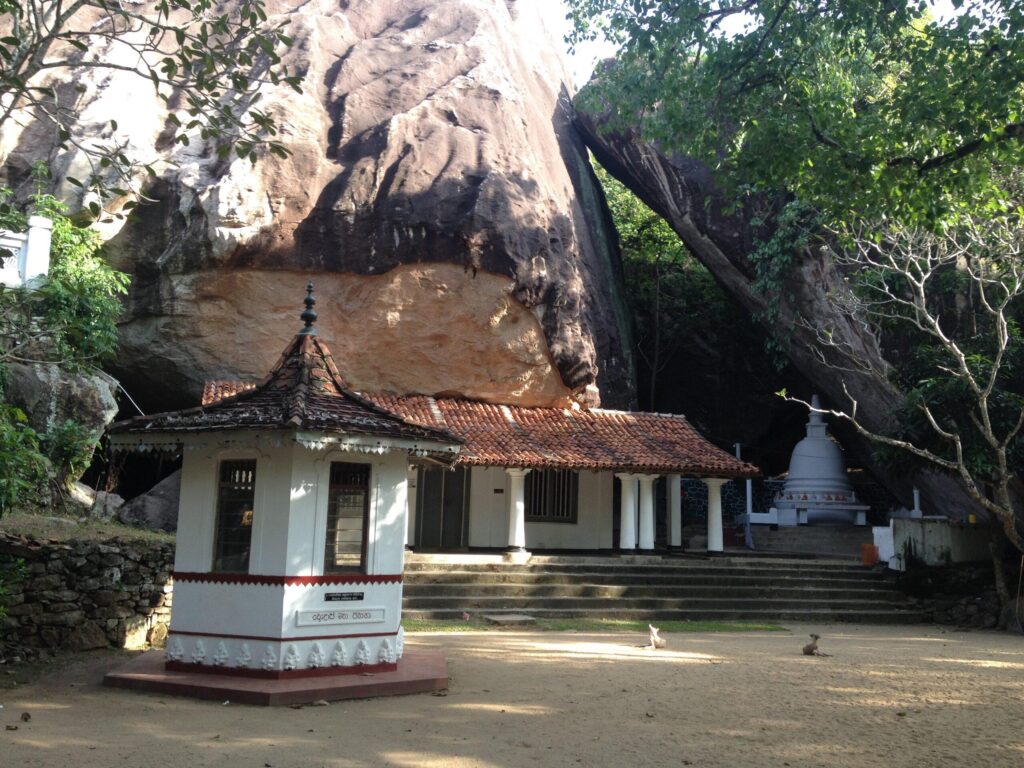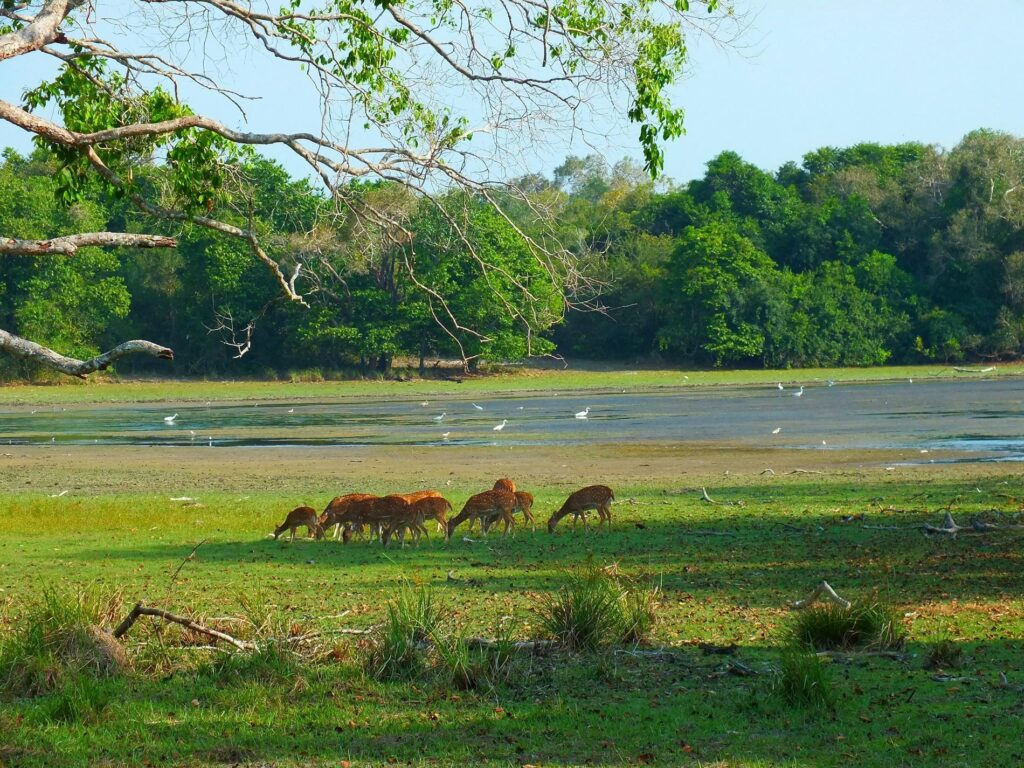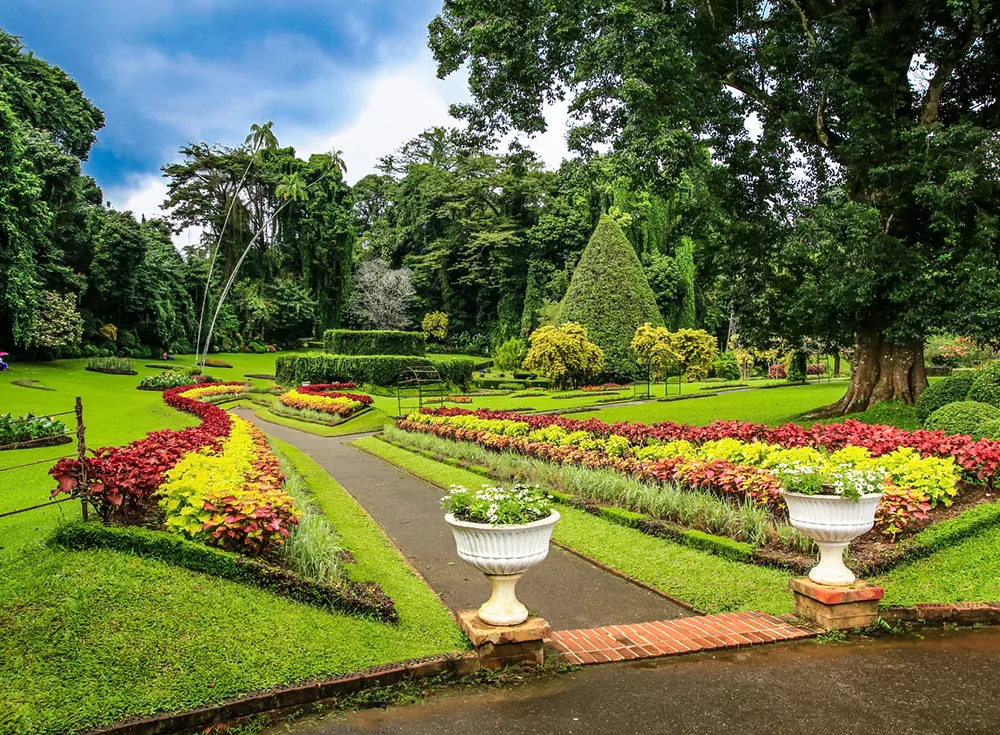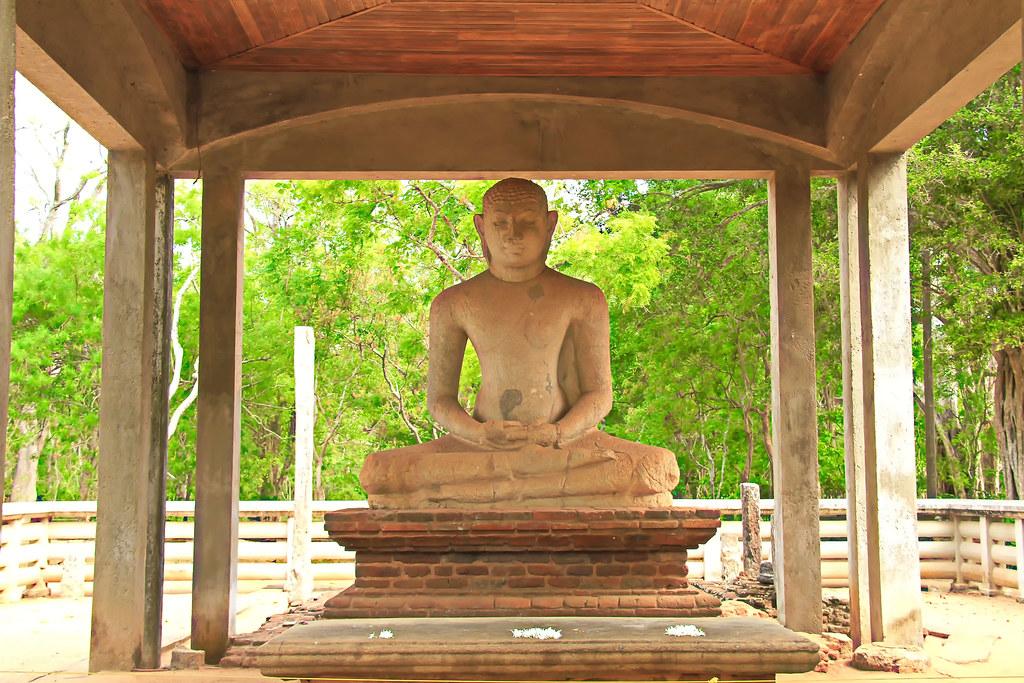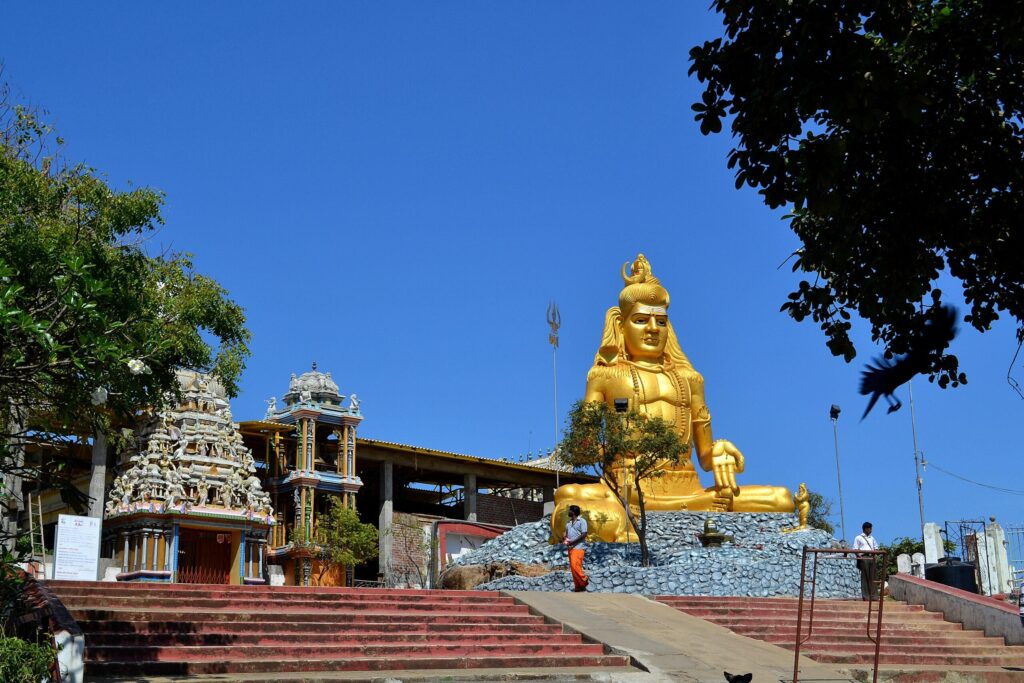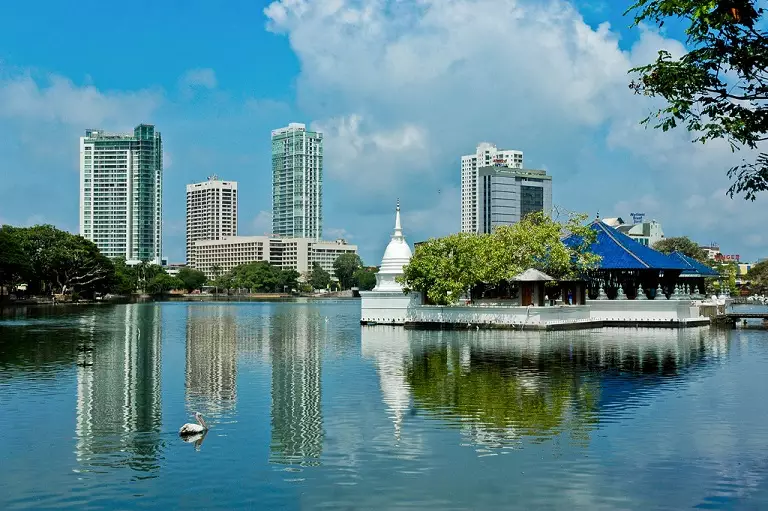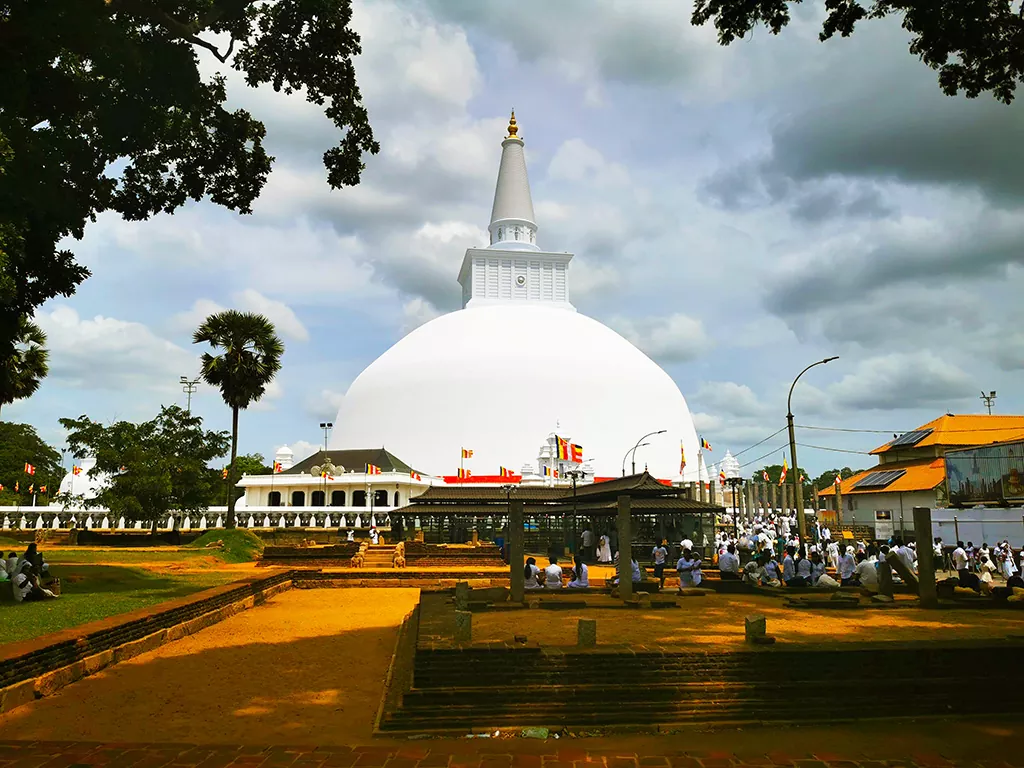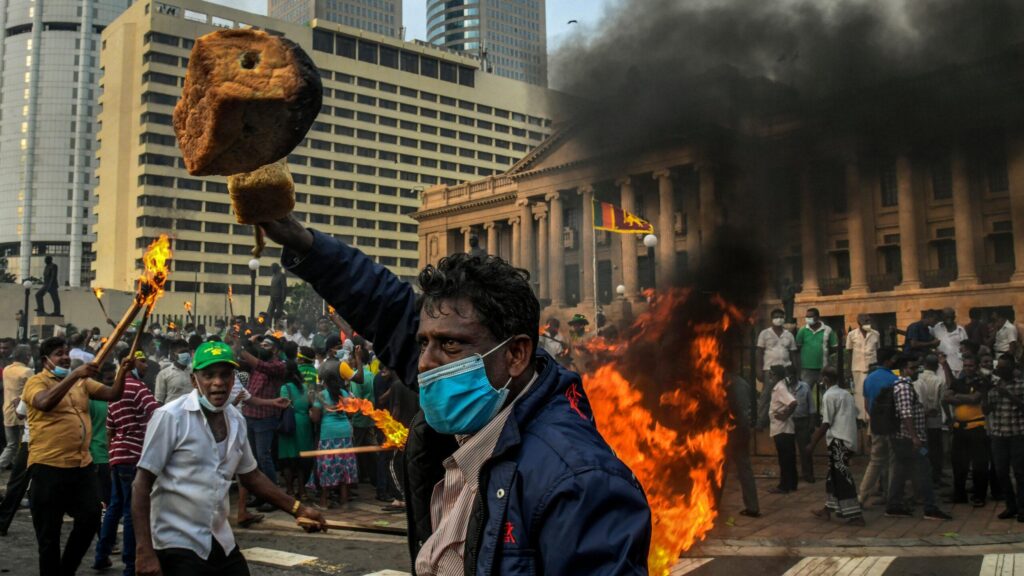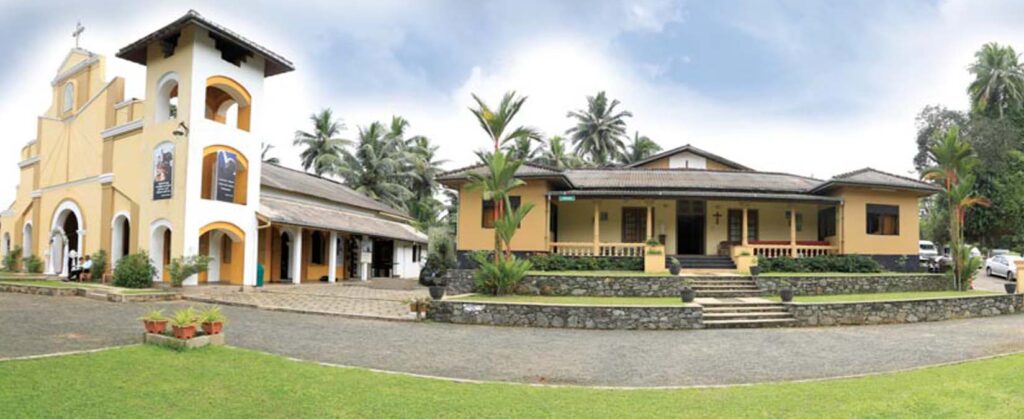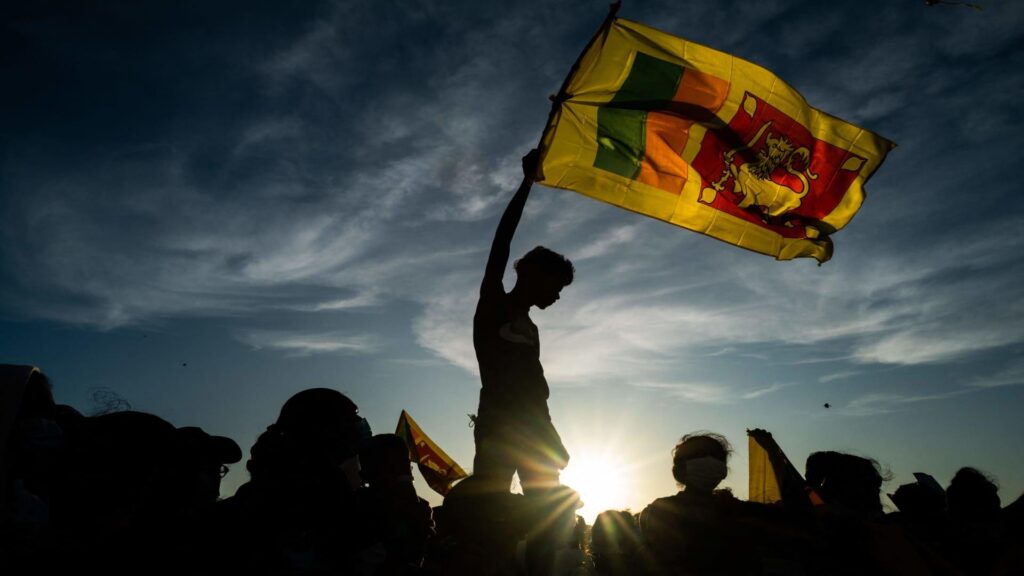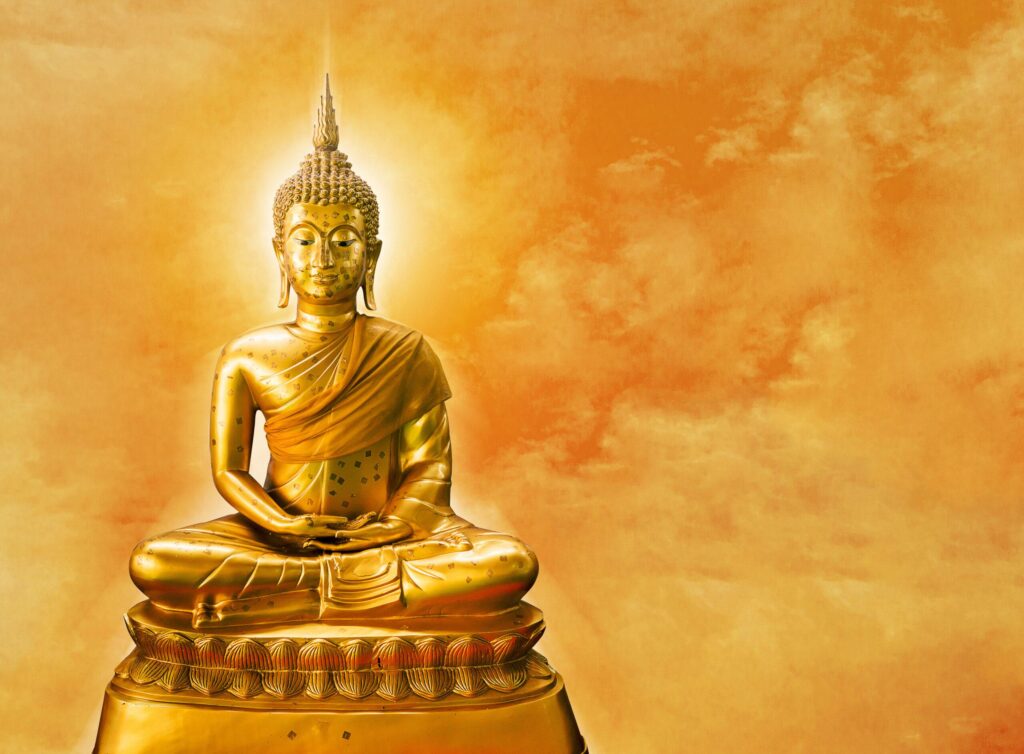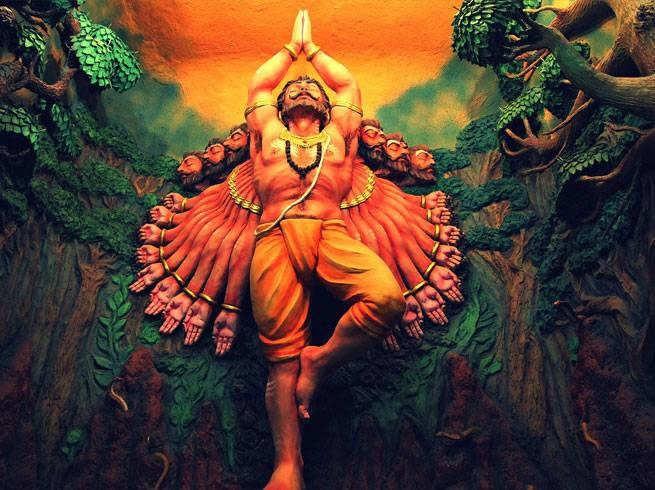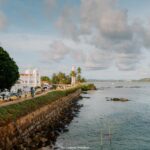A Guide To The Sacred City of Polonnaruwa, Sri Lanka | What To See, Know and Do
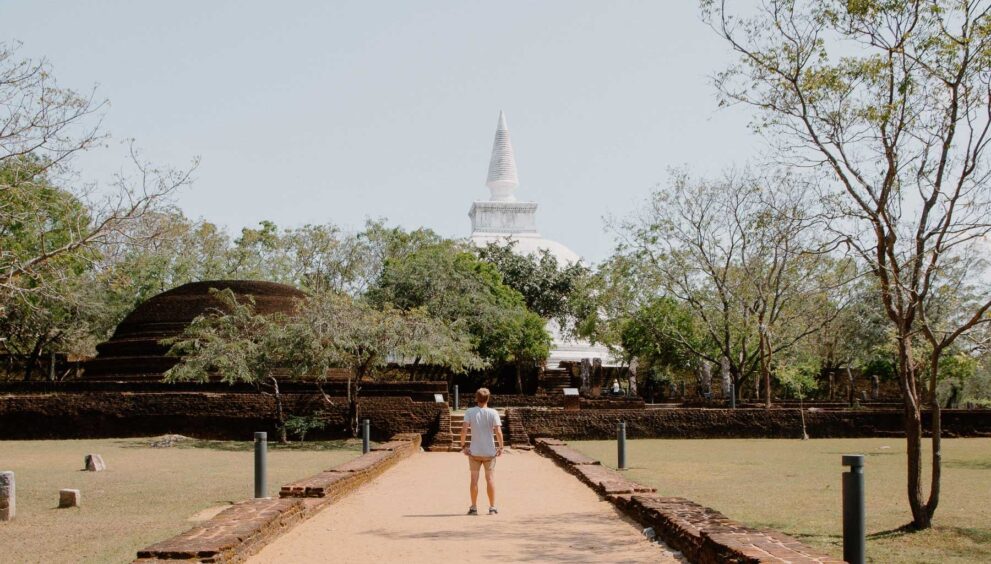
It was a hot day. A very hot day. The type of day you stay inside and avoid the sun at all costs, or laze by the pool and take a dip every 30 minutes to cool down. And yet here we were, in the back of a tuk-tuk, roaring along the chaotic roads towards Polonnaruwa, regretting all our life choices.
Those life choices involved a 5 am wake-up to watch the sunrise at Sigiriya, and a day trip to the sacred city of Polonnaruwa, all in the middle of April, Sri Lanka’s warmest and most humid month.
We arrived at the entrance to Polonnaruwa notably sweaty, parched, and with a severe case of travel fatigue (you know, the times when you really can’t be bothered seeing another temple, church or ruin, and instead you’d rather be sipping a Negroni by the sea).
Like the curtain dropping to begin a theatre production, our fatigue immediately dissipated as we entered the UNESCO World-Heritage-listed. Surrounded by an abundance of green, the vast, impressive ruins of Polonnaruwa lay.
Similar to Cambodia’s Angkor Wat, potentially without the grandeur or worldwide fame, Polonnaruwa is one of Sri Lanka’s premier attractions, sitting in the heart of the country’s famed cultural triangle.
Once the capital of ancient Sri Lanka, Polonnaruwa was built between the 10th and 12th centuries, and quickly became the thriving commercial and religious epicentre of the country. Made up of a series of stunning temples and religious buildings, the site is vast and in parts, stunningly beautiful.
We spent hours exploring the ruins, admiring the ornate details, overwhelmingly large religious monuments, and ingenuity from a culture and part of history we knew little about.
Despite the heat, and travel fatigue, our day spent exploring the vast ruins of Polonnaruwa, almost to ourselves, remains one of our most memorable. For intrepid travellers, the ruins offer a chance to walk between ancient ruins, and get up close and personal with some impressive physical structures.
Whether you’re in Sri Lanka for a short, beach-filled trip, or are wanting to explore the country a little deeper, we highly recommend a visit to Polonnaruwa.
Below is our guide to the sacred city, including all the important information and inspiration, including how to get there, when to visit, what to see within the complex, and a little historical overview.
Love our photos? They were all edited using our Sri Lanka Preset Pack, which you can purchase here!

POLONNARUWA TRAVEL INFORMATION
POLONNARUWA HISTORY
The second most ancient city in Sri Lanka, Polonnaruwa holds a wealth of incredible history. Polonnaruwa became the second capital of Sri Lanka in 993 A.D. after the destruction of the previous capital, Anuradhapura in 993.
At the time, the capital was called “Jananathapuram” and was ruled by the Chola dynasty. After serving as the kingdom of the South Indian Chola Dynasty for three centuries, it was recaptured by the Sinhalese King Vijayabahu I in 1070 A.D.
After expelling the Cholas, Vijayabahu I became the first king of the Polonnaruwa kingdom and the king of the whole island. To this day, visitors to Polonnaruwa can still marvel at the Cholas’ Brahmanic monuments, which attest to their rule.
With the defeat of the Cholas came an era that brought great economic prosperity to Polonnaruwa and spawned a period of Sinhalese cultural renaissance. After the great King Vijayabahu I passed away after ruling the kingdom for 40 years, King Parakramabahu I was crowned in Polonnaruwa, and under his rule, the city reached its height of power and glory, becoming Sri Lanka’s version of the Gardens of Babylon.
During the rule of King Parakramabahu, a vast irrigation network with reservoirs that resembled natural inland seas were created, leading to extensive rice farming, earning Sri Lanka the nickname “The Granary of the Orient”.
With its heyday waning by the early 13th century, the city was abandoned, and the capital relocated to the western part of the island, where modern-day Colombo now stands.
Later, in 1982, Polonnaruwa was declared a UNESCO world heritage site. The ancient city of Polonnaruwa is still one of the most meticulously preserved archaeological sites in Sri Lanka today, bearing witness to the rigour and brilliance of the kingdom’s founding monarchs.
WHERE IS POLONNARUWA
Polonnaruwa is located in the North Central Province of Sri Lanka in an area otherwise known as the cultural triangle, about 220km from the nation’s capital, Colombo, and around 50km from the imperious Sigiriya.
Rich with historical sites and cultural masterpieces, including Sigiriya, Dambulla and Anuradhapura, this area is home to many of Sri Lanka’s grand former capitals dating back over 1,000 years.
It’s also home to vast swathes of national parks, which allows extensive sightseeing with very little effort. For history and nature buffs, it’s basically heaven.

WHEN IS THE BEST TIME TO VISIT POLONNARUWA?
Sri Lanka’s weather, much like its politics, is a complicated beast punctuated by two separate monsoons, which affect different parts of the island and at different times of the year.
With this in mind, if you’re wanting to visit the incredible sights of Polonnaruwa, December to March is the best time to visit.
We visited in April, and it was overwhelmingly hot and uncomfortable, which led to a few grumpy moments as we explored the complex (heat + hunger = fights!).
We highly recommend arriving in Polonnaruwa as early as possible, mostly to avoid the incessant tropical heat and sun, but also to avoid the crowds that begin to build from 10 am. We suggest arriving between 8 am – 9 am.
READ | Learn more about when to travel to Sri Lanka in our Sri Lanka travel guide
POLONNARUWA ENTRANCE FEE
The entrance fee for Polonnaruwa is quite pricey, set at $25.00 USD per person for foreign visitors (a 50% discount applies for SAARC countries).
For some, this might be prohibitive (backpackers, for instance!), however, the fee does include entry to the vast museum complex (more on that below) and the UNESCO World Heritage-listed ruins, so we feel it’s 100% worth it.
Alternatively, if you’d prefer a guided tour of the complex by bike, this tour is perfect for you – not only does it include the entrance fee, you’ll get an English-speaking guide to take you through the extensive history of the complex (book in advance here).
There’s also a tuk-tuk tour if you’d prefer to save your legs for hiking Sigiriya and Pidurangala.
TIP | Arrive early to avoid crowds and the heat

HOW TO GET AROUND POLONNARUWA
As Polonnaruwa is spread out over a large area, there is some travel time required to reach the various site within the ancient city.
These are the best way to explore the historic ruins:
RENT A BIKE
Probably the best (and most cost-effective and efficient) way to explore the ancient city of Polonnaruwa is to rent a bike. While pedalling through the archaeological site, you can take in more sights while navigating between the attractions at your own pace. This, in the Sri Lankan heat, is absolutely essential (we recommend taking many breaks, preferably ice cream breaks).
The entire tour takes about 4 to 5 hours at a leisurely pace.
Bikes can be rented at the entrance to the complex near the museum, or in town near the bus stop
Cost | 400 LKR, ($2.25) per bike
WALKING
Walking is an option if you have a full day free and an abundance of stamina (or are sadistic). Even though Polonnaruwa’s archaeological site is smaller than that of nearby Anuradhapura, it can still be intimidating.
We recommend walking if you’re fairly fit, and can stand to be on your feet and explore for at least 8 hours straight. Thankfully there are numerous shady spots to rest your weary bones should you need to – just pack a LOT of water.
HIRE A TUK-TUK GUIDE
As much as we hate to admit it, we hired a tuk-tuk to drive us from Dambulla to Polonnaruwa, and he then drove us throughout the ancient complex – although the caveat is that it was about 35 degrees, and 100% humidity, however, it did end up saving us time and effort in the scorching heat.
In our opinion, we’d suggest riding through the complex as it will allow you to explore at your own pace, and take in more of the incredible surroundings.
But, tuk-tuks can be a convenient mode of transportation if you’d rather not engage in any sort of physical activity, particularly in the scorching heat.
Cost | 1,200 LKR ($6.5) per tuk-tuk
Book | Book this highly rated tuk-tuk tour

HOW TO GET TO POLONNARUWA
Polonnaruwa, like most of Sri Lanka, is easy to get to, mostly due to the size of the Island and the abundance of transport options, which include buses, trains, and tuk-tuks. One thing to keep in mind, though, is that Kaduruwela is considered Polonnaruwa new town, so any public transport will generally arrive there.
Our visit to Polonnaruwa was via tuk-tuk from Dambulla, where we saw both Sigiriya and Polonnaruwa in the same day. It was hectic, starting at 5 am, but well worth it to see two incredible ancient sites in one day. If you’re time-poor, this is something we’d advise doing. You can organise a tuk-tuk just about anywhere in town, including at your hotel.
Below are the easiest, and most cost-effective ways of getting to Polonnaruwa from major towns and attractions in the area:
FROM SIGIRIYA TO POLONNARUWA
Bus | Sigirya – Inamaluwa – Polonnaruwa – Kaduruwela | After a short tuk-tuk journey from Sigiriya to Inamaluwa jump on the bus to Kaduruwela.
Cost | Tuk-tuk from Sigiriya to Inamaluwa 500 LKR, ($2.8) | Bus #48.16 from Inamaluwa to Polonnaruwa 200 LKR, ($1) per person
Travel time | 1.5 hours
Tuk Tuk | Sigiriya to Polonnaruwa
Cost | 5,000 LKR / $30 USD
FROM DAMBULLA TO POLONNARUWA
Bus | Dambulla – Polonnaruwa – Kaduruwela | Take a direct bus that heads for Kaduruwela from the Dambulla Main bus stop. The bus leaves every 20-30 minutes starting from 7 am.
Cost | Bus #48.16 from Dambulla to Kaduruwela – 220 LKR, ($1) per person
Travel time | 1.5 to 2 hours
Tuk Tuk | Dambulla to Polonnaruwa
Cost | 5,000 LKR / $30 USD
FROM COLOMBO TO POLONNARUWA
We probably wouldn’t recommend this journey in one day – it’s far better to break up the journey in either Kandy, Dambulla or Sigiriya.
Train | Colombo Fort – Polonnaruwa / Batticaloa Special
Cost | Tickets start at 1,200 LKR per person
Travel time | 5+ hours – Search for train departure times here

WHAT TO SEE IN POLONNARUWA
Polonnaruwa is filled with architectural and archaeological treasures, encompassing an eclectic range of structures, including rock-cut caves, monasteries, and dagobas, as well as ancient warrior gates, palaces, and other stupas.
Whether you are an enthusiastic history buff or not, the sites themselves, as well as their magnificence, will leave a lasting impression on you, and rightly so – they are some of the finest structures to be found in all of Sri Lanka.
This medieval city will captivate you with its incredible structures and landscapes, and it will traverse your way through its fascinating history while allowing you to take in all of its natural beauty and historic significance.
The following are absolute must-see places to visit in Polonnaruwa that are living testimonies to Sri Lankan history and something that should not be missed at all costs if you ever find yourself in this region.
ARCHAELOGICAL MUSEUM OF POLONNARUWA
The Archeological Museum of Polonnaruwa is the starting point for your ancient city explorations. You’ll find this one-storeyed building once you enter the archaeological site of Polonnaruwa, and despite its small size, it’s a treasure trove of mesmerising ancient artefacts and exhibits.
A visit to the museum will allow you to gain a detailed insight and understanding of the sacred city.
The museum’s layout reflects that of the ancient city, with separate wings devoted to the citadel, the monastery area, the outer city, and the Hindu monuments.
Once you visit the section with the artefacts of the ancient surgical instruments, you’ll be amazed by how closely they resemble modern surgical instruments.

THE ROYAL PALACE OF KING PARAKRAMABAHU
The first group of ruins that you’ll come across after leaving the museum will be the ruins of the majestic Royal Palace of King Parakramabahu I. There were once approximately one thousand chambers spread across seven stories in this structure, however a deliberate fire by invaders ruined the structure, so little is still standing today.
The Palace was called the “Vijayantha Prasada,” and it was believed to be one of the tallest buildings of that era. You can get an idea of the structure’s scale by looking at the surviving portions of the massive walls that are thicker than one meter, as well as the foundation walls and parts of the stairway.
THE AUDIENCE HALL
When exploring the ruins of the Palace, you’ll discover a well-preserved structure with three layers of solid rock. The bottom layer is carved beautifully with elephants in different postures. The second layer consists of figures of lions, and the top layer has carvings of “Wamana.”
That structure is the Audience Hall or the Royal Court of the Palace, and you can climb up the stone stairs to get to the top and wander around the structure’s many stone pillars or even get a picture snapped in the middle of the two stone-carved lions at the top.
ROYAL BATHING POOL
Located right next to the Audience Hall lies the Royal Bathing Pool, nicknamed the “Kumara Pokuna.” It’s a wider, open space with spouts shaped like crocodile mouths that were once used to bring clean water into the pool.
Unfortunately, it’s no longer in use, however, it’s evident that it was once a magnificent place to take a dip.

THE SACRED QUADRANGLE (DALADA MALUVA)
The Dalada Maluwa is one of the best places to visit in Polonnaruwa, and it’s where you’ll find the imperious Sacred Quadrangle, as well as some other ancient Buddhist ruins.
The Sacred Quadrangle is home to over ten magnificent structures, including the Hetadage, Atadage, Vatadage, Image of Boddhisattwa, Sathmahal Prasadaya, and Thuparama.
As this site offers multiple places to visit in Polonnaruwa in close vicinity, you should definitely take your time exploring the area.
THE POLONNARUWA VATADAGE
One of the most famous (and photographed) monuments in Polonnaruwa, Vatadage is truly a sight to behold. This two-tiered relic house has an unusual design that is built with part brick and part stone.
The Vatadage is meant to safeguard a dagoba at its centre, and there are four intricate Buddha statues, all facing different entrances to the dagoba. You can marvel at the intricate carvings of this structure, which is said to have housed the “Scared Tooth Relic of Buddha” before its move to the Temple of the Scared Tooth in Kandy.
THE HATADAGE
Hatadage is another of the incredible places to visit in Polonnaruwa Quadrangle. This ancient shrine was built by King Nissanka Malla, and there are remnants of the Hatadage’s brick and stone walls, but the wooden framework has long since decayed.
Originally, this building seemed to have two stories, but the top floor has since been destroyed. Inside the temple, there’s a room with three granite Buddha sculptures.
THE ATADAGE
The final attraction you must see within the Sacred Quadrangle complex is the Atadage, which was built by King Vijayanahu I and is considered the oldest building found in the Sacred Quadrangle..
There’s a granite staircase to get to the second floor of the temple, and initially, there were three Buddha statues, although there’s only one left.
TIP | Remember to remove your shoes when visiting the temples

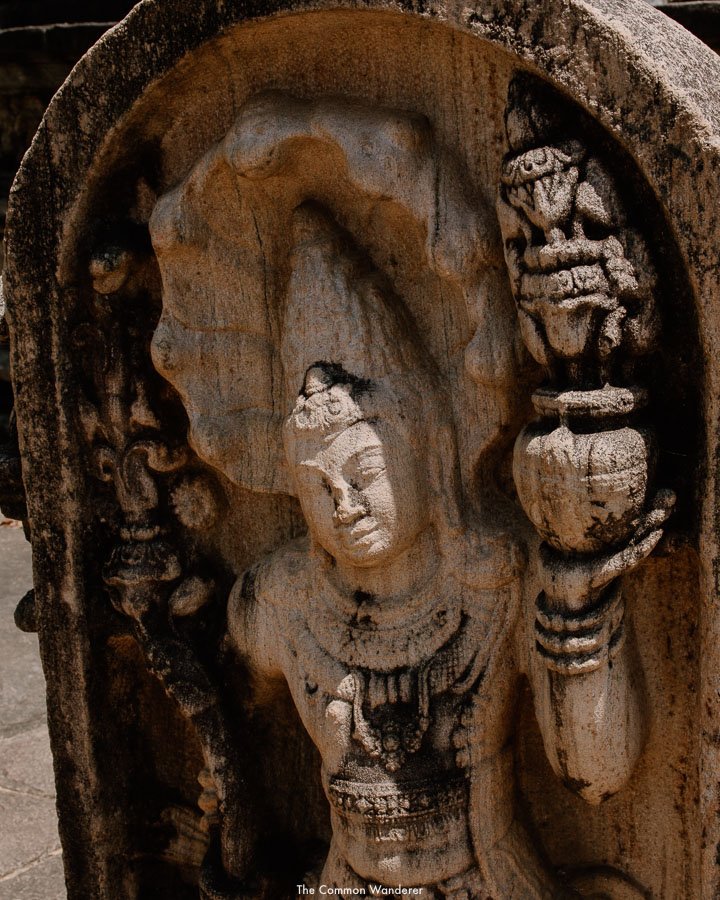
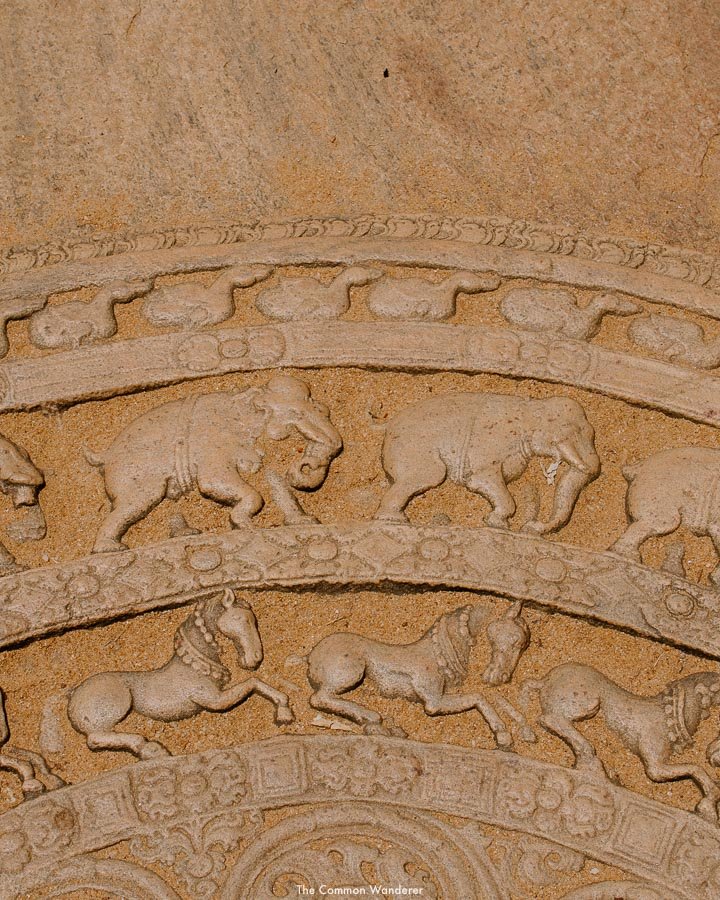
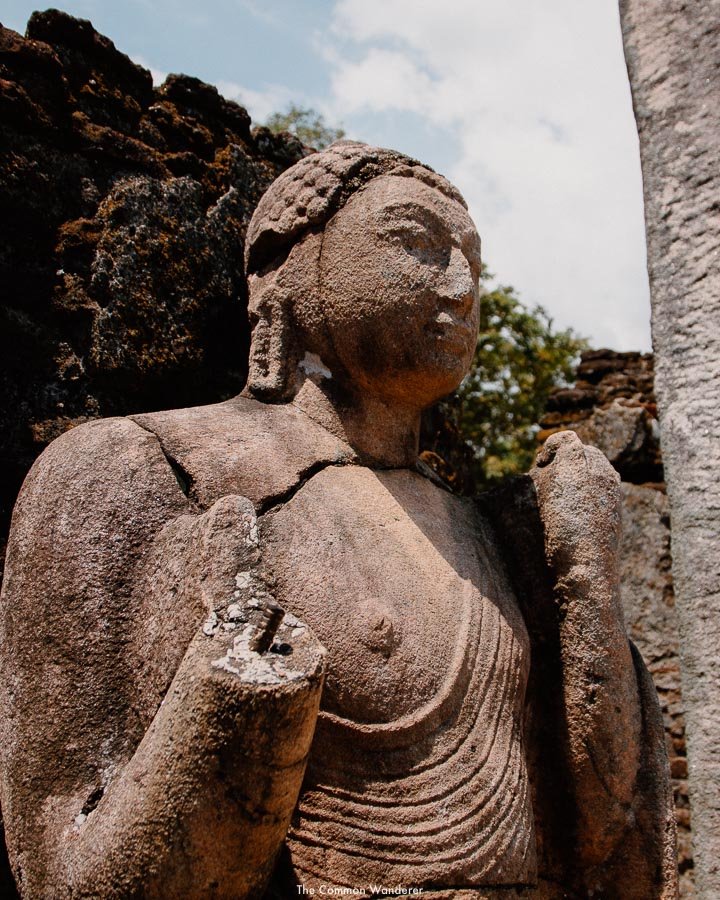


PABALU VEHERA STUPA
Pabalu Vehera Stupa is easy to spot due to its unusual architecture and artistic structure. Queen Rupawathi, one of King Parakramabahu’s wives, is credited with constructing this historic monastery.
It has a peculiar shape, and it has been ravaged by invaders and treasure hunters over the centuries.
The Pabalu Vehera Stupa is made of brownish bricks that stand in striking contrast to the lush greenery of the jungle in which it is set.
RANKOT VIHARA
No visit to Polonnaruwa would be completed without adding a stop at the Rankot Vihara, which is the largest dagoba in Polonnaruwa and the fourth largest dagoba in Sri Lanka.
Built during the reign of King Nissanka Malla, this dagoba is undeniably one of the best places to visit in Polonnaruwa.
The monastery is made entirely out of brick and is extremely well-preserved. This huge structure is in excellent condition when compared to others in the area.

THE IMPRESSIVE LANKATILAKA TEMPLE
Probably our favourite temple in the entire complex, this magnificent structure, commissioned by King Parakramabahu, is a lasting reminder of the once-great Polonnaruwa. Its splendour in the 12th century made it one of the most important Buddhist temples in Asia.
Bricks were used to construct its walls, which reached an impressive height of 17 meters and had a thickness of a whopping four meters. Inside, there’s an imposing standing Buddha that was once 13 meters tall (including its base), however only the torso remains today.
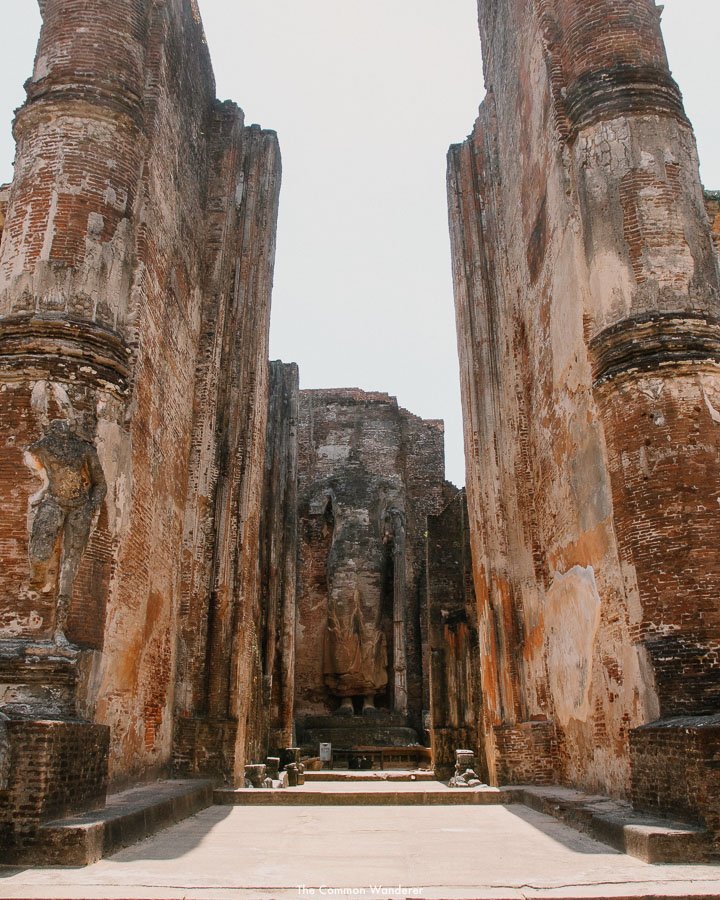
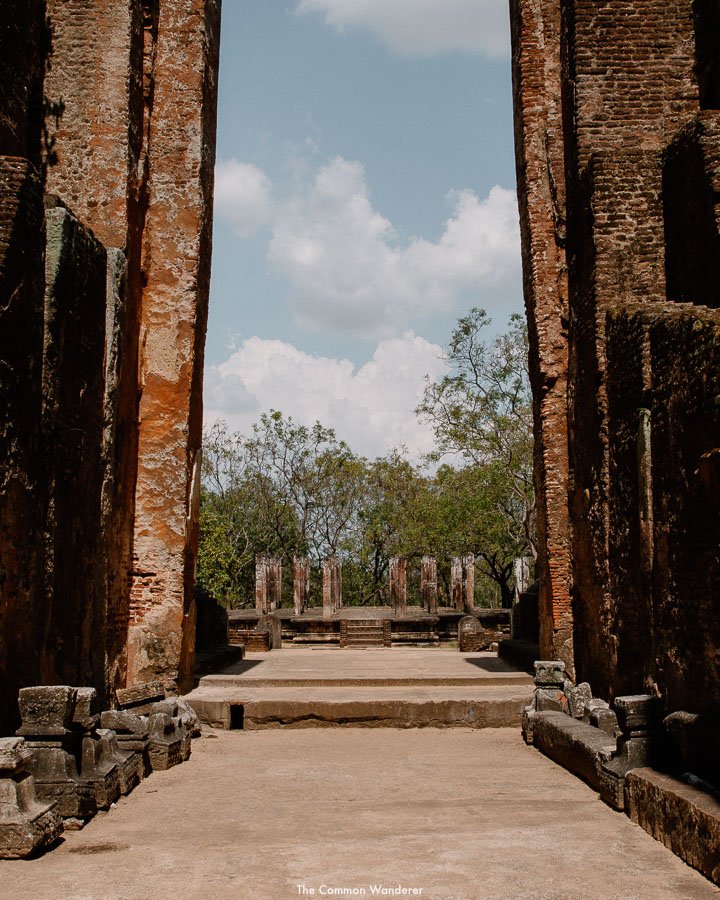
THE BUDDHA FIGURES OF GAL VIHARA
Prepared to be blown away when you finally stumble on the buddha figures of Gal Vihara, one of the most well-known rock-cut Buddha statues in Sri Lanka.
Also known as the Rock Monastery, this partially man-made cavern is made up of three enormous rock-cut images and one smaller statue, all of which are enchanting in their own right.
The Buddha statues at Gal Vihara, each of which has a unique appearance, are without a doubt the most flawless examples of Buddha statues hewn out of solid granite that can be found in Sri Lanka.
You won’t be disappointed when you come across these priceless artefacts, which are distinctive and very unlike the common carvings found in other areas of the island.

POTHGUL VIHARA COMPLEX
The final thing we suggest visiting in the sacred city of Polonnaruwa is Pothgul Vehera, a Buddhist library where sacred texts were housed and studied. The complex has a layout unlike any other monastery in the country, making it one of the illustrious places to visit in Polonnaruwa.
The site’s most notable structure is a shrine with a circular design that was constructed on a square terrace in the middle of the grounds.
THINGS TO KNOW BEFORE VISITING THE POLONNARUWA TEMPLES
Before visiting the Polonnaruwa ruins, there are a few essential things you need to know:
Take a tour | We highly recommend hiring a guide, or joining a pre-booked tour (we recommend this cycling tour or this tuk-tuk tour) of the sacred city. Its sheer size and scale is overwhelming and a guide is able to really help you understand the former grandeur of the complex. They’re not overly expensive, and well worth it
Don’t take photos with your back towards Buddha | A common and sacrilegious act amongst foreigners throughout Asia, taking a photo with your back towards Buddha is highly offensive. So just be super careful when taking photos, and remember to respect every religion as you would your own (even atheists!)
Take your shoes off before entering scared spaces | In an effort to respect the Buddhist culture, and preserve the important relics, take your shoes and hats off before entering the sacred spaces. We suggest wearing socks, so walking over the hot stone is manageable
Cover your shoulders and knees | Sri Lanka is a super conservative country, especially around their ancient Buddhist sites, so make sure you cover up – that means covering your shoulders and knees (for both men and women)

TRAVEL INSURANCE | STAY SAFE IN SRI LANKA
If you can’t afford travel insurance, you really can’t afford to travel. As the current global situation has taught many people, things can go wrong anywhere in the world – and insurance is often the only way of mitigating any issues with minimal expense or stress for you.
For all travellers | HeyMondo – COVID-19 coverage, comprehensive travel + medical insurance, an app with 24-hour medical support, and no out-of-pocket fees. *Get 5% off your policy by booking through our link here.
For digital nomads | SafetyWing – COVID-19 coverage, comprehensive travel & medical, and policies can be purchased while already abroad.
Car Insurance | Insurance4CarHire – a great annual car insurance policy
*In normal times, we recommend using World Nomads travel insurance, but unfortunately they’re not currently covering COVID-19 related claims right now.
READ THESE ESSENTIAL SRI LANKA POSTS
We’ve got a wealth of information on Sri Lanka, so if you’re planning on visiting, read the below guides and plan the ultimate adventure!
SRI LANKA TRAVEL TIPS | 31 incredible things to do in Sri Lanka, Our essential 3-week Sri Lanka Itinerary, Our 7-day Sri Lanka Itinerary, Everything you need to know before you visit Sri Lanka (39 essential tips!), Where to stay in Galle
SRI LANKA CITY GUIDES | We’ve got in-depth guides to Colombo, Galle, Kandy, Jaffna, Hiriketiya, Mirissa Beach
CULTURAL ATTRACTIONS | Our essential guides to both Sigiriya and Pidurangala, A guide to Polonnaruwa, How to visit Yala National Park, and Udawalawe National Park
TRANSPORT GUIDES | Our definitive guide to the Kandy to Ella train, how to get from Colombo to Kandy, how to get from Colombo to Galle
ELLA, SRI LANKA | Our complete guide to Ella, a guide to the Nine Arch Bridge, How to see Diyaluma Falls, Ella accommodation options for every budget (+ our recommendations)
PHOTOGRAPHY | Click here to view our detailed photography gear guide, as well as our top travel photography tips!
RESPONSIBLE TRAVEL | Responsible travel is important. REALLY IMPORTANT.
ECO-FRIENDLY PACKING ESSENTIALS | Don’t leave home without our favourite eco-friendly travel essentials


